









HONDA NSX-R! FULL TEST OF A JAPANESE SUPERCAR SENSATION






















HONDA NSX-R! FULL TEST OF A JAPANESE SUPERCAR SENSATION














Jaw-dropping motoring discoveries from smuggled Silver Arrows to priceless abandoned Ferraris



DRIVING THE FINEST SPORTS CAR OF ITS ERA
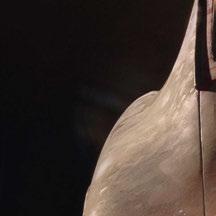
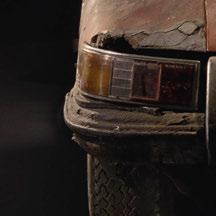
LOTUS 47 MAKING A RACER ROADABLE


ALPINE AT 70 PAHNHENRICH’S WILD TOPLESS GTA + THE NEW A290



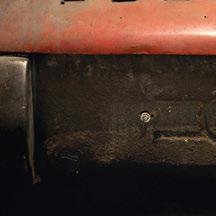



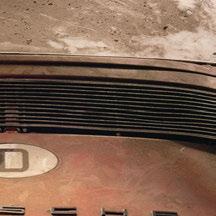
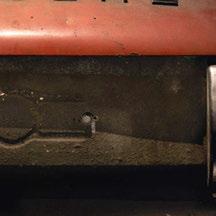






PLUS
JAGUAR XJ6 INVICTA CENTENARY INSIDE HOT WHEELS FRANK STEPHENSON BUYING AN MG RV8
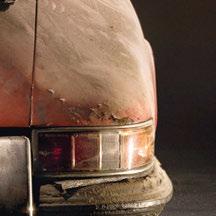






Discover the fusion of cutting-edge technology and exclusive design. Seamlessly blending into your luxury living space, the bespoke C SEED N1 TV is encased in the finest handcrafted finish, tailor-made and customizable to match any interior. When closed, it exudes the elegance of fine furniture, resembling a sleek and sophisticated sideboard.
Discover the fusion of cutting-edge technology and exclusive design. Seamlessly blending into your luxury living space, the bespoke C SEED N1 TV is encased in the finest handcrafted finish, tailor-made and customizable to match any interior. When closed, it exudes the elegance of fine furniture, resembling a sleek and sophisticated sideboard.
At the touch of a button, the TV gracefully rises to a majestic height of two meters, and five 4K high-brightness MicroLED panels unfold like the petals of a blooming flower. In just 45 seconds, they form a stunning display measuring 165, 137, or 103 inches.
At the touch of a button, the TV gracefully rises to a majestic height of two meters, and five 4K high-brightness MicroLED panels unfold like the petals of a blooming flower. In just 45 seconds, they form a stunning display measuring 165, 137, or 103 inches.
C SEED’s unique patented Adaptive Gap Calibration ensures that the borders between the panels vanish, giving you a perfect, uninterrupted visual experience.
The ultra-high-resolution display transforms any room into a cinematic paradise, offering breathtaking visuals in any lighting condition. The C SEED N1 redefines the synergy of technology and luxury living - it is a statement of sophisticated taste and a testament to the unforgettable moments you’ll share.
C SEED’s unique patented Adaptive Gap Calibration ensures that the borders between the panels vanish, giving you a perfect, uninterrupted visual experience.
The ultra-high-resolution display transforms any room into a cinematic paradise, offering breathtaking visuals in any lighting condition. The C SEED N1 redefines the synergy of technology and luxury living - it is a statement of sophisticated taste and a testament to the unforgettable moments you’ll share.
The C SEED N1 TV is available in three sizes: 165, 137, and 103 inches, as well as in various colors and bespoke finish options.
The C SEED N1 TV is available in three sizes: 165, 137, and 103 inches, as well as in various colors and bespoke finish options.
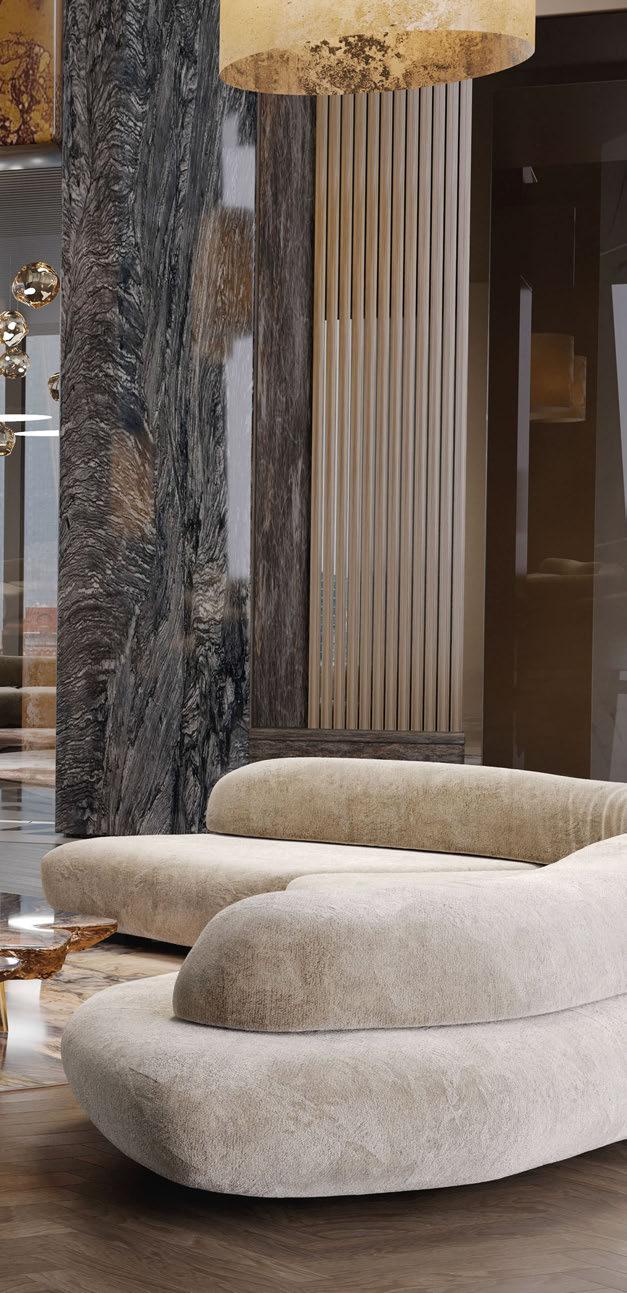










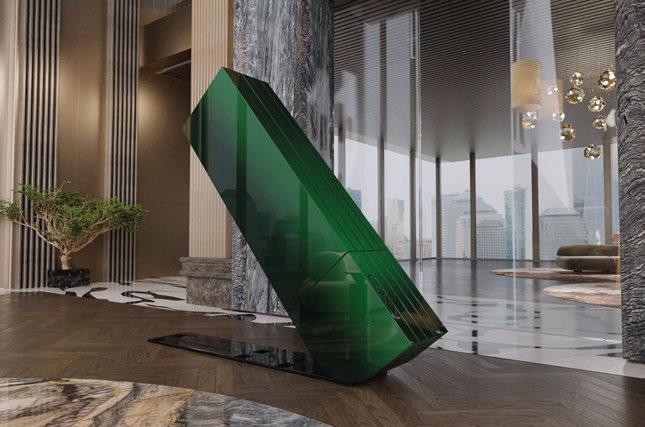
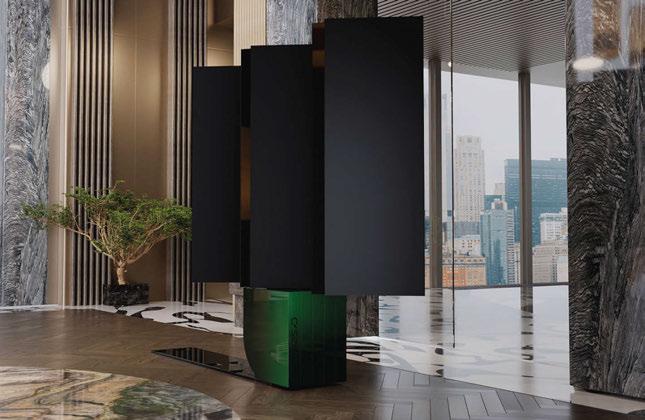


www.cseed.comwww.cseed.com www.cseed.com www.cseed.com www.cseed.comwww.cseed.com www.cseed.com

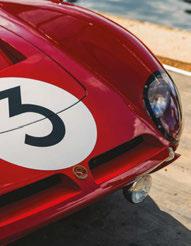
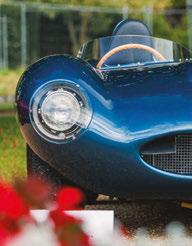
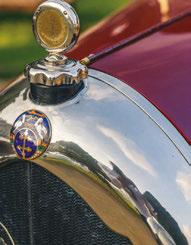
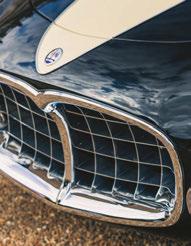
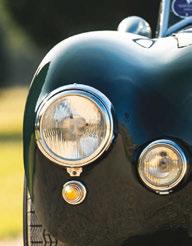
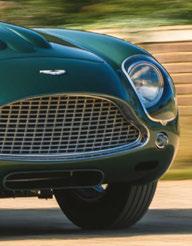
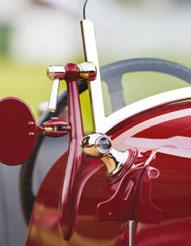
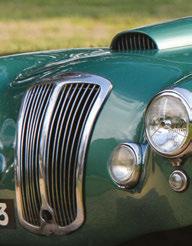
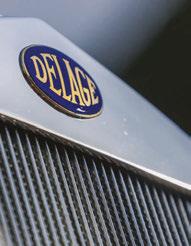

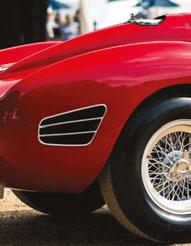

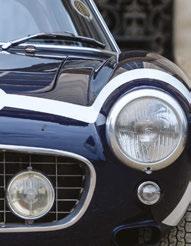
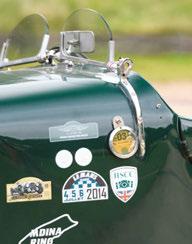
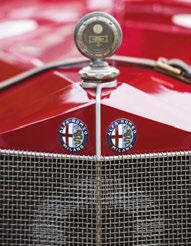
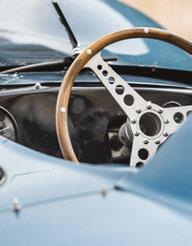
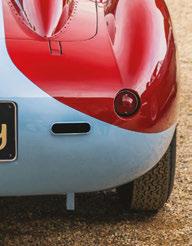

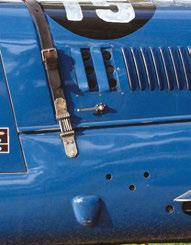
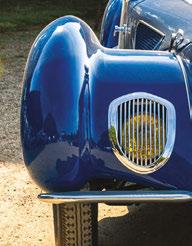

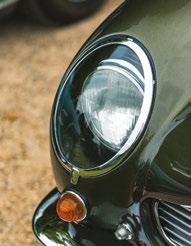
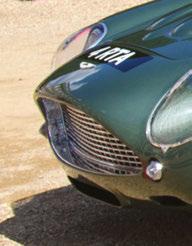
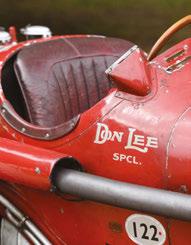
HAMPTON COURT PALACE | 5–7 SEPTEMBER 2025
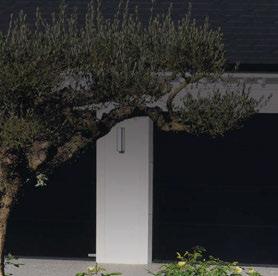
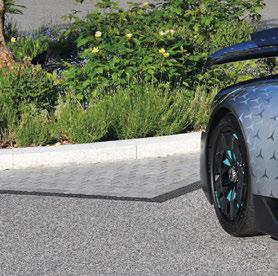







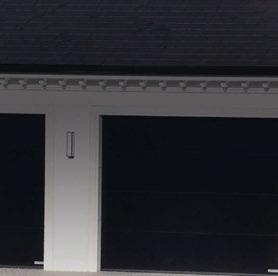
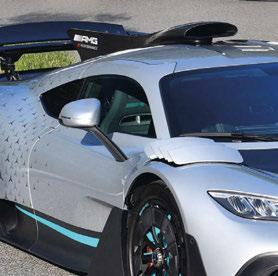
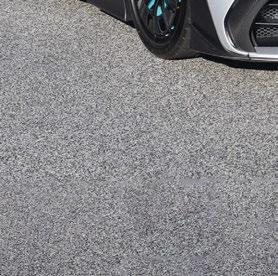

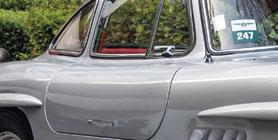
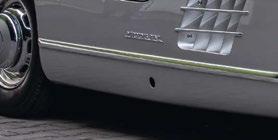



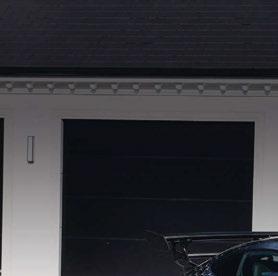
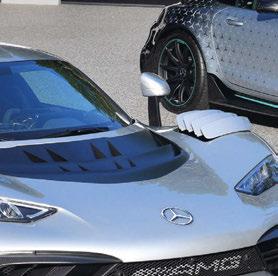
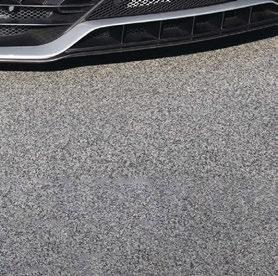

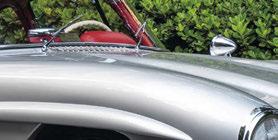
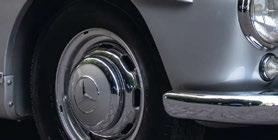



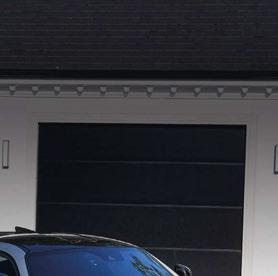
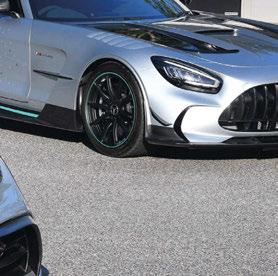


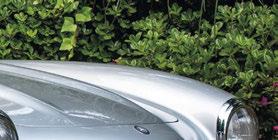
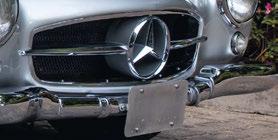



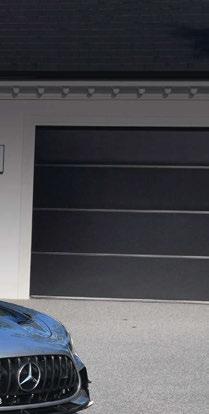







PAGE
‘TO GET THE BRIGHTNESS WE WANTED, WE USED A SPECIAL SILVER PLATING BEFORE PAINTING’ HOW HOT WHEELS CRAFTED ITS HALO FERRARIS
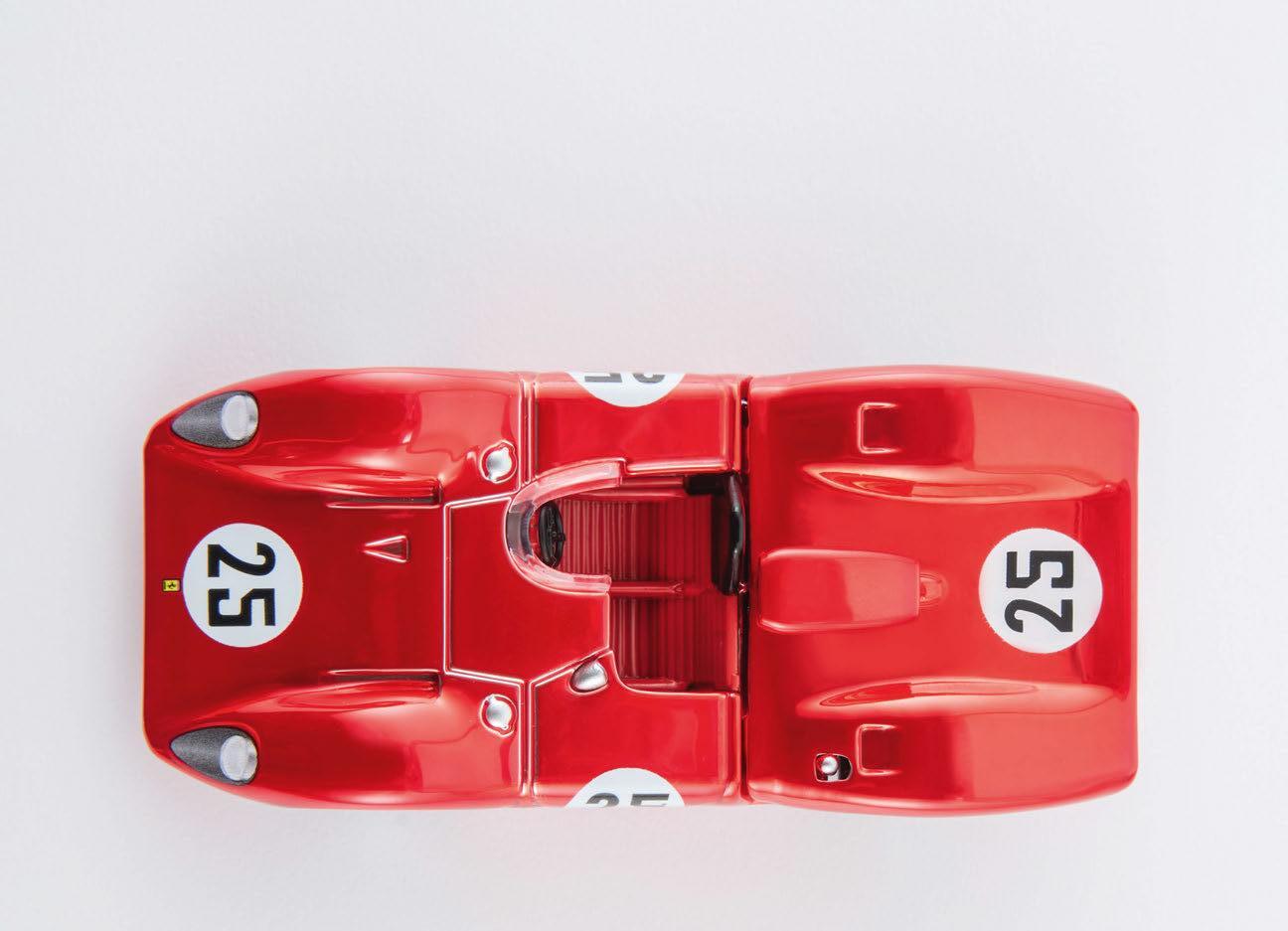
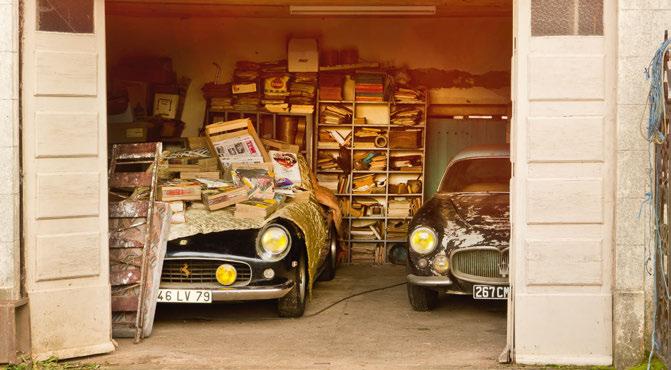

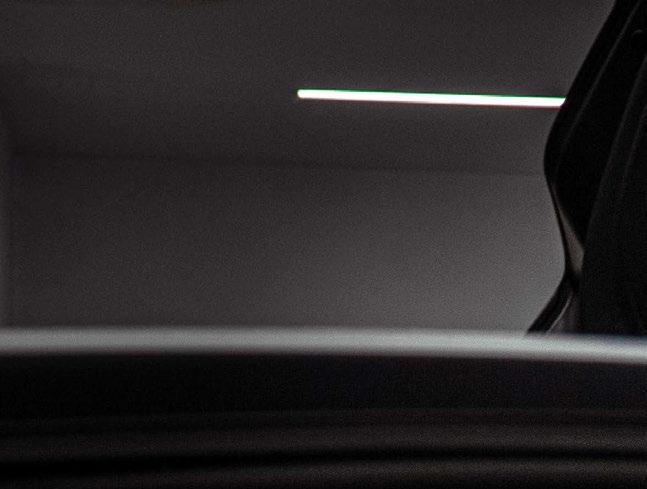
BESPOKE FINANCE FOR LUXURY, CLASSIC AND SUPERCARS.
Finance from £25k to £2m designed for collectors, enthusiasts and drivers.
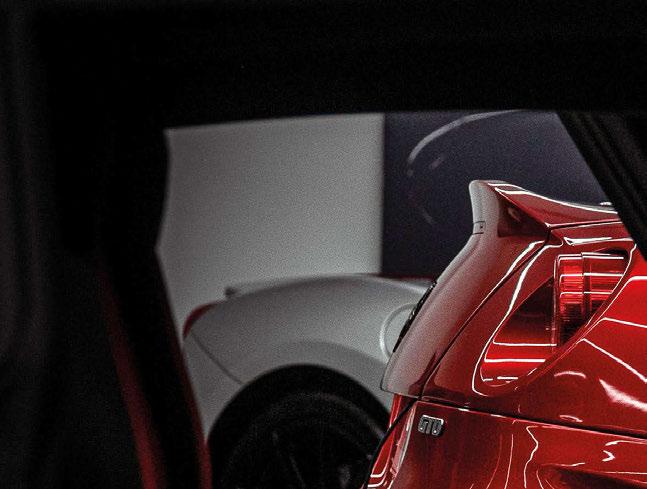




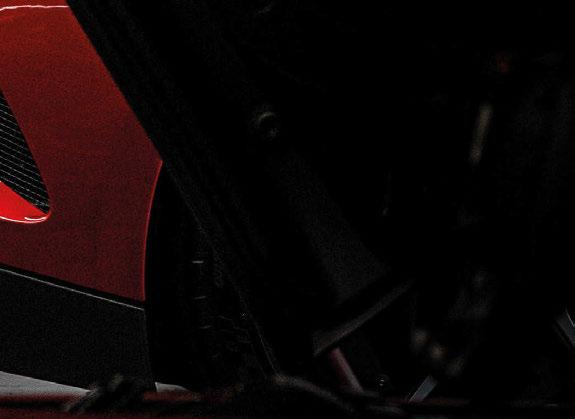

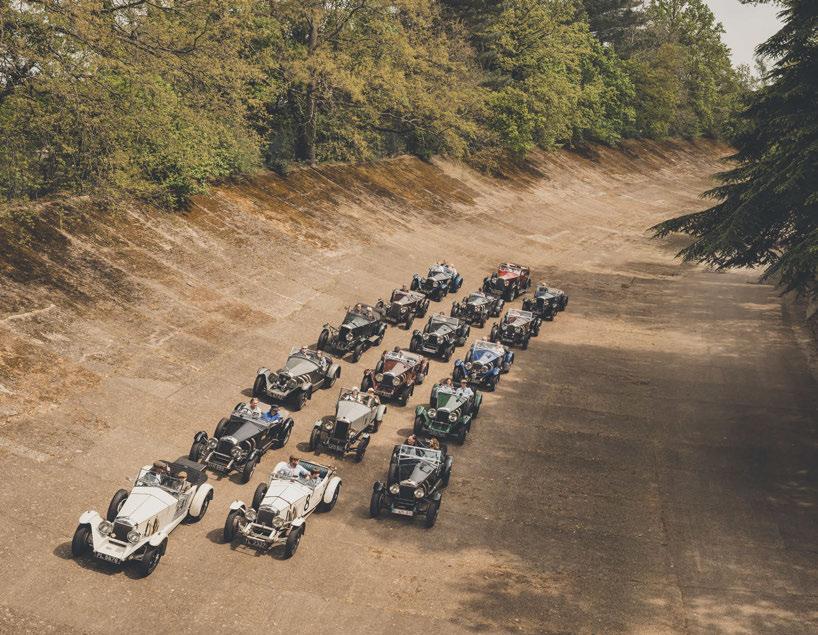
BEST EVER BARN-FINDS 58
A decade on from the discovery of the Baillon Collection, we investigate the best barn-finds ever, from Silver Arrows to GTOs
LOTUS 47 72
Restoring a wild Group 4 racer… and making it suitable for the streets of the Philippines
INVICTA AT 100 82
The gathering of both cars and clan
PAHNHENRICH ALPINE 88
Crivens! A convertible GTA PLUS to Dieppe for Alpine’s 70th birthday bash in a new A290
BMW 328 100
A speedy era-defining sports car, this one with a fascinating coachbuilt past
INSIDE HOT WHEELS 110
Behind the scenes at Mattel as it launches its high-end Ferrari specials
HONDA NSX-R 114
The supercar with added super from when the Japanese marque was at its F1 peak
THE OCTANE INTERVIEW 122
Frank Stephenson, design polymath
JAGUAR XJ6 128
Nudging 60 and still a magic-carpet ride
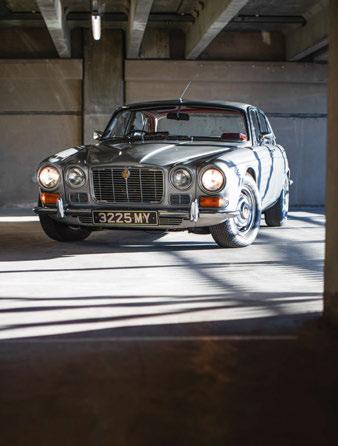
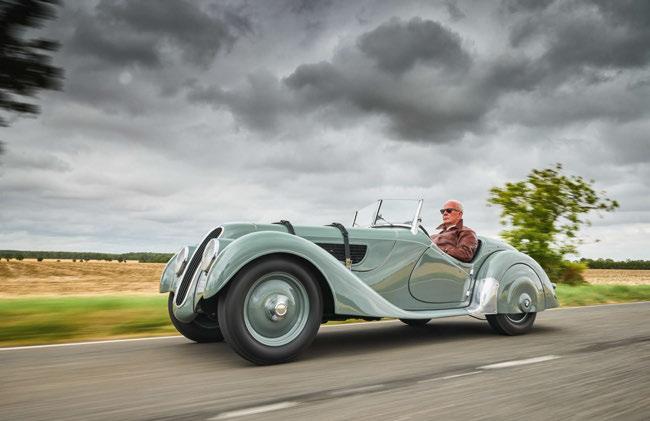
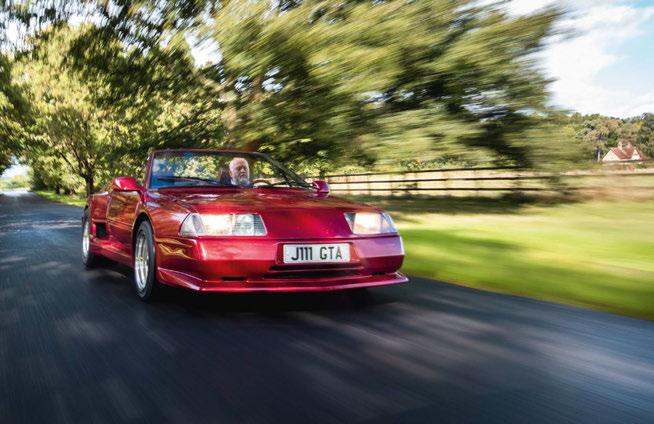
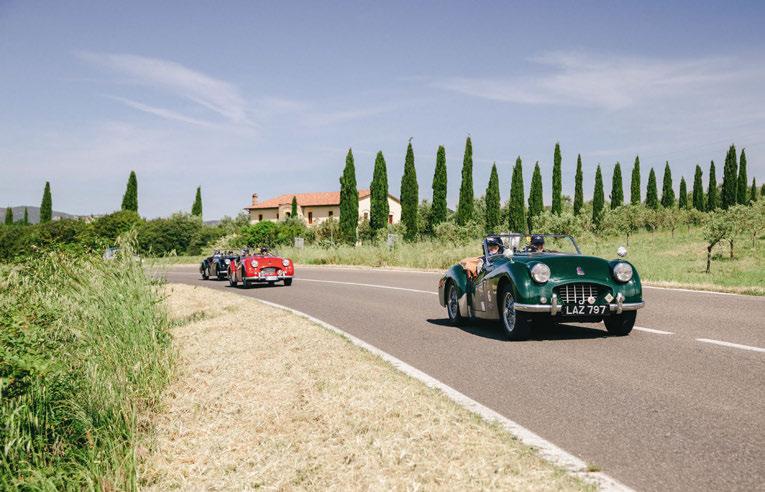
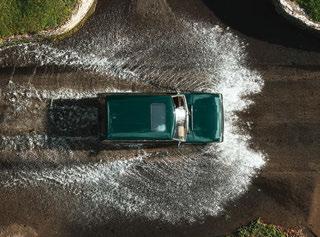
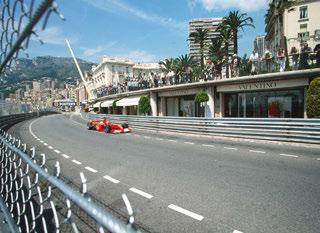
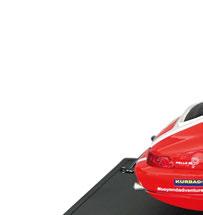

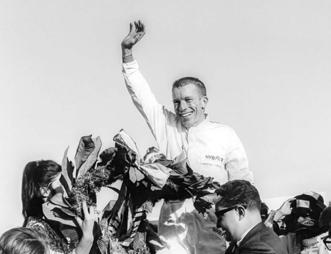

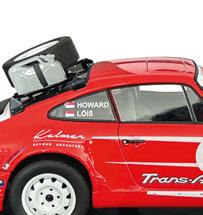


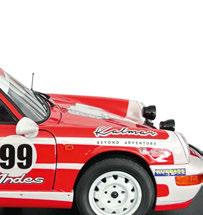

EVENTS & NEWS 20
A glut of concours from Italy, Malta and the UK; top dates for your diary; a feast of F1 ancient and modern is coming your way COLUMNS 45
Leno, Bell, Bayley and Coucher: Octane’s fab four put the motoring world to rights LETTERS 53
More memories of the Alan Mann Escort
OCTANE CARS 138
Fleet frustrations from Octane in Germany
OVERDRIVE 144
Holden Monaro, Porsche 997, Kingsley Rangie GONE BUT NOT FORGOTTEN 148
Richie Ginther: a California kid’s rocky road GEARBOX 150
Danish Porsche re-imaginer Jan Kalmar ICON 152
The New Yorker : the second-best magazine CHRONO 154
When the sleepy Cotswolds dominated dials BOOKS 156
Karl Ludvigsen’s paean to blowing hot air GEAR 158
Less a ma er of want than need
THE MARKET 162
Insider tips, auction news, stats, cars for sale, MG RV8 buying guide
AUTOBIOGRAPHY 194
Touring Car ace Gordon Shedden


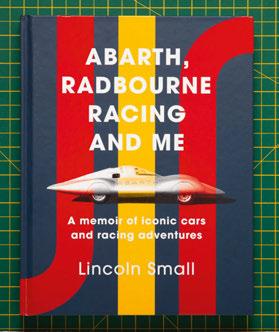

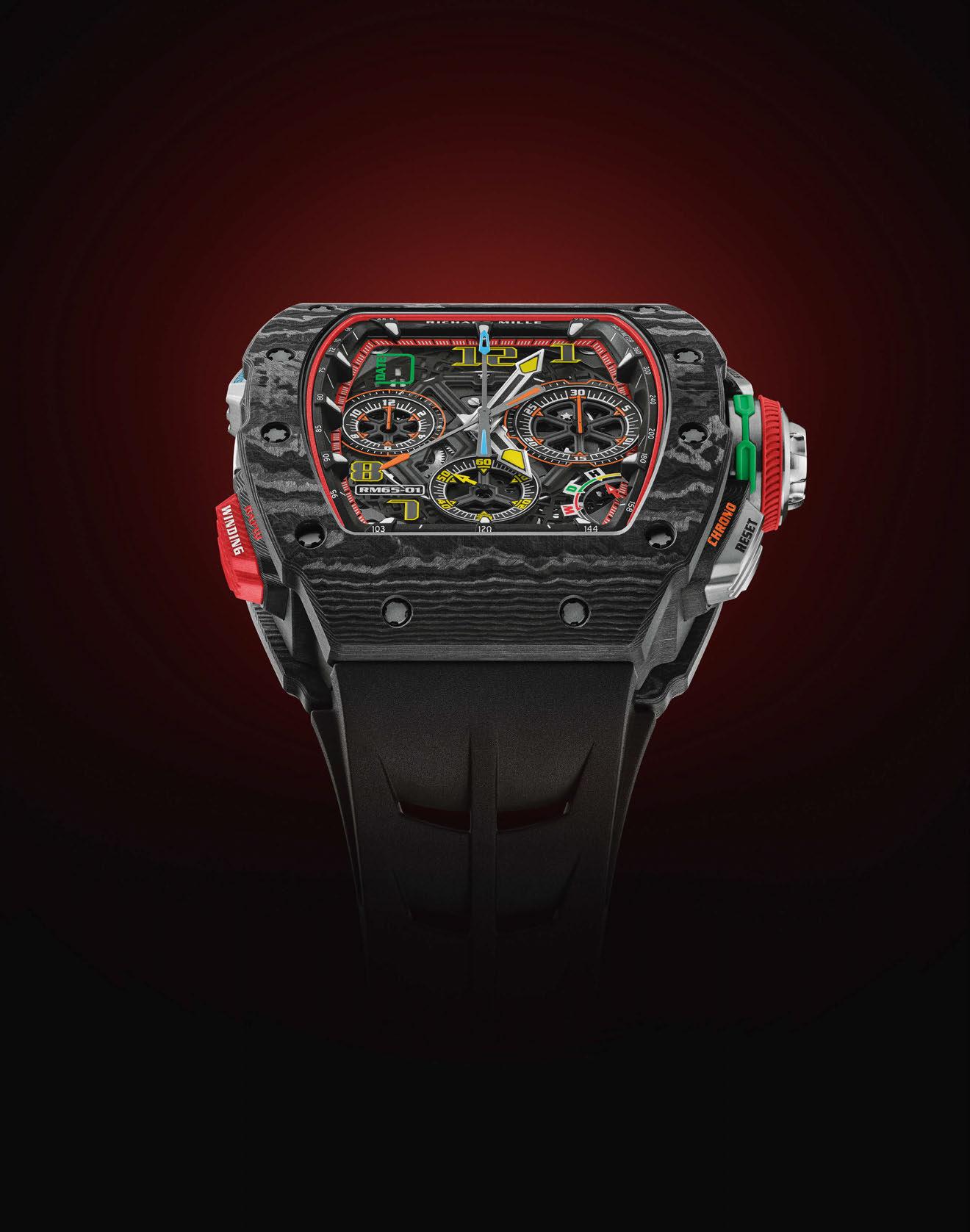
RM 65-01
Skeletonised automatic winding calibre
60-hour power reserve (± 10%)
Baseplate and bridges in grade 5 titanium
Split-seconds chronograph
Function selector and rapid winding mechanism
Variable-geometry rotor
Case in Carbon TPT®
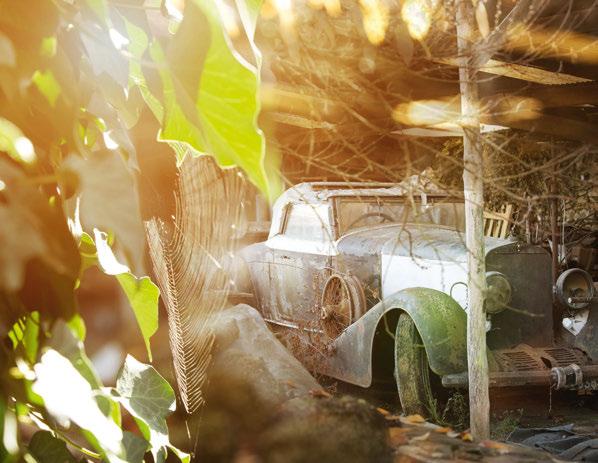

IF EVER A TERM has become ubiquitous in the classic car world, it is ‘barn- nd’. Where once it meant a long-forgo en car found in an actual barn, or at the very least smuggled out of Cuba in crates under the nose of the Castro regime, or rescued from dereliction in the Eastern Bloc in a tale of great derring-do and George Smiley-esque negotiations, now it is rather more ‘pushed into a lock-up when it broke and now a bit dusty’. In the past I’ve even relished questioning whether ‘barn- nd’ is an appropriate name for a car or collection that may be breaking cover publicly, but of which the entire classic car industry has known the details and location for decades. is stance all seems a bit po-faced now, even to me, which is why I feel slightly less hypocritical that, for John Mayhead’s epic 13-page feature cataloguing the most exciting or signi cant car discoveries ever, we have taken the broadest possible meaning of the term ‘barn- nd’. A er all, how could we deny you the story of a Ferrari 250 GTO laid-up on a trailer for years, just because it was, perhaps even more amazingly than being stashed in a barn, in plain sight in a eld in Ohio? Collections such as Baillon and Klein, car-hunters such as Crabbe, Co er and Karassik – all the big ’uns are here, but if you know of any that we’ve missed, or may even never have heard of, we would love to hear from you.
ere are a couple of big anniversaries marked in this issue, too. First of all, Alpine is 70, so we not only piloted the brand-new A290 hot hatch around Dieppe for the party, but also tracked down the rarest of all, the stunning Pahnhenrich GTA convertible of which only ten (or possibly 12) were completed. Rather more stately was the no-less-signi cant centenary celebration for Noel Macklin’s Invicta marque, which prompted superb gatherings of the cars at Wilton House and Brooklands as well as tempting out several members of the founding clan. We asked the event’s mastermind to share its story.
FEATURING…

JOHN MAYHEAD
‘Whether I’m researching a book, writing a feature or pulling an old car from a barn, for me, the story is everything. Discovery of a hidden gem provides a direct link back to the lives of previous owners. That excitement of finding something nobody else has noticed is intoxicating.’
Barn- nds spectacular: pages 58-70

MATT HOWELL
‘I don’t know what I love more about the 328 roadster, the gorgeous aesthetic or its exquisite engineering. Fortunately for all of us, BMW saw them both as being equally important’
Ma ’s superb photography accompanies Glen Waddington’s feature on a BMW 328 with a hidden past. Turn to pages 100-108

STEPHEN DOBIE
‘We all grew up with toy cars in our hands. I bet some of us still buy the odd one now – especially with all the tempting retro throwbacks Hot Wheels currently makes. I loved meeting the folk whose job it is to select and design those cars.’
Stephen sees what made Hot Wheels’ new Ferrari boxed set sell out instantly: pages 110-112
8-12 OCTOBER 2025
Beach Albertplein, 8300 Knokke-Heist, Belgium
ZOUTE GRAND PRIX GALLERY by EY | 8-12 October 2025
ZOUTE ICONIC RALLY by Integra | 8 October 2025
ZOUTE RALLY by ASL Group | 9-11 October 2025
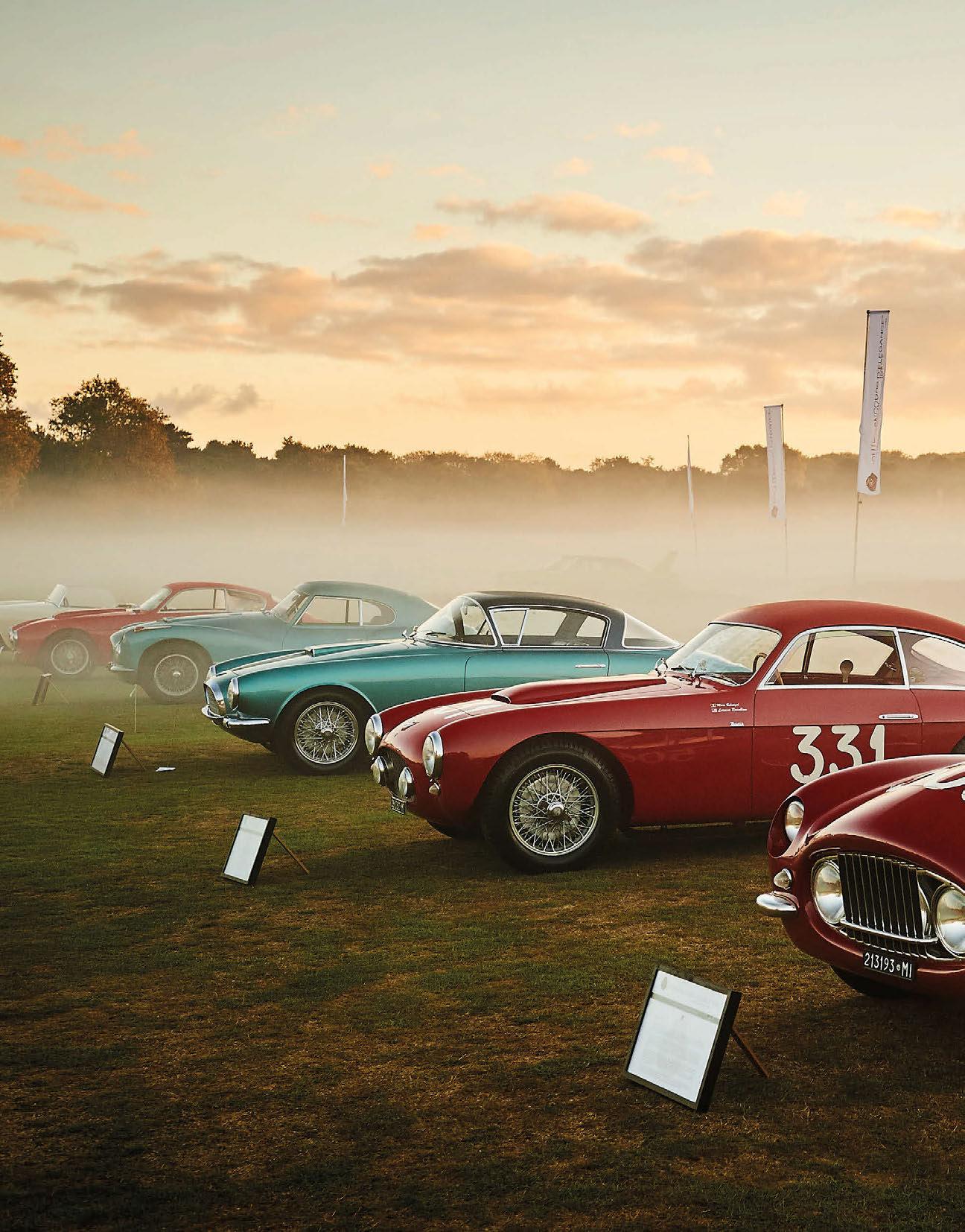
MORE INFO & TICKETS
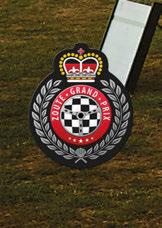
WWW.ZOUTEGRANDPRIX.BE
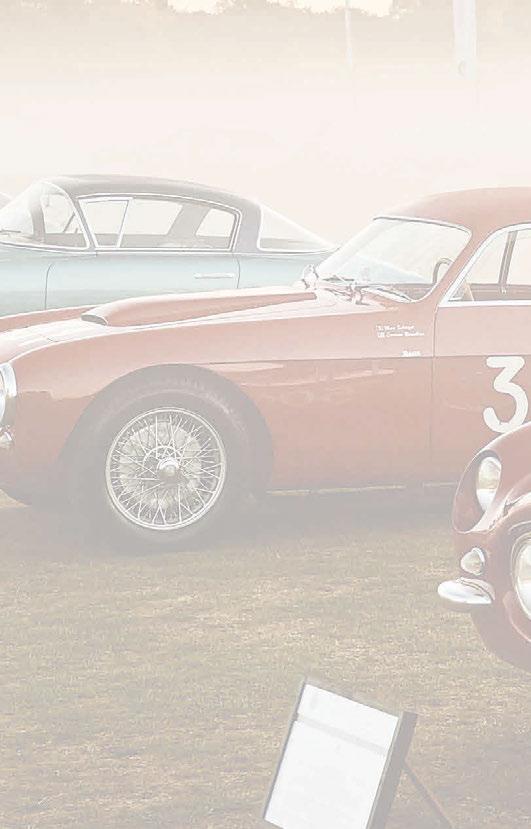
ZOUTE GT TOUR by Insentials | 11-12 October 2025
ZOUTE SALE by Bonhams Cars | 12 October 2025
Approach Golf, 8300 Knokke-Heist, Belgium
ZOUTE CONCOURS AUCTION by Broad Arrow | 10 October 2025

ZOUTE CONCOURS D’ELEGANCE by ING Private Banking| 11-12 October 2025
ISSUE 267, ON SALE 23 JULY

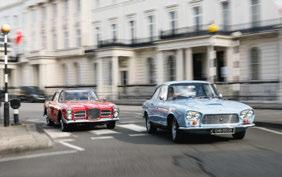
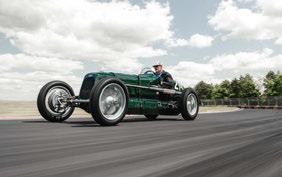
Full interview, a tour of his personal car collection, all the cars he’s designed, plus a very special road-test
Facel Vega vs Gordon-Keeble
Which does ultra-luxe with US V8 power best?
Frazer Nash SS
On track in a super-competitive single-seater
Cars of the Vatican
The rare limos that pre-dated the Popemobile
Learning to race historics
The world’s only race school exclusively for historics
(Contents may be subject to change)
Editor-in-chief James Elliott james@octane-magazine.com
Associate editor Glen Waddington glen@octane-magazine.com
Art editor Robert Hefferon roberth@octane-magazine.com
Markets editor Matthew Hayward matthew@octane-magazine.com
Founding editor Robert Coucher
Contributing
Inquiries to info@octane-magazine.com
Group advertising director Sanjay Seetanah sanjay@octane-magazine.com
Account director Samantha Snow sam@octane-magazine.com
Dealer account manager Marcus Ross marcus@octane-magazine.com
Lifestyle advertising Sophie Kochan sophie@octane-magazine.com
Advertising inquiries
Tel: +44 (0)1628 510080 Email: ads@octane-magazine.com
SUBSCRIPTIONS, BACK ISSUES, HELPLINES
Subscribe online at octane-magazine.com/subscribe
Tel: +44 (0)20 3966 6695
Email: customerservice@octane-magazine.com
Back issues can be purchased at octane-magazine.com

1952 JAGUAR C-TYPE
Exceptionally Authentic Example of Jaguar’s Groundbreaking Sports Racer Chassis XKC 028


2017 PORSCHE 911 RSR
Highly Successful, Mid-Engined Works RSR
Presented in Its Special Coca-Cola Livery for the 2019 Motul Petit Le Mans

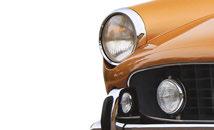
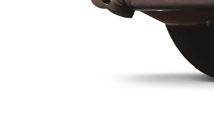

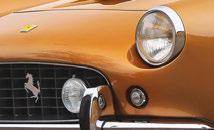

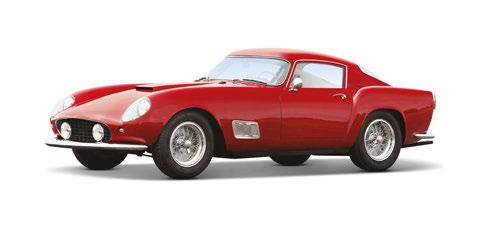
1958 FERRARI 250 GT TOUR DE FRANCE BERLINETTA I Formerly Owned by
Certified Coachwork
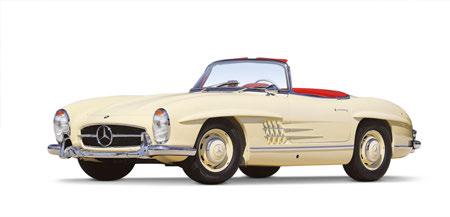
1957 MERCEDES-BENZ 300 SL ROADSTER The Second 300 SL Roadster Built Displayed at the 1958 New York International Auto Show
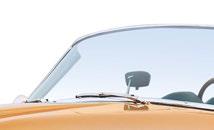
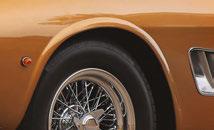
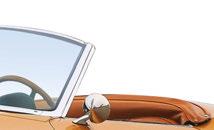
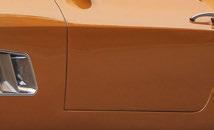

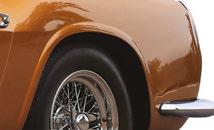
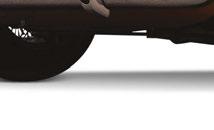
1961 FERRARI 250 GT SWB CALIFORNIA SPIDER
Presented in Its Unique Original Nocciola
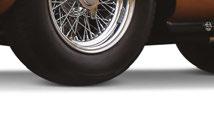
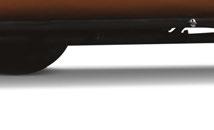
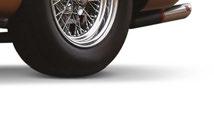

FRIDAY AUGUST 15
SATURDAY AUGUST 16
LIVE AUCTIONS
To take advantage of our special offer and get three issues of Octane for £5,either visit octane-magazine.com/subscribe or call +44 (0)20 3966 6695
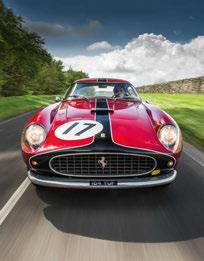
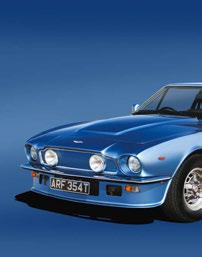













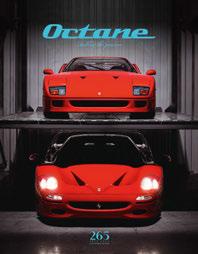


AND MANAGEMENT
Managing director Geo Love Editorial director David Lillywhite
Marketing and events manager Rochelle Harman
Marketing and events executive Jasmine Love
Accounts administrator Jonathan Ellis accounts@hothousemedia.co.uk
Magazine operations coordinator Elaine Briggs
Hothouse Media Unit 16, Enterprise Centre, Michael Way, Warth Park Way, Raunds, Northants NN9 6GR, UK www.hothousemedia.co.uk
Syndication and licensing Geo Love geo @hothousemedia.co.uk
Germany Ulrich Sa erling Japan Shiro Horie Netherlands Ton Roks France Yan-Alexandre Damasiewicz Hong Kong, China Chi Chai Chan
Octane is available for international licensing and syndication



Octane is available at the usual branches of UK shops, such as Tesco, Sainsbury’s, Waitrose and independents, as well as WH Smith High Street and Travel. You can order the latest magazine or a back issue, delivered direct to your door, by visiting octane-magazine.com
Download the Octane Magazine app on Android or Apple and you will be able to enjoy the new issue. Alternatively you can source the digital edition via either Zinio or Readly.
Subscribe
You can find superb offers on print and digital at octane.co.uk/subscribe . Order before 11 July to start with issue 267.
Problems with your subscription? Please email customerservice@octane-magazine.com













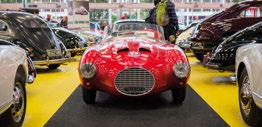































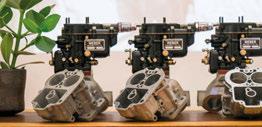
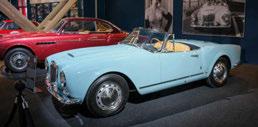





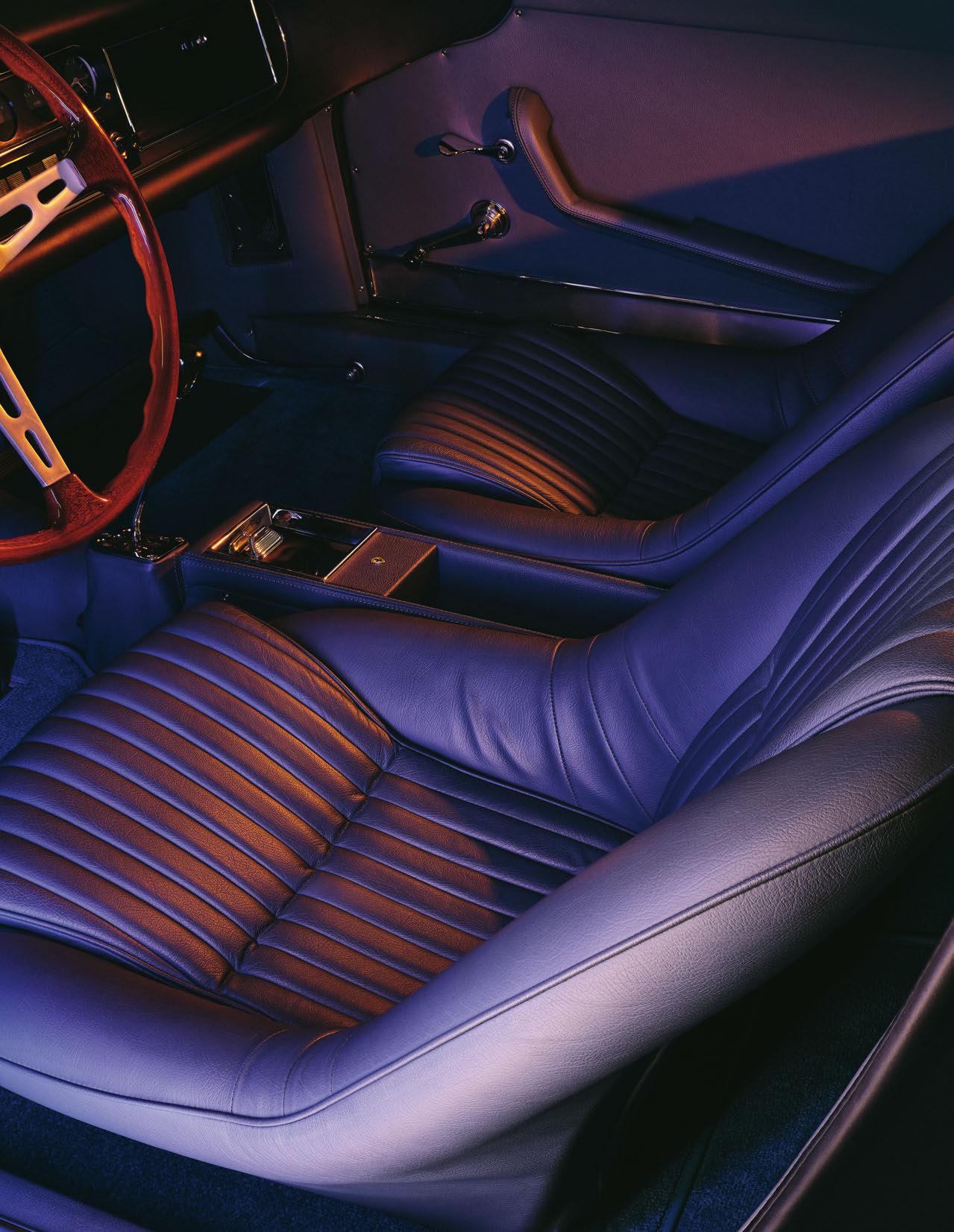
A true restoration is not just about perfection — it’s about soul. Every car has a story, and at B.I. Collection, we restore it with absolute authenticity. From the first detailed evaluation to the final finishing touches, every step is documented, every decision made with full transparency. Clients are involved throughout, knowing their vehicle is in the hands of experts who care. The result: impeccable craftsmanship, preserved history, and a car that is as alive as the day it first roared to life.
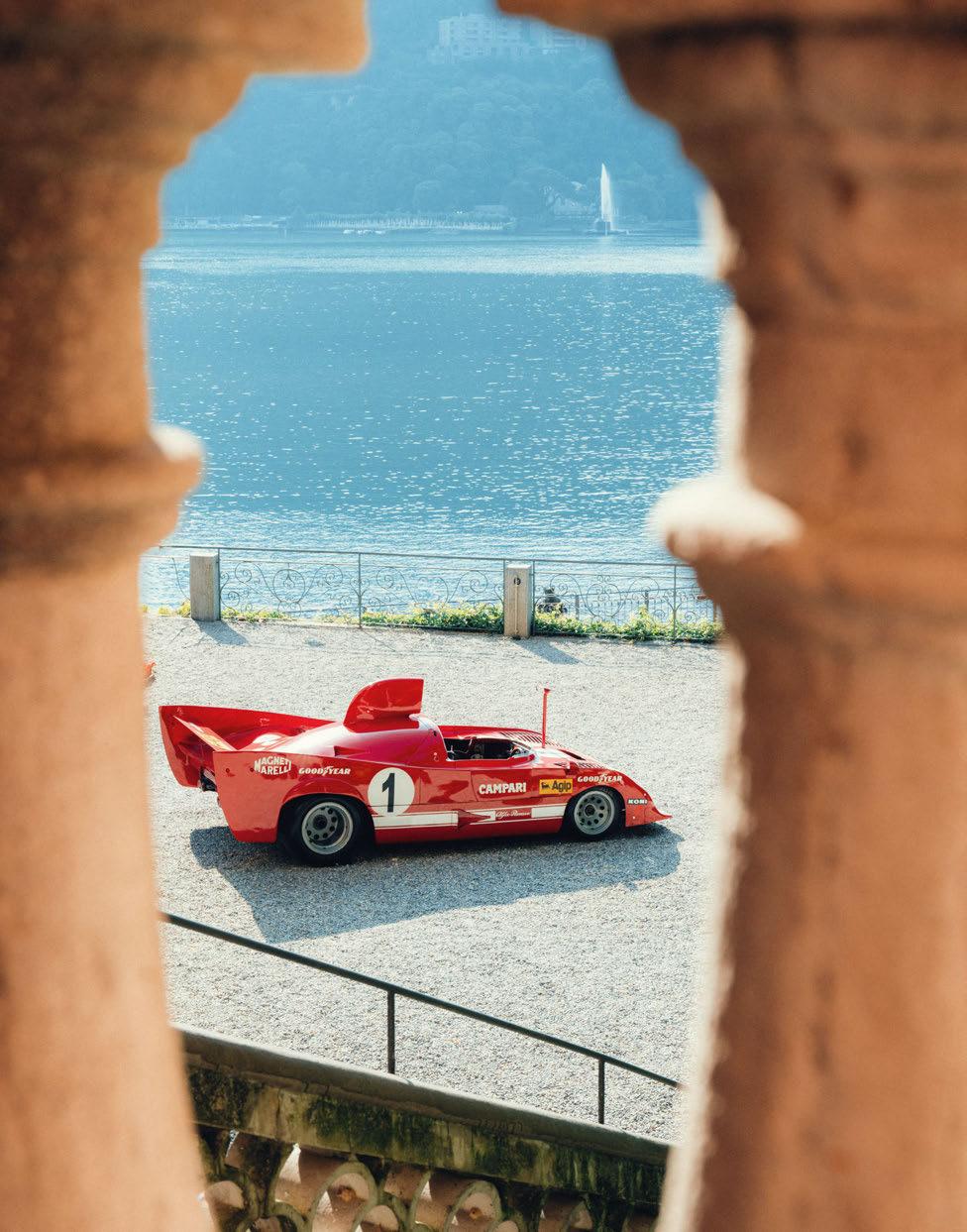

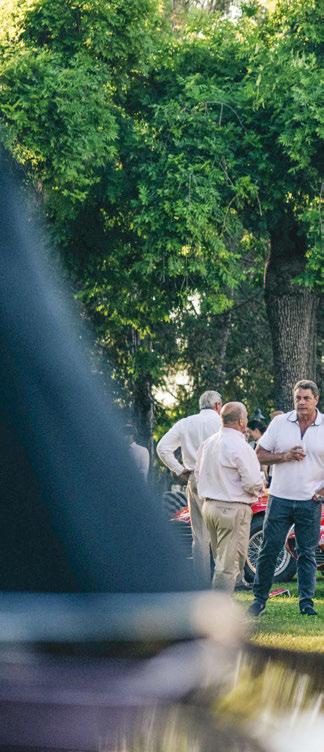

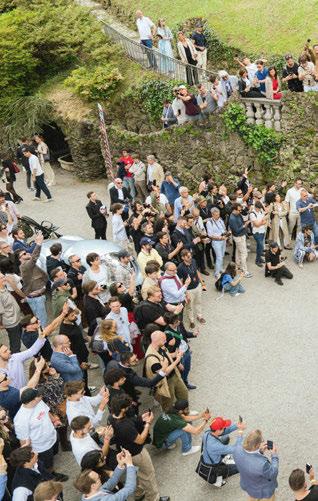
A week of world-class concours in northern Italy kicked off with the Cavallino Classic Modena at Casa Maria Luigia (16-18 May, below). The winners were a 1954 Ferrari 250 Monza, a 1960 Ferrari 250 GT Pinin Farina Cabriolet and a 1966 275 GTB4. The glamour moved the following weekend to Lake Como with the Concorso d’Eleganza Villa d’Este and, just down the road, the younger FuoriConcorso. Dirk de Groen’s BMW 507 (bottom right) won the Coppo d’Oro people’s choice at the former, with a Scuderia Ferrari Alfa Romeo Tipo B P3 taking the judges’ prize, but FuoriConcorso (bottom left and opposite) put on a very impressive show, too. See octane-magazine.com for more on all three events.
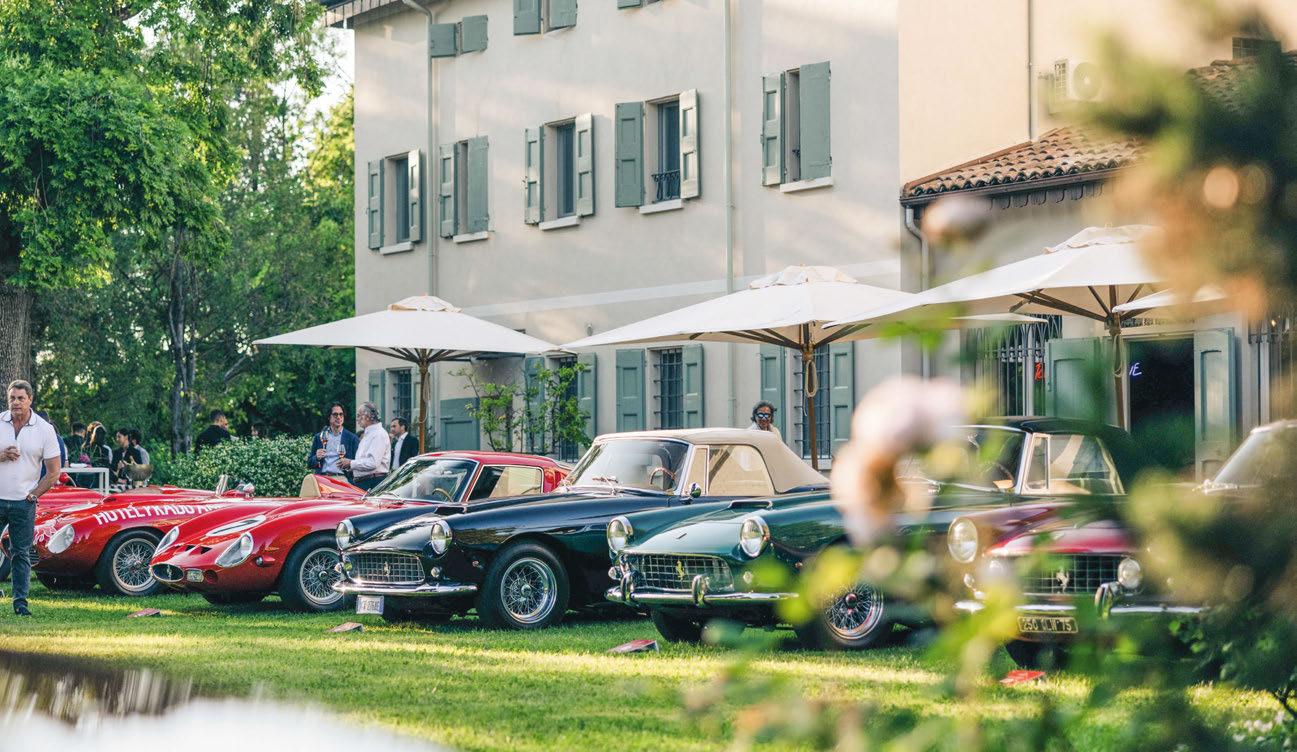
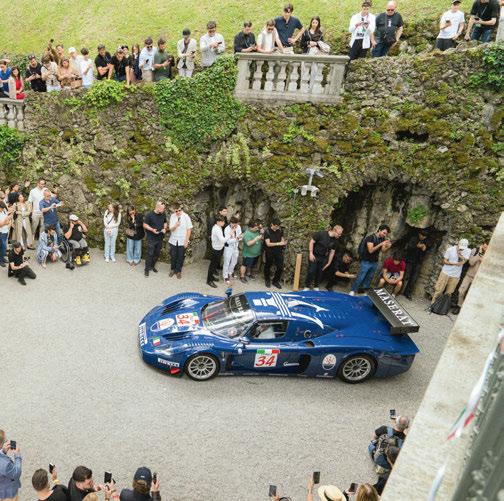


The Valletta Concours 1 June
Yohan Poonawalla took Best in Show for the second year running in Malta, this time with a 1949 RollsRoyce Silver Wraith. The Maltija Trophy for the finest locally owned car went to Mark Borg’s 1968 Alfa Romeo Spider. Joel Saliba
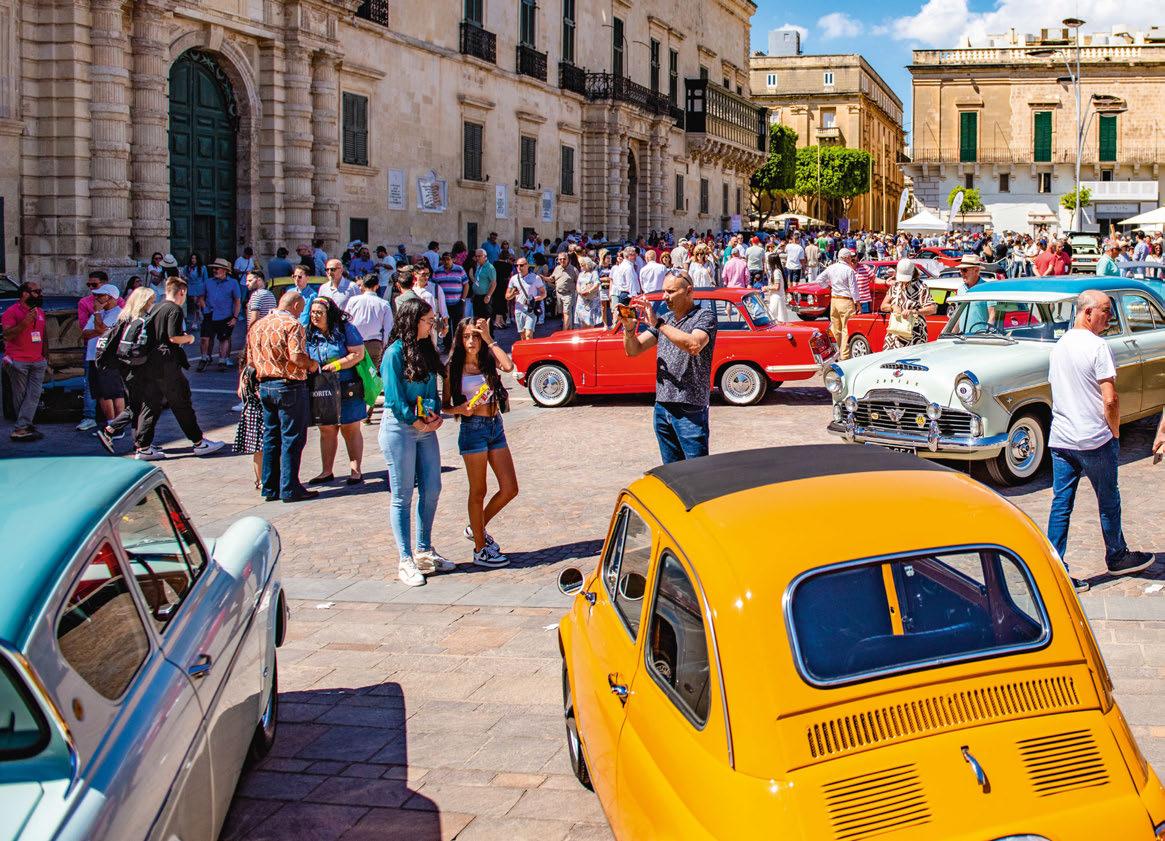
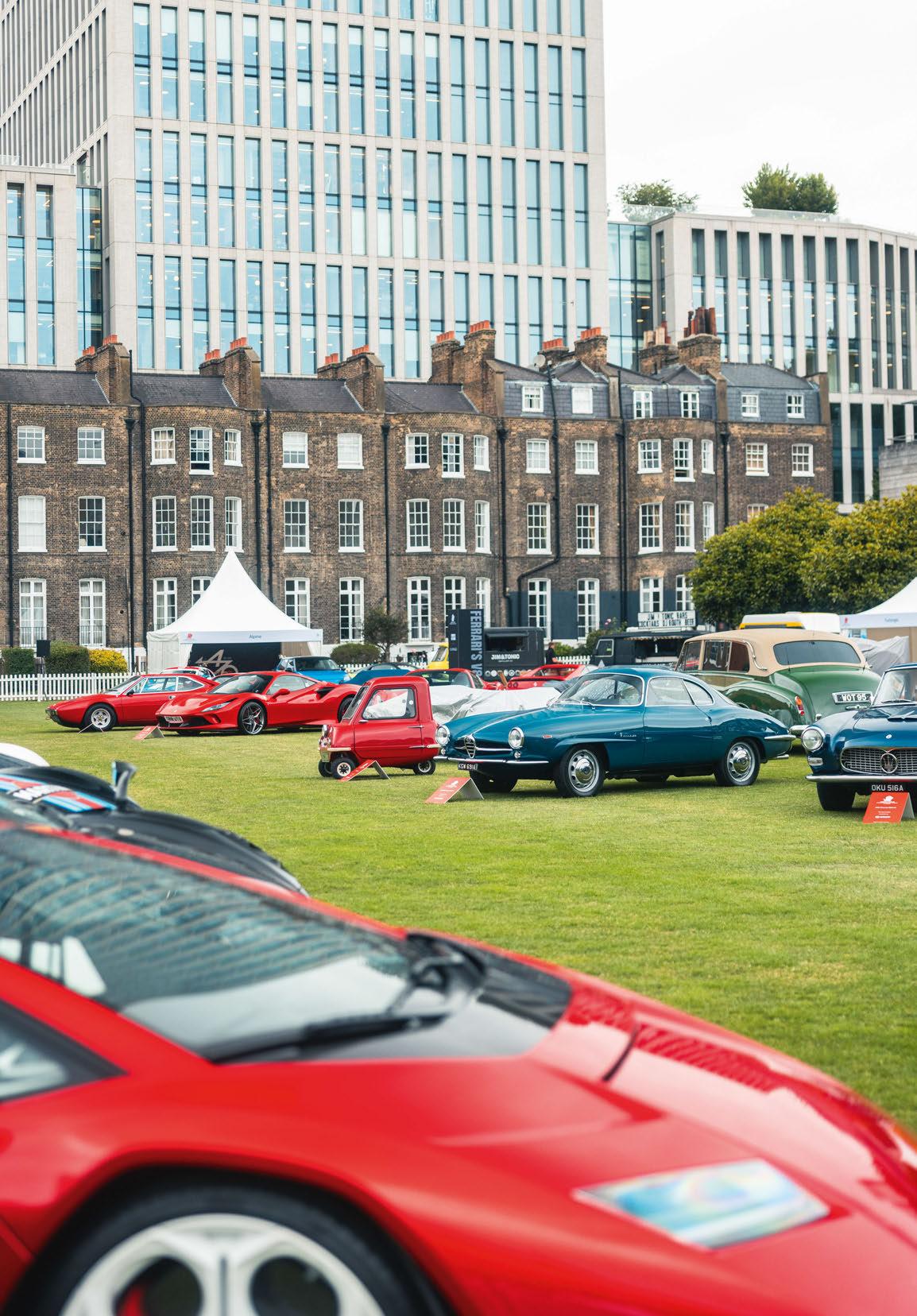
London Concours 3-5 June
Best in Show at the ninth edition of the event at the Honourable Artillery Company was a one-of-33 Bugatti EB110 SuperSports, which also won the Dream Cars class. The Chairman’s Award was given to a 1961 Maserati 3500 GT.
London Concours

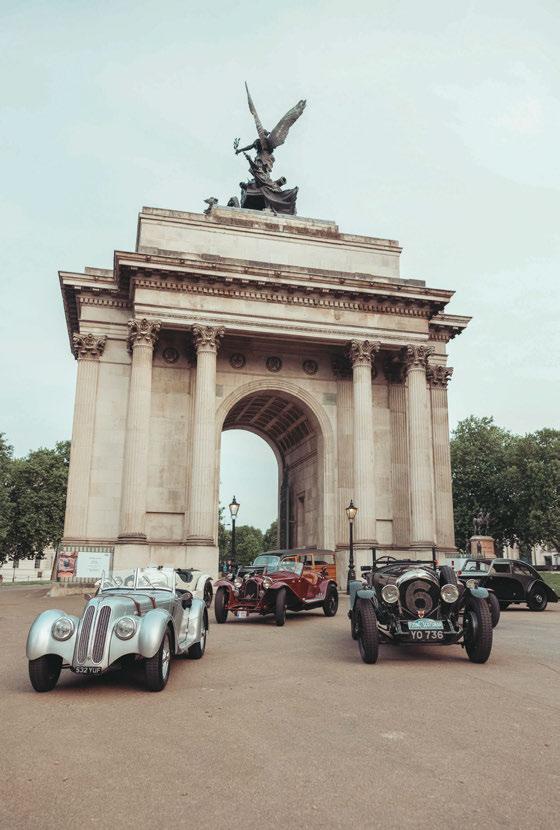
Vintage cars take over London… again
1 June
James Wheeler and Federico Göttsche Bebert organised a second tour of the capital for pre-war cars, this one a dawn raid starting at Alexandra Palace and finishing at the monthly Southside Hustle meet in Wimbledon. Robyn Halliday
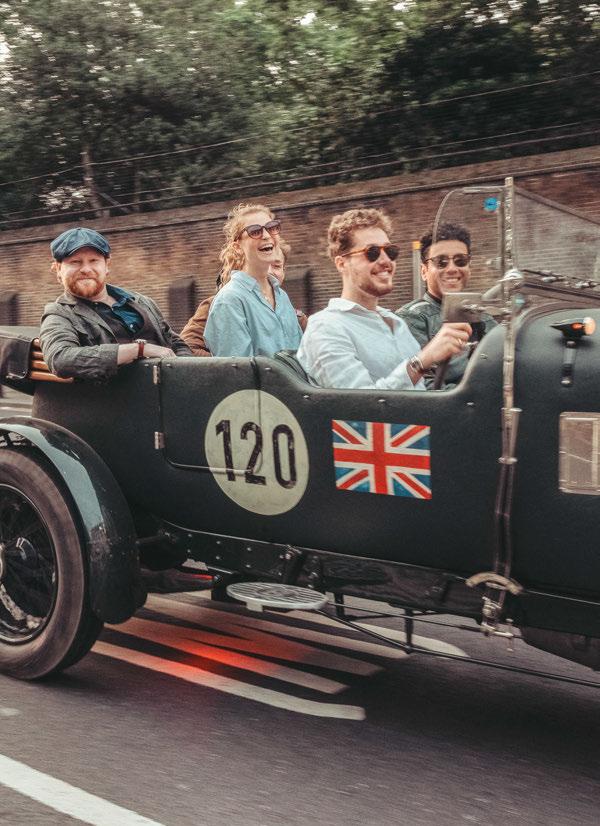

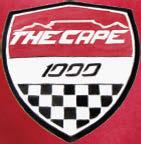
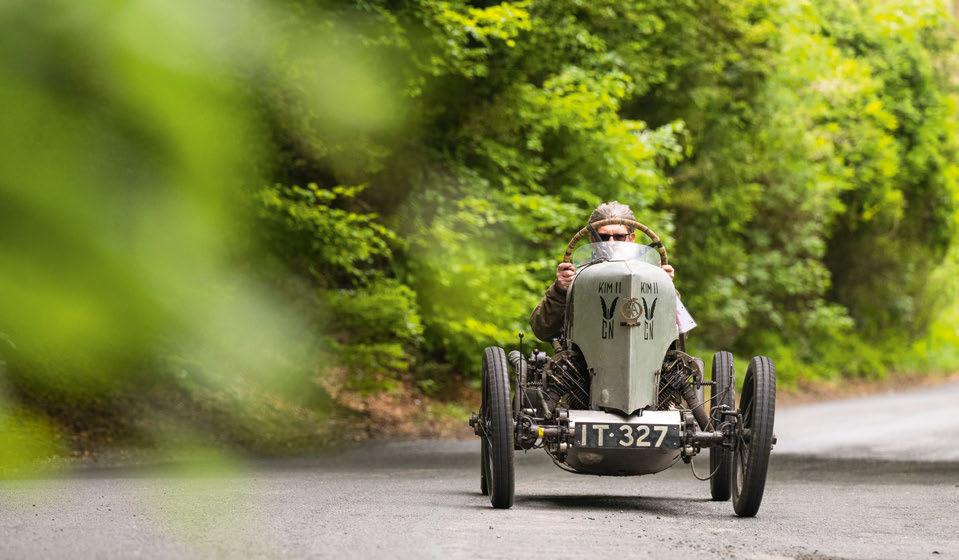

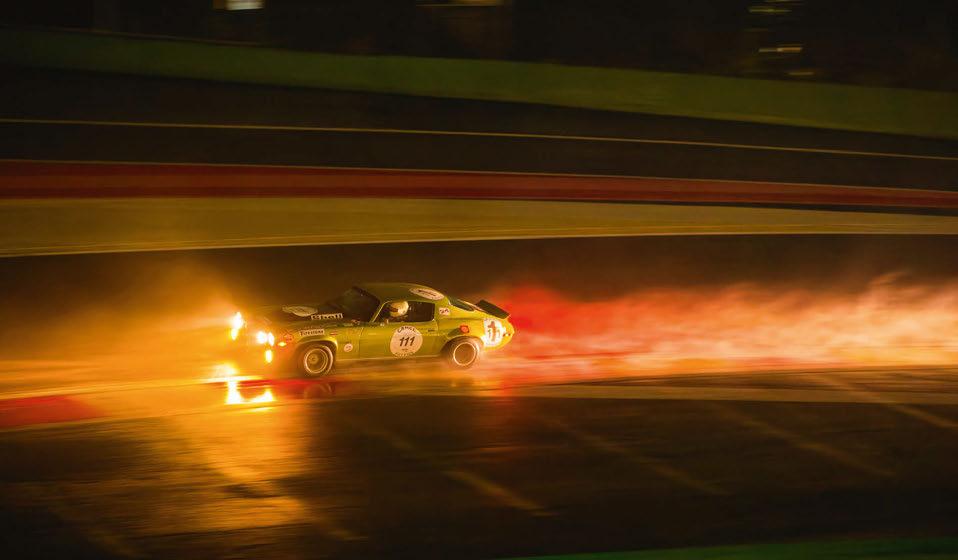
Aston Clinton Centenary 14-17 May
Some 87 period cars and motorcycles paraded from the centre of Aston Clinton to the hill that gave Aston Martin half its name, marking 100 years since the hillclimb was last active. Here Jonathan Rose in the 1913 GN Kim II was one of those that took on the Buckinghamshire hill. Chris Tarling
Ferrari F50 Legacy Tour 6-10 May
To mark the 30th anniversary of the F50, more than 20 crews from ten different nations covered 675km in three days from Saturnia in Tuscany to Maranello, via Grosseto, Porto Santo Stefano and Siena. At Maranello they met the engineer who developed the F50’s V12 engine, and paraded around Ferrari’s iconic Fiorano Circuit.
Ferrari
Spa Classic 23-25 May
There was uniquely Spa weather for Peter Auto’s 13th spring spectacular in Belgium. The festival attracted some 1000 classics off the track and 400 on it. Drivers included Sarah Bovy, Emmanuel Collard, François Perrodo and Eric van de Poele.
PhotoClassicRacing
Sea and Air Freight
Worldwide Customs Brokerage
Race and Rally Transportation
International Storage
UK and European Trucking
Vehicle Registration
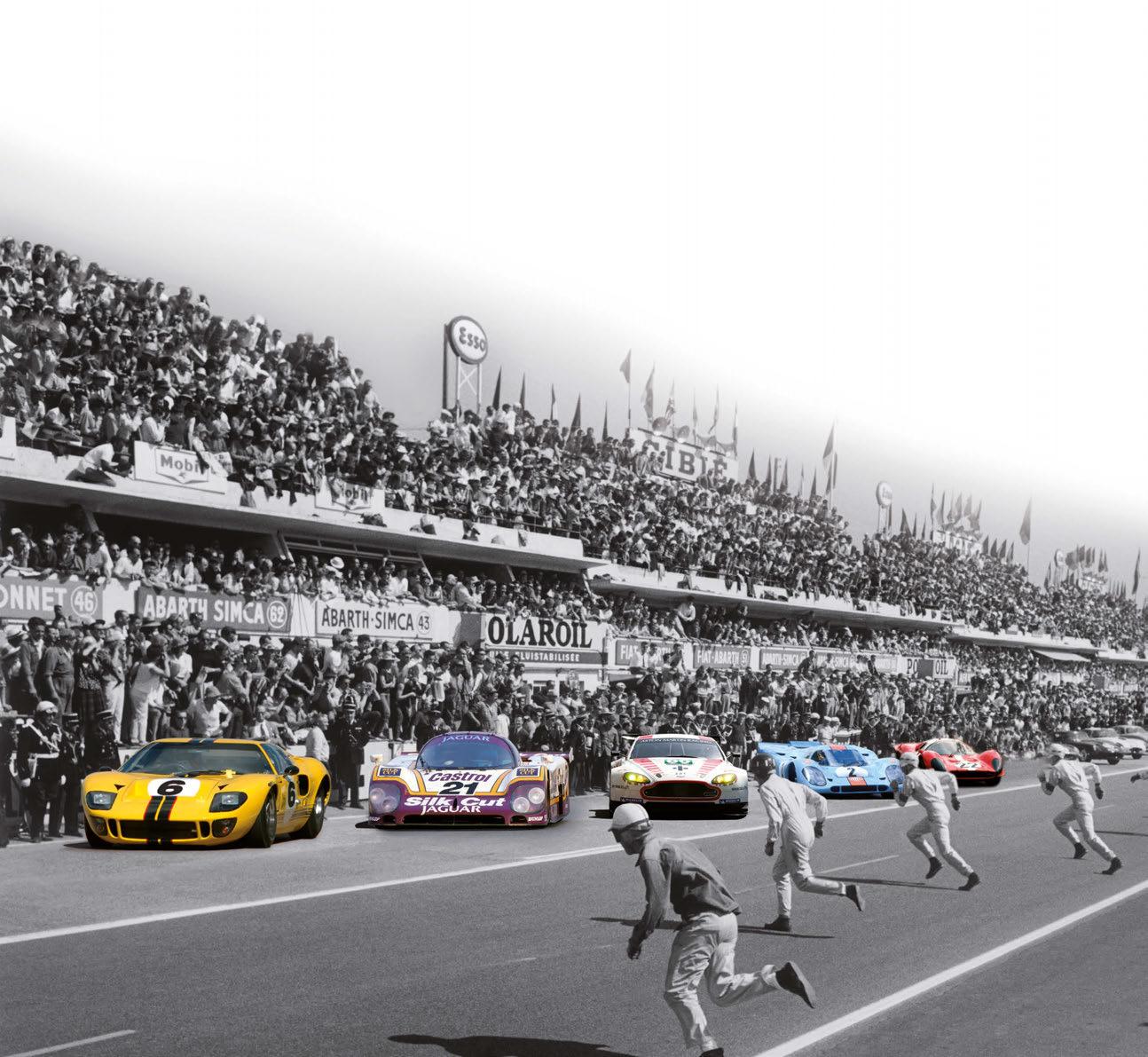





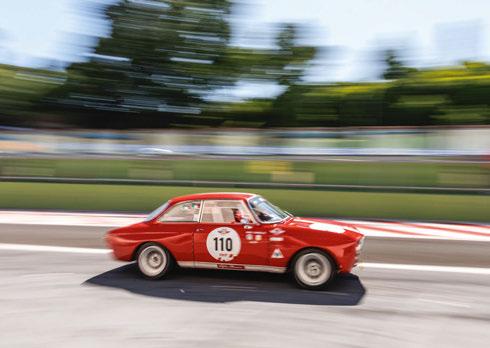
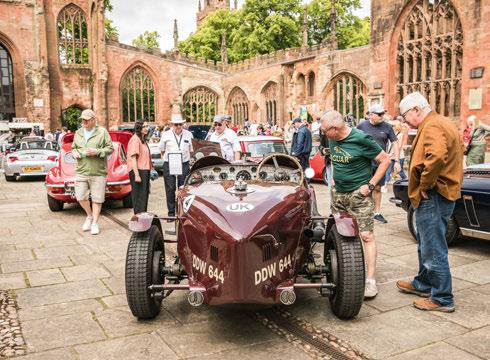
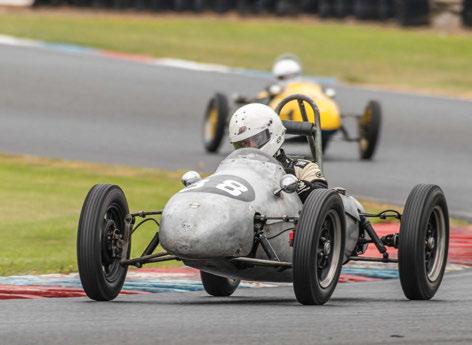
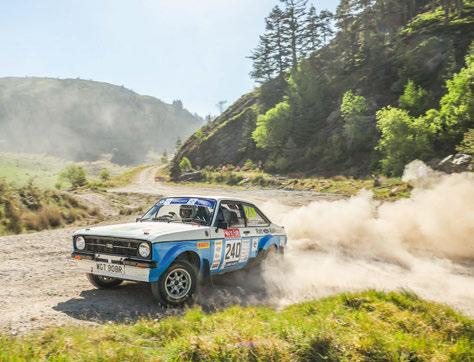
CLOCKWISE, FROM TOP
Terre di Canossa 8-11 May
Argentinian TR2 crew Gustavo Galfione and Maria Cristina Sueyras took the spoils in the 15th edition of the 600km Terre di Canossa Rally in Tuscany. Canossa Events
Classic & Modern Motorsport Club 17-18 May
This Mallory Park meeting included two races for the 500 Owners Association Championship, one won by Hamish Cameron Eveleigh in his Cooper Mk8 (pictured). 2024 champion Alex Wilson in a Martin 500 took the other.
Peter McFadyen
BHRC Plains Rally 17 May
Steve Ward tackles Aberhirnant in his Ford Escort Mk2 during round three of the British Historic Rally Championship, the year’s first foray into Wales.
Ben Lawrence
Coventry MotoFest
31 May – 1 June
Britain’s motor city was once again bursting with classics, the concours taking place in the ruins of the old Coventry cathedral.
Joy Richings
Alfa Revival Cup 16-18 May
Ronnie Kessel passed Daniele Perfe i on the final corner to take the spoils in round two, at Vallelunga. Christian Oldendor was third. Canossa Events

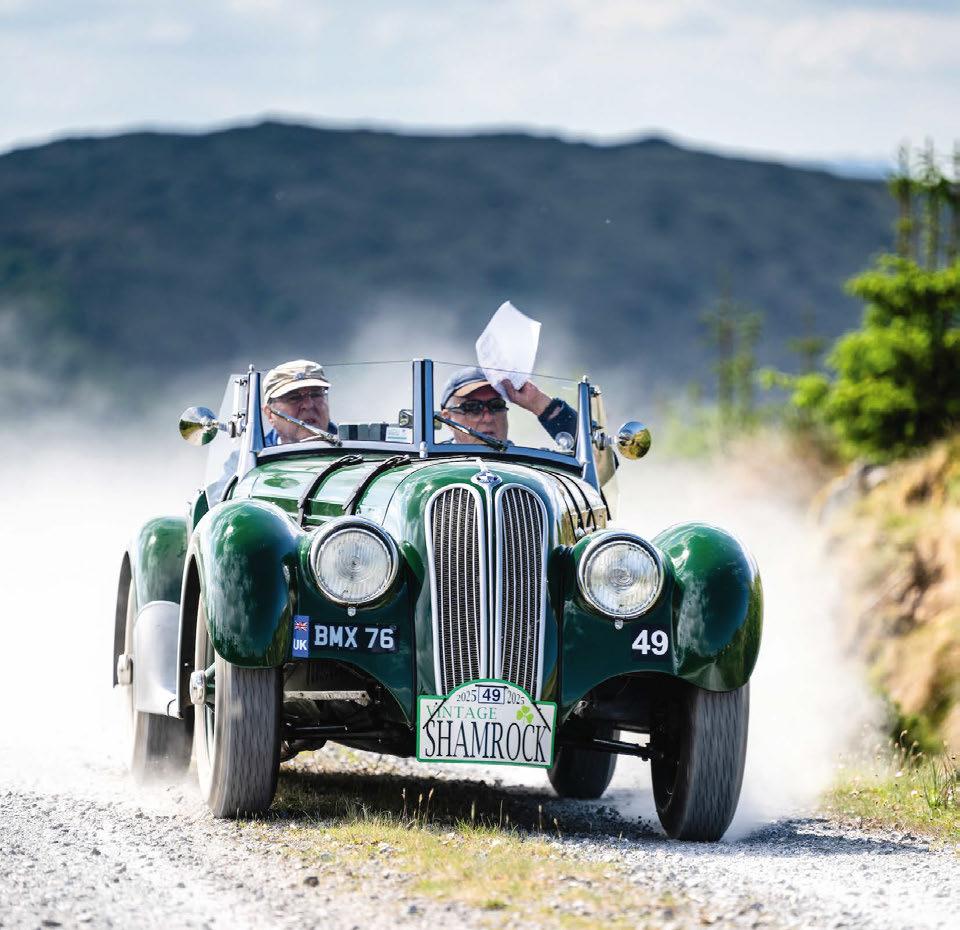
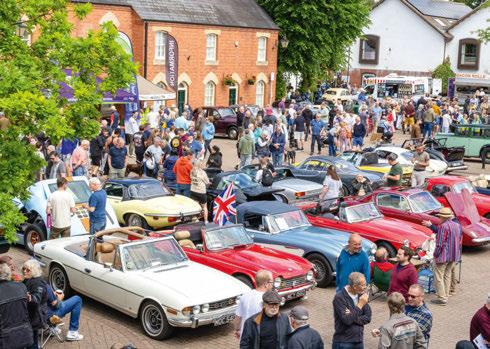
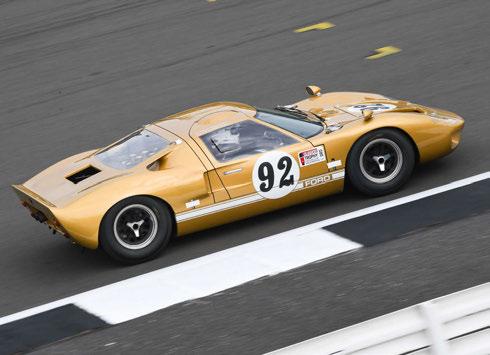
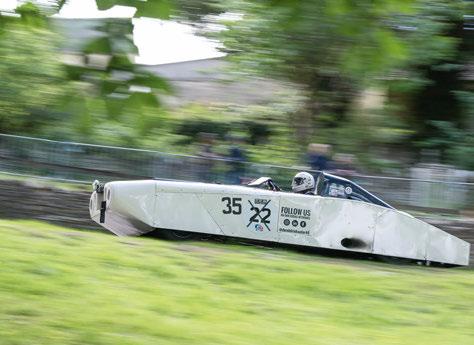
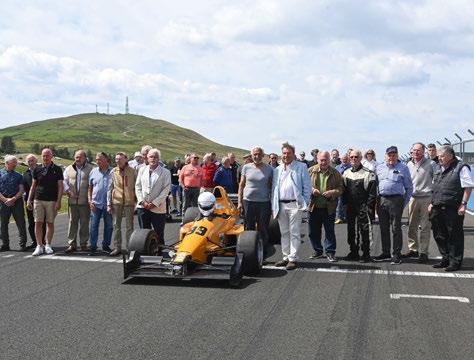
CLOCKWISE, FROM TOP Shamrock Rally 12-15 May
A er four days and 500 miles, the Frazer Nash-BMW 328 of Kite/Johnson helped ‘Just Good Friends’ take the Best Team award. Theo Hunt and James Galliver were Rally the Globe’s youngest-ever event winners in their 1933 Frazer Nash TT Rep. Gerard Brown
Prescott Historique 24-25 May
What’s that going up the hill – is it Le Monstre? Derek Drinkwater’s 61 series Cadillac replica looks oddly at home in Gloucestershire. Chris Tarling
Knockhill 50th 18 May
The Sco ish circuit’s half-century was marked by a gathering of winners and champions including Eddie Labinjoh, winner of the venue’s firstever race in his Alfa Romeo 2000 GTV. Je Bloxham
Silverstone International Trophy
31 May – 1 June
Henry and Martin Stephenson’s Ford GT40 at speed in the Guards Trophy. Je Bloxham
Classic Stony 1 June
The usual fine array of classic cars and ’bikes at the event ranged from a Ford Model A Speedster (that won best in show) to a 2015 VW XL1 eco-car. Klik & Capture
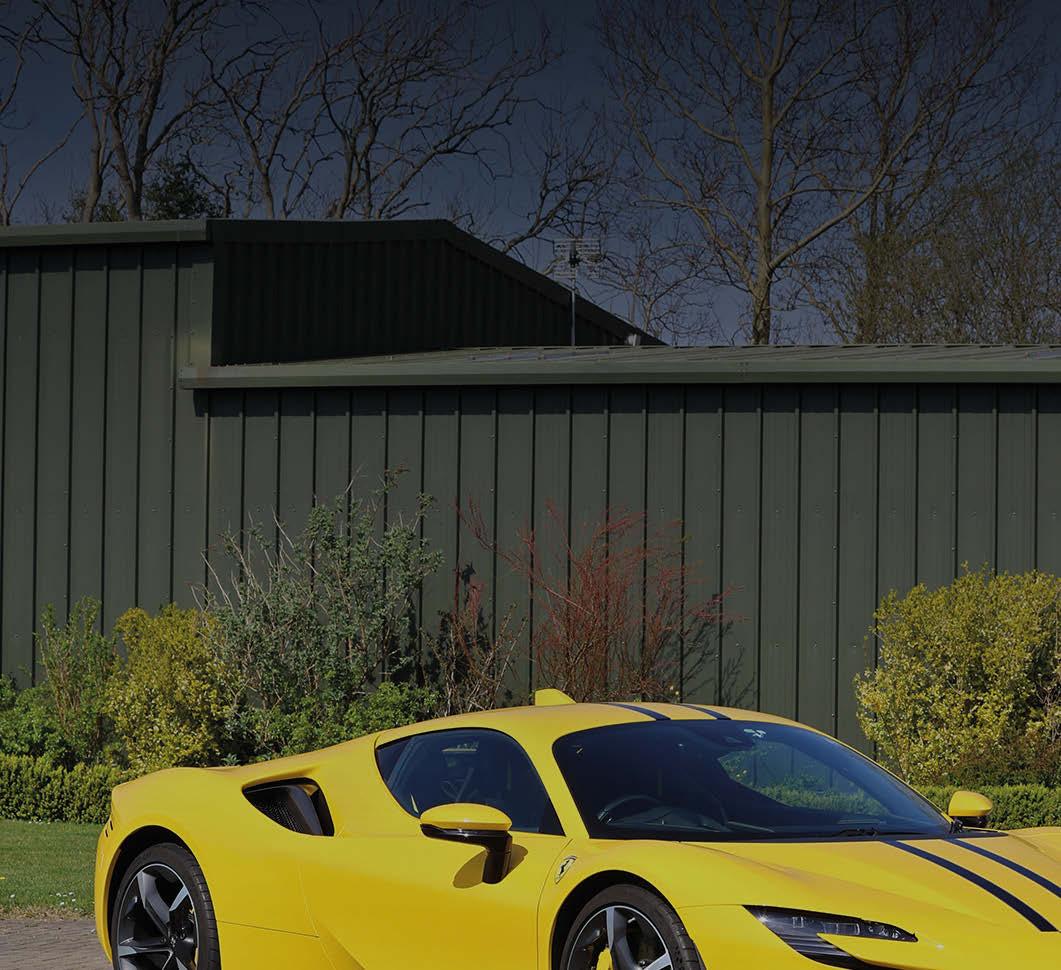
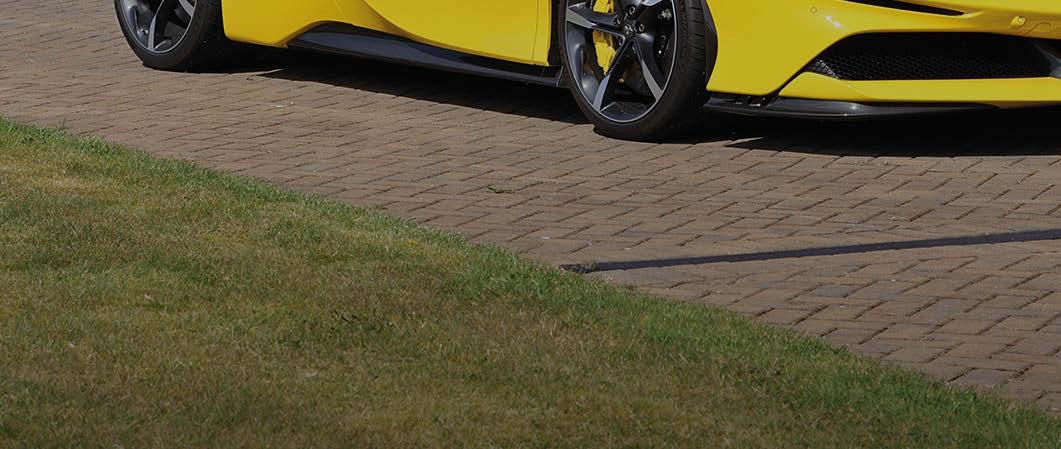
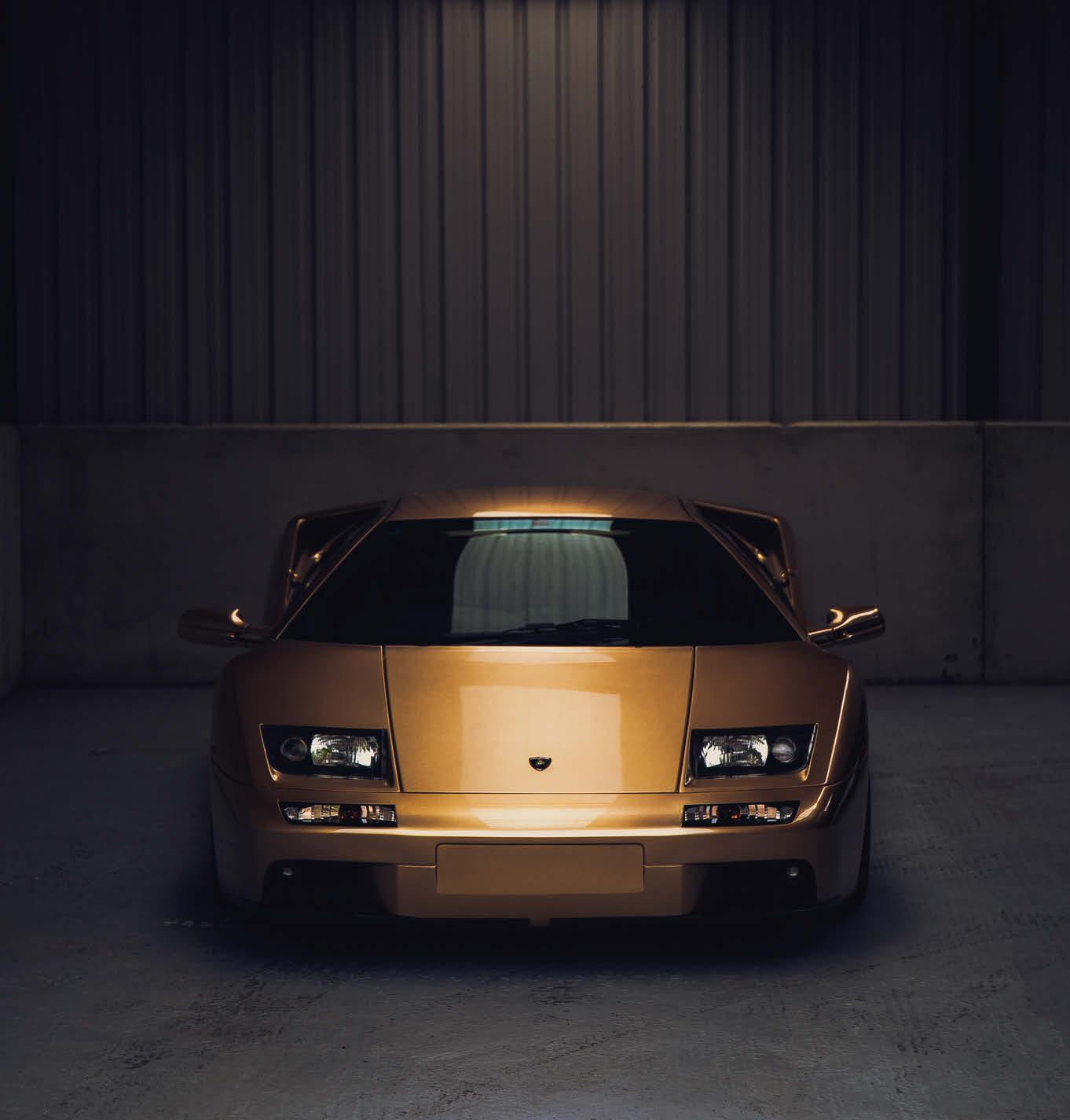





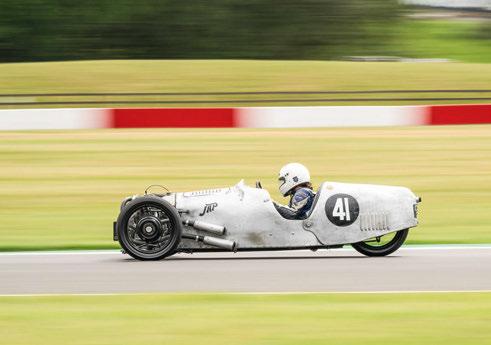
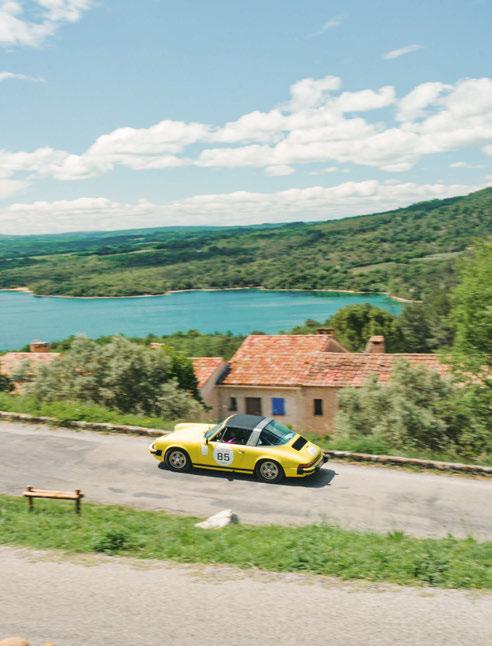
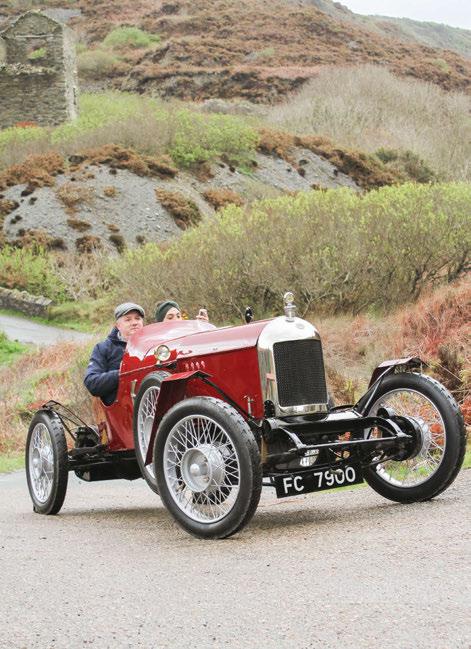

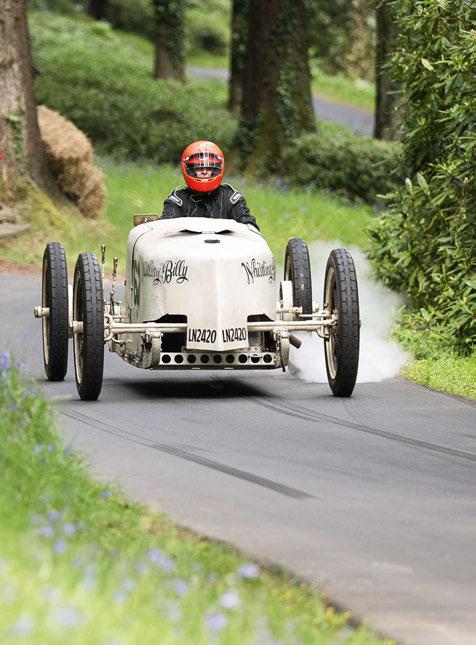
CLOCKWISE, FROM TOP LEFT
VSCC Worcestershire Tour
1 June
Peter Garland and Julian Ghosh in Peter’s 1914 Straker Squire 15/20HP. Peter McFadyen
Old Number One at Lands End 18-19 April
A collaboration between the British Motor Museum, the Motor Cycling Club and the MG Car Club returned ‘Old Number One’ to the MCC Land’s End Trial in 2025, the centenary of the car’s Gold Medal Award with Cecil Kimber. Colin Murrell
Loton Park Hillclimb 18 May
Michael Crutchley in his Alfa Romeo Giulia. Paul Lawrence
VSCC Wiscombe Park Hillclimb 11 May
Bob and Michael Dyke’s 1905 White Racer Whistling Billy Chris Tarling
Rallye des Princesses Richard Mille 17-22 May
Carole Buoro and Marie-France Allez de Royère beat more than 100 other crews to win the 2025 event in a Porsche 911 2.4L. Peter Auto/Richard Mille
VSCC Donington 24 May
Finley HopeCameron’s 1934/36
Morgan Super Sports in the Specials race. Chris Tarling









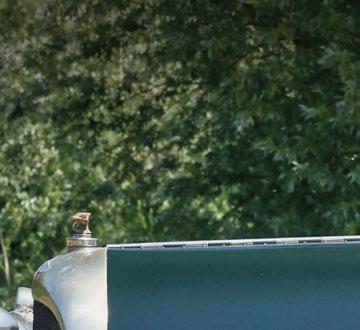

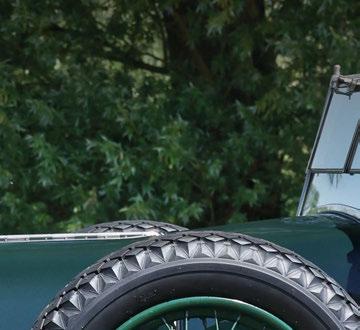
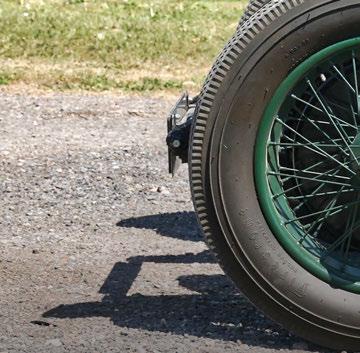












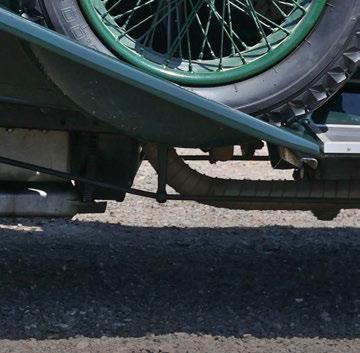






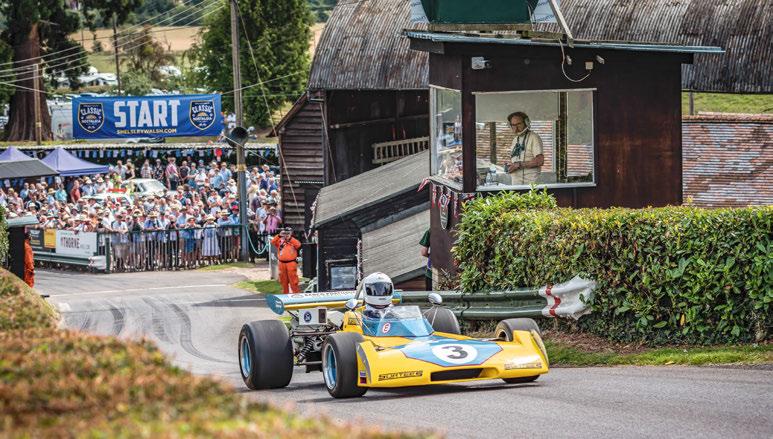
26-29 June
La Leggenda di Bassano
A first-rate regularity rally for classic open-top competition cars, held in northern Italy. laleggendadibassano.com
26 June – 14 July
White Nights
From the start in Copenhagen, crews will drive north through Sweden, Finland and Norway, chasing the midnight sun. bespokerallies.com
27 June
Hope Classic Rally
Entrants motor around Surrey in classic cars provided by a group of generous owners. The event raises money for WeSeeHope, a charity helping children in sub-Saharan Africa. hopeclassicrally.org
27-29 June
The Aurora
Held in the pretty Norrviken Gardens just outside Båstad in Sweden, and this time with special classes including one for Zagato-bodied cars and another for restomods. theaurora.se
27-29 June
Dragstalgia
Santa Pod Raceway serves up the sights, sounds and smells of drag racing in years gone by. santapod.co.uk
28 June
VSCC Southern Rally
Members of the VSCC head to the New Forest for the club’s traditional summer rally. vscc.co.uk
28-29 June
Heveningham Concours
At Heveningham Hall in Suffolk the field of cars will again be complemented by a fabulous display of vintage aircraft. heveninghamconcours.com
28 June – 1 July
L’Échappée Alpine
A rally in the Savoie and HauteSavoie departments of France, with a route boasting no fewer than 22 mountain passes. zaniroli.com
29 June
The Rising Sun-Day
The Great British Car Journey museum in Derbyshire goes
Japanese for the day, with all sorts of interesting machines from the Land of the Rising Sun filling the car parks. greatbritishcarjourney.com
1 July
Haynes Breakfast Club
July’s gathering at the Haynes Motor Museum will feature a special paddock for 1980s cars. haynesmuseum.org
2 July
Classics in the Walled Garden
An evening garden party and classic car gathering at the impressive Luton Hoo Estate, held to raise money for causes including the NSPCC. classicsitwg.com
3-6 July
Le Mans Classic
The storied Circuit de la Sarthe welcomes back cars of a type that raced in the 24 Hours of Le Mans between 1923 and 1981. lemansclassic.com
10-13 July
Goodwood Festival of Speed
Featuring a giant celebration of the 75th anniversary of the F1
World Championship; and as ever including the prestigious Cartier Style et Luxe concours. goodwood.com
11-12 July
Midnight Sun Rally
The popular Swedish rally marks its 75th anniversary with a programme that includes four newly devised special stages. midnattssolsrallyt.com
11-13 July
International Oldtimer Meeting Baden-Baden
More than 350 classic cars arrive in the German spa town of Baden-Baden. oldtimer-meeting.de
12 July
Concours d’Elegance at Copshaholm
In South Bend, Indiana, with an especially interesting class titled ‘The Silent Knights’ for cars with Knight sleeve-valve engines. concoursatcopshaholm.org
13 July
Rally for the Ages
A one-day starter event based at Bicester Motion and created to get youngsters into regularity rallying. Crews with a combined age of under 70 can enter for free. hero-era.com
16-19 July
Ennstal Classic
A regularity rally contested on superb roads in the mountainous Austrian province of Styria. ennstal-classic.at
18-20 July
The Summer Trial
Giving novices a chance to try a multi-day event while getting to grips with navigation, and based in Shrewsbury this year. hero-era.com
19 July
Noosa Concours d’Elegance
The little beach town of Noosa Heads in Australia experiences a brief population boom as 20,000
car enthusiasts arrive to enjoy a concours held on the main drag. noosaconcours.com.au
19-20 July
Classic Nostalgia
Classics tackle the hill at Shelsley Walsh, where there will also be a concours for pre-1985 cars. classicnostalgia.co.uk
20 July
Unified
Bicester Motion hosts a new show featuring 500 hand-picked cars of all ages and types, plus live music and a trade village. drive-r.co.uk
20 July
Summer Traversée de Paris
Just like the jaunt across Paris that attracts hundreds of classic cars each January, but warmer! vincennesenanciennes.com
22-24 July
Yorkshire Elegance
At Grantley Hall in Ripon, the concours classes span 140 years of motoring history. yorkshireelegance.com
24-26 July
Eifel Rallye Festival
Sideways action on stages formerly used in the German rally championship. eifel-rallye-festival.de
24-27 July
Coppa d’Oro delle Dolomiti
The beautiful mountain resort of Cortina d’Ampezzo in Italy hosts a regularity rally for pre1972 classics. coppadorodelledolomiti.it
25 July
Classic Motor Hub
Treasure Hunt
In addition to its Coffee & Classics gatherings, the Classic Motor Hub in Bibury is now running regular ‘Treaure Hunt’ events, which see entrants drive a route through the Cotswolds, solving puzzles along the way. classicmotorhub.com
25-26 July
Concours of Elegance Germany
Back following its successful debut last year, and bringing 50 classics to the shores of Lake Tegernsee in the Bavarian Alps. concoursofelegancegermany.com
25-27 July
Oulton Park Gold Cup
Among the attractions this year is a celebration of Britain’s first Formula 1 team, BRM; a pair of races organised by the VSCC; and a tenth anniversary edition of the Cheshire Concours. oultonpark.co.uk
26 July
Hagerty Festival of the Unexceptional Grimsthorpe Castle welcomes charmingly ordinary cars built between 1970 and 2000. hagerty.co.uk
27 July
Brooklands Summer Classic Gathering & Autojumble
The grounds of Brooklands Museum are packed with twoand four-wheeled classics and sellers of automobilia and vintage goodies. brooklandsmuseum.com
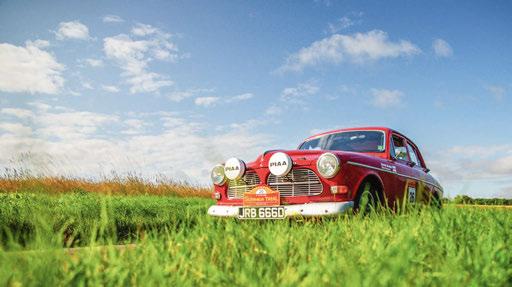

Secure your place; make travel plans
Sussex Cloverleaf 5-8 August
The sixth Cloverleaf rally for small groups will be based at the luxurious Kesgrave Hall in Suffolk. For a limited number of pre-77 cars, it will cover 450 miles in the county over four days and sample all sorts of terrain including asphalt, gravel, grass and stubble. rallytheglobe.com
Angoulême Circuit des Remparts Tour 17-22 September
Only a handful of places are left on this six-day driving tour to the must-visit Charente event that now features a concours as well as the racing on the city’s ramparts. The Tour includes ferries, a rally through Cognac vineyards, hospitality, accommodation, gala dinner, entry and grandstand tickets – all shadowed by a support vehicle. classicgt.co.uk
New Zealand 2 Island Tour 5 February – 1 March 2026
This 25-day event covers New Zealand’s North and South Islands and includes active volcanoes, Māori culture, glaciers and incredible natural landscapes. The event starts in Auckland and runs via the capital Wellington to Christchurch. Drive yourself in a modern Mitsubishi SUV (hire included) or optional classic car. sceniccartours.com
Indochina Classic 15 November – 10 December 2026
A fascinating journey, pictured above, across Cambodia, Laos and Vietnam. This 5000km rally starts in Sihanoukville, Cambodia, and visits the famous temples of Angkor Wat before skirting into Laos. The route then crosses into Vietnam for Hoi An and Hue, back into Laos to visit the UNESCO-listed town of Luang Prabang, and then into northern Vietnam, ending in Ha Long. Road surfaces will be 90% asphalt and 10% good dirt roads. Entry is limited to 25 pre-1980 cars. destinationrally.com
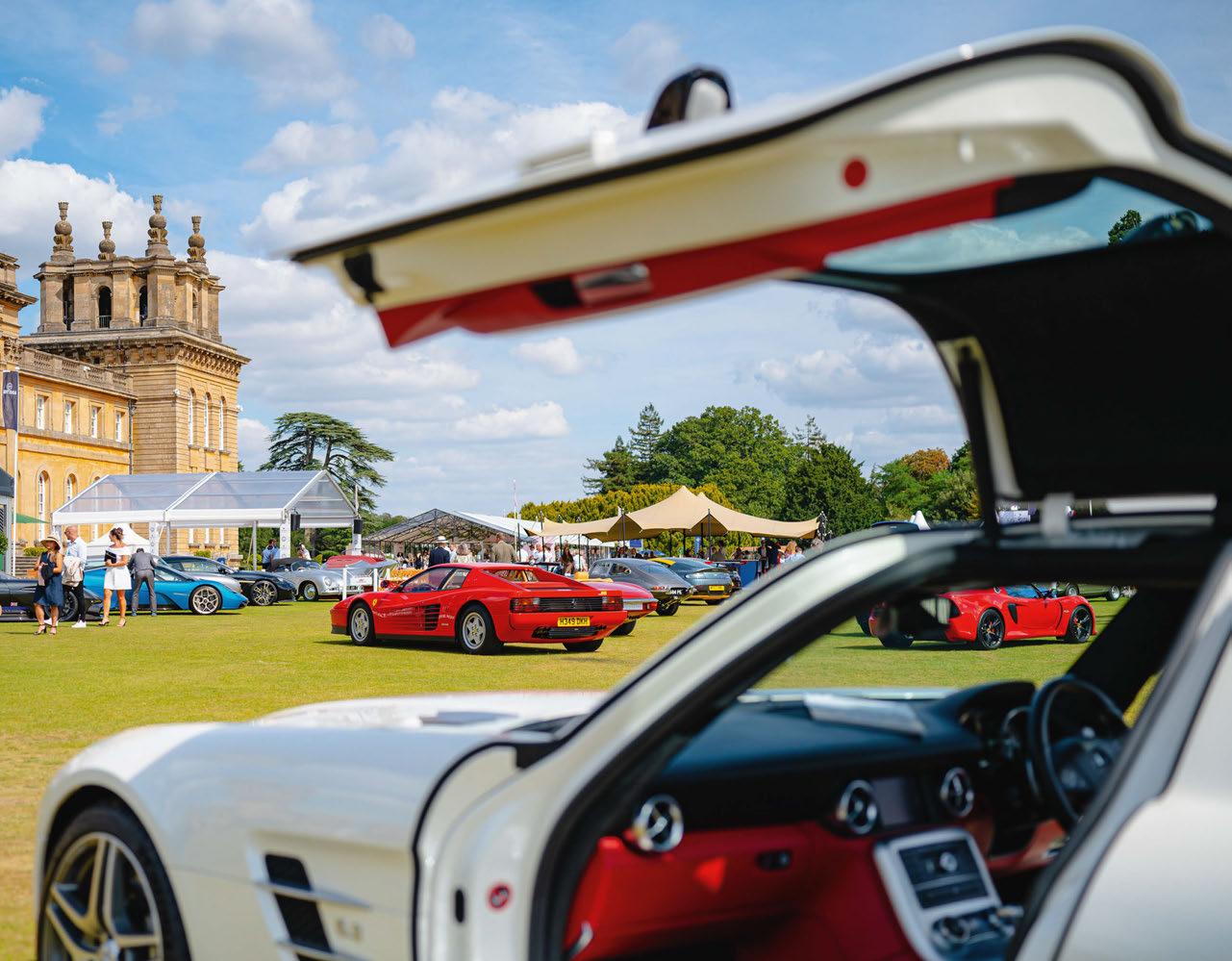
The UK’s most exclusive automotive garden party continues to set new standards in luxury and innovation year after year
Photography Salon Privé
SALON PRIVÉ CELEBRATES 20 years of automotive elegance and world-class hospitality on 27-31 August at Blenheim Palace, Oxfordshire. The event showcases the best in classic cars, supercars, fine dining and luxury brands, embodying British motoring and lifestyle excellence.
Salon Privé is now almost a week long – and every day is different. From the three VIP days – Wednesday and Thursday’s Concours Days and Friday’s Ladies’ Day – to the weekend’s supercars and clubs days, not to mention the exciting MotorAvia evening party down the road at London Oxford Airport on the Wednesday night, you could easily attend several times during the week and see all-new cars and exhibits on each visit.
To celebrate its 20th anniversary, Salon Privé will present a huge new glass Gallery structure that will stun this year’s guests while offering protection from any less than favourable weather. ‘It will bring all of the major automotive brands and sponsors together under one roof,’ explains David Bagley, who founded the event with his brother Andrew, ‘providing weatherproofing and signifying an end to the British weather wreaking havoc on the summer social season of events.’
‘It also allows the smaller boutique brands the opportunity for unparalleled exposure,’ confirms Andrew, ‘with significantly more cars on display than ever in our history.’
And it’s not only cars. There have long been aviation brands at Salon Privé, but for the first time ever there will be boats exhibited on the Blenheim Palace Lake, with several wellknown marine brands taking part, including Sebino Yachts, Fraser Yachts and Princess Motor Yacht Sales.
‘There’ll be upwards of 50 of the latest super- and hypercars within the Gallery,’ says David, ‘plus more than 40 luxury brands, helicopters and marine partners on the lawn.’ Moreover, there’s the epicentre of the event, the concours, of course – perhaps the biggest draw for Octane readers. With top-level marque-expert judging now well-established at Salon Privé, some of the world’s most important collectors make a point of entering their cars every year. This year will see some eye-watering rarities displayed in the Salon Privé Concours by Aviva Private Clients.
Adds Andrew: ‘If we look back at the last three years’ Best of Show winners, it really demonstrates a step-change for Salon Privé: David Sydorick three years ago, with his Ferrari 250 GT Tour de France; Lord Bamford with his Bugatti Type 57 Corsica two years ago; and then, of course, Brian Ross with his Ferrari 335 S last year – with Nick Schorsch’s Isotta Fraschini in second place and Lord Bamford’s Rolls-Royce Phantom II Freestone & Webb in third.’
That’s an incredible selection of winners, and the entries for 2025 are looking to shine even brighter. More will be revealed soon on those.
The Saturday will become the one-marque club day –including the Aston Martin Owners Club and the Ferrari Owners’ Club – while the Sunday will feature the multimarque clubs, as well as an entirely new lifestyle club event. Around 1500 cars are expected on the Saturday and more than 1000 on the Sunday.
Ticket prices start from £75 for Wednesday to Friday (2729 August), with full hospitality starting at £295. For the Saturday (30th) and the Sunday (31st), club member prices start from £50.
For more information, see www.salonpriveconcours.com.
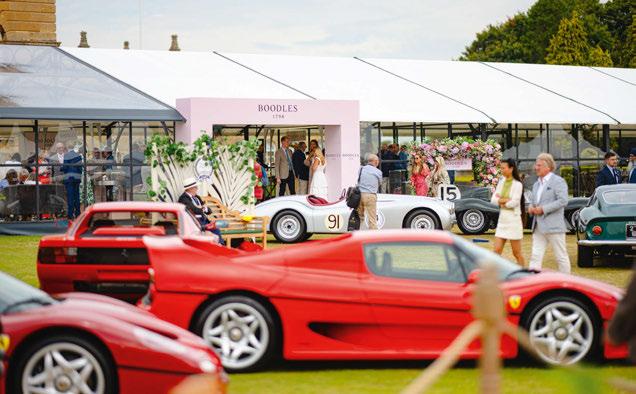
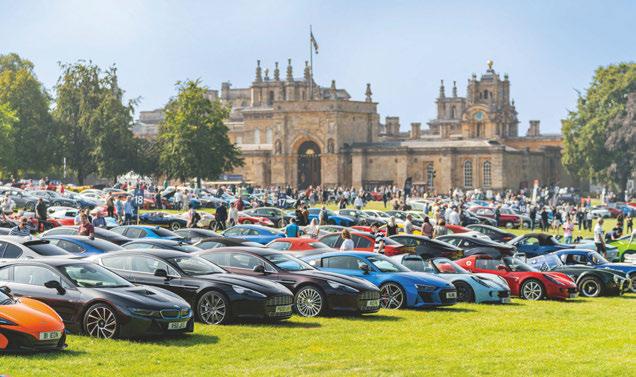


World Champions and their steeds have a busy few months ahead of them as F1 fever bites
THE 75TH ANNIVERSARY of the Formula 1 World Championship is set to dominate the festival calendar this summer, starting with the Goodwood Festival of Speed, which is going all-out with its celebrations.
The event, held on 10-13 July, will break its F1-backed celebration down into six classes, starting with the AIACR Manufacturers’ World Championship of 1925, the progenitor of F1, then Pioneers, Innovators, Underdogs, Champions and Teams. With more than 100 F1 cars expected to participate in the Festival, F1 President and CEO Stefano Domenicali said: ‘We are thrilled to be working with Goodwood to
present this celebration of 75 years of the Formula 1 World Championship at the Festival of Speed. The Duke and his team have an incredible ability to bring the past, present and future of motorsport to life, and I look forward to joining them as we celebrate this landmark anniversary together.’
Goodwood has already revealed a roster of star names including three former World Champions – Mario Andretti, Nigel Mansell and Alain Prost. 1992 Formula 1 World Champion Nigel Mansell is to drive his 1992 Championshipwinning Williams FW14B and race-winning FW11 – the car that would have taken him
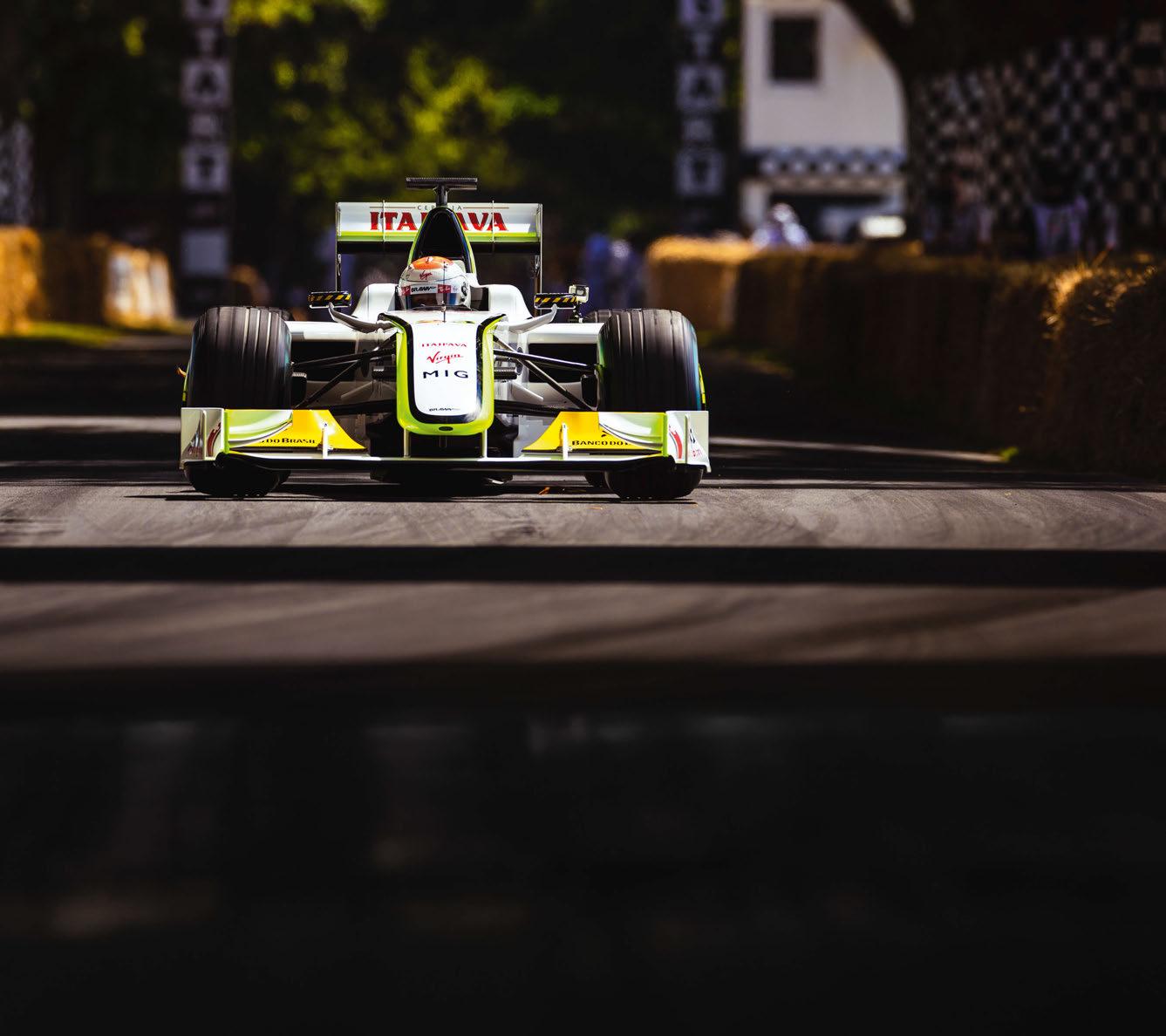
The F1 theme is not only taking over the festivals (see above), it is hitting the museums, too, with a pair of major exhibitions opening in the UK.
Formula 1 driver Mike Wilds and Lord Montagu of Beaulieu recently opened the National Motor Museum’s ‘Icons of Formula 1’ display in Beaulieu, which, until November, will mark 75 years since the inaugural F1 World Drivers’ Championship. It includes nine cars from World Championship-winning teams such as BRM, Lotus, Williams and Ferrari,
each representing a decade of technical and sporting development. Exhibits range from BRM V16 to Williams FW43 B-01 and there is also a state-of-the-art F1 simulator.
Silverstone Museum is also embracing the 75 Years of F1 theme. Its collection of F1 cars, artefacts and memorabilia was unveiled on 13 May – 75 years to the day after the Northamptonshire circuit hosted the first World Championship race. It includes cars driven by current stars Lando Norris and George Russell,
as well as Graham and Damon Hill and Nigel Mansell.
Meanwhile, in the USA, a major new display has opened at the Petersen Automotive Museum in LA. ‘Totally Awesome! Cars and Culture of the ’80s and ’90s’ is the museum’s first large-scale retrospective dedicated to that era’s stylistic and cultural innovations and takes place in the Mullin Grand Salon, celebrating everything ‘rad’, from cars to video games.
Star cars include a 1981 DeLorean
DMC-12 used in Back to the Future, 1984 Pac-Man Rod, a 1996 Vector M12 and a 1988 Cizeta V16T. The exhibition will run until April 2026. In Italy, 95 years of Pininfarina was the subject of a special display at MAUTO in Turin. ‘From Myth to Future – 95 Years of Pininfarina’ coincided with the launch of the book Pininfarina 95 – Timeless Beauty, documentary Pininfarina. Story of a Legend, the Italian debut of the Morgan Midsummer, and the reveal of the Battista Novantacinque.
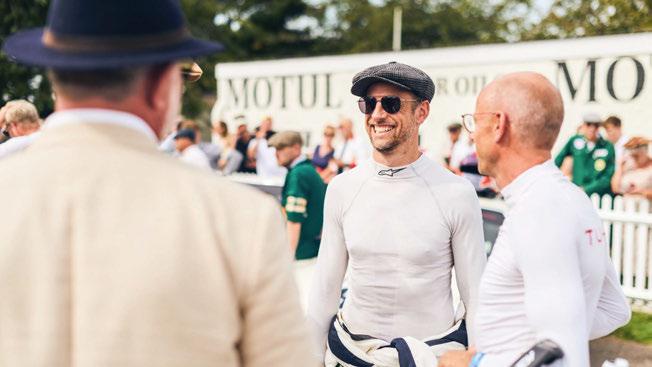
to the Championship six years earlier in 1986, but for a tyre failure 18 laps from the end of the final GP in Adelaide.
The Duke of Richmond said: ‘I couldn’t be happier that Nigel will be coming back to the Festival of Speed this year, as we host our biggest-ever celebration to mark 75 years of the Formula 1 World Championship. Nigel was more than just a legend of the sport, he was a hero, and celebrating Formula 1 without him would be unthinkable! As well as being one of the fastest, bravest and most determined drivers of all time, he inspired a level of devotion amongst British fans the like of which we have never seen before or since. We got a small glimpse of “Mansell Mania” when he came to Goodwood three years ago, and I look forward to its return in July.’
Mansell will be joined at Goodwood by 1978 Formula 1 World Champion Mario Andretti, who is scheduled to drive his 1978 Championshipwinning Lotus 79, plus four-time World Champion Alain Prost, who will drive the 1985 McLaren
MP4/2B in which he won his first Championship. Prost will also drive the iconic 1988 McLaren-Honda MP4/4.
It is not just the drivers that will be out in force, but also a hots of other famous F1 names, including technical gurus Adrian Newey OBE, Professor Gordon Murray MBE (whose career will also be the subject of Gerry
‘He was a hero: celebrating Formula 1 without Nigel Mansell would be unthinkable’
Judah’s central sculpture), and Ross Brawn OBE.
The F1 party will continue at the Goodwood Revival on 12-14 September. The 2009 F1 World Champion Jenson Button will race across the weekend, while the life and career of Scottish double champion Jim Clark will be honoured on the



60th anniversary of his annus mirabalis, in which he won his second F1 World Championship with Lotus plus the Indy 500, a unique feat in the same season.
Fellow Scot and three-time F1 champ Sir Jackie Stewart said: ‘Jim was not only a first-class racer, but he was a first-class friend. Jimmy and I enjoyed so much camaraderie both on and off the track, and I am personally so pleased that Goodwood is choosing to celebrate this great man in this way.’
Of course, nowhere has more cause to celebrate the anniversary of the F1 World Championship than Silverstone, where the whole thing kicked off on 13 May 1950 in front of His Royal Highness King George VI, Princess Elizabeth, Princess Margaret and the Earl and Countess Mountbatten of Burma.
For 2025 Silverstone is planning to display cars raced by all 34 F1 World Champions, starting with Nino Farina, and encompassing marques from Alfa Romeo to Red Bull, on 22-24 August. ‘The 1950 British Grand Prix certainly holds a very special
from opposite
place in motorsport history,’ said Nick Wigley, Silverstone Festival event director. ‘Not only did it receive Royal attendance but it also marked the dawn of the F1 World Championship as we know it today. Now, 75 years on, we will be honouring that hugely historic milestone at this year’s Silverstone Festival with this unique and unmissable World Champions Collection.
‘We are working closely with owners, collectors, F1 teams and other wonderfully helpful organisations such as Classic Team Lotus to put this unique collection together.’
The Festival’s racecard will also feature no fewer than four showdowns for Grand Prix icons from yesteryear as well as a very special race for a mammoth 50-car-plus grid of 500cc Formula 3 cars, the formula having supplied the original support race in 1950.
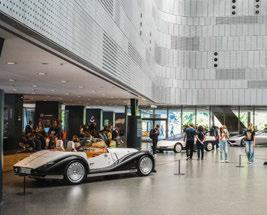

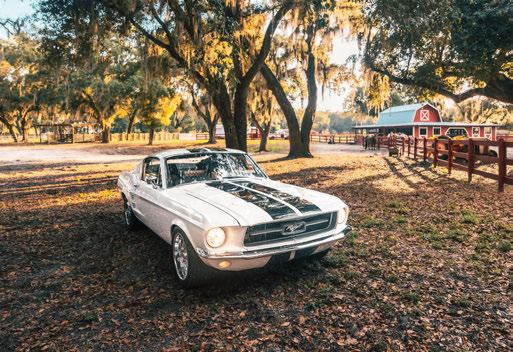
THERE ARE two new releases from ECD Auto Design in Florida, USA: a Mustang-based car and what the company describes as its most ambitious project yet, a Jaguar E-type GTO, with GTO standing for ‘Grand Touring Open’. Described as ‘a bespoke, open-top grand tourer blending Series 1 lineage, D-type cues, and modern performance’, the one-off car’s body was built in Coventry and fitted over an S2 chassis housing a Jaguar V12 rebuilt and tuned by Team CJ in Texas. Mated to ECD-developed fuel injection, the engine is good for over 400bhp and has a modern cooling system. Modern tech includes Bluetooth audio, heated seats, USB ports, automatic headlights and power locks. ‘This car pushed the limits of what’s possible when blending three generations of E-type architecture,’ said Elliot Humble, ECD’s chief technical officer. ‘Series 1 body, Series 2 chassis, Series 3 power – every part was reconsidered, refined, and re-engineered to work in harmony.’
While ECD has previously specialised in hand-building and modernising British Land Rover Defenders, Range Rover Classics and Jaguar E-types, its newest project, the ’67 Ghost, is a bespoke 1967 Mustang Fastback and the company’s first Mustang built entirely in-house. It marks the launch of ECD’s new custom Mustang line-up, offering tailored builds across 1965-70 model years with a focus on period-authentic engines and modern luxury craftsmanship. The ’67 Ghost is packing a 465bhp Roush 347ci V8.
The company behind a popular due diligence database for art, antiques and watches has launched The Classic Car Register to support authenticity and provenance verification in the $39.7billion global classic car market. The database has more than 500,000 records of cars sold at auction, going back to the late ’60s, and has already helped to secure the return of a 1972 Ferrari 365 GTB/4 Daytona, stolen from Monza in Italy in 1977. The team behind The Classic Car Register also runs The Art Loss Register and The Watch Register.

German concours returns
Following the huge success of the Concours of Elegance Germany, presented by A Lange & Söhne, last year, the event will return to Gut Kaltenbrunn on 25-26 July. Organisers promise around 200 exceptional cars with around 50 of them vying for Best of Show.

Electrifying appointments
Halcyon, which primarily uprates and electrifies Rolls-Royces, has announced a trio of big-name signings to its team. Mike Flewitt, former CEO of McLaren Automotive; Graham Biggs, former global corporate communications director at Rolls-Royce Motor Cars; and Graham Lenden, former global CMO at Rolls-Royce Motor Cars, have all joined up. Halcyon CEO Matthew Pearson said: ‘Mike Flewitt, Graham Biggs, and Graham Lenden join us at the perfect time, as we expand to meet Halcyon and Evice Technologies’ demand, serving clients around the world. Their knowledge and expertise are a powerful asset, and their confidence in our vision is a great endorsement of the team’s incredible work to date.’
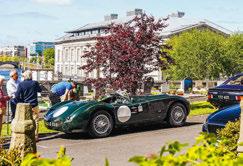
There was an excellent turn-out of both cars and visitors for the second Cars at the Cathedral charity event in May, which was held in the grounds of 12th Century St Mary’s Cathedral in Limerick, overlooking the River Shannon. This event attracted sunshine and some genuinely great cars, including the 1931 Argentine Grand Prix-winning Mercedes SSK and an ex-Sebring 12 Hour Jaguar C-type. The event has already raised more than €10,000 for good causes, and charities benefiting this year include the Children’s Grief Centre and Limerick Island Community Partners.
TAG back at Goodwood
TAG Heuer is not only back as the official timekeeper to Formula 1, but will return to the Goodwood Festival of Speed as official timing partner next month, when the West Sussex event celebrates 75 years of the F1 World Championship. A watch with a special British Racing Green dial is being launched to commemorate the partnership.

95 not out for Battista Automobili Pininfarina has unveiled the Battista Novantacinque, a bespoke model created as a tribute to the 95th anniversary of Pininfarina SpA. The car was unveiled during a special celebration at Museo Nazionale dell’Automobile (MAUTO) in Turin, where it was on display on 22-24 May. As a singular commission and the final bespoke Battista to be unveiled, the Novantacinque marks the end of the hyper-GT’s production run.
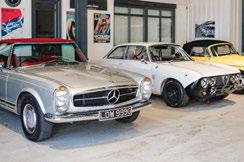
Two well-established classic car businesses are now also offering storage. 96 Engineering has opened a facility next-door to its discreet workshops in Surrey with 24/7 CCTV and electronic gates. Or, if Oxfordshire is more convenient, Girardo & Co has launched its own storage option with climate-control and gradethree alarm system with motion detection. The suite of services available also includes HMRCapproved tax-free bonded storage for non-domiciled vehicles.
To honour the 50th anniversary of Rétromobile in Paris, a new, additional show is being put on by the organisers from 29 January to 1 February in Pavilion 4 of the Paris Expo Porte de Versailles exhibition centre. It is called the Ultimate Supercar Garage and will be a stone’s throw from Rétromobile’s home in Hall 7. The new show already has Bugattis, Koenigseggs and Ferraris from the Charles Pozzi group confirmed for display.

Broad Arrow gets some Zs US auction house Broad Arrow is extending its European operation with two new sales during the Zoute Grand Prix Car Week (8-12 October) in Belgium and in Zürich on 1 November. At its recently held inaugural Italian auction at Villa Erba during the Villa d’Este Concorso d’Eleganza, Broad Arrow accrued €31.2million in sales, with a 78% sell-through rate. The single-day Zoute auction on 10 October will offer 70 cars for sale.
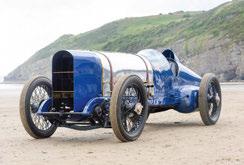
Sunbeam goes on tour
To mark the centenary of Sir Malcolm Campbell’s World Land Speed Record in the Sunbeam 350HP, when he reached 150.76mph on 21 July 1925, the National Motor Museum is taking the car to a series of events. It will appear at the Heveningham Concours in Suffolk on 28-29 June, the Bluebird Chelsea on 16 July, and then on 21 July at Pendine in Carmarthenshire, Wales, where it broke the record.
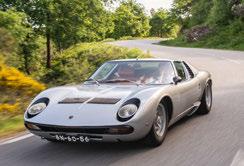
Miuras are à la Moda
The 60th anniversary of the Lamborghini Miura will be the central feature at ModaMiami at the Biltmore Hotel on 28 February and 1 March next year. The Florida event, part of what’s dubbed Miami Car Week, will be in only its third year and promises a mouth-watering selection of the mid-engined V12 dubbed the first supercar and of which only 764 were built between 1966 and 1973. The event will present over 24 classes, from motoring pioneers to modern hypercars.
A pair of exceptional Aston Martins has been announced for the Concours of Elegance at Hampton Court on 5-7 September. They are a 1955 Aston Martin DB3S coupé (one of just three hardtops built of the model and one of only two survivors) and 1932 Aston Martin LM8. Completed in just eight weeks by the race department, LM8 is a ‘second series’ Aston Martin works car and won the prestigious Rudge-Whitworth Cup at Le Mans in 1932.
It has been a regrettable month for losses to the classic car and historic racing worlds. As well as the untimely deaths of Julian Grimwade while racing at Donington Park and Dai Roberts on the Jim Clark Rally, we are saddened to report the loss of two ardent and well-known Bugattistes in Charles Dean and David Marsh; Jaguar specialist par excellence Jeremy Wade; collector and former owner of E2A and other significant Jaguars, Penny Woodley; and the legendary Aubrey Finburgh of Classic Autos of Kings Langley. Our thoughts are with their friends and family and all those others that share our sorrow for their passing.
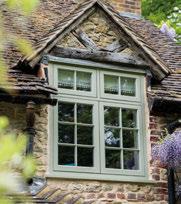

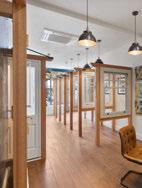

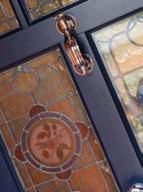
Naturally beautiful, our award-winning timber windows and doors are the logical choice. Constructed from engineered timber slow grown in cold climates, their strength, stability and beauty are guaranteed.
Our collection has been carefully and sensitively tailored to complement the English home. Unlike timber windows of old, our products will not twist, will not rot and require very little maintenance. High levels of insulation and security ensure there is no need to sacrifice beauty for comfort.

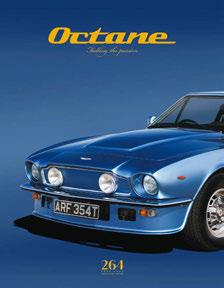
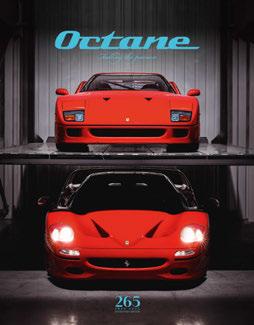
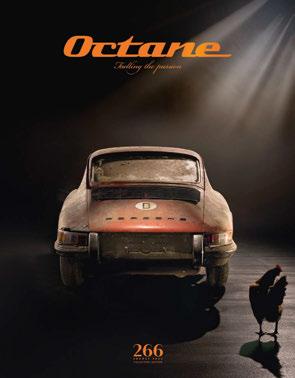
WHY SUBSCRIBE TO OCTANE NOW?
• Pay just £1.66* each for your first three issues
• All subscriptions now include access to the magazine archive via the Octane digital app
• Nev er miss an issue
• Money -back guarantee –cancel and we will refund your remaining issues
• Unique subscriber -only covers
Please note the new website to order and manage your subscriptions, or call our customer service team on +44 (0)20 3966 6695



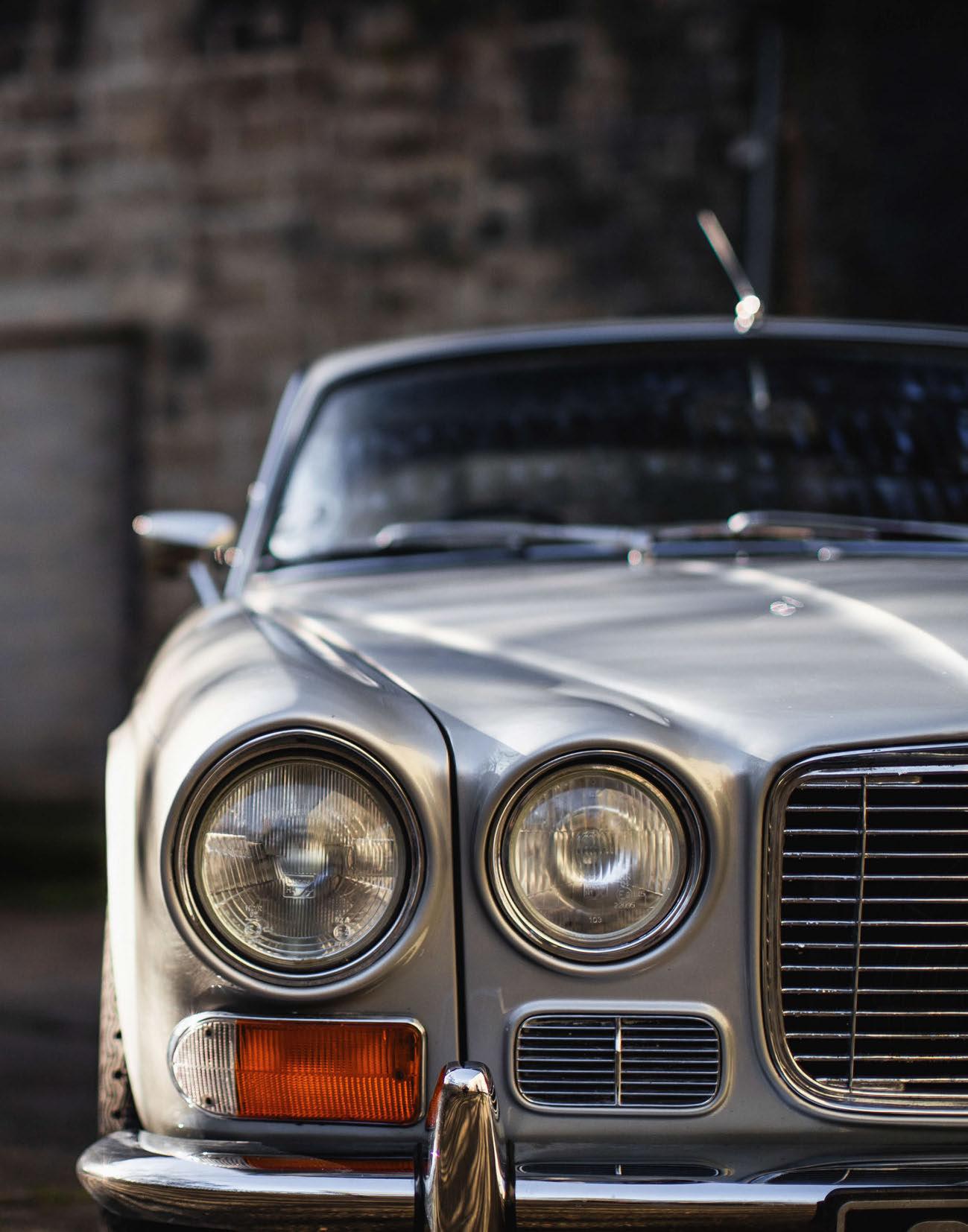






1957 Porsche Carrera GT
Estimate: $900,000 - $1,200,000
Campaigned by 'The Flying Dentist,' SCCA Champion Dr. Dick Thompson, this 1957 Porsche 356 A Carrera GT claimed a class win as a factory entry at Sebring in 1958 at the hands of “der Rennbaron” Huschke Von Hanstein and longtime factory racer Herbert Linge. Factory-built for competition with alloy panels and lightweight appointments, it has since triumphed again on the concours lawn with class wins at The Amelia, Greenwich, and beyond.


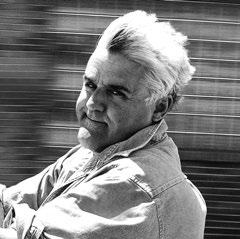
Taking an archaeological approach to hot-rod restoration
The great thing about automotive archaeology, especially when it concerns hot rodding, is the fact that you only have to go back about 100 years. If you’re real lucky, like me, you’ve been able to meet many of these pioneers, men like Ed Win eld, Alex Xydias and Ed Iskenderian, to name just a few.
One you may not know is Al ‘Red’ Barnes, so-named because of his red hair. As he got older, his hair turned silver and his son later referred to him as Al ‘Chrome Reverse’ Barnes. He was born on 10 August 1925 in Los Angeles to English parents, who’d emigrated here a er World War One.
When the next war broke out, he joined the Army Air Corps and wound up in Guam as a diesel mechanic. When the pilots returned from their missions, Al o ered to hop up their engines and that’s where his reputation was born. He held a number of records at the Dry Lakes from 1947 to 1951. I’m told his daily driver, a 1929 Ford, won the rst LA Autorama car show.
Barnes’ son Greg contacted me about a car his dad had designed and built to take on the Pikes Peak hill climb. e original body was glass bre and had been taken o an Austin-Healey roadster, stretched a bit to t the new wheelbase. at body’s been lost to history, which is OK by me because the chassis and the mechanical aspects of this machine are what’s really amazing.
Hot rodding today can be very expensive. Many of the winning vehicles you see on the covers of various magazines o en have had hundreds of thousands of dollars invested in them. Some in the millions. Not so in the early days of hot rodding, when young men a er the war searched junkyards looking for surplus aircra parts and Gemmer steering boxes.
Al Barnes was such a man. His dream was to build a car for road-racing as well as for climbing Pikes Peak, and to have Jerry Unser drive it. His concept was basically the same as today: very lightweight –approximately 1800lb – with 50:50 weight distribution and 500 horsepower.
Remember, this was around 1952 with li le or no money, built in his garage with many parts gathered from the aviation salvage yards and what few race car parts were manufactured at the time. He acquired a Halibrand quick-change rear end, which he adapted
to a Lasalle three-speed gearbox, making it a transaxle. Rear suspension was made from Morris Minor torsion bars in a transverse con guration. e front end is made-up of hand-tapered transverse leaf springs and the heat-formed front axle features disc brakes. e rear inboard disc brakes were adapted from aircra use. Nobody else appeared to be doing that at the time.
e generator is driven by a belt from a pulley, machined to t the rear of the drivesha . Wooden pa erns were sculpted for the aluminium casting of the bellhousing, the front timing cover, water pumps and valve covers. We still have some of those pa erns that he used.
e engine is based on a 354ci Cadillac block and heads with 12.5:1 compression ratio, a Howards camsha and eight 50mm Dell’Orto carbs. e strings running through the thro le linkage look like something I could nd on a Stradivarius violin. Something I had never heard of, called the Joe Panic Vertex distributor, was utilised.
Al Barnes made practically the whole car himself, including the radiator. e gauges seem to be aircra -sourced as well. e whole assembly appears to be meticulously drilled for lightness. When I showed this car to engineers, be they from General Motors or McLaren, they pointed out things to me that I’d missed the rst time.
I recently found Al Barnes on the cover of the January 1951 issue of Hot Rod magazine. ere he was, standing next to his everyday driver, that 1929 Ford with independent suspension. Was anybody else doing that in 1950? It also had an engine-turned rewall and chrome headers.
I’ve looked at many of these old magazines over the years and suddenly realised that I had seen his name dozens of times. And so I was genuinely honoured when Greg Barnes asked me to be the curator of this car. We’ve begun a very sympathetic restoration, by which I mean we’re keeping everything exactly as it was. No painting the frame, just making everything functional. Right now we’re making an aluminium body for the car that looks period-correct.
My goal is to get it into Octane magazine and you guys can tell me what you think.
Jay was talking with Jeremy Hart.
‘HOT RODDING TODAY CAN BE VERY EXPENSIVE. NOT SO IN THE EARLY DAYS’
Explore the world from the driving seat, creating unforgettable adventures, incredible drives, fabulous hotels combined with great camaraderie, fun and lifelong memories.
GUIDED SELF-DRIVE ADVENTURES
NAMIBIA SOUTH AFRICA USA JAPAN
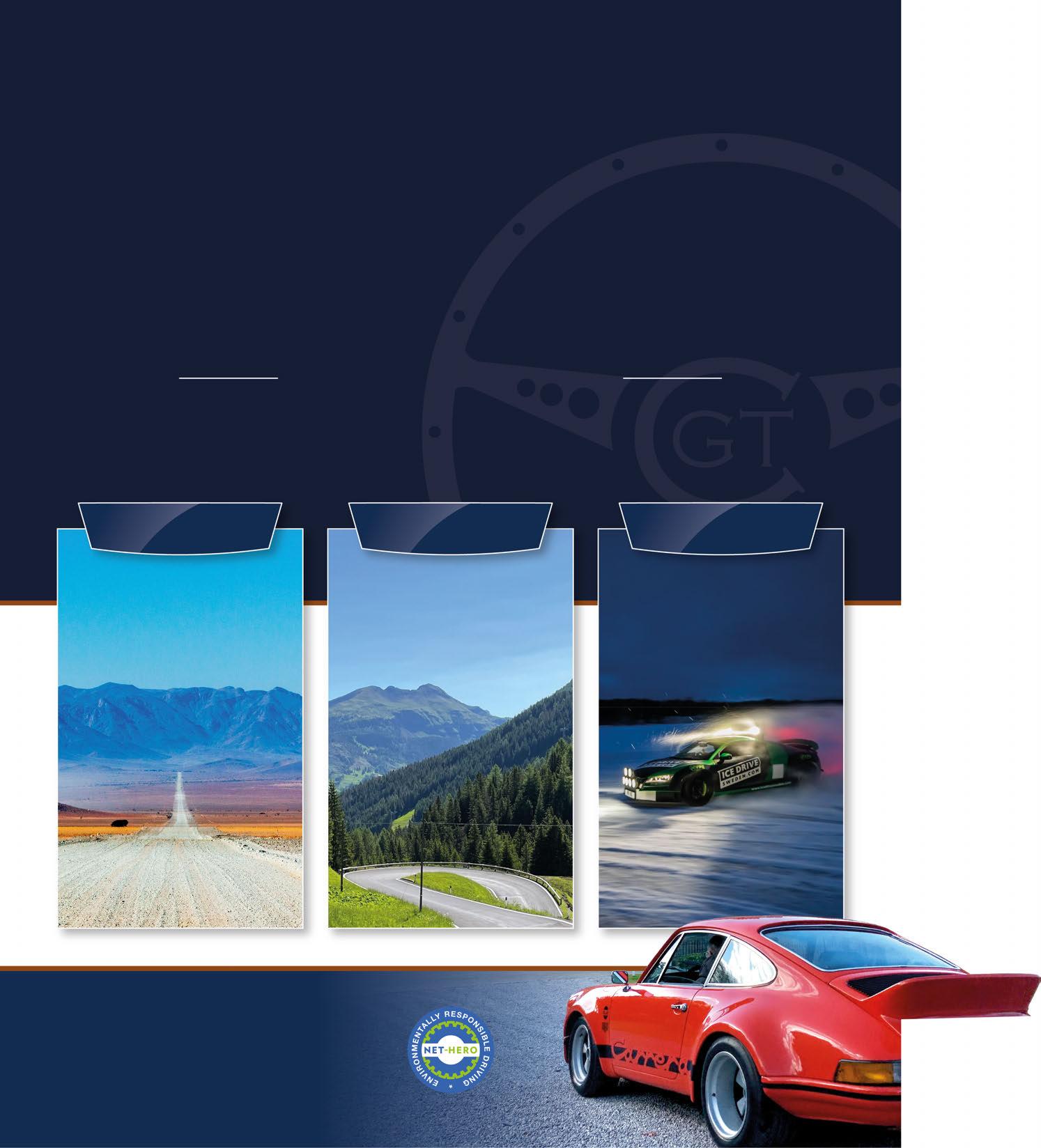
CLASSIC & SUPER CAR TOURS
MONACO HISTORIQUE ANGOULEME
LE MANS CLASSIC
EUROPEAN TOURS
UK TOURS
ICE DRIVING EXPERIENCE WITH ICE DRIVE SWEDEN




Has racing tech moved on for the be er?
Irecently spent a very enjoyable three or four hours with Gregor Fisken at his amazing showroom in London. I was ostensibly there to chat about a historically signi cant Porsche 962 that I raced in period. While I was there, I also wedged myself into a recent LMP2 car, which was quite an e ort. Talk about being tailored to suit a particular driver. I am not generously proportioned, but it was a tight t and no mistake. It was also fun having a go at ‘driving’ the car on a simulator, although I am not sure that I covered myself in glory. ese set-ups have come on a long way, but I always maintain that they can teach you only so much.
I say that, but Max Verstappen made a big thing of how many hours he spent on a sim prior to his recent – and well-publicised – outing at the Nürburgring in a Ferrari 296 GT. He maintained that he knew the track backwards before his run in the real world, so what do I know? He apparently dipped below the lap record for a GT3 car, too, which raised a few eyebrows (and got some backs up) among the GT regulars. It came as no surprise to me that the greatest driver of his generation excelled, and I was pleased to see a current F1 star driving something other than a single-seater, even if it was only for fun.
I am constantly amazed at how far technology has evolved since I was an active driver, whether it’s in relation to cars or preparations out of the cockpit. Cars such as the Porsche 962, for example, were perhaps not cu ing-edge to begin with, just bloody good. e thing is, the same basic design remained in use for years.
at wasn’t unusual. e same was true of Formula 1 cars. I remember driving Emerson Fi ipaldi’s Lotus 72 at Kyalami several years ago. I used to look on enviously way back when because it was so good, and it really was a fantastic bit of kit, but it raced for half a decade! at is unthinkable now, and with good reason.
Times change, as do regulations. You look at a Formula 1 racer from when I competed and they look so small and so basic in comparison with today’s machines. e modern Grand Prix car is vast, and there is more tech in its steering wheel functions than we had in our entire car, but does it make the racing be er? I am not entirely convinced, but then I suppose each generation of driver thinks their era
was the best. at said, there are times when I occasionally drive a car from a period before I was even born and think about how wonderful it must have been to have campaigned them back in the day. ey bring out the romantic in me.
I enjoyed reading the piece on the Buga i Type 35B in issue 263 of Octane. It brought memories of driving Hamish Mo at’s car at Lord Bamford’s private test-track back in the mid-1980s. I approached it with some trepidation, and it took some ge ing used to, but it was worth the e ort.
I was amazed at how responsive it was. e Buga i was so precise, so deliciously delicate in its responses, that I couldn’t believe that it was 60 years old. I haven’t driven one since, but it’s amazing how I remember that car now while others have long since faded from memory, including some I raced. It’s telling that cars like that are remembered still, but can anyone recall a single model designation for a recent F1 car?
Changing tack, I cannot let this opportunity pass without saying goodbye to my dear friend Jochen Mass, who died in May. It seems that this column is in danger of turning into a series of obituaries, but please bear with me. Jochen was such a special person and our personal and professional lives were interwoven for more than half a century.
I raced against him in Touring Cars in the early 1970s and he was phenomenally good. We were also thrown together in single-seaters when we drove in F1 for Team Surtees, which was something of a demoralising experience for both of us. Nevertheless, we became rm friends.
We went on to spend a lot of time together in sports cars, and Jochen had a great run with Porsche and Mercedes. All of that aside, he was just a lovely bloke. It’s so easy to think only the good about people once they’re gone, but I struggle to recall anything bad about him. Really, I do. He was a ballsy guy, up for anything, and one of life’s doers. I liked him a lot and his send-o in Grasse was very sad but also a celebration of his life.
I was there alongside Jacky Ickx, Hans-Joachim Stuck, François Mazet and others from the world of motor racing; we all remembered him with such deep a ection. He was a bloody good driver but an even be er man. Try as I might, I cannot think of a be er way of saying I will miss him.
‘CAN ANYONE RECALL A SINGLE MODEL DESIGNATION FOR A RECENT F1 CAR?’

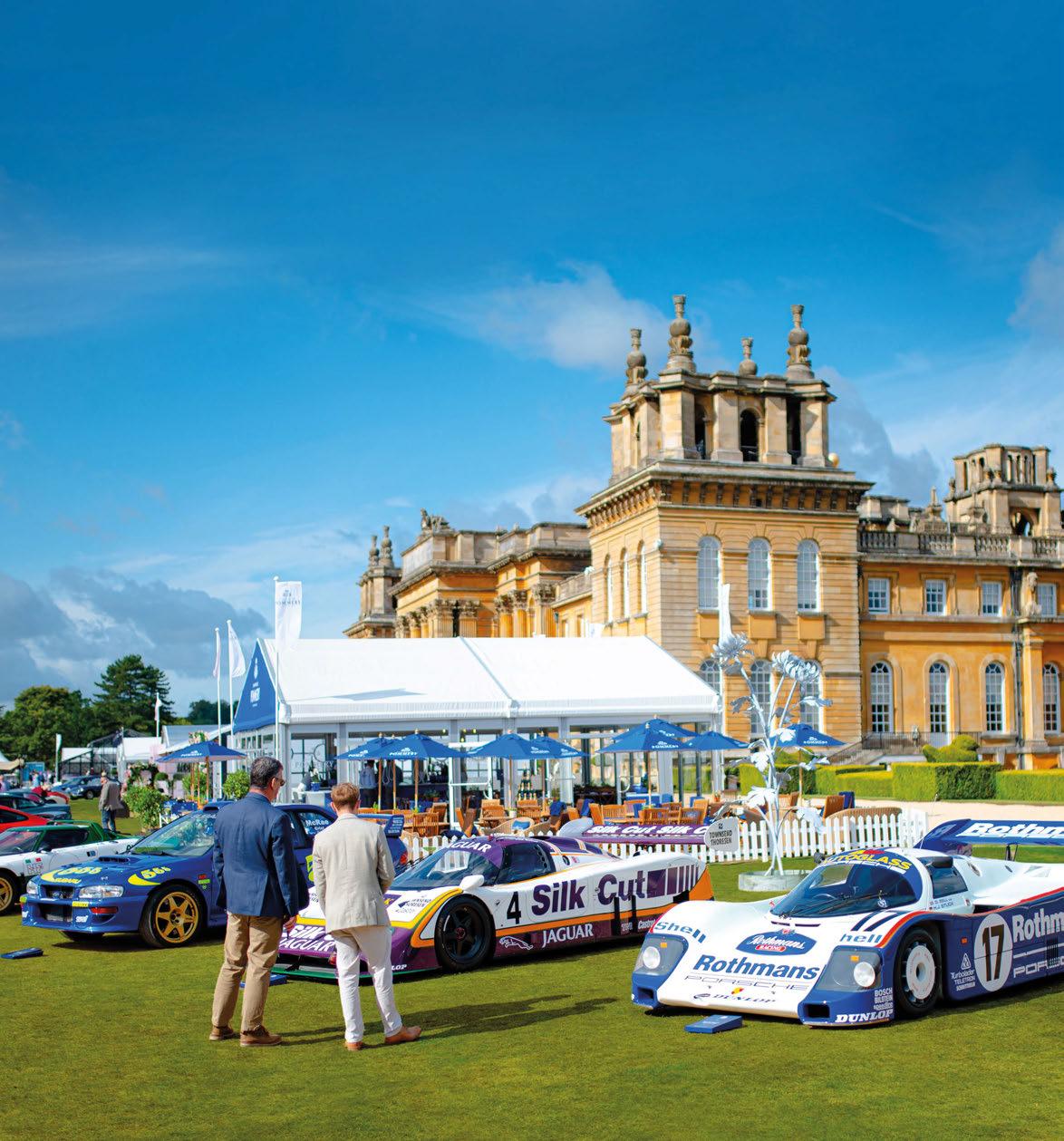
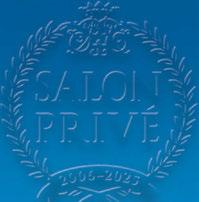




BLENHEIM PALACE, OXFORDSHIRE 27–31 AUGUST


Meeting
My misadventures in the world of design led to meeting Chuck Jordan, who died in 2010 and was responsible for the ’59 Cadillac, the ultimate in Detroit baroque. I also know Jony Ive, born 1967, designer of Apple’s best and most austere products. at nicely bookends the aesthetic possibilities of the last half-century or so. And somewhere in between was the Porsche 911.
In the mid-1980s I was doing everything I could to talk-up the Design Museum, which Terence Conran and I were planning. And if I was going to talk-up anyone, it was 911 designer Ferdinand-Alexander Porsche, always known as ‘Butzi’, which, hilariously, means ‘sweetie’ and is derived from the German putzig, which means ‘cute’. But what isn’t in a name?
I went to see him in Zell-am-See, the lakeside resort not far from Salzburg where Porsche maintains an away-day hostel for sta , with an atmosphere inviting imaginative comparison with a Hitler Youth retreat: order, a zealous approach to branding and a pervasive aroma of cooking.
I had driven there because it seemed the thing to do. In 1984 it was. And I drove my Volkswagen Scirocco because that seemed appropriate: a gussied-up Golf, in its roundabout way a successor to the Porsche Typ 60 KdF-wagen. e Beetle.
Ferdinand-Alexander was Professor Porsche’s grandson. He was not an engineer but the sort of designer who, like Chuck Jordan and Jony Ive, excels at shape-making. is skill was not recognised at the design college that expelled him for lack of promise. He joined the family rm and made a clay model of Typ 901, the original designation of what, for legal reasons, became the 911, the ine able Neunelfer.
Zell itself was a town of high fashion. e von Trapps holidayed there. e Porsche family runs the airport. It is delightful, in that formal Austrian way: menus tell you how many grammes of bu er are being served and lavatories have a ledge that o ers a solemn opportunity to inspect what has been passed. Yet Ferdinand’s grandson was not a happy man. He had established his independent business Porsche Design Studio in 1972. His mission? To apply shape-making genius to ‘luxury’ and ‘lifestyle’ products, perhaps not concepts the ur-Professor Dr Porsche would have admired, or even recognised.
A black Porsche Design chronograph appeared. Butzi had designed only the case and the movement was made by Valjoux, but so too with the 911. He designed the case of the car, but its movement, the engine, was designed by Hans Mezger. en there were the Porsche Design sunglasses launched in 1978. Model P8478 was o en worn by Yoko Ono. If sunglasses seem trivial in a family history that includes tanks and buzz bombs, then that might say something about what ‘design’ has become. I bought my rst pair of Butzi’s sunnies at the shop in New York’s Museum of Modern Art. e frames were highly engineered and available in brightwork nishes or, as I recall, white and other coloured enamels. A stand-out feature was a neat over-centre catch that allowed the lenses to be popped-out and replaced by others with colourways that might change, possibly enhance, the wearer’s mood.
Of course, I wanted to talk to Butzi about his car, not his lifestyle merch, but he was preoccupied that day in Zell. A somewhat surly individual with a signature circle beard, he was worrying a pair of the sunnies. ere were frowns and breath was drawn in.
ey were tried on and o . ey were ddled with, evidently to no real satisfaction. On the Neunelfer, he was silent. I suppose he had said it all before.
‘Butzi,’ I found myself thinking, ‘in your design of this famous car’s body you have reached back to the stream of rationality in German thought that originated with Leibniz. You have distilled into one superlative shape the spirit of the combustion engines of Professor O o, the aerodynamic theories of Komenda and Kamm, as well as your grandfather’s peerless engineering principles. Your 911 shape is both surprising and inevitable. at’s to say, it’s a genuine classic. You did this and now you are doing $300 shades?’
Of course, I never said that.
Did I feel in contact with a unique genius? I am not sure I did. Instead, I felt like Norman Lewis a er his interview with Hemingway: he told me nothing, but therefore told me everything.
I drove back to London in my white Volkswagen with blue plaid upholstery, not a Porsche but near enough. And I had met a real Porsche in any case. Butzi died in 2012. And, looking at today’s fussy, complicated and oversized cars, my feeling is that something of the spirit of Porsche died with him.
‘SUNGLASSES SEEM TRIVIAL IN A FAMILY HISTORY THAT INCLUDES TANKS AND BUZZ BOMBS’


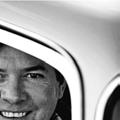

The joys of driving the MGB
‘O
h no, not an MGB!’ at was the opening line in my editorial intro for Octane 71 in 2009, when we put a red MGB on the cover with the coverline stating: ‘MGB – Boring? No, brilliant!’ Octane had been established for six years by then, renowned internationally for featuring the best classic and performance cars from around the world, so sticking a ubiquitous ’B on the cover entailed a good amount of editorial argy-bargy as the ed team was split on the wisdom of pu ing such an ‘ordinary’ classic on the front. But we pulled the trigger and commi ed to ‘publish and be damned’. ank goodness the issue turned out to be one of our top sellers, which I knew would be the case all along. e issue before the MGB cover was emblazoned with a one-o Lamborghini Miura Spider, and the issue a er was our ‘Cool Issue’, featuring a Jaguar XKSS and Steve McQueen. At the time, snobbery dictated that the ‘two-seater Morris Oxford’ was rather below the salt, a ridiculous notion. I scribbled in my editorial that I’d enjoyed being overtaken in my hot rod Porsche 356 by a fast ’n’ smooth MGB on the tough Tour Auto some years ago. Didn’t really mind because the snappy ’B was being driven by Sir Stirling with Lady Susie as his navigator. What annoyed me was how e ortlessly the pesky MG put my Porsche down. And since then, I have quietly enjoyed MGBs of all persuasions – the epitome of an English sports car.
In this month’s Buying Guide, we look at the o en maligned MG RV8. When I rst drove one, I thought it was rather nice. I liked its smoothed-o looks and leather interior, as did the Japanese – most Rs went to them as they were having a bit of a British love-in at the time, never mind the fact that the R was woefully out of date. In 1992, you could have had a TVR Gri th or Marcos Mantara for just a grand or two more than the MG’s £26,000 price tag.
e R was an anachronism but at least it was a real MG rather than some re-badged front-wheel-drive saloon, and it did the job of presenting a sporting MG until the arrival of the newfangled mid-engined MGF in ’95. British Motor Heritage re-stamped shells, but when it came to screwing the ‘new’ ’B together it ended up with just 5% of parts from the original (front headlamps came courtesy of Porsche).
e car was developed in only two years and went on to sell 1983 examples.
Yet the MG RV8 is just such a quintessentially British car that it doesn’t ma er how outdated it was upon arrival. Today it makes a comfortable so -top cruiser. e V8 hustles it along to 60mph from rest in around seven seconds and there’s no way you’d want to test its 135mph top speed. No, just snick it in top gear and enjoy its habitat, British country lanes, where it is petite enough to be punted along at a fair lick, the torquey V8 doing the lugging with equanimity. e engine emits that creamily lazy burble and, indeed, if you do poke it, the simple live rear axle on cart springs will allow you to get the rear end out at modest speeds, which is always amusing. With air-conditioning ed to Japanese-market cars, many now back in the UK, and the rare power steering (easily retro- ed), the RV8 o ers an unusual GT alternative to a Merc SL.
With over half a million produced from 1962 to 1980, the original MGB was one of the most successful British sports cars ever. Small and light thanks to its monocoque chassis and lusty B-series engine walloping out 95bhp, a ’B is always a joy to drive, especially with the optional overdrive gearbox. Not as melli uous as the V8, the 1798cc B-series four-pot o ers a ‘fruitier’ rasp, especially if it has been gently tweaked to around 115bhp, which is possible these days on the original SU carbs.
One of the best drives of my life was in an MGB. James Wood (who, incidentally, brings you some Invicta action, starting on page 82) invited me to join him racing an FIA MGB Roadster at Donington Park circuit a while ago. Pale blue with a white hardtop, the ’B was correctly fe led and good to go. Donington is a fabulous track, especially in so benign a car. Even I could simply throw it into all the corners knowing it would come out the other side, mostly on four wheels, pointing roughly in the right direction. Initially I was an embarrassing ten seconds behind James as I learned what to do, but with his coaching, and the ’B’s easy nature, I got the gap down to four seconds, in one of the most fun drives of my life. We then drove it together back into busy London. So, a boring MGB? I’d have one in a heartbeat, a most enjoyable traditional classic car that’s perfect for a quick canter along real roads. Fast enough to be fun, cool enough to be chilled.
‘I’VE ENJOYED MGBS OF ALL PERSUASIONS – THE EPITOME OF AN ENGLISH SPORTS CAR’

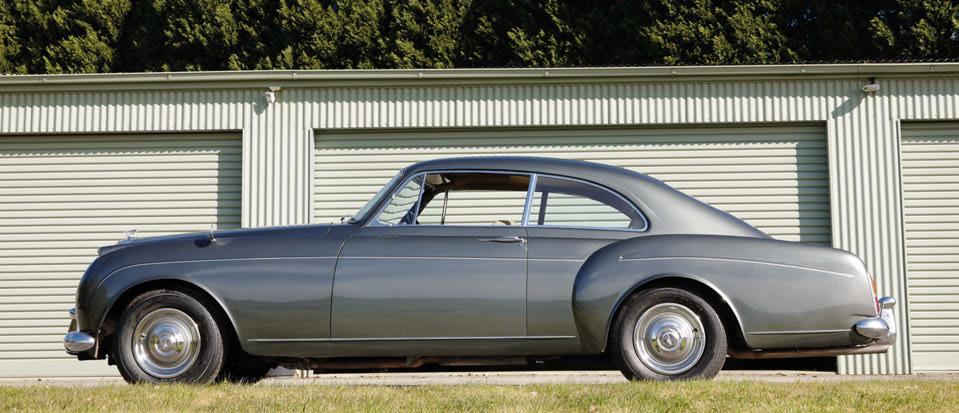
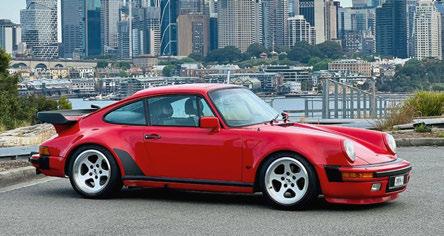
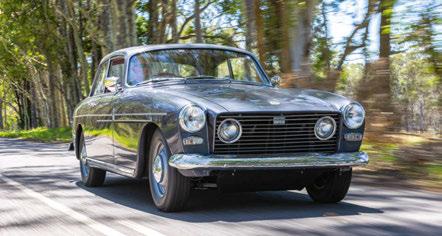



Letter of the month

I ENJOYED the article about the famous Alan Mann Escort, X00 349F, in Octane 265. This car has a particular resonance with me, as it was racing when I was about 14. I was so impressed that I managed to paste a large newsprint image into a scrapbook that I was compiling at the time, probably from an advert in the Daily Mirror or the Daily Express
It was seeing the Escort that really encouraged me to start a career in car design, working for Ford. I finally realised that ambition in 1979, when I joined the Dunton studio in Essex.
A member of the design team, François Talou, retired a few years later and gave me some interesting old black-and-white images from his time there. The pictures you see here appear to have been taken in the studio, to judge from the curtains and turntable. The studio opened in 1967, before the car debuted on the track and was launched to the public.
My guess is that the paint scheme was designed and executed in the studio paintshop, with only
some minor revisions subsequently carried out for the track. It’s such an evocative scheme, but what a shame that there’s no colour in the picture! Images were always taken on black-and-white film in the studio, because it was cheaper and quicker to process. Hard to believe now.
Colour was available to us by about 1983, but only by special request and needing a sign-off from the chief designer. Martin Peach, Warwickshire
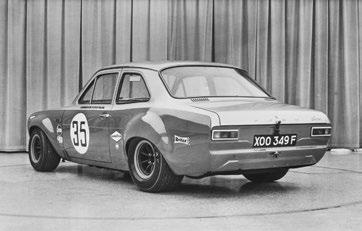
The R1 is perfectly proportioned, beautifully made and deceptively powerful. It’s the perfect bedroom, kitchen or workshop radio.
If you ever did a survey to find out which pages your readers turn to first when they receive their magazine, my answer would be the columns of Jay Leno and Robert Coucher.
Jay and I have something in common. We were born in the same year and his family took him home in a 1949 Plymouth, whereas my homewards transport was a 1949 Dodge – the only difference being that the Dodge had a different grille and a heavier front bumper. My old man paid $5 extra for this privilege.
One of Jay’s columns that stands out is about his Chrysler Turbine [below] and how he tracked down the original engineers to make a repair that only they could do. I was lucky enough to see and hear one at our student auto show at Northwood University, Michigan.
Now living in Cape Town, I enjoy Robert’s memories of his hometown, and in particular our local Crankhandle Club, of which I’m proud to be a member.
Ian Dove, Cape Town, South Africa
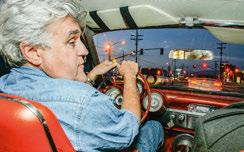
I can fully understand the editor having had a low point when he heard about the death of Jochen Mass in early May [Octane 265, and pictured overleaf].
I have on occasion passed the time of day with Jochen in interesting places – Goodwood, the Algarve Classic, and the Scuderia del Portello gathering


at the Alfa Romeo Museum, where he was in the company of Maria Teresa di Filippis.
However, all these pale in comparison with the first day of the Mille Miglia in 2022. I was on holiday in Salo on Lake Garda where, at a roundabout ‘guarded’ by two marshals, the competitors turned left onto the lake-front to take them through the streets of the old town. A Mercedes cabriolet, possibly a 280SE, made an attempt to follow them but was rebuffed. With a large grin on his face, the driver made another pass, but failed again. Jochen Mass, still grinning, accepted his fate and took the alternative route.
Typical of that ‘utter gent’.
Peter Whitman, Lancashire
Draining life of its colour
Stephen Bayley’s comments in Octane 263 about the Stellantis group reminded me of Alfa Romeo’s history and how it used to have one of the most colourful marque logos of all time.
Sliding behind the wheel of a new model, I found the logo is now rendered in black and white!
I bought a Subaru. At least its logo is in colour.
Bruce Thom, Toronto, Canada
Letter from America
I’m a Detroiter, born and raised. A car-crazy kid with engineering
education at the GM academy and, except for a short stay with Uncle Sam, I worked 50 years in the world car industry and am currently building a 1937 Chevy street rod with lots of grunt!
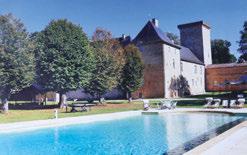
I became addicted to Octane after my late wife travelled to the UK and asked what kind of souvenir I would like; I responded ‘Something Jaguar’. She brought me Octane 101! I now anxiously await its arrival every month and read it cover to cover, usually several times, and take back issues off the shelf and reread those while waiting. It’s more than Octane to me…it’s oxygen!
I recently saw a piece in Octane 258 about a beautiful estate in France [above] where you can store and gleefully use your classic on beautiful back country roads during a wonderful stay. It occurred to me what a great thing it would be if the prime movers at Octane would gather up some vintage rides and spend a few days driving those beautiful creations at a place like that and then, over
Friends reunited
What a surprise that my letter was chosen as Letter of the Month in Octane 265. A bonus was that I had a phone call from a friend with whom I had last spoken in 2003, when we went to Le Mans together.
We had subsequently lost touch but he managed to find my business number and call me.
Once again my car, the Corvette ZR1, has come through with memories and friendships.
Alan Lewis, Oxfordshire
See Emily play
Recently I noticed the water pump on my Alvis was leaking and decided to overhaul it before the summer starts in earnest.
great food and drink during the evenings, share their thoughts with each other… and us!
There could perhaps be other invitees: notables from the worlds of racing, engineering and design. The effort could even spawn a series of articles over many issues. It would be wonderful, it would be Octane…it would be oxygen! Keep it flowing, dear people.
Gerry Bryce, Detroit, USA
Literally a winner
I especially enjoyed reading your article on the Silver Arrow Mercedes in Octane 260. The close-up of the tyre mounted on a wire wheel [below] caught my eye, with the word ‘Renner’ moulded into the sidewall. My surname is Renner, and a few centuries ago my family transitioned from Germany to the USA. Is there a link?
Howard Renner, Cincinnati, USA
The Mercedes was fitted with Continental Renner racing tyres – ‘Renner’ being the German word for ‘racer’ or ‘winner’. GW
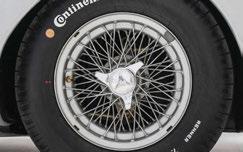
As usual, I needed a spare set of hands to remove the radiator. Alas, I only had Aimee the dog as company and, while she is keen as mustard, she is unable to operate spanners with her paws.
Unexpectedly, my daughter Emily [below] proved her worth, in-between her GCSE revision, by stepping in and becoming my morning’s apprentice. Not only did she prove to be very helpful, she also asked if, once she has learned to drive, she could perhaps have a go in it. I was pleasantly surprised, as normally I would have to bribe her with money for her valuable time!
You never know: maybe this enthusiasm could be the start of the next generation.
Jonathan Davies, Surrey
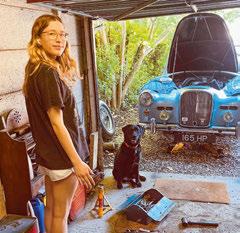
Send your letters to letters@octane-magazine.com
Please include your name, address and a daytime telephone number. Letters may be edited for clarity. Views expressed are not necessarily those of Octane.
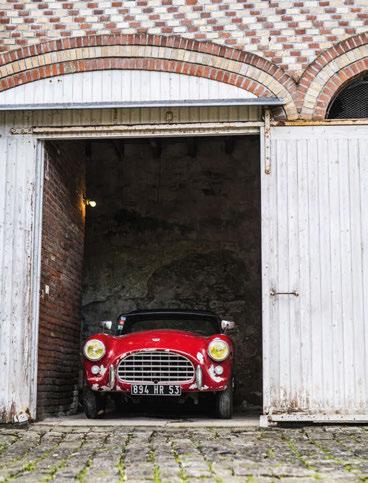
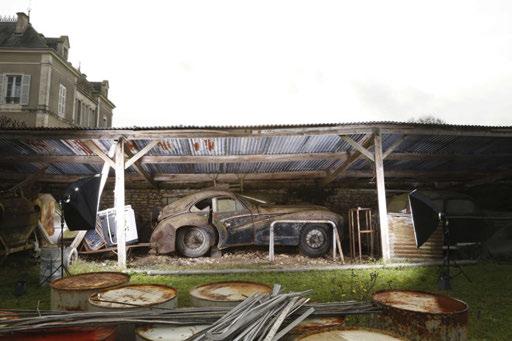
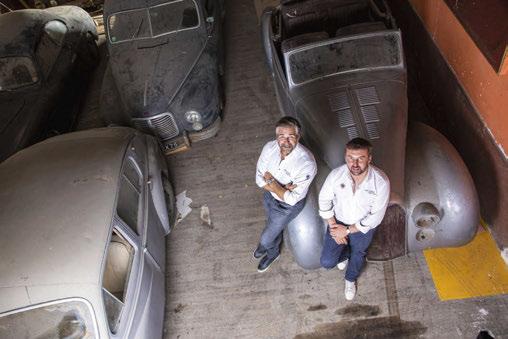




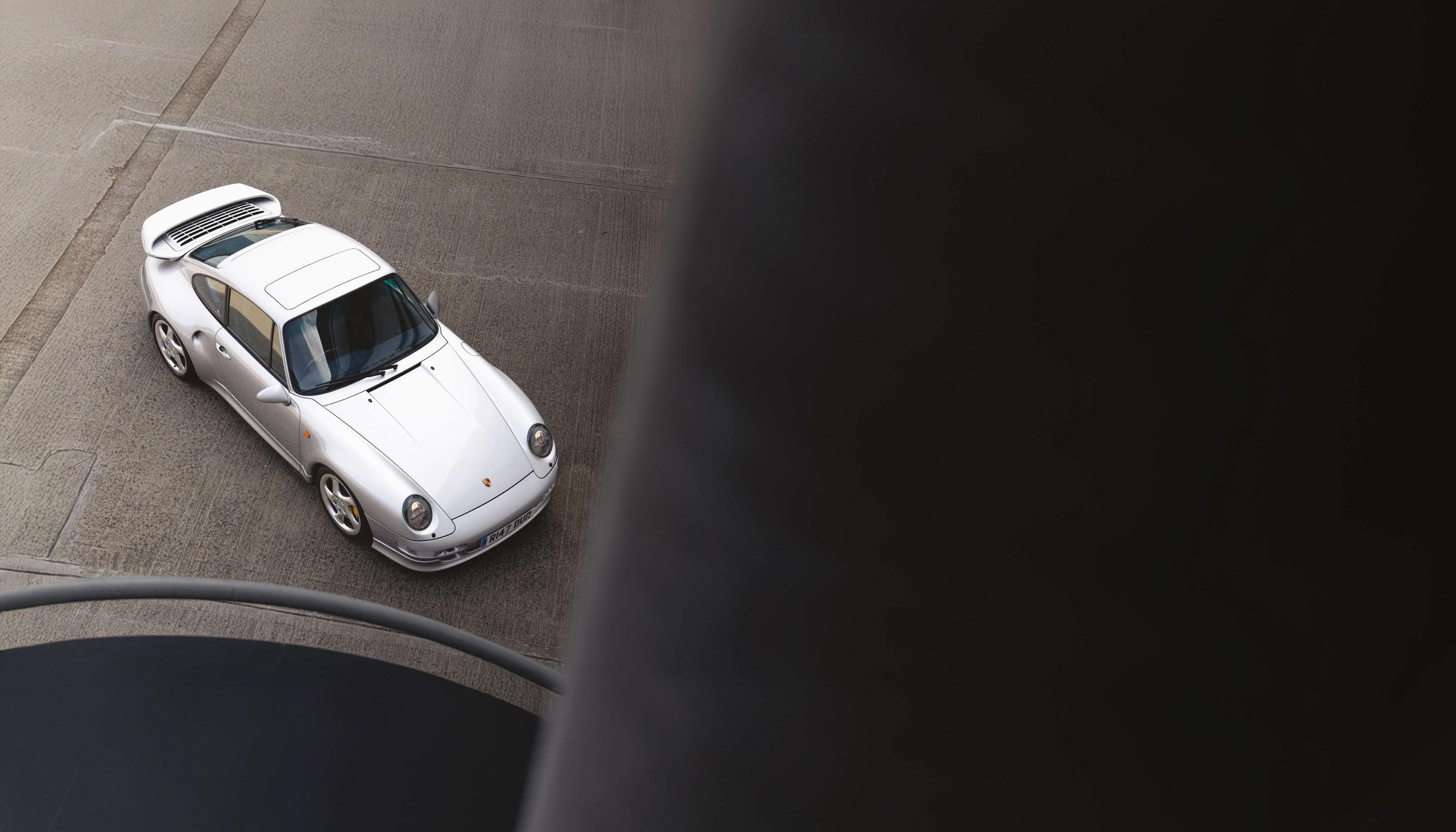


Barn-finds












































Some of the world’s rarest and most valuable cars have been uncovered in the unlikeliest places over the years. ese are the greatest barn-finds
Words John Mayhead
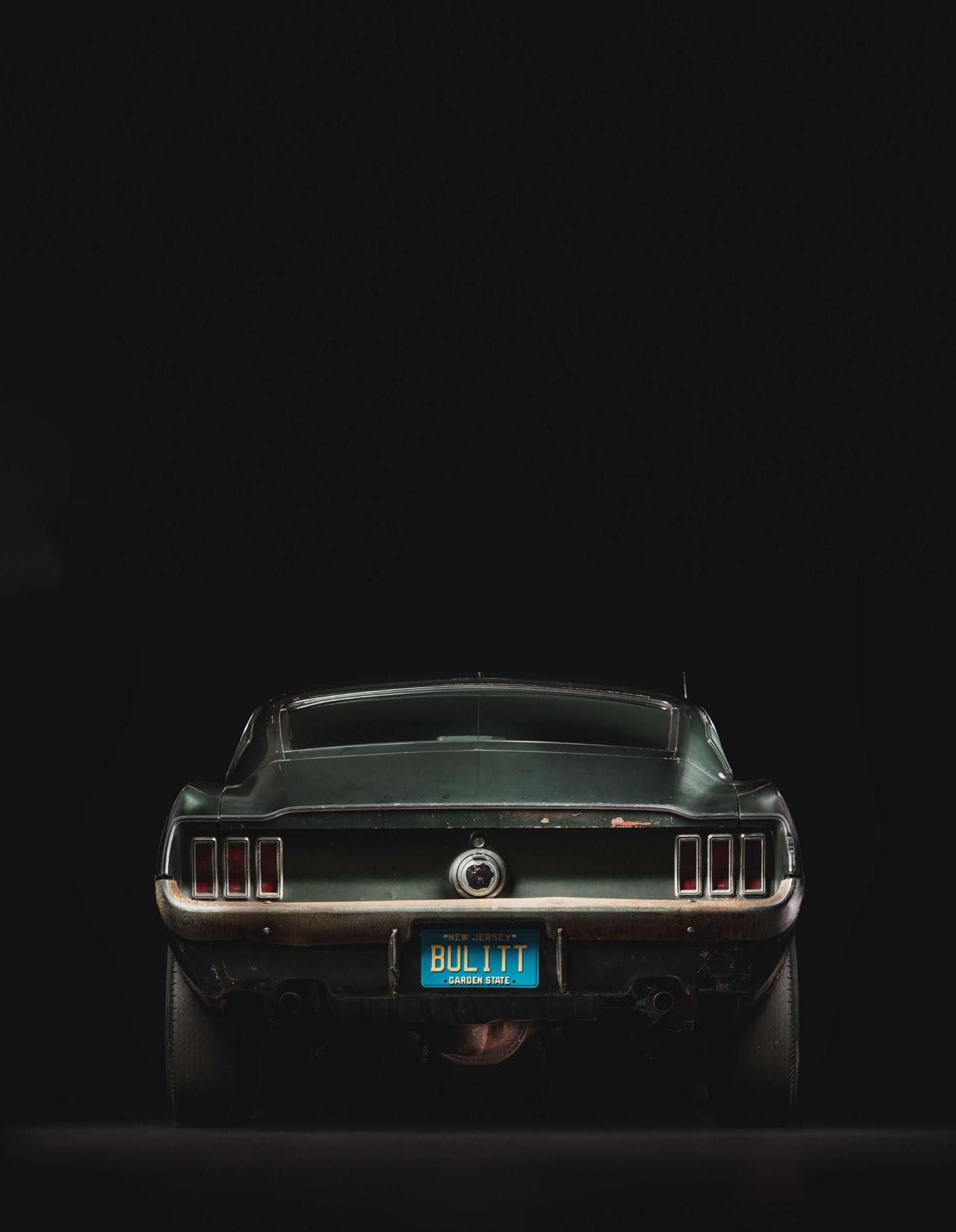
During four decades of classic car enthusiasm, I’ve personally encountered only three real examples of a barn find: I recall a straw-filled barn (literally) at a Cornish farm we camped on as a child, full of vintage cars; an Austin Seven dragged from a neighbour’s tumbledown garage; and, about 15 years ago, an Alfa 2600 Sprint that had been serviced in around 1968 after 5000 miles, then locked up in a coach-house in Brighton until I witnessed it seeing the light of day again. To experience those doors opening for the very first time in over 40 years was extraordinary; the paper footwell protectors were still untouched and the service tag was swinging from the mirror. It felt magical, as if I had stepped back in time.
But those finds pale when compared to the extraordinary stories of the world’s most glamorous and valuable cars, once lost and later recovered. Some read like movie scripts, led by individual persuasion and persistence that has sometimes bordered on obsession, the resultant discoveries once again bathed in celebrity light and often sold at a hefty premium.
This is automotive non-fiction storytelling at its finest: the hunt for the motoring pot of gold at the end of the rainbow, a reminder that real treasure was – and is – out there for the taking. Here, then, is Octane’s list of the greatest tales of automotive rediscovery.
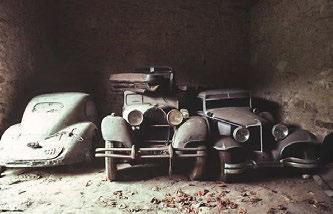
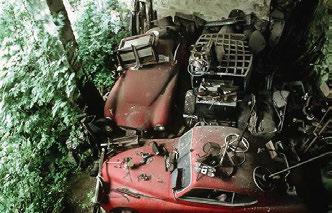
When German photographer Herbert Hesselmann published his photographs of Michael Dovaz’s collection of 58 classic cars in 1983, neither he nor Dovaz knew the hornets’ nest they were stirring. Dovaz, a Swiss wine critic and food writer, had been collecting old cars since the 1950s, parking them on streets all over Paris where he lived. In 1964, he purchased a rambling farm estate at Villemaréchal just south of the capital and slowly transported his collection down there. He lacked the will or the money to restore them; they were simply stored.
Hesselmann captured photographs of 58 cars. They included nine Bugattis, three Rolls-Royces, two Ferraris, a Ghia-bodied Jowett Jupiter coupé
and a Siata Balbo coupé. More notable inclusions were a 1949 Alfa Romeo 6C Competizione, a 1932 Bugatti Type 49 with Faux Cabriolet body by Gangloff, and a Type 50, one of the 1931 Le Mans team cars. Though not named, Villemaréchal was soon identified – and thefts were attempted. Dovaz faced criticism for not ‘properly’ maintaining the cars, so he moved them again to the Château de Folmont, east of Bordeaux. Prompted in 1987 by a new record £5.5m sale in London of an ex-Briggs Cunningham Bugatti Type 41 Royale, he sold 40 of his cars. Today, 15 are still displayed in their unrestored state at the Château de Sanxet near Bergerac.
Bob Kiernan from Masion, New Jersey, had always wanted a fastback Mustang, so when he read the ad in the October 1974 edition of Road & Track and noted the local area code, he went to take a look. The car, the seller told him, had been driven by Steve McQueen in the movie Bullitt and even came with a letter from Ford confirming it had been sold new to McQueen’s Solar Productions. Bob purchased the car for $6000 and he and his wife drove it regularly for the next few years.
In 1977 he received a letter from McQueen offering to buy back the car, even including the offer of another Highland Green ’68 fastback in the deal. Bob refused and, even when the clutch gave out in 1980 and the car was retired to his garage, he was not minded to sell. Various house moves followed, the car remaining with him until 2001; newly retired and living at a ranch near Nashville, Bob decided that he and his son Sean should put the car back on the road. They started the process but life got in the way. Bob died in 2014 and Sean was left with the car as his dad’s legacy. His answer was to link up with Ken Horstmann, a moviemaker who had coincidentally written a script about the discovery of the Bullitt Mustang. Horstmann suggested they show the car to the public to raise publicity and funds for the film, but recommended it was independently verified first by Ford expert Kevin Marti. Once it had been confirmed as the real deal, the story was reported by Larry Webster at Hagerty, and the motoring world went mad. In January 2020, the car was sold by Mecum in Kissimmee, Florida, for $3.74m (then £2.86m), some 16,000% above the value of a standard ’68 fastback in similar condition.
Bugatti Type 57s are, it seems, like buses: wait ages for one then two arrive at once. In 2007, a 1938 Type 57C with Atalante body was displayed in the Postwar Preservation class at Pebble Beach following 45 years parked in a garage in the New York suburbs. It had originally been displayed at the 1939 New York World’s Fair and raced in the late 1940s. Then, in 2008, a 1937 Type 57S first purchased by BRDC president Earl Howe emerged from the garage of a recently deceased Newcastle doctor, Harold Carr, where it had sat since the early 1960s. The car was sold by Bonhams at Rétromobile in 2009 for €3.42m.
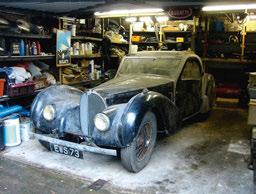
Kiernan’s car wasn’t the only Mustang in Bullitt. A second, with suspension and chassis modifications, stripped and fitted with interior lights and cameras, was used as a stunt car. It was also presumed destroyed but emerged in 2017 in a very dusty backyard in Baja, Mexico, where the ’shell had sat uncovered for decades. A local man had bought the wreck and sent it to a bodyshop to be built into a replica of ‘Eleanor’, the Shelby GT500 from Gone in 60 Seconds, but when the VIN was run through a database of early Mustangs, its identity, later confirmed by Kevin Marti, was revealed as the Bullitt jump car.


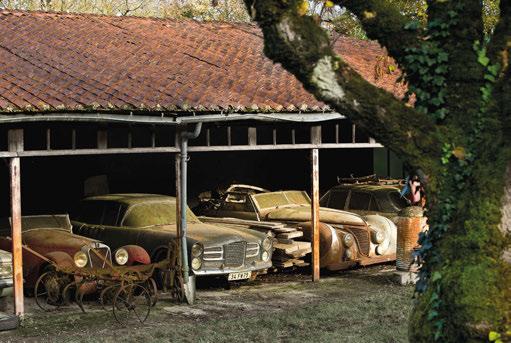



Château Gaillard, in Échiré, western France, was the site of one of the most extraordinary automotive discoveries of recent times. In 2014, the family of Jacques Baillon approached Matthieu Lamoure of auctioneers Artcurial to sell his collection of classic cars following Baillon’s death the previous year. Lamoure commissioned photographer Rémi Dargegen to record the vehicles in situ. In his book, Baillon Collection, Dargegen wrote: ‘[They] lead me to the barns. During the tour of the country estate I think I understand what I am actually witnessing here. But I am wrong. I really don’t grasp it at all.’
What Dargegen captured that day, dotted around barns, lean-tos and garages, were 59 vehicles inherited by Jacques Baillon from his father Roger, who had dreamed of creating a French national motor museum. Roger Baillon had a superb eye and over many years had bought unusual early French cars from Amilcar, Delauney-Belleville, Aries and La Buire, but there were also much better-known brands and several with superb histories: the 1948 ex-Paris Salon Faget-Varnetbodied Delahaye 135M Cabriolet, a 1925 Hispano-Suiza H6 B Cabriolet by Million Guiet, and a 1948 Talbot-Lago
T26 Record with a one-off body by Saoutchik. Then Dargegen photographed the three jewels in the crown of the collection, half-hidden under piles of junk: the ex-1950 Geneva Salon and 1951 London Motor Show Talbot-Lago T26 Grand Sport by Saoutchik, a one-offour 1956 Maserati A6G/54 by Frua, and the 1961 Paris Salon Ferrari 250GT California Spider, once owned by French movie star Alain Delon and totally unrestored.
The entire collection was moved to Paris and sold by Artcurial in February 2015. I remember watching the auction, spellbound as the prices of even the most derelict cars soared skywards. The result, after 11 hours, was a sale that totalled €46m, a third of which was provided by the Ferrari 250 California that sold for £15.94m, a new world record for a short-wheelbase Spider with covered headlights. The Maserati A6G/54 was sold for €1.96m to San Diego-based collector Jonathan Segal, who entered the car in the 2015 Pebble Beach Concours d’Elegance; it placed second in the Postwar Preservation class. In 2023, he courted controversy by commissioning a total restoration of the car, an act he explained was necessary due to the extreme deterioration of its bodywork.
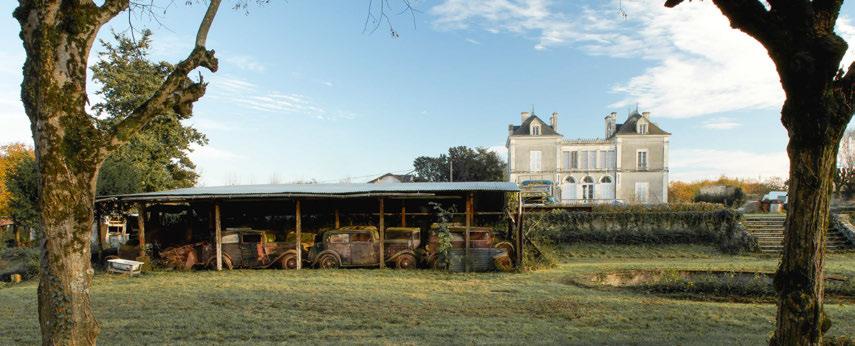
Dovaz and Baillon were not the only French collectors who stored vast numbers of cars. ‘Compulsive buyer’ Henri Ruggieri parked his 81 cars in five locations, removing parts of each to deter thieves. They included a matching-numbers 1968 Lamborghini Miura P400 and a 1953 Porsche 356 Pre-A, and were all auctioned by Interencheres in January 2019. Other cars were intentionally hidden in the French countryside: in 1995, three Citroën TPVs ( Très Petite Voiture or ‘Very Small Car’), prototypes of the 2CV that were tested before World War Two, were discovered in a barn in the Bureau d’Études at La Ferté-Vidame, about 75km west of Paris. Although company management had ordered their destruction, workers identified their importance – and hid them away!
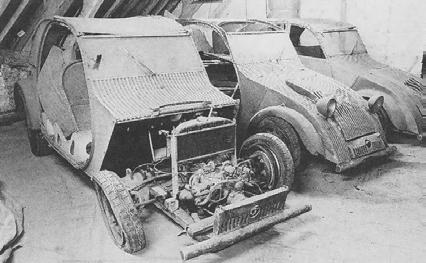
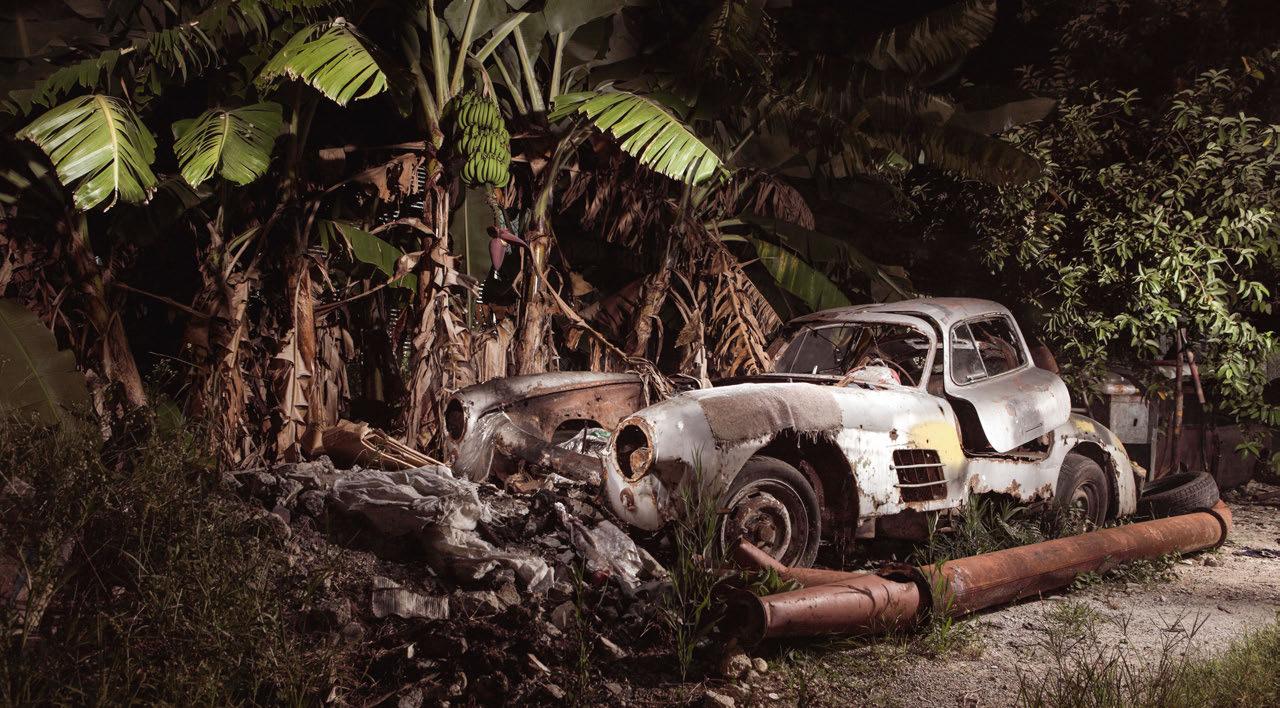
Fidel Castro’s 1959 ban on the import of foreign cars and car parts had an extraordinary impact on the automotive landscape of the island. Practical saloons that could be used to transport people and goods were prized and maintained, while two-seater sports cars were left to rot. In 2014, just as Cuba’s import restrictions were eased, Spanish photographer Piotr Degler spent a month travelling the length of the island, visiting dozens of towns and cities. Building friendships with enthusiasts and mechanics, he was shown cars rusting and abandoned on streets, in gardens and tucked away in garages. He discovered oddities such as a 1957 Cadillac Series 62 Convertible, a Goggomobil 400 coupé and even an Austin-Healey 3000, but among the finds were some real automotive gems: an early 1950s Chrysler Ghia Special Coupe (one of just 18), an Hispano-Suiza Shooting Brake and a brace of Mercedes-Benz 300SLs – a battered Gullwing found with a banana tree almost growing through it (pictured above), and a 300SL Roadster that had been fitted with a Chevy engine and Volkswagen Beetle rear lights. Intriguingly, other grainy photographs of a 300SL said to be in Cuba were published by Hagerty in 2010, and they look to be of another, more complete car, along with shots of an Abarth Zagato ‘Double Bubble’ coupé and a Maserati A6G 2000 Frua Spider.
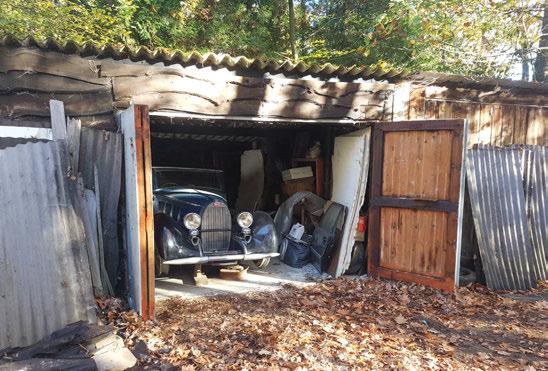
Three pre-war Bugattis and a 1925 Citroën owned by Dutch sculptor August Thomassen were barricaded into his barn behind sandbags until his family decided to sell the cars in 2019. A 1929 Bugatti Type 40, a 1932 Bugatti Type 49 limousine, a 1937 Bugatti Type 57 Cabriolet and a 1925 Citroën Cabriolet were all extremely well-preserved after six decades in confinement. In Dresden, another car experienced a long period in solitary, having been bricked-up in the basement of a house beneath a rose garden during World War Two. The 1938 Mercedez-Benz 540K Offener Tourenwagen, one of only two built, was disinterred after the fall of the Berlin Wall.

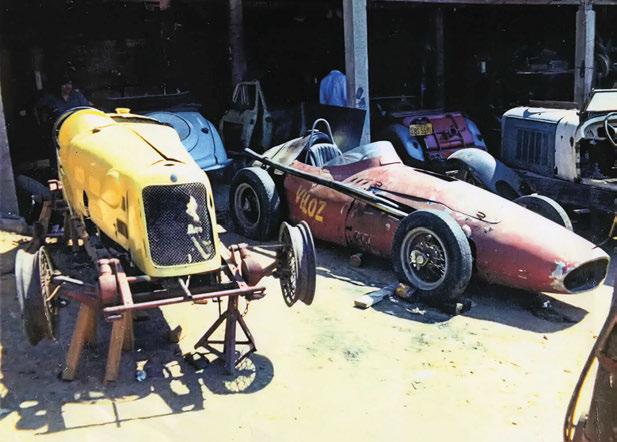
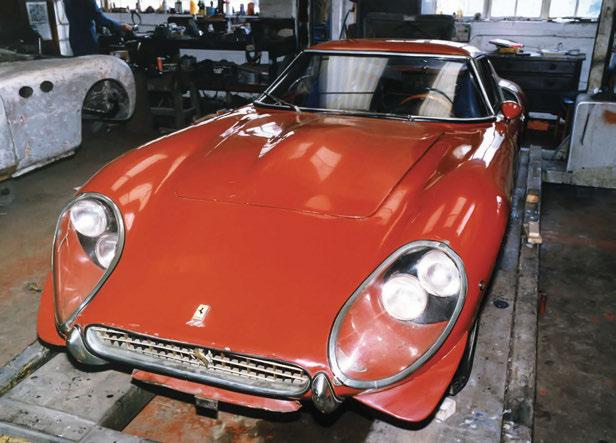
After leaving the Scots Guards in 1964 aged 22, Colin Crabbe established a small garage called Antique Automobiles in Baston, Lincolnshire, that quickly became known for selling exotic and interesting vehicles. After a holiday in Ethiopia, in 1967 Crabbe headed to Eritrea, which had been an Italian colony before World War Two; he’d heard rumours of racing cars left there after hostilities. He came home with the 1955 Ethiopian Grand Prix-winning Scaglietti-bodied Series 1 Ferrari 500 Mondial, a 1935 Maserati 4CM raced by Nando Barbieri, and an Alfa Romeo 8C 2300 Special. Crabbe’s appetite for exceptional cars had been whetted. In April 1968 he followed another lead after a German friend had cabled to say he knew the location of a Mercedes Grand Prix car of some type offered for sale in the German Democratic Republic, but that the then-huge sum of £10,000 was being asked for it. With a briefcase stuffed with dollar bills, and in partnership with friend Neil Corner, Crabbe made the journey into East Germany through Checkpoint Charlie and bought the car. It was tatty and fitted with a 1500cc Volkswagen engine, but every bit the real 1937 Mercedes-Benz W125 Grand Prix car he’d been promised. The original engine was even provided, packed in a box.
Crabbe’s focus shifted to racing, but his instinct for finding hidden cars never subsided, and throughout the 1970s and 1980s he unearthed an extraordinary list of vehicles. South America was a particularly rich source, including the 1976 find of an Alfa Romeo 2300 Monza, believed to have been sold new in 1932 to Jean-Pierre Wimille and raced in Europe before heading to Brazil in 1937. Brazilian law did not permit the export of pre-1940 cars, but after a reported night-time crossing of the Paraná River on a raft crewed by indigenous tribespeople, the car reached Montevideo, Uruguay, from where Crabbe exported it.
Another car emerged behind the Iron Curtain the following year, this time a 1938 Auto Union Type D in Czechoslovakia. Purchased with his friend Hubertus von Dönhoff, it was brought back to England on the Harwich ferry – and later found to have no internal mechanicals. So Crabbe tracked down a complete V12 supercharged Auto Union engine in East Germany with help from historian Martin Schroeder.
One of Crabbe’s most productive trips was his 1983 visit to Cuba when, over the course of seven days, he bought a Maserati A6 GCS, a BMW 507 and two Jaguar D-types converted to XKSS specification. Another Cuban deal in 1985 nearly ended in disagreement, but the seller threw in the chassis of a 1957 Ferrari 500 TRC Spyder Scaglietti that had been wrecked following an accident in the 1958 Cuban Grand Prix that killed seven spectators. The car was later reconstructed by Neil Twyman. Crabbe detailed these and other stories in The Thrill of the Chase, his record of an extraordinary life.
Crabbe wasn’t the only Westerner looking for classic cars in the Soviet Bloc during the 1970s. American Paul Karassik’s parents were Russian and he spoke the language, so, when he heard rumours of some very special cars trapped behind the Iron Curtain, he and his wife Barbara set off to see what they could discover. It helped that Barbara was fluent in German and that Paul’s successful real estate business gave them the financial ability to ‘ease’ the bureaucracy that could otherwise have scuppered their plans.
Despite being suspected as spies, they tracked down a V12 Auto Union engine near Leningrad in the mid-1980s, and collected a 1938 Auto Union Type D chassis nearby that had been made into
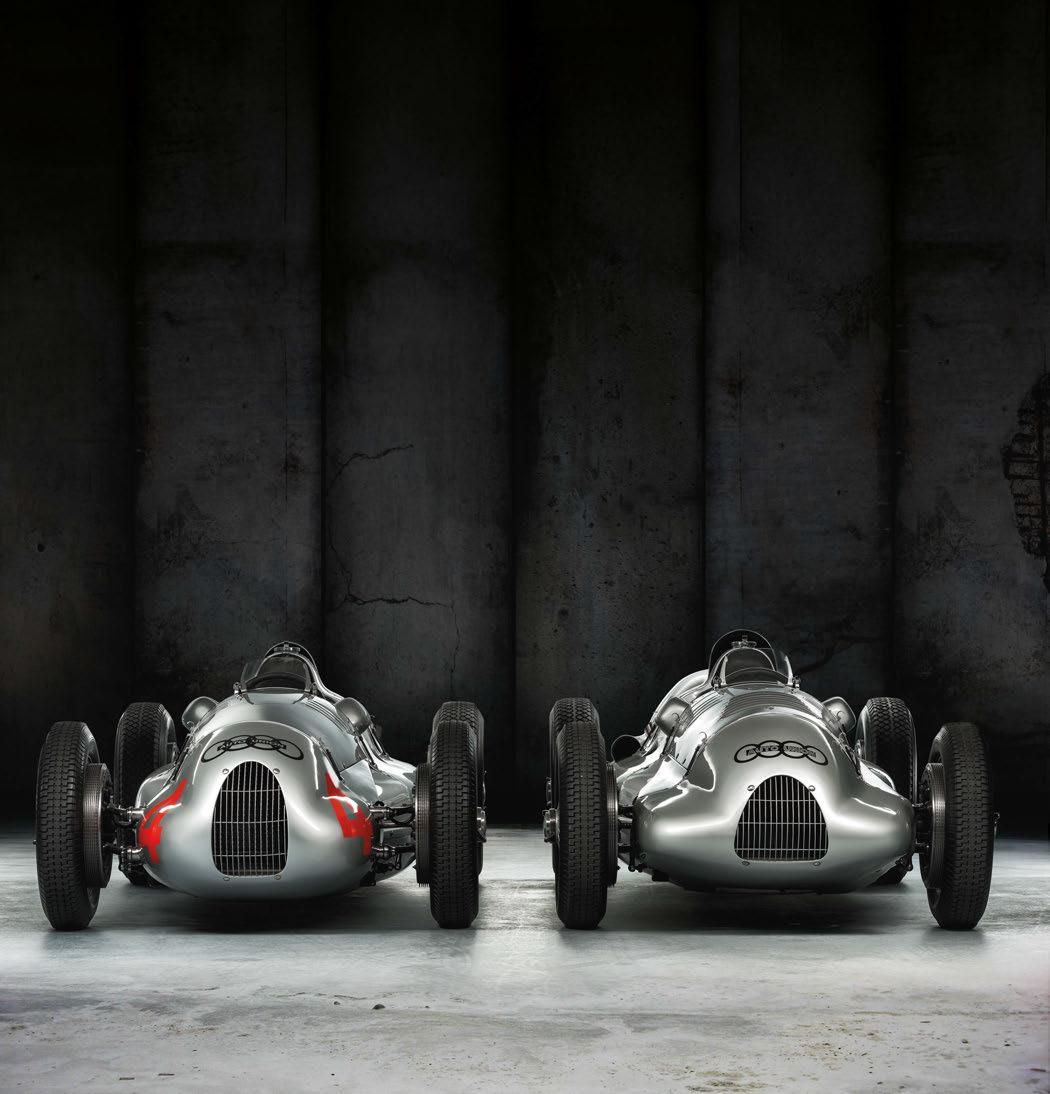
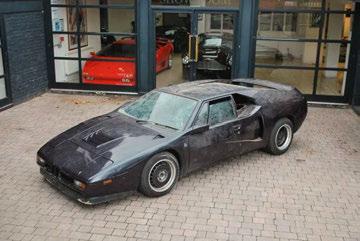
a trailer, one of a number of Auto Union racing cars that had been captured by the Soviets during World War Two. The Karassiks were introduced to Konstantin Nikitin, who had worked on various Auto Unions in Ukraine when a younger man, and he led them to various parts, including another complete chassis, an engine and body panels.
Easing their passage with cola, beer, cigarettes and chocolate, the couple loaded the parts in a Mercedes minibus and drove them across the border into Finland. From there, they were flown to the USA and later rebuilt by Crosthwaite and Gardiner into two cars: a 1938-spec Type D and a 1939 version with twin superchargers. Both are now owned by Audi.
In 1981, Harald Ertl drove his LPG-fuelled BMW M1 to 301.4km/h at the Ehra-Lessien test track in Germany, breaking the record for that fuel type. Only a few months later, the Austrian driver was killed in an aircraft crash. The car changed hands a few times, and in 1993 was bought by Pummy Bhatia, a pharmacist in East London. Although Pummy died in 1995, the car was kept by the family until offered for sale in 2019, having endured some time parked outside when loaned to a museum.
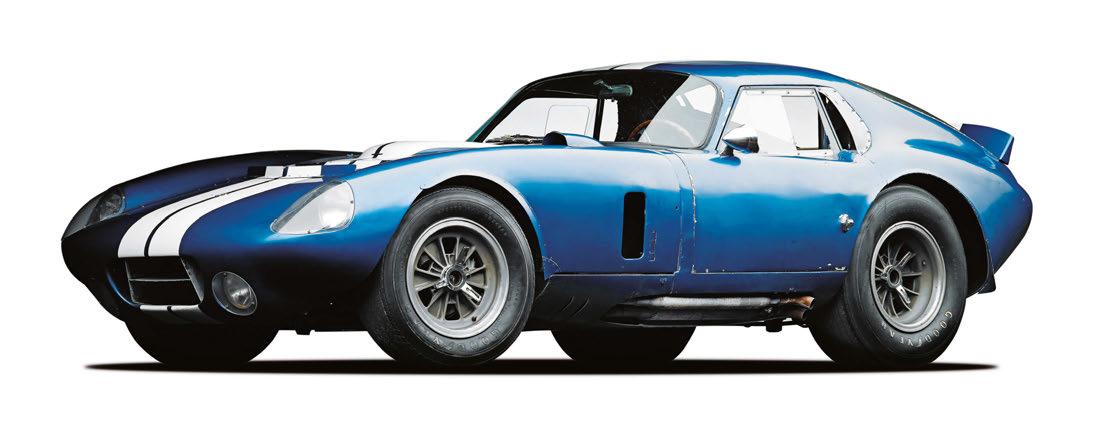
The story of how a Shelby Cobra Daytona Coupe re-emerged into public view after three decades in storage isn’t a happy one. The original 1964 prototype, built by Carroll Shelby and Pete Brock and the only one bodied in the US, 2287 played a key part in Shelby’s GT racing successes in the next two seasons, winning its class at Sebring, leading at Le Mans and competing in all key GT races in Europe and the US. In 1965 it set 23 speed records on the Bonneville Salt Flats before being retired and sold to record producer Phil Spector, who sold it to his bodyguard, George Brand, for $1000. In 1971 Brand gave the car to his daughter, Dorothy, who
stored it until 2001, refusing requests to buy it –including one from Shelby himself. Then, with help of a lawyer, Fred Simeone persuaded her to sell for a reported $4m. She agreed, signed the proceeds over to mother, and committed suicide.
An epic legal battle followed, with claims that the car should be offered for public sale, an attempt by Spector’s lawyers to say he’d never sold it to Brand, and one from Dorothy’s boyfriend, who claimed she’d promised it to him. The judge ruled that the sale should stand, and the car remains in the Simeone Museum, maintained as close as possible to how it left Shelby in 1966.
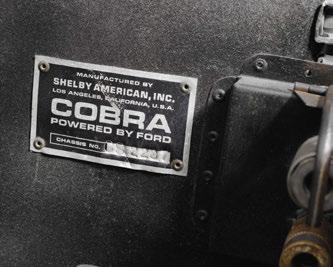

The combination of wealth and sheer size makes the USA a global hotbed of barn-finds, sometimes in the most unlikely of places. In 1953, DKW created a DKW limousine based on the pre-war Horch 830 BL for Auto Union president Dr Richard Bruhn. Later imported into the US by an American serviceman, the car sat unused in Texas (left) for many years until Audi purchased it back as the final example of its type. In 2013, a 1969 Dodge Charger Daytona, complete with rear wing and battered nosecone but lacking engine and transmission, was discovered in southern California. It was restored to concours standard. In 2023, a one-of-25 1931 Duesenberg Model J Murphy-bodied disappearing-top convertible coupe was pulled from the locked and heated garage it had inhabited in Illinois since 1967. Gooding & Company sold it in 2024 for $2.645m.
The Daytona Coupe wasn’t the only Shelby Cobra to be ‘lost’ and found. In 1993, a delivery man noticed a Cobra in the barn of a Dr Bryan Molloy near Indianapolis and offered to buy it. This was CSX2149, the 149th Shelby Cobra produced, originally painted in off-white with a luggage rack and delivered in 1963. It was very sympathetically restored by Tom Cotter, who featured the car on the cover of his book, The Cobra in the Barn. Cotter has uncovered hundreds of barn-finds since his first car purchase in 1969, many portrayed on The Barn Find Hunter programme for Hagerty. Highlights have included a 1952 Cunningham C-3 found in a basement in South Carolina, a 1967 Shelby GT500 with 30,000 miles on the clock discovered in North Carolina, and an aluminiumbodied 1966 Austin-Healey Sprite prototype racing car found in Portland, Oregon, but his most impressive find was a group of cars located in North Carolina in 2018. The owner apparently put them into his garage in 1991 after his mechanic was killed in a road accident, and they remained untouched until Cotter was called in to see them. He discovered an alloy-bodied 1966 Ferrari 275 GTB/2 Long Nose and a 1967 Shelby Cobra 427; both were later sold at Gooding & Company’s 2018 Amelia Island auction for $2.53m and $1.045m respectively.

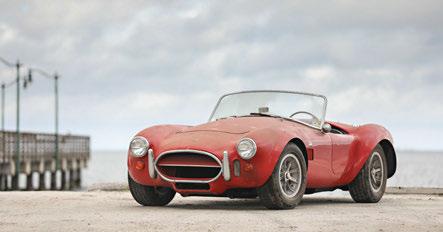

German TV has a similar show to The Barn Find Hunter called Das Geld liegt im Keller (‘There’s Money in the Cellar’). In 2014 the programme featured Bernt Ibold, who lived in Bardenitz, near Potsdam, and started sorting through his sheds full of cars, parts and tools. They discovered a couple of Porsche 911s, both in very poor condition, and they assumed a value of about €10,000 for the pair but felt they should check with Porsche. Quickly it became obvious that they had something special on their hands: one of the cars was chassis 300057, one of the very earliest 901series cars built in 1964 before the designation was changed to 911. Porsche promptly purchased the car from Ibold for €107,000 and restored it for display in the Porsche Museum.
Delivered in March 1963 to Kjell Qvale, legendary US importer of British cars, to be run in that year’s 12 Hours of Sebring, the Jaguar E-type Lightweight chassis number S850660 had been rushed through Jaguar’s production line. Painted with a red stripe to differentiate it from the other Lightweight in the race, a Briggs Cunningham entrant, S850660 finished seventh overall and first in class, the best any Jaguar ever achieved at the race. It was then sold to Howard Gidovlenko, a Bell X2 rocket-plane test pilot and hydroplane racer who intended to enter it in the following year’s Daytona 500.
The car never made it to Daytona, and sat, packed up with spares, in Gidovlenko’s garage until February 1998 when, following his death, details of the Jaguar were published online by his family. Instantly flooded with requests to buy the car, they
realised it was something special, and Gidovlenko’s executor decided a specialist should be called in. Jaguar expert Terry Larson duly confirmed it was the ‘lost’ Lightweight and suggested it should be sold at auction.
The car was found to be in very good original condition, as it had been expertly stored by Gidovlenko, but there were patches of bare aluminium that family members suggested he may have created to reduce its value during a divorce. It sold first at RM’s Monterey auction in 1998 for $872,050, then again at Amelia Island for $1.25m in 2003. It was subsequently sold in the UK for £4.5m, having appeared at Pebble Beach and on track at Goodwood.
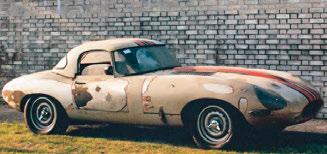
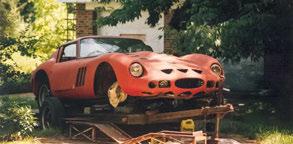
A 1950 Ferrari 166MM Barchetta chassis 052M that had competed at Le Mans, Goodwood and won its class in the 1952 Targa Florio was left in its Arizona owner’s backyard between 1959 and 2005. Executors sold it after his death and it won its class at Pebble Beach. A Ferrari 250 GTO, 3589GT, that sat on a trailer (above) in a field in Ohio between 1972 and 1986 had been raced in the UK, Bahamas and Sebring by Michael Parkes, Innes Ireland and Richie Ginther. A 1956 Ferrari GT Tour de France that starred in Herbie in 1968 was later dumped by the side of the Hollywood freeway.
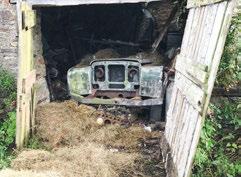
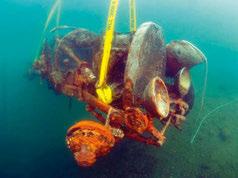
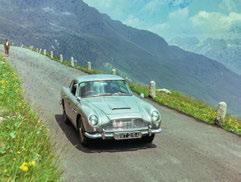
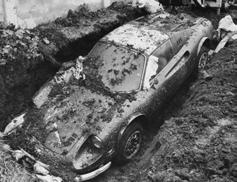
This should have experienced a cosseted life of luxury as a gift to King George VI rather than spending decades on a Northumberland farm, but teething problems meant the King was allocated another one. Instead, chassis 860001 was sold and registered JUE 477. It moved on to David Fairless in 1970, who used it on his farm until mechanical issues saw it left in a field. Fairless showed it at a Land Rover club event in 1998; then put into a barn for safety and later bought by Sir Jim Ratcliffe, it was very sympathetically restored by specialist Julian Shoolheifer.
This 1925 Bugatti Type 22 Brescia had been sitting at the bottom of Lake Maggiore since 1934 when it was recovered by a local diving club in 2019. It had reportedly been dumped in the lake when gambler Adalbert Bodé tried to avoid import taxes, supposedly having just won the car from the original owner, French racing driver René Dreyfus. In 2010 the car was purchased at a Bonhams auction for $364,700 by the late Peter Mullin and was put on show at his museum in Oxnard, California. It remains in conserved but unrestored condition.
Boca Raton airport isn’t the first place you’d expect a Bond story to be set. In 1997 it was the scene of an audacious heist that saw chassis DP/216/1 – the original 1963 Aston Martin DB5 used as the ‘gadget car’ in filming for Goldfinger – stolen and allegedly shipped overseas. For years, rumours abounded that the car had been flown out by cargo aircraft, or it had been destroyed.
In 2021, investigators Art Recovery International apparently saw the car at an undisclosed location in the Middle East, where its provenance was reportedly confirmed.
In December 1974, just two months after Rosendo Cruz had purchased a new Ferrari 246 GTS for his wife, the car was stolen. Allegedly an insurance con, the car had been destined to be cut up, but the thieves wrapped it in plastic and buried it in a backyard, aiming to recover it later. This didn’t happen, and four years later kids playing there found it. It was then purchased and restored by new owner Brad Howard, who stated that all the glass (except the windscreen) and all trim had survived in remarkable condition.
The first owner of a 1970 Lamborghini Miura P400S (right) was a little eccentric. Purchased in Italy but shipped to to the US a decade later, the car was stored in the living room of the owner’s house in East Rockway, New York, until 2024, when walls were knocked down to get it out. It later sold at Pebble Beach for a shade over $2m.
Klein was the owner of a legendary scrapyard in LA that sold parts for mainly European sports cars but the German, who had moved to the USA in the 1950s, kept some of the more interesting cars complete (Octane 258). The extraordinary extent of the collection became clear only when catalogued for auction by RM Sotheby’s in 2024. It included three Lamborghini Miuras, a 1964 Iso Grifo A3/L prototype, the only surviving 1939 Horch 855 Special Roadster by Gläser, and a one-off 1935 Mercedes-Benz 500K (right) built for works driver Rudolf Caracciola. The jewel in the crown was an alloy-bodied 1956 300SL Gullwing that sold for a record $9.355m (£7.22m).
Some of the rarest examples of already famous cars have been found after years hidden away. Mercedes-Benz specialist Rudi Koniczek knew the final, unlocated alloy-bodied Mercedes-Benz 300SL Gullwing had been sold new in America, but was amazed to find it in 2011 in a Santa Monica garage so filled with old computers that he had to pay people to shift them out of the way. It was bought new as a graduation gift and stored when the transmission failed. In 2017, Ferrari expert Marcel Massini was asked to inspect a 1969 Ferrari 365 GTB/4 ‘Daytona’ that had been stored in Japan for nearly four decades. He discovered a unique roadgoing version, built new with an alloy body like the racers. It was sold at auction by RM Sotheby’s in 2017 for €1.8m.
Not all missing cars have been found: the most famous undiscovered one is almost certainly ‘La Voiture Noir ’. Bugatti constructed four of its famed Type 57SC Atlantic and the second, built in 1936 and painted black, was given by Bugatti to driver Robert Benoist for winning the 1937 Le Mans 24 Hours. It passed to team-mate William Grover-Williams just before the war and was shipped back to the factory for safekeeping; Williams was later executed by the Nazis. Records end in 1941 and rumours emerged of a secret overnight trip to Bordeaux in an attempt to evade German capture, but others suggest it met its end during the conflict, either destroyed or broken for parts. A social media post in 2021 announced that the car was being restored in Connecticut but, when people questioned the photographs, the car was said to be the missing Bugatti Aérolithe prototype. The mystery remains.
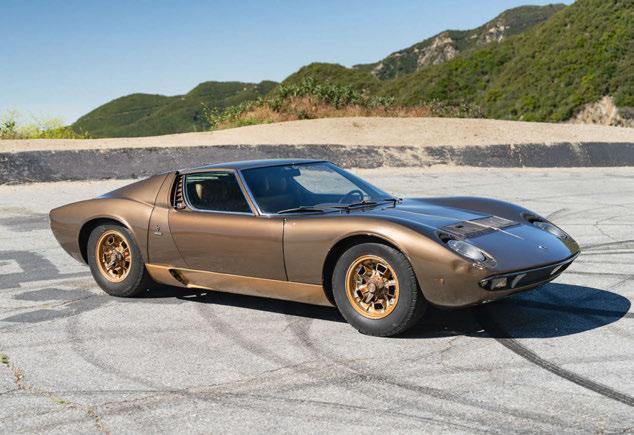

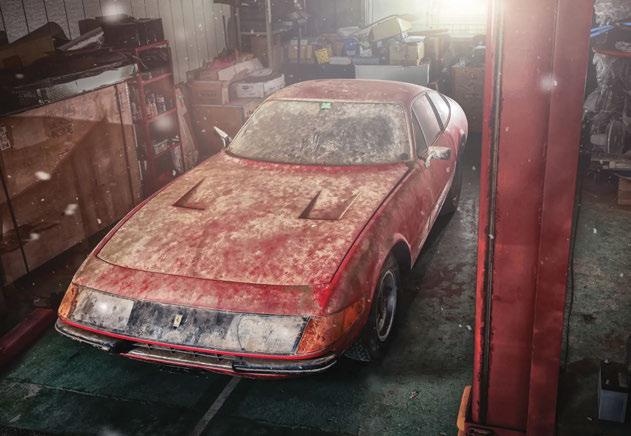








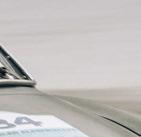
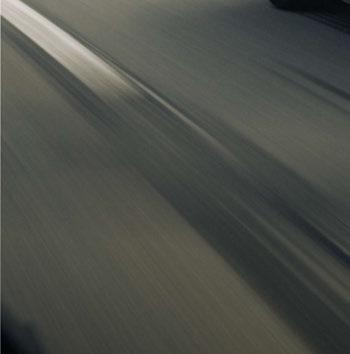

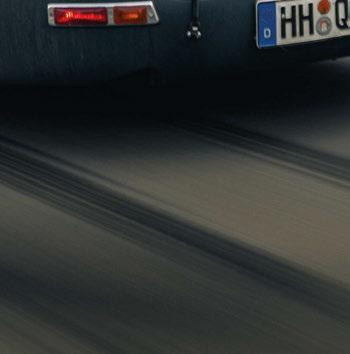






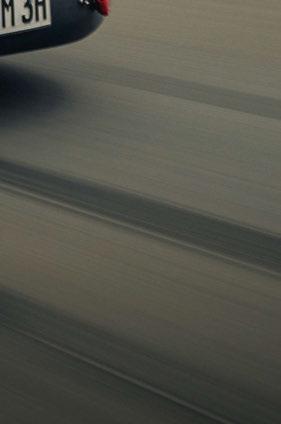

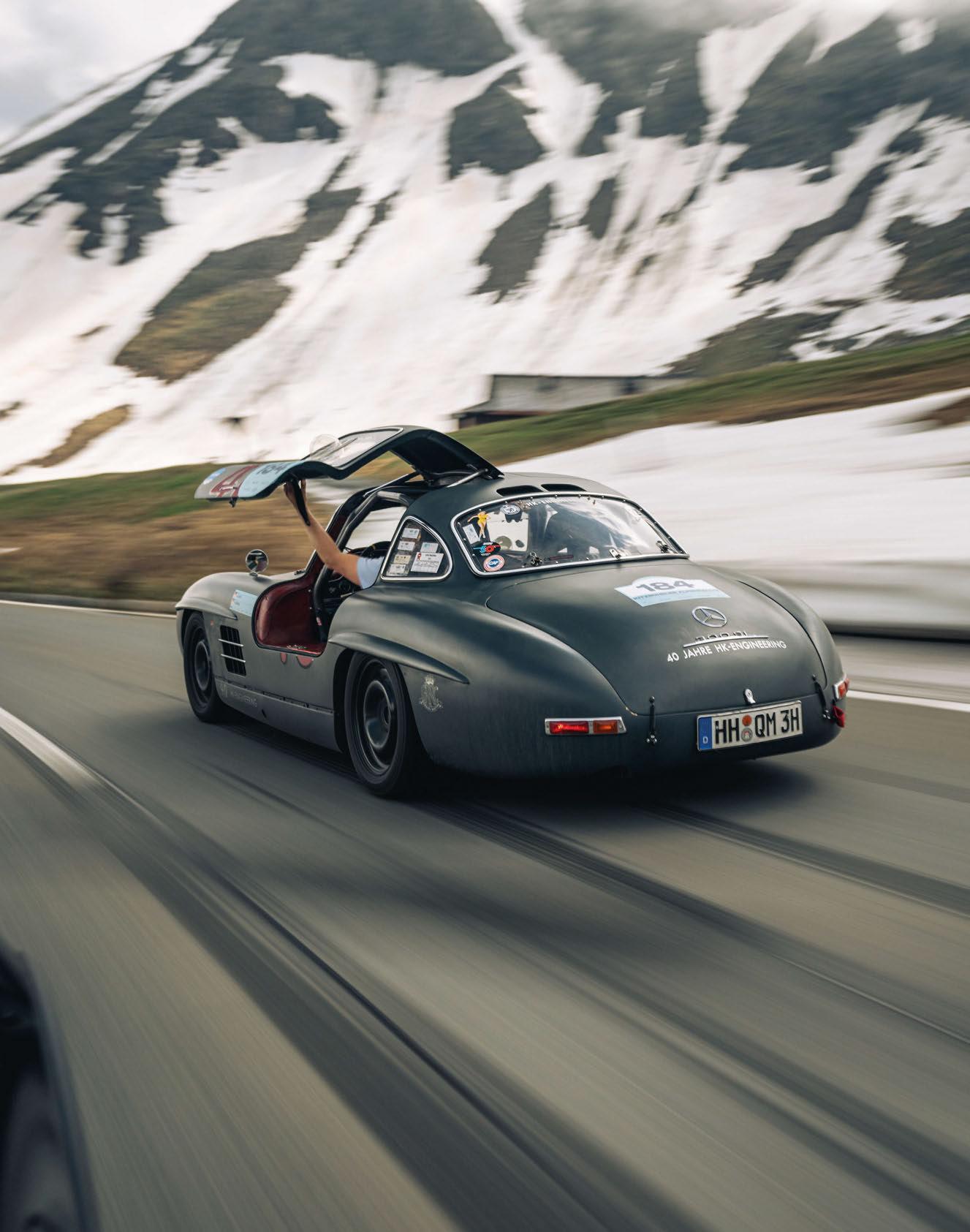
























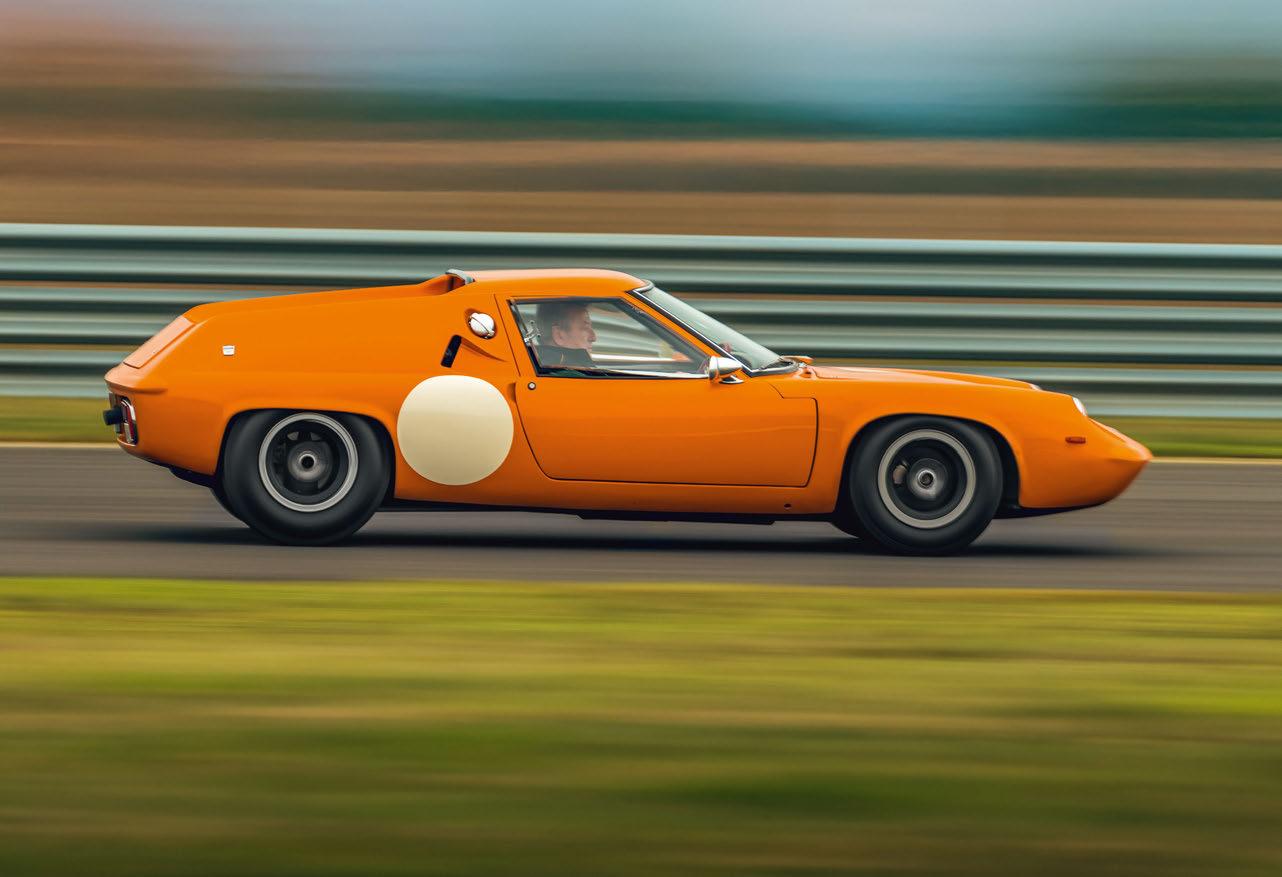

This homologation special has been restored for a new life on the road in the Philippines, yet the compromises have been few, as James Elliott discovers
The obvious question is whether it would have been easier to soup-up a stock Europa rather than streetify a 47. It’s a fair one, too, especially if you are unfamiliar with quite how di erent a Type 46 Lotus Europa and a Lotus 47 GT really are, the former being an appreciably edgy street racer with a dose of racecar-resembling masochism (the driver’s footwell and pedal layout still perplex some, while rear visibility is not all it might be). Yet in all its various guises, the Lotus Europa – xed window, longitudinally mounted Renault 16 four-pot engine – is a wonderful driving machine, a more focused evolution of the Elan, with the folded pressed-steel backbone chassis reversed and shortened to house the engine amidships and allow space for the wheels. A wonderful clubman’s car. Ron Hickman’s 47 GT, on the other hand, of which 55 are believed to have been built by Lotus Components to meet homologation, may share the silhoue e that was derived from Lotus’s losing pitch for what was to become the Ford GT40, but underneath it is a full-on Group 4 racer.
e Type 47 has thinner, lighter GRP bodywork, initially bonded to its chassis, reducing the already lightweight 610kg Europa S1 (Type 46) to a yweight 558kg. ey use the same suspension system but in the racer it is uprated in every way: for example, the 47 GT’s front wishbones are from a Type 41 single-seater, the rear (reversed bo om wishbone, top link and dual radius arms) is pure Lotus F2. Bits of 22/23 and 69 are in there, too. e wheels and tyres squeezed under the ’arches are huge in comparison, they are in fact Countach-sized at the rear (6.00/12.00-13); the lack of bumpers and cooling vents on all but the earliest cars are other giveaways, but it is the performance that really leaves no room for doubt.
e capabilities of the Ford-based Lotus Twin Cam were already wellknown but, by the time the 47 GT was launched, tuning by Lotus itself, Cosworth and/or BRM had increased power by almost a third over a 1558cc S1 Elan. A Europa was no slouch, squeezing a 9.3sec 0-60mph time and 115mph out of its 82bhp 1.5-litre Renault motor, but the Cosworth-Ford 13C 1594cc Twin Cam in the 47 GT boasted 175bhpplus (180 with the tricky Tecalemit Jackson fuel injection), which blasted it to 60mph in under 5sec and a top speed in the region of 165mph. at in a car weighing just 1230lb, packing the notorious full-race Hewland FT200 dog-leg ve-speed transaxle and devoid of any safety features.
An amazing speed machine, then, but not the sort of beast you would want to drive on the road. Unless you are Fernando Imperial. A collector who still races a Mazda MX-5 in his 70s, Fernando decided that a Lotus 47 GT would be the perfect car to drive around his native Philippines with as few concessions to civility as possible. Some 18 months ago he found his car – 1968 Lotus 47GT/71, chassis EJG1, engine C13 067, gearbox 139 – built and sold new to racer John Sprinzel, then owned by Viennese artist H Müller, who painted it a lurid selection of pinks, ed an FVA and competed under the pseudonym Horst Mundschitz, before he sold it on to Swiss Hansuli Buechi. From 1999 it was owned by German surgeon Johannes Ditz, who ed a 1971 BRM TC Conversion stage III phase IV with Group 5/Formula B speci cations.
When Ditz sold it, it was advertised as ‘orange, now white’ as well as coming with its FIA papers, Hewland ’box, 45 DCOEs or operational Tecalemit Jackson FI with Keith Franck modi cations. en crucially: ‘NOT Running! due to ignition and cooling-circuit ass prpblems.’ [sic]. ese had been long-running issues during Ditz’s well-catalogued ownership, so much so that he once wrote: ‘If the car does not run properly I will leave it to a future breed of mechanic monkeys.’















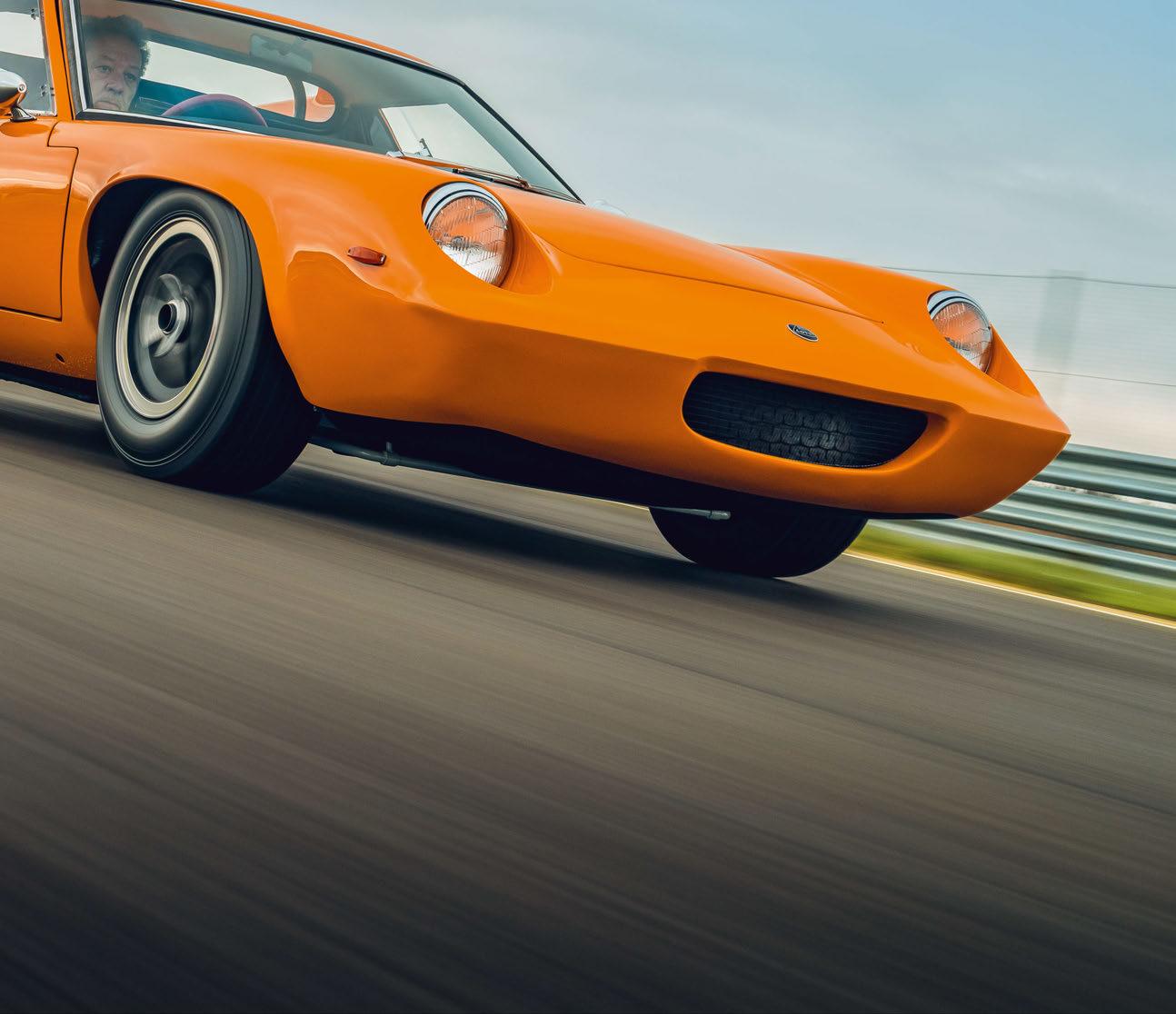
‘NOT A BEAST YOU’D WANT TO DRIVE ON THE ROAD… UNLESS YOU ARE FERNANDO IMPERIAL’
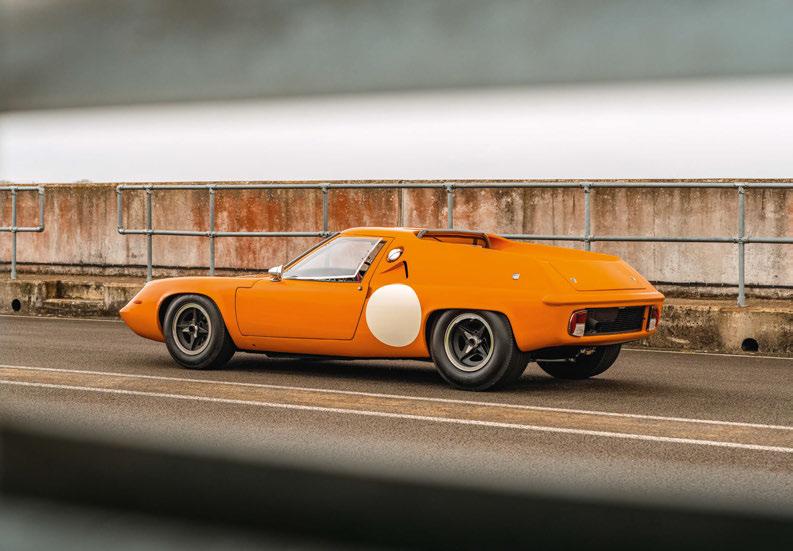
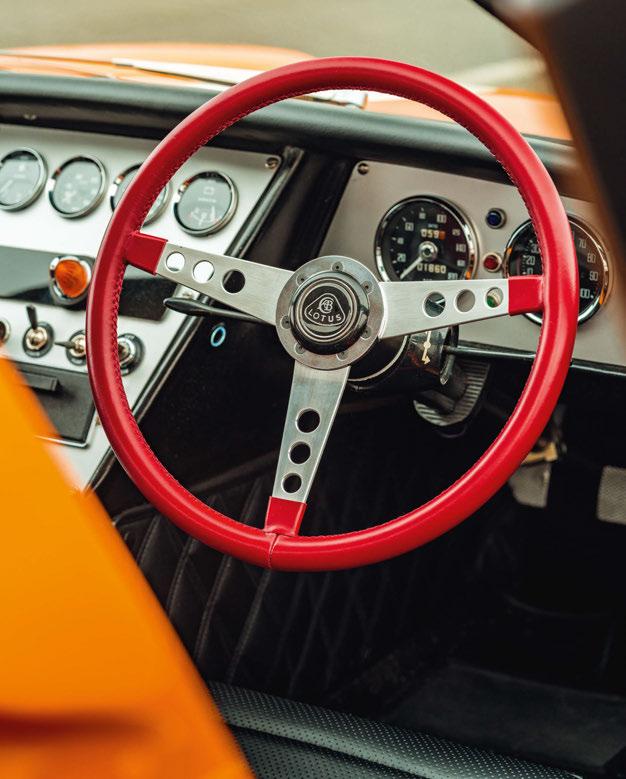

Having secured his car, the new owner sent it to Clive Chapman’s Classic Team Lotus for a full restoration and some ‘upgrades’. Drafted in to manage the project was Chris Murphy, a Bolton-born former race engineer and designer with previous at Maurer (which emerged from the ashes of Chevron), March, Theodore, Zakspeed, Lola-Lamborghini, Larrousse, Leyton House and Team Lotus, where he remained until its demise in 1995. You name it, he’s done it, but perhaps trumping all of that experience was the fact that Chris is himself a Lotus 47 GT owner, having acquired a burnt-out Uruguay car (chassis 82) and a load of spares.
What Chris and the CTL team found when they started investigating 47GT/71 was an authentic car with very few mods beyond uprated bracing for the rear beam of the gearbox that, due to the power and grip of the 47 GT, was prone to flexing until it cracked. The chassis was in good nick so it could stay bonded to the body (you really don’t want to be separating them if you can avoid it), but everything else was stripped and cracktested by an aircraft company before being, in order of preference, refurbed, repaired or replaced. As Chris says: ‘We take a holistic approach – there’s 2500 parts on a car and we took a view on every one of them individually: can we keep it, can we restore it, do we have to replace it?’
It was a bit more complicated to make it genuinely roadable. The huge Dunlop racing tyres with tall sidewalls offer plenty of compliance, but there are now an uprated front anti-roll bar, rear adjustable anti-roll bar and adjustable dampers. Other tweaks include a rally-spec cam, highcapacity 175A alternator, doubling up the water temp and oil pressure dials so a fuel gauge could be added, voltmeter instead of ammeter, multiple blade fuses instead of the original pair of Lucas glass items,
diamond-pleated leather where there was bare glassfibre, and a seatbelt anchorage for the passenger, both seats being integrated and moulded into the bulkhead. Any passenger must still weave their legs around both a sizeable fire extinguisher and oil tank in their footwell, mind. The red single-seater-style steering wheel should really be black, but looks great.
One fun aspect was that Chris’s spares included a rare-as-hen’s-teeth luggage box that lived on a bracket above the transaxle to take the FIAspec suitcase that Group 4 regs demanded all cars – including the 908s and GT40s – must be capable of carrying, along with a spare wheel. Now Fernando’s car has a perfect replica of Chris’s original luggage box. And a spare magnesium wheel, of course, which thanks to its placement handily deflects air straight onto the radiator. It was designed that way. Genius.
Which leads us to the big changes. One is obvious, given the prospect of driving a 47 in the hot and humid Philippines. To combat the equatorial climate, the team has increased the water capacity of the radiator and given the 75mm thick ally unit three stages of finning and a huge electric fan. Plus there’s air-con. Yes, a discreet system entirely independent of the engine has been fitted, including pricey Ferrari-sourced period controls.
The other big departure is fuelling, as Chris explains: ‘It should be on Tecalemit Jackson mechanical injection, which is difficult to manage.
Clockwise, from top opposite Silhouette derived from Lotus’s pitch for the GT40; ground-hugging; Twin Cam punches out over 170bhp; red wheel adds single-seater flavour.

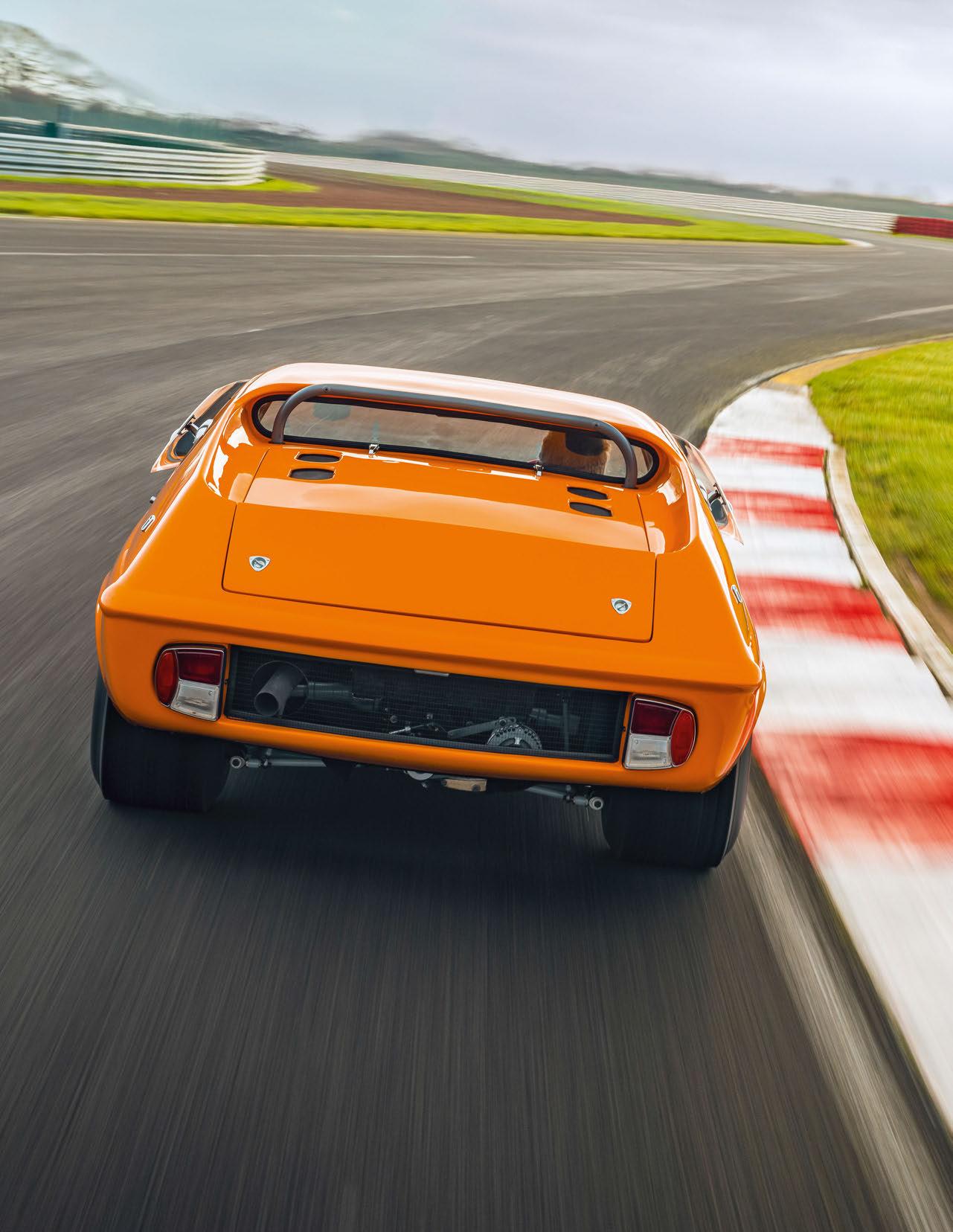
‘THE SECRET IS MATCHING THE ENGINE’S PEAKS AND TROUGHS TO THE TIGHT-KNIT ESSES’
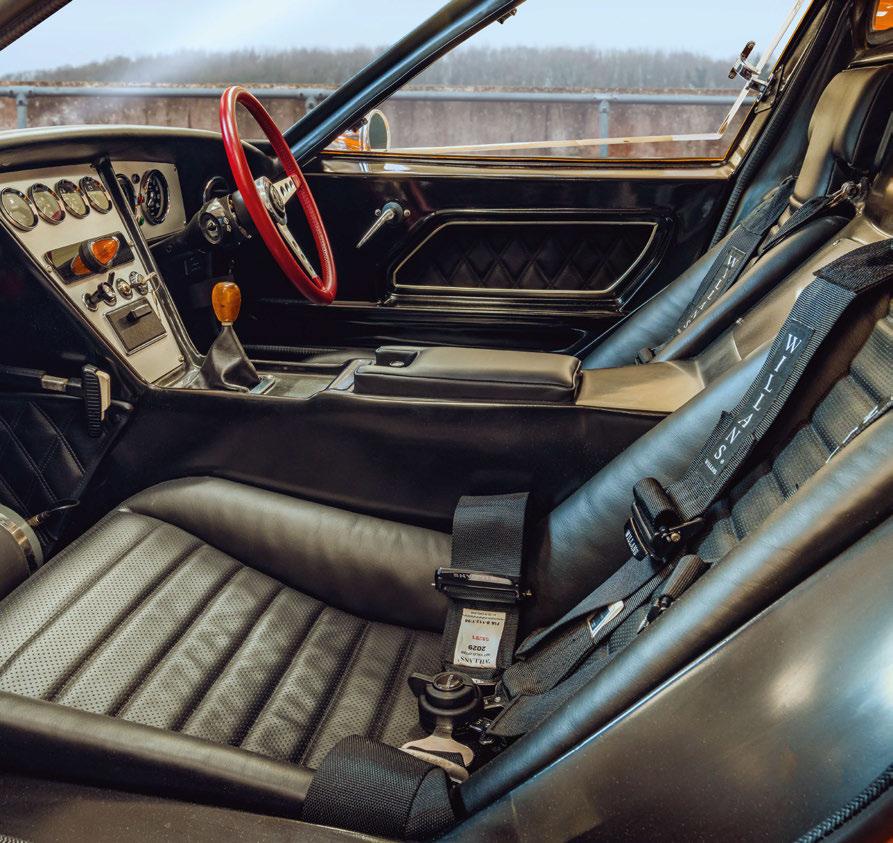
Predictably it came with a pair of twin 45 Webers as an alternative, but we fitted a modern fuel injection system with inverted Jenvey throttle bodies. The TJ system is still there visually but is dummy. It’s still producing 170bhp but in a more civilised way, and with a far broader rev and power band. It’ll rev to 8000rpm. We’ve also replaced the race clutch with something more usable; it’s perfectly happy pulling away at 3000rpm.’
Body and paint alone took 500 hours of a 2700-hour total. Glorious it is, too, the Colorado Orange, close to its original colour (a bit redder than McLaren’s Papaya) before 47GT/71 spent many years in pink then white. The engine was rebuilt off-site, but everything else was done at CTL, principally by Mark Hicks, a third-generation Lotus man: ‘The AC is a kit designed to retrofit in early air-cooled 911s, but we adapted it. We had to delete the original oil-cooler in the front wheelarch and replace it with a heat exchanger to make space for the air-con. There weren’t any problems that weren’t original to Lotus. It was fairly straightforward, even the new injection system; plumbing everything was interesting but we got there.’
They did indeed. It is gorgeous, likely the most thorough restoration ever on a 47 and breaking new ground for CTL, which is only just starting
Left and above
Jinky Lotus test-track perfect for such a nimble car; the interior feels like a road car’s, especially with the leather, but sounds like a racer’s.
to tackle road cars. It is so low and delicate, GT really is a misnomer. But then you see it from the rear and the car is so narrow and the tyres are so wide that it almost seems there isn’t any room for driveshafts.
In charge of testing has been Chris Dinnage, who has driven more Lotus racing cars than anyone else in the world: ‘I was trying to drive every Lotus F1 car and there are now just four I’ve never driven, but the Type 100 I probably never will because we’ll never get the engine running.
‘The 47’s brakes are 1967 brakes – originally the feel was awful and the pedal pressure was far too hard, so we gave them regular pads and a ⅝in master. On the street the brakes were fine. We’ve improved the gearbox a lot with new forks and bearings and re-set up all the selector fingers. Fourth to fifth is really easy, but it’s still a dog-leg Hewland!

1966-68 Lotus Type 47 GT (standard car)
Engine Rear-mounted 1594cc Cosworth-Ford Twin Cam, twin Weber carburettors (initially), Tecalemit
Jackson mechanical fuel injection (subsequently) Power 172bhp @ 6000rpm Torque 125lb ft @ 4000rpm
Transmission Hewland FT200 five-speed manual, rear-wheel drive Steering Rack and pinion Suspension Front: unequal-length double wishbones, coil springs, telescopic dampers, anti-roll bar. Rear: reverse wishbones, top links, twin radius arms, coil springs, telescopic dampers Brakes Discs Weight 557kg Top speed 165mph 0-60mph 4.9sec
‘It’s a bit pointy but it’s fun, it’s got loads of power and torque. Driving around town is fine, but it feels far more like a race car – it’s a little bit edgy, give it beans out of the hairpins and it will slide.’
We jump in, drive 100 yards down the road to the factory and soon we are on the 2.2-mile test track doing sighting laps before Chris climbs out of the car and leaves me to it. It is surprisingly comfy when you settle into it; I notice the seats are leather instead of vinyl, with good width in the cockpit and a superb driving position with a nice big headrest that doesn’t do much in the way of noise-cancelling. It’s raucous in there. There’s a load of mechanical thrashing and the engine is noisy and wonderfully fruity, yet it is the transmission that provides the most aural discomfort.
The 47, after a doughnut-free driveshaft conversion, is feral off the line – squirting like someone has stamped on a tube of toothpaste, then bang, bang, bang, bang all the way up the five-speed Hewland dog-leg ’box from Windsock Corner to the Rindt Hairpin. As you snap through the gears it is almost like a sequential shift, the throw so short that sometimes you can only be 100% sure it is in when you lift the clutch and accelerate. Everything is so close, so taut, so well-defined. Click-clacking through the gears becomes joyous, going up at least – I soon resort to doubledeclutching and patience coming down and even then am sometimes at the mercy of the Hewland’s whims. It is sublime when you get it right, but truculent if you fudge those closely spaced ratios. I’ll admit to having to coast through a couple of corners in neutral on the first couple of laps.
The brakes are probably not quite up to racing but perfect for road use, not a hard pedal and they do pull it up well, though it likes to lock and squirm a bit. They just don’t match the power you can put down around
this track, a track that is thoroughly transformed from when I last drove it – Danny Bahar’s only positive legacy, snark a few staff.
The circuit is still tight, a series of Esses leading into and out of the Andretti hairpin at one end and then a long loop with the Rindt hairpin at the other extreme. With an engine so revvy and peaky, with a narrow power band very high up, the secret is matching the engine’s peaks and troughs to the tight-knit Esses. The super-sensitive throttle is phenomenal, and steering via the 4.75/10.00-13 fronts direct and feelsome. With clutch to left of steering column, top corner shaved to clear it and others on the right, pedal placement is great for heel-and-toeing, though the brake bite point may need to be adjusted up a bit to perfect it. The ride is soft for a racing car but the handling really doesn’t feel compromised, just more pleasant. The car is now heavier at 600kg, but you can’t tell.
The hairpins at each end of the circuit are the best place to experience ‘Lotus float’, when the tyres seem to simultaneously break and retain grip (illogical I know), effortlessly gliding around corners safely. There is a more lairy level beyond this, and predictably it is over- rather than understeer, but you don’t want to go there – it won’t get you around the corner any quicker and it means forgoing a genuinely ethereal experience that feels like the embodiment of what driving is ultimately about, the total symbiosis of man and machine. It is a similar action to modern drifting, but a very different feeling, full of grace. Ever driven a forklift?
This trait is far from unique to backbone Lotuses, though it is common to them, but, unlike some cars’ sweet spots, it is accessible at a skill level so low that anyone can experience such perfection. That is what makes these cars magical on road or on track. And in this case both.
We provide the resources, expertise, and opportunities for owners to enhance the enjoyment of owning a classic Mercedes-Benz. Each part of our usiness is dedicated to serving you, this is our purpose.
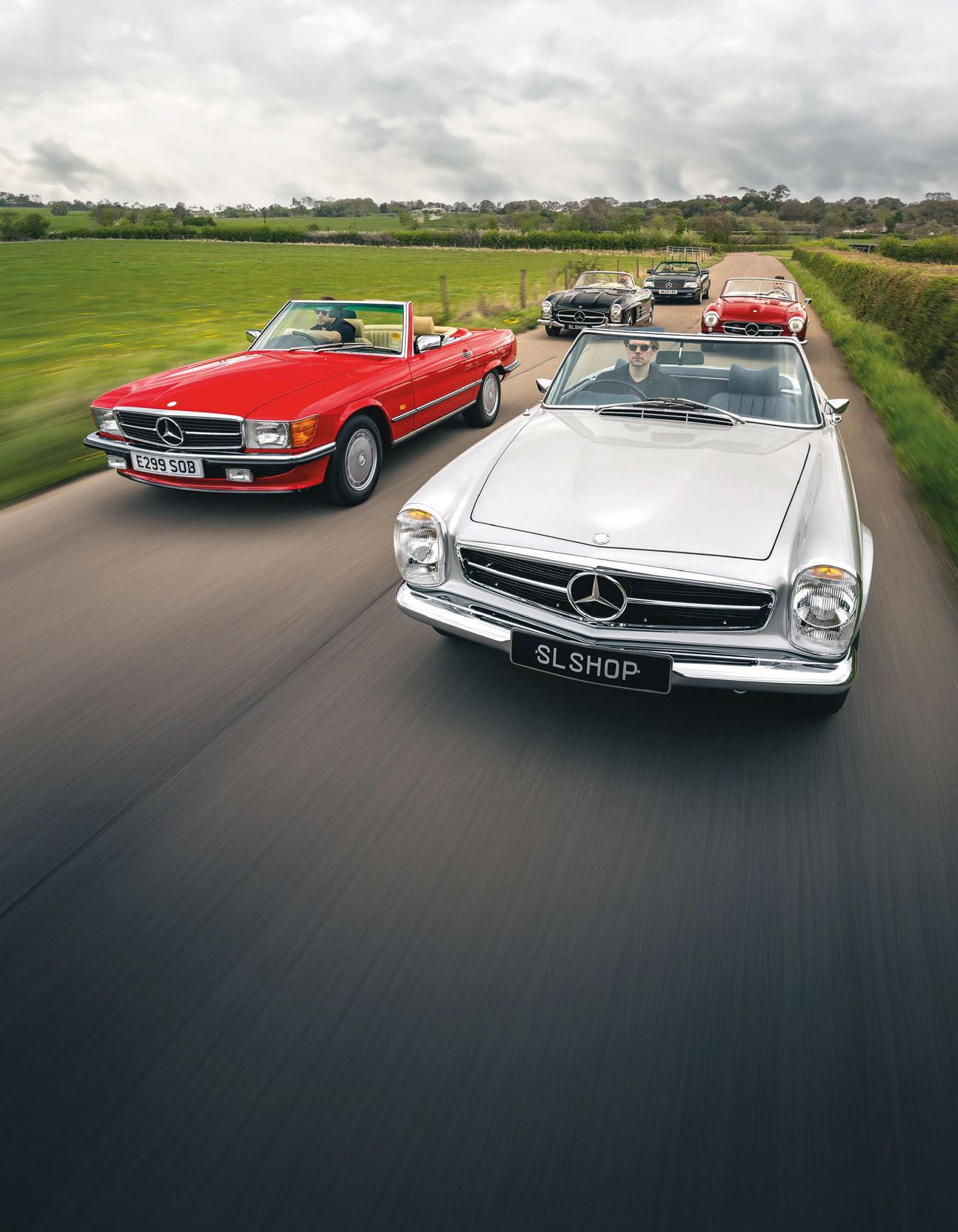
From our showrooms presenting the very best cars on the market, our extensive workshops geared to the service, restoration and preservation of these magnificent motorcars, to the largest selection of parts backed with expertise. Supplementing owners’ needs are; Storage facilities, Transportation, Financing, CARE
Service Plans and it goes without saying expert advice and guidance that only comes with intimate knowledge of these cars. We have an infectious passion for classic Mercedes that will inspire you to get the most from your car and attract loyal customers who rely on us for guidance and advice.
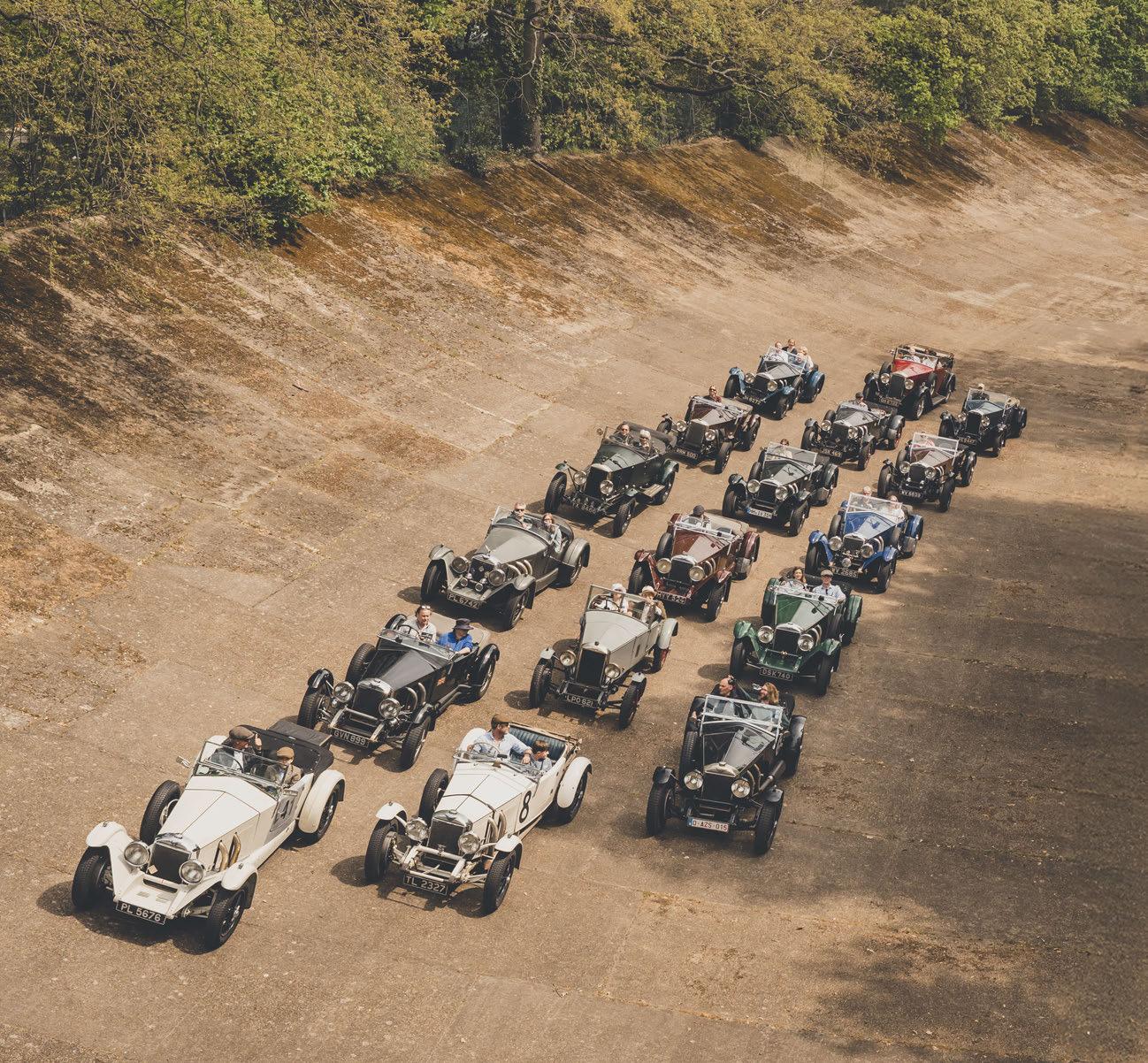
This special event celebrated 100 years since Invicta took to the road and track, bringing the cars together with members of the founding family



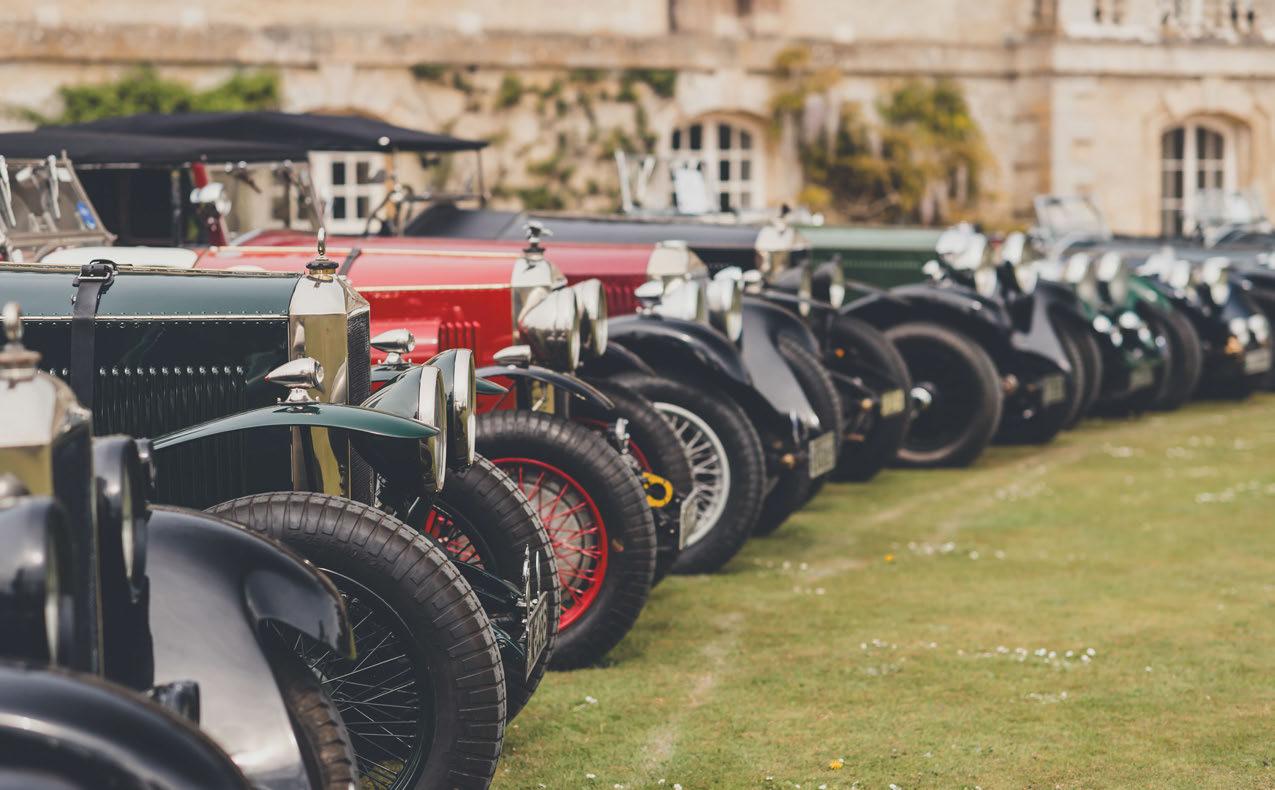
Although the company was formed in late 1924, the first Invictas as we know them, using Meadows sixcylinder engines, were built in spring 1925. The first road test was published with a car photographed at Brooklands, which was both close to the Cobham factory and well-known to Invicta founder Noel Macklin. Seems like the perfect excuse for a centenary celebration.
Captain Macklin (later Sir Noel) launched Invicta with the financial support of Oliver and Philip Lyle, of the sugar refining firm Tate & Lyle. It is therefore fitting that a private Invicta Car Club gathering should be held at Wilton House, just outside Salisbury, this magnificent pile being the home of the Earl of Pembroke, whose maternal great grandfather was Sir Arthur Tate, business partner of the Lyles. Lord Pembroke has one of the most famous
S Types, the very successful 1932 competition ‘White Invicta’ of Raymond Mays.
It is not the only significant location for this celebration, however, as we shall find out. But first, a history lesson.
Invicta’s design principle was to have the first-class build quality, comfort and reliability of a high-speed road car and not a sports car. Performance, however, was important, particularly in top gear. A rev-counter was not fitted until the later S Type because it might imply that the driver should be concerned with using revs through the intermediate gears.
The torquey engine was developed with Meadows, increasing capacity from the initial 2½ litres to 3.0 litres in 1926 and then further to 4½ in 1928. This was combined with a low overall weight of 850kg for the first cars but the chassis was redesigned in 1929 in order to stiffen it for the torque of the 4½-litre engine and for the heavier saloon, coupé and tourer
bodies that were fitted. This proven 4½-litre engine was then taken on and further developed by Lagonda.
World records were broken and set in 1926, first at Monza and then at Montlhéry, by Violette Cordery among others, earning a Dewar Trophy for the marque. Cordery had already won a race in an Invicta at Brooklands in 1925. A second Dewar Trophy was awarded to Invicta in 1929 for Cordery’s 30,000-mile run at Brooklands, driving the first of the New Large Chassis (NLC) 4½ Litre cars with one of her sisters, Evelyn. A third sister, Leslie, was married to Macklin, so it really was a close motoring family.
Other competition highlights over the years included Donald Healey’s victory on the Alpine Trial in 1930, which led to him using one of the new ‘Low Chassis’ S Types to win the Monte Carlo Rally outright in 1931 and another car to finish second in 1932. In the
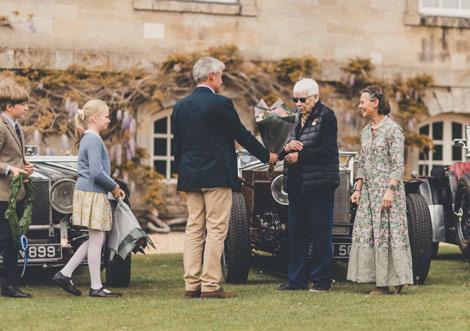


‘Some cars have been in the same family ownership for more than 60 years – and one since 1929’
meantime, Violette Cordery had driven one of the 3.0-litre cars around the world in 1927.
All of these activities were to promote the reliability and performance of the road cars but William Watson, who designed the cars for Invicta, finally got his chance to build the sports car he had wanted to with the S Type. Apart from the Monte Carlo, Healey won the Alpine Trial and set the record for the Stelvio with a young writer as co-driver, by the name of Ian Fleming.
The Tourist Trophy (TT) was a major International event on which Invicta proved its cars’ speed with the S Types. In 1931 Tommy Wisdom lapped faster than Bentley’s 1929 record, winning the class. Cars put in strong performances in the Brooklands ‘Double Twelve’ (24-hour race) and Raymond Mays set the record at Shelsley Walsh in 1931 and then again in 1932 with a second car, in which he also won the Mountain Championship
at Brooklands. Mays’ enthusiasm for the cars’ potential had persuaded Noel Macklin to build outright competition cars for 1933, with Le Mans as the target, but the economic situation put paid to such plans.
The Invicta Car Club was established in 1937, when the Invicta Cars Service Department was still in operation, and included many key people from the factory and the world of racing, not least Violette Cordery, SCH ‘Sammy’ Davis and Bill Boddy. Members competed in contemporary sprints, trials and rallies, as well as meeting for social occasions, all of which helped to keep many cars on the road as they had access to technical advice and spare parts.
Many members remained involved for decades, helping to keep and build records of cars and first-hand accounts of events to enhance the factory information and published material. A number of the cars have been in the
same family ownership for more than 60 years – and one since 1929.
On display at Wilton for the celebrations are 38 Invictas, ranging from the oldest surviving car – a 2.5 Litre – to the last S1 built by the Invicta Car Company in 2006. Members have driven them from as far away as Germany and Belgium, others from Scotland and Ireland; one member has even travelled from the USA.
Raymond Mays’ first car (from 1931) and the 1932 car are present, plus the S91 ‘Simplon’ that was a 1931 works car in the TT and Brooklands Double Twelve. The S Type ‘Sea Eagle’ has not only has been in the same family since 1941 but also was the wedding car of Violette Cordery and John Hindmarsh, the 1935 Le Mans winner. One of the 4½ Litre High Chassis cars served on the Met’s Flying Squad in 1929, while another had completed a huge mileage at Brooklands and in other speed events through the 1930s.

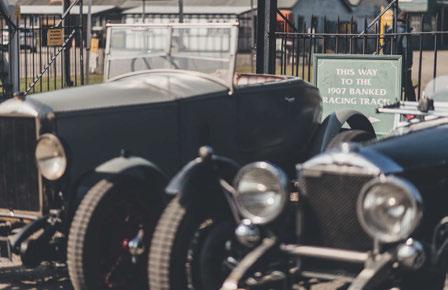
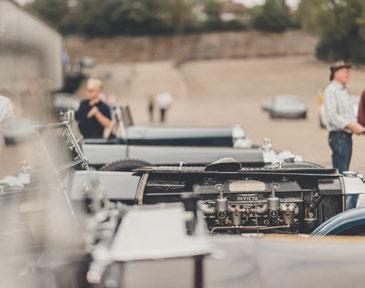

In addition to the cars on the lawns, period films shown included the 1927 Round The World trip, 1929 Brooklands 30,000-mile records, and views inside the factory in 1926. The photo album of the 1927 trip is on display too, along with some of the significant trophies awarded to Invictas in competition, kindly loaned by their custodians. An amazing amount of history in one place.
Two members of the Macklin family are present: Noel’s granddaughter, Miranda Kelly, and her mother Shelagh (now Lady Montague Browne), who had been married to Noel’s son, Lance.
Before his Formula 1 and Aston Martin factory sports car career, which included a podium at Le Mans in 1951, Lance had raced an Invicta at Chimay in 1948. This car, ‘Felicity’, is at Wilton – and will appear at Brooklands.
And that’s entirely appropriate for the second day of the celebrations, given the sheer number of historic Invicta achievements made there. The convoy leaves Wilton and
heads east via several places of note for the marque, among them All Saints Church near Marlow, the riverside location of the grave of Sir Noel and Lance Macklin. Miranda Kelly then accompanies me for the rest of the journey in the 1931 Mays car, a special occasion for me as my father, Bob, had been friends with her father, Lance.
The team at Brooklands is driven by the passion and knowledge of Vice-President Allan Winn, who has arranged things perfectly: the scoreboard on the Finishing Straight bears the names of various period Invicta drivers, which only adds to the spectacle of 18 Invictas assembled in front of the Clubhouse.
Also notable is the presence of the Barnato Hassan Bentley 8 Litre, brought out of the Brooklands Museum. This is the car that held the Outer Circuit Record at Brooklands and was raced at Spa in 1948 by Lance Macklin; it is therefore wonderful to see it next to the Invicta he had raced earlier that year.
For many of those present, the opportunity
of a lifetime is to see these cars assembled on the banking, the most Invictas ever to be at Brooklands together as, even when new, only a couple would have been on the track at the same time. It’s a genuinely historic moment not only because of the range of models gathered on the banking but because there are two Macklins aboard, Miranda Kelly being in the oldest surviving car, a wonderful connection to her grandfather, Invicta and everything since 1925.
It is credit to the build quality of the cars and the respect with which they are held that more than 90% of the S Types survive. Some models, however, are ever-rarer, particularly NLC, 4½ Litre ‘High Chassis’ and 1½ Litre cars, as they are cut up and used for their logbooks to create replica S Types. For now, here’s to another 100 years of seeing Invictas in use and keeping the history alive.
THANKS TO Lord and Lady Pembroke, Wilton House, the Brooklands Museum and Jo Moss.

David Ayre Cars has over 30 years experience in the Vintage Car Industry with a world class reputation for the restoration of 6 cylinder Bentley’s, Lagonda’s & Invicta’s.
We manufacture and sell new parts manufactured to the original plans and highest specifications. We’re also recognised as the go-to vintage car specialists if you want to enter internationally recognised concours events, competitively rally your car anywhere in the world.
david@davidayre.com www.davidayrecars.com 07785 365 890 davidayrecars
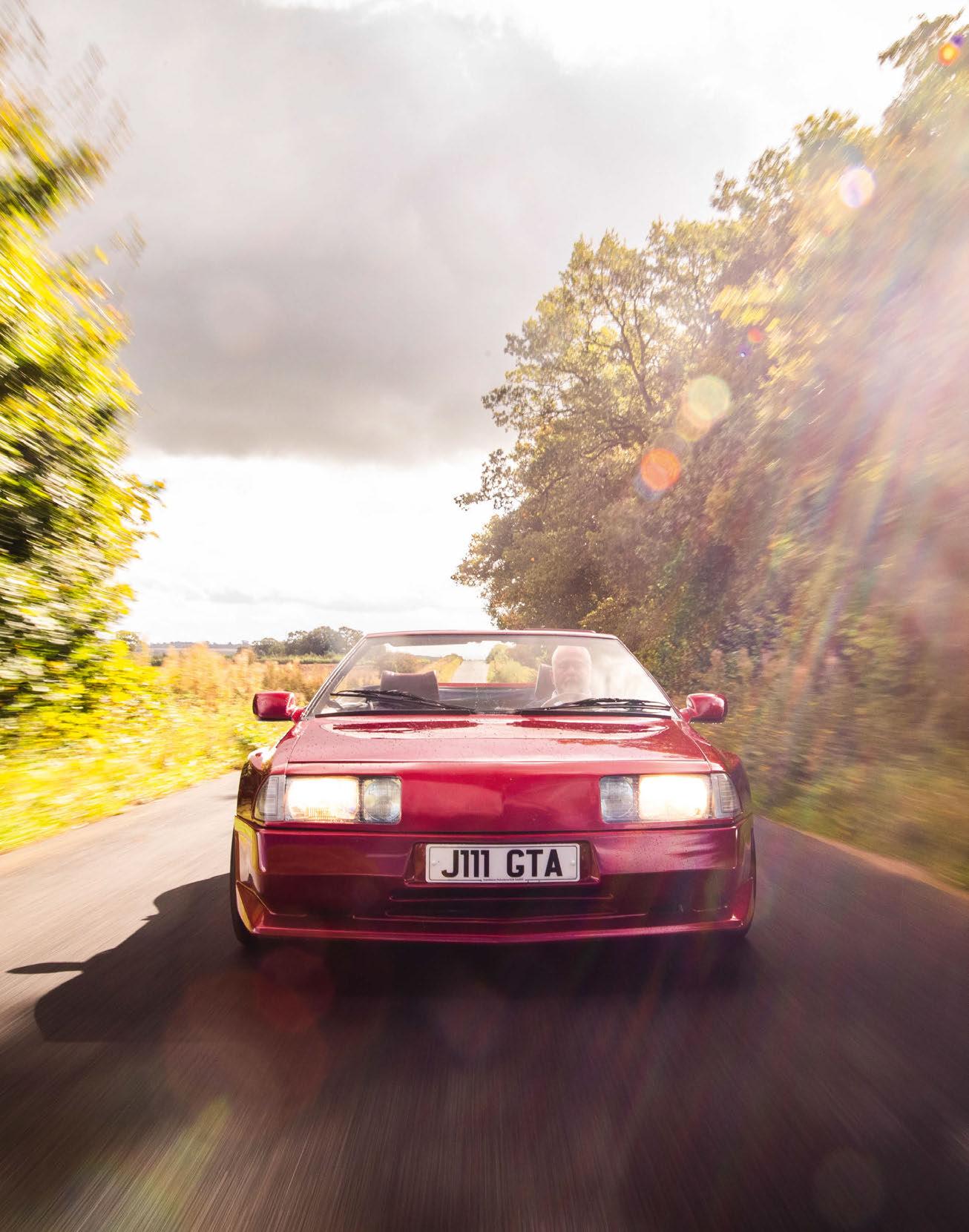
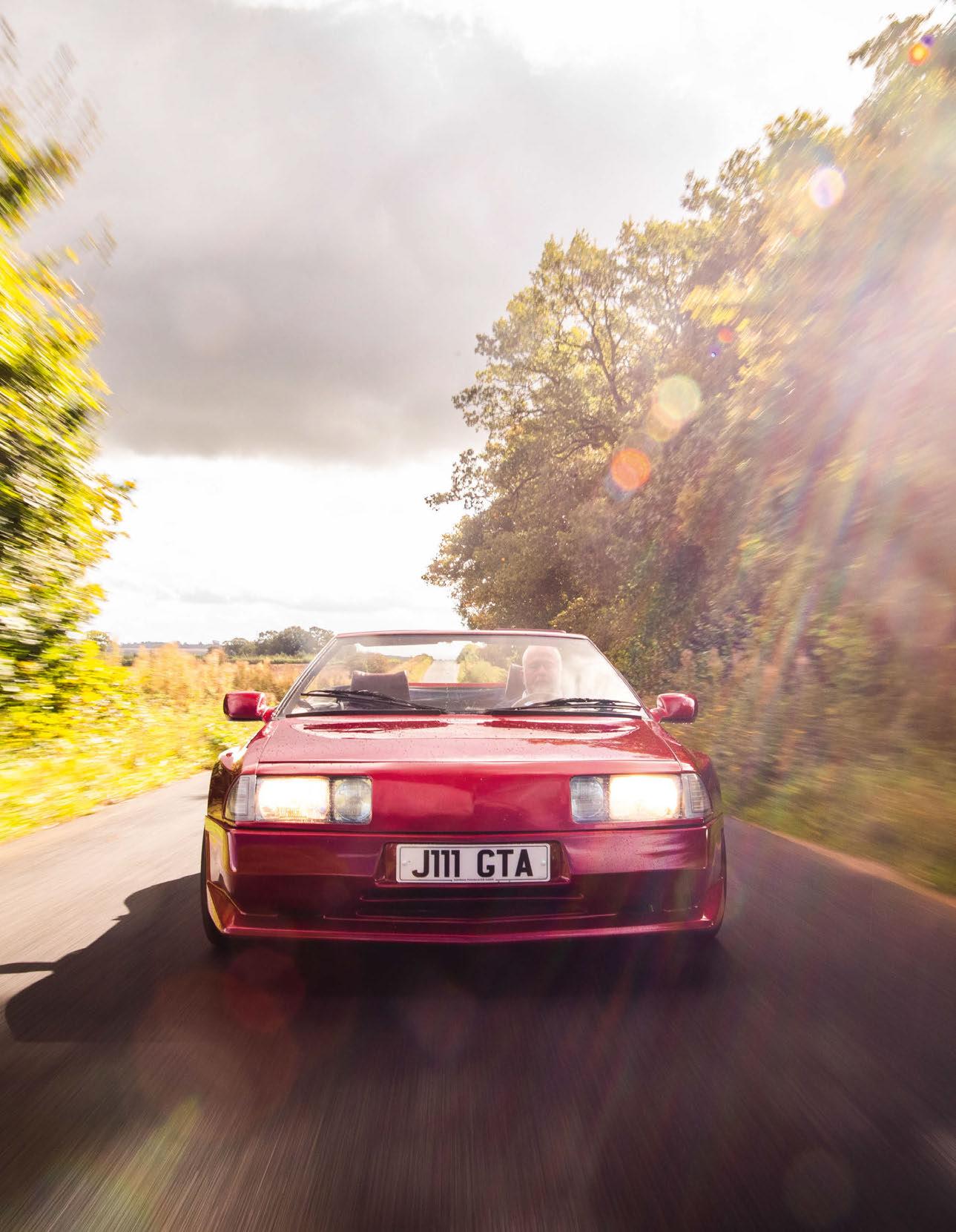
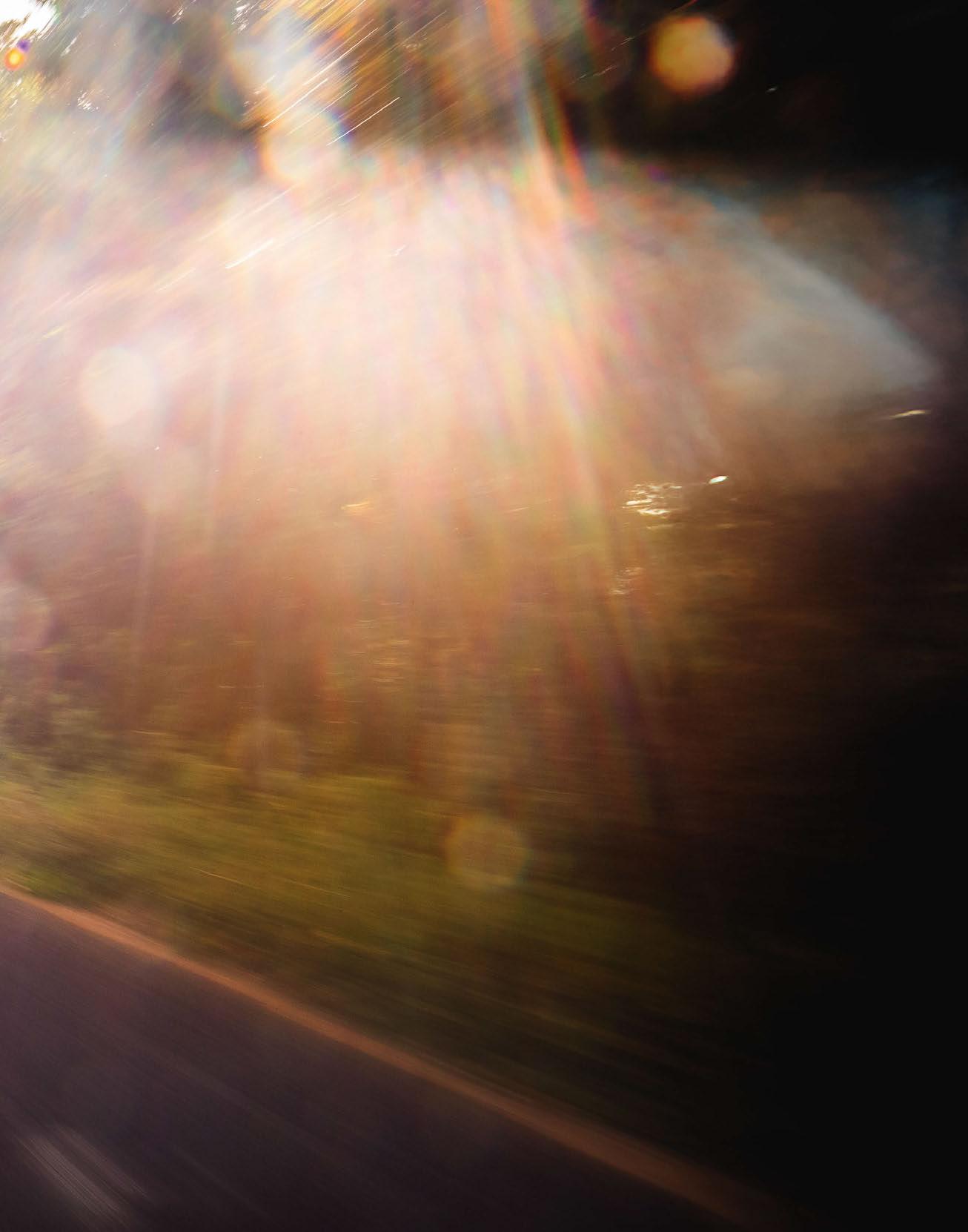
Alpine never made a topless GTA Turbo, but German specialist Pahnhenrich did. Matthew Hayward is in for a day of pure theatre
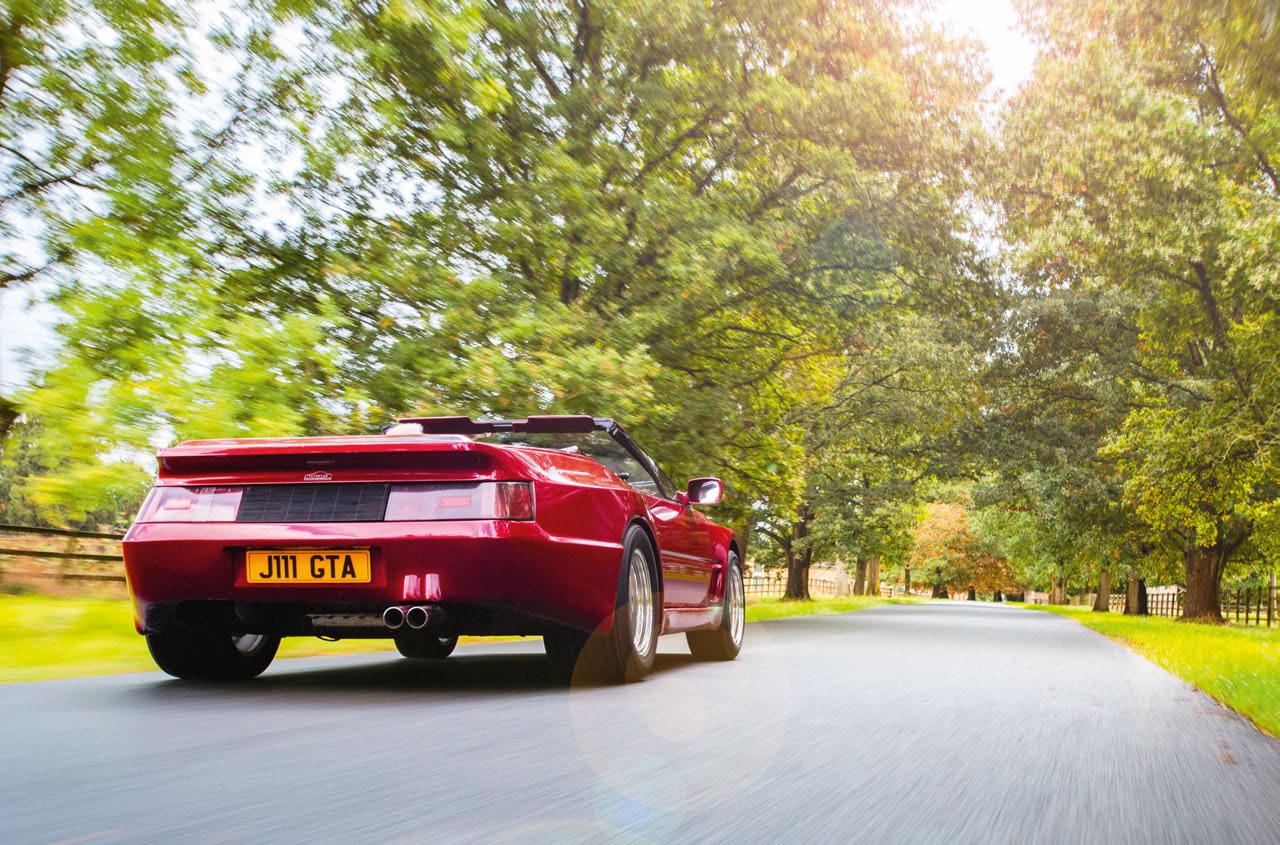
‘They’re actually the same rear tyres as a Lamborghini Countach’s.’ A fun fact dispensed by this car’s eager owner, Dominic TaylorLane, as I’m hunched down behind it. It measures two full metres across at the rear, so it makes sense that this widened Alpine GTA’s voluminous rear wheelarches would need monster tyres to fill them.
While sharing tyres with the Italian supercar might sound like great pub chat ammunition, it’s unlikely that anybody down at your local will have any idea what it is. Tell them it’s an Alpine GTA, and it will still take a reasonably knowledgeable car enthusiast to know. And this is clearly no ordinary GTA. Even more significant than the wide bodykit is the fact that this is a convertible.
At this point you might be thinking that Alpine, or Renault, never officially built a convertible GTA. The
factory actually built one prototype A610 during the 1990s, inspired by this very car, but it was never put into production. Even the latest, hugely successful A110 has only ever gone after Porsche Cayman buyers, never offering a Boxster equivalent. In fact, Alpine never really bothered with drop-tops much at all, after a tiny number of A106s, A108s and A110s left Dieppe during the early years. Perhaps it was due to the company’s rallying roots. This car was actually the handiwork of tuning company Autohaus Pahnhenrich GmbH. Primarily, this was an Alpine and – still to this day – Renault dealership in Gütersloh, northern Germany. During the early 1980s, however, Wolfgang Pahnhenrich was keen to take advantage of a gap in the market for a convertible Alpine. His first was the A310 Spyder, a process made relatively straightforward thanks to its steel backbone chassis and glassfibre body. With a widebody kit, super-wide BBS wheels and scissor doors, it was certainly eye-catching. Extra strengthening in the bulkhead and a rear roll-over
Above and right
Pahnhenrich’s conversion won’t have been kind to the GTA’s world-leading drag factor, but it’s certainly eye-catching – and it inspired Alpine’s subsequent A610 convertible prototype.
bar helped to put some rigidity back into the structure, but contemporary road tests confirmed that it was a car designed to turn heads more than anything else. Still, it was every bit as great to drive as the base car.
The company’s next project would be based on the ‘new’ Alpine GTA Turbo, and the result is the car you see here. Pahnhenrich conversions, much like any Germanbuilt bespoke car, were bound by TÜV rules and approval that required every part of the car to be certified in order to be declared road-legal in Germany. While this made such conversions expensive, it at least guaranteed that build quality was to a high standard. And that is immediately clear when you look at the details.
Much like its predecessor, being of a similar structure, the GTA is a great basis for a convertible. Mounted at the rear – just like a Porsche 911 – was either a 158bhp 2.9-litre naturally aspirated V6, or the 197bhp 2.5 Turbo. I mention the 911 because it was a genuine rival: the GTA was deemed by Motor to be the superior-handling car, if somewhat less robust than its German equivalent.
Pahnhenrich’s take on the Alpine GTA was extreme, in the vein of those wild Gemballa or Koenig specials. As removing the roof demanded new rear body panels, and a bespoke engine cover to match, then why not make it crazily wide? Of the ten or 12 genuine conversions known to have been carried out, it’s thought that only five or six were of this extreme wide-body format. The wheels are 15in three-piece BBS split-rims, measuring 8in wide up front and 11in at the rear. Mechanically, it’s all fairly standard thanks to the German regulations, although as all the Pahnhenrich cars were based on Turbos – and this car is fitted with a bleed valve in the centre console – the car offered a slight power increase (estimated at about 220bhp, up from 200) thanks to higher boost pressure.
This one is extra-special in being the only known example with a bespoke Koenig interior – as well as every
other factory option. While details of its early history are sketchy, it’s thought that this was either a show-car or a development vehicle. Records indicate that it was shipped from Alpine’s factory to Germany in late 1985, where the conversion was carried out. It wasn’t road-registered in Germany until late 1992, however, eventually being TÜV tested in 1997 and sold to the first UK owner in 1998. While the numberplate it wears technically makes this a 1990s car, it is pure 1980s excess at its core.
A coachbuilt car like this did not come cheap: the original sales brochure suggests a base price for the conversion of DM36,500, which is around £12,000 on top of the £30,000 or so the base car cost, and the special trim would have been extra – which is perhaps why this is the only car known to have been fitted with it. That interior is something Dominic has spent much time and effort on, replacing tired carpets and having the seats correctly re-trimmed to the Koenig spec. It certainly looks the part today, with the dash and most of the original plastic trim pieces covered in burgundy leather.
‘This GTA was extreme, in the vein of those wild Gemballa or Koenig specials’
He bought the car in 2023 and, although it has survived in incredible condition, a period of inactivity for the previous decade meant some recommissioning was called for. While support for Alpine GTA parts is reasonably good – its engine was shared with other Renaults, and the basic V6 with Peugeots and Volvos, too – some bespoke parts are incredibly difficult to track down. Even for owners of standard GTAs, rear lights and front indicators can be scarily expensive, if not impossible to buy.
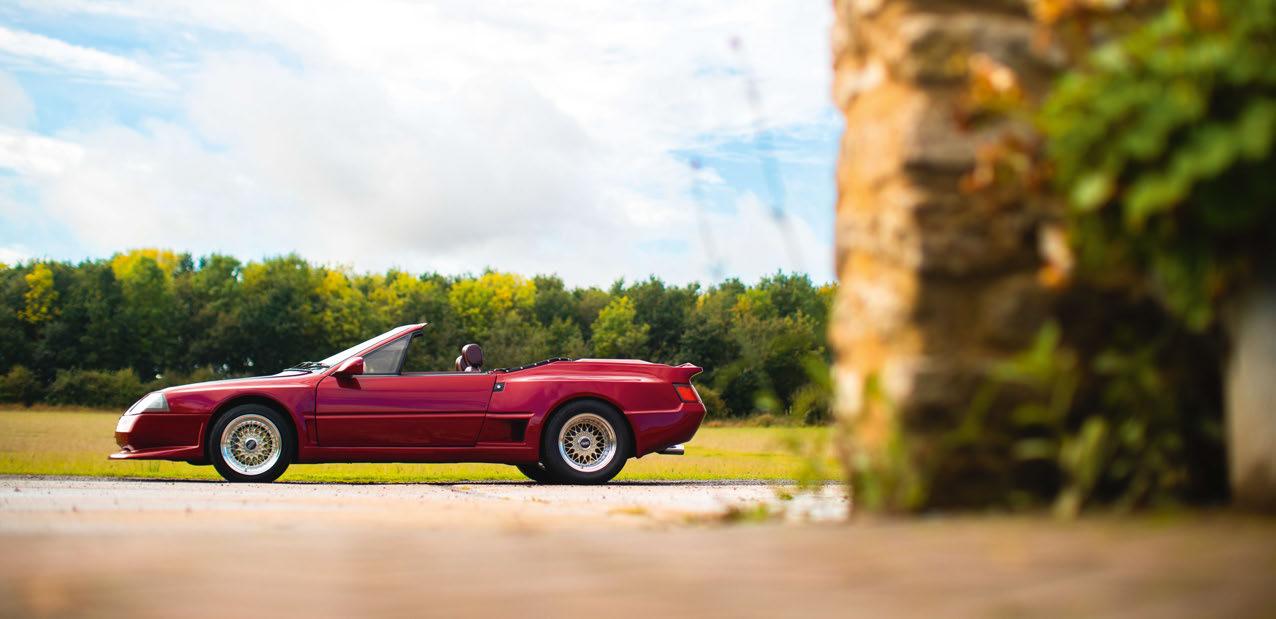
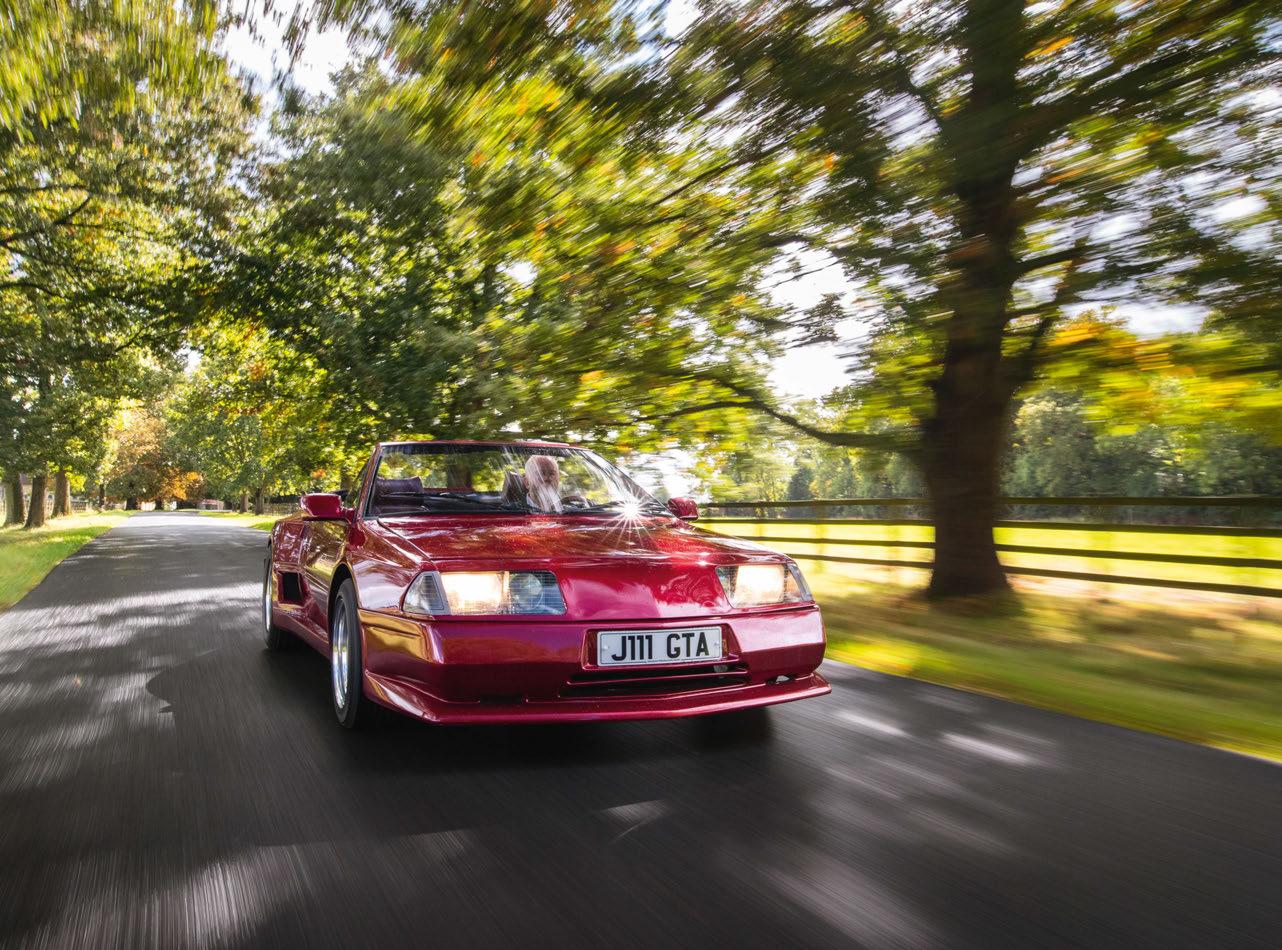

1985 Alpine GTA Turbo (standard coupé)
Engine 2458cc 90 º V6, OHC per bank, Renix fuel injection, Garrett T3 turbocharger Power 200bhp @ 5750rpm Torque 210lb ft @ 2500rpm
Transmission Five-speed manual transaxle, rear-wheel drive
Steering Rack and pinion
Suspension Front and rear: double wishbones, coil springs, telescopic dampers, anti-roll bars
Brakes Vented discs Weight 1210kg
Top speed 155mph 0-60mph 5.8sec
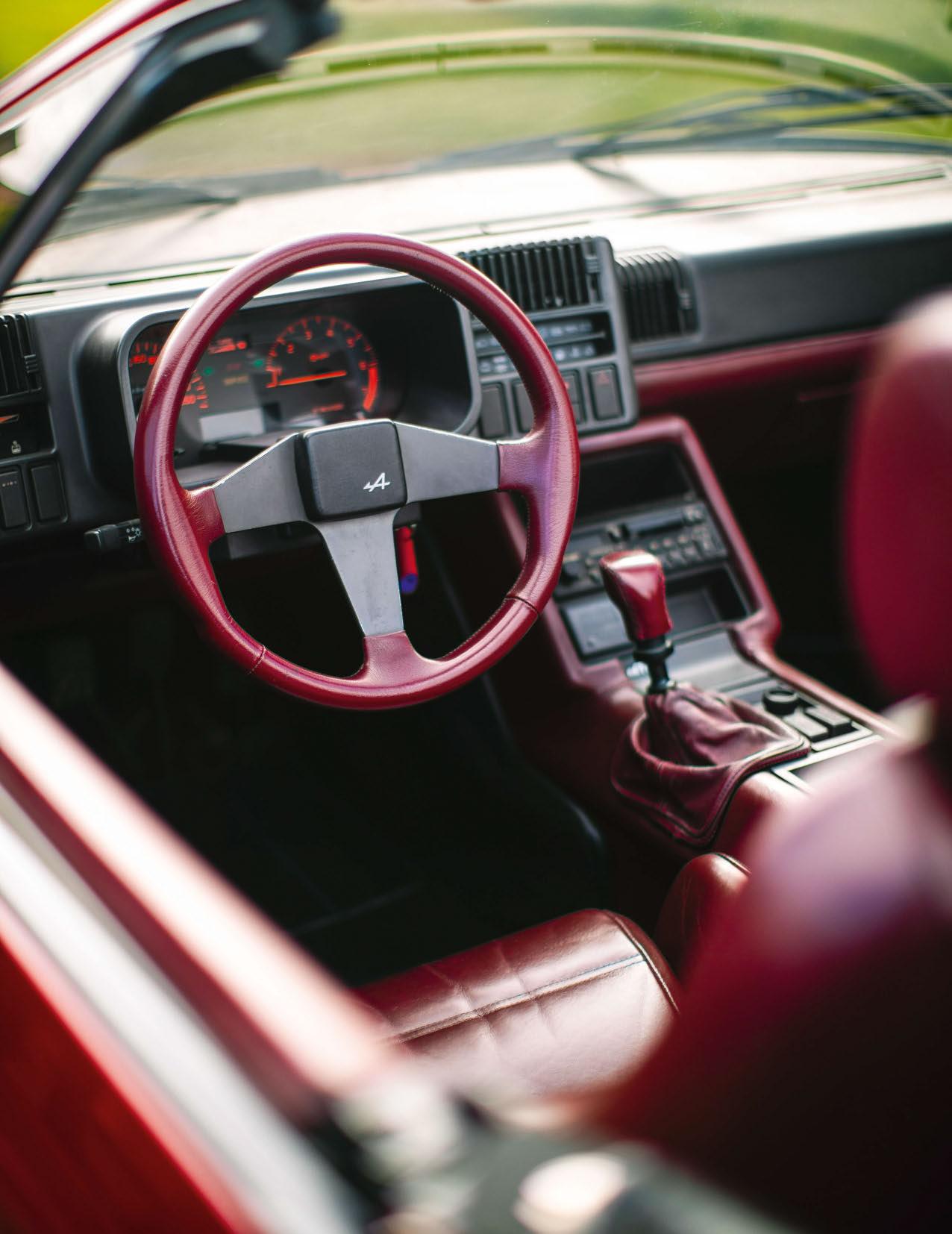
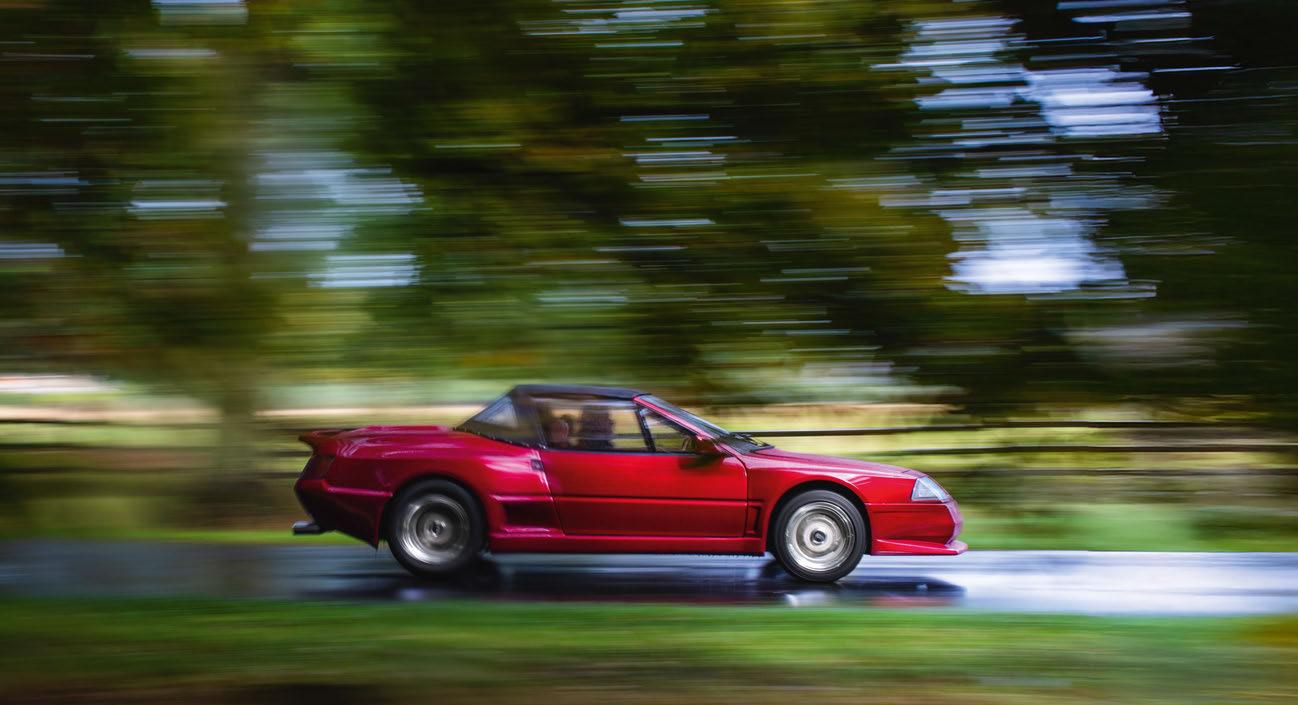
Perhaps the biggest challenge is actually finding a pair of those monster rear tyres to replace the perished originals. Lots of research was needed to get the roof back into serviceable condition, with all the trims and latches rebuilt and restored. This was a bespoke unit built inhouse by Pahnhenrich, and finding information was almost impossible – until Dominic tracked down a fellow Pahnhenrich owner in Germany, who had figured out the parts required for his own roof rebuild.
The GTA’s cooling system was never the best, so, in the quest for reliability, an auxiliary electric water pump has been fitted to help keep the temperatures down. After a thorough overhaul with new rubber seals, hoses and other perishables had been carried out, Octane was invited to take the car out and experience the silliness of such a wild machine first-hand.
Dominic’s Alpine can often be seen on display at his Bicester-based Classic Collective Workshop and I can’t help but laugh at photographer Drew Gibson’s expression when he sees the car for the first time. His eyes are as wide as those ludicrous ’arches. Given British weather, I halfjokingly ask how water-tight the roof is. ‘It hasn’t ever been out in the rain,’ says Dominic with a slightly nervous smile. I’m sure it will be fine…
In the isolation of the workshop, the Alpine’s width doesn’t seem so daunting, but out on narrow Oxfordshire lanes you really notice those 2m-wide hips. The slightly gruff-sounding 90º V6 is muffled by the single Garrett T3 bolted to its manifold, but there’s a pleasing turbo whistle to make up for it. We’re driving with the roof down, of course, and it’s pretty breezy above 60mph.
A torquey mid-range makes progress effortless. During low-speed manoeuvring, the lack of power steering is noticeable, but it’s a beautifully weighted set-up once you’re shifting. The small leather rim is absolutely fizzing
with feedback; inevitably there’s rather a lot of scuttleshake, though no more than you might encounter in any convertible of this era, to be fair, and that’s testament to the Alpine’s stiff underlying structure.
Stopping for static photography provides an opportunity to drink in the styling, too, and to try to wrap my head around it. It’s not easy. The more you look at it from various angles, the stranger and more peculiar it appears. I’m amazed at just how different from a regular GTA the Pahnhenrich looks, and that’s true with the roof down – or up.
Yes, a tip-off about impending rain means we hurriedly grapple with the soft-top. It’s a two-man operation, and far from the most elegant mechanism. Although it requires care, once in position, and clamped tightly, it looks substantial enough for a British shower. Which is good, as the clouds open while we head out along a quiet, smooth and tree-lined stretch of freshly laid tarmac that’s almost like being in the Alpine’s native land.
‘I’m amazed at how different from a regular GTA the Pahnhenrich looks’
As we arrive back at the workshop, I clock the huge grin on Dominic’s face. Unadulterated joy comes not only for the person driving the Pahnhenrich GTA, but also those who can see this burgundy show-stopper in action. It’s a genuine unicorn, and I for one am glad it’s once again roaming the open roads. And, importantly for us in the UK, we now know that the roof is water-tight.
THANKS TO the London Rally School, rally-school.com.

Poplar Farm, Bressingham, Diss, Norfolk, IP22 2AP
Tel: 01379688356 Mob: 07909531816
Web: www.asmotorsport.co.uk
Email: info@asmotorsport.co.uk

ASM R1 Stirling Moss tribute car enjoying track time at Goodwood.
ASM hand build bespoke versions of the R1 roadster, inspired by the Aston Martin race cars that won Le Mans and the world Sportscar championship in 1959. Contact us for details of commission builds and stock.
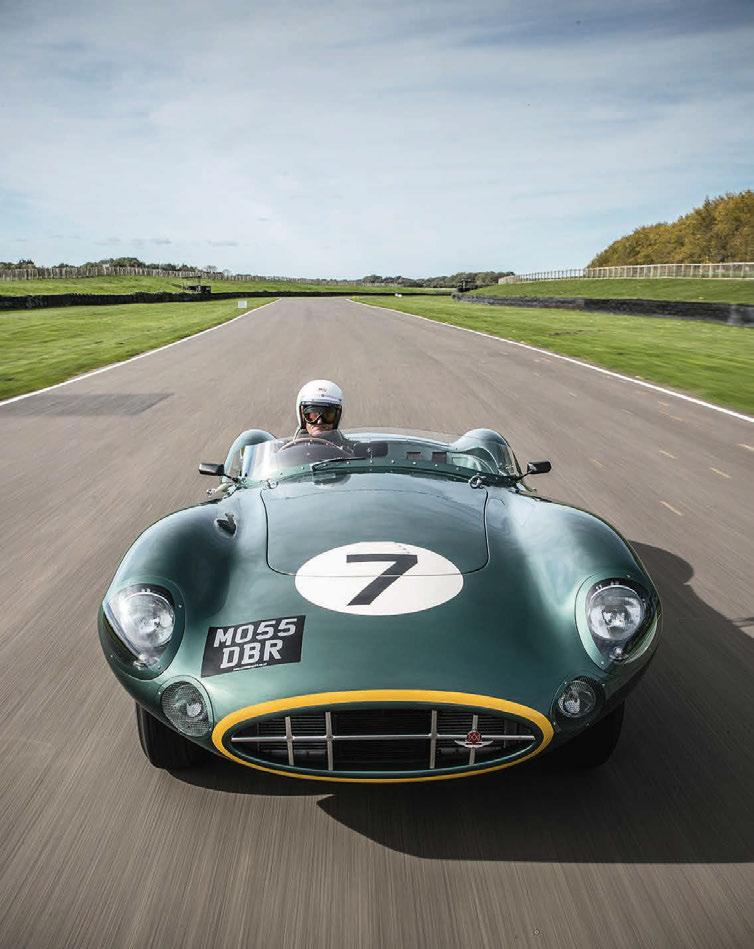


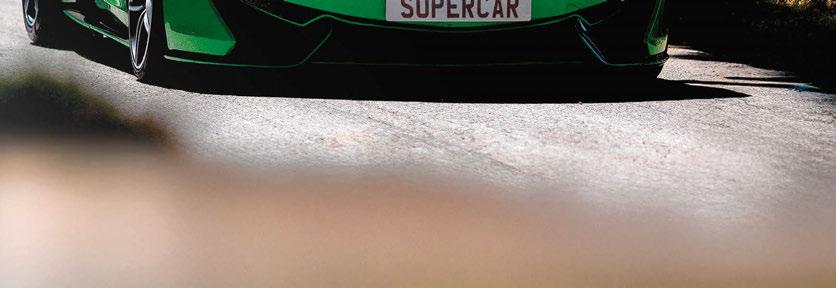


Alpine electrifies Dieppe with 70th anniversary celebrations – and major future plans

THE ALPINE A110 S dances over the train linkages as I enter LeShuttle, its burbling exhaust note flamboyantly ricocheting off the carriage’s steel walls. Once parked, the 1.8-litre turbocharged engine settles to a gruff idle before I silence its quartet of cylinders with a jab of the big red button in the centre console. Then the radiator fan whirrs into action, enthusiastically massaging air over the hot engine block, mounted just behind my fixed-back bucket seat. The exhaust ticks gently as the metal cools, relieved after funnelling 200°C combustion gases for the past 115 miles to England’s south coast and the Channel Tunnel.
It’s an incredibly good car, the A110. It feels effervescent, lightweight, brimming with character. And today I’m driving it to its birthplace in Dieppe, France, for Alpine’s 70th anniversary celebrations. It will join more than 1700 other Alpines – including hundreds of fellow A110s – alongside around 150,000 enthusiasts attending the three-day extravaganza from across Europe.
Dieppe is incredibly proud to be Alpine’s hometown; the marque’s presence is inescapable. I spot classic A110 rally lookalikes mounted above garages and bars, while Alpine posters and memorabilia decorate almost every shop, restaurant and boulangerie. Naturally, the 70th anniversary celebrations are front-page news in the local paper, too.
The most impressive spectacle of all, however, is the colourful sea of Alpines proudly positioned along Dieppe’s eight-hectare seafront green. Myriad models, from early A106s and A108s to classic A110 rally cars and wedgy A310s, continuing row after row. Countless modern A110s are present, too, including the limitededition, tricolour-liveried A110 R 70 launched to commemorate the anniversary milestone.
The vast Alpine contingent is complemented by a smattering of sporting Renaults, including several Sport Spiders – one even in full Mild Seven Formula 1 livery –as well as the usual smorgasbord of hot Méganes, Clios and even the odd Twingo. Enthusiasts mingle, snap photos, film vlogs, and queue out the door for Alpine’s pop-up museum – soon to become a permanent fixture in Dieppe. The atmosphere is fantastic.
Even so, Alpine’s 70th anniversary celebrations are only part of the reason I’ve made the pilgrimage to Dieppe. I’m here to glimpse the marque’s electrified future with the launch of the new A390 crossover SUV, and also to get behind the wheel of the new Renault 5-based A290 hatchback. Furthermore, Alpine is showcasing its Alpenglow Hy6 concept car at the event, which previews a 1000bhp V6 turbo-hybrid supercar that’s due to arrive in 2028.
The new EVs form what Alpine rather corporately calls its ‘Dream Garage’ line-up, composed of a city car (A290), a family car (A390), an electrified A110 sports car and a yet-to-be-revealed A310 four-seater electric coupé. All will be built right here in Dieppe.
These developments make the 70-year landmark feel even more significant. With Alpine revitalised by F1 recognition and critical acclaim for the A110, the challenge now is whether it can retain its loyal fanbase while reaching a broader audience as its production volume and model range increase. It’s a delicate balancing act and will be tricky to get right – just ask Lotus. A drive in the A290 should provide some early answers.


Clockwise, from opposite, bottom A sea of Alpines on Dieppe’s seafront; A106s and A108s with which it all began; convoys from miles around; new and old gather together; A310 police car – and one of several Alpine-themed buildings.
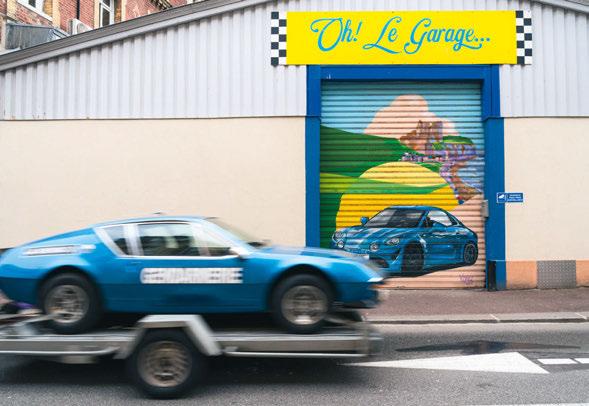
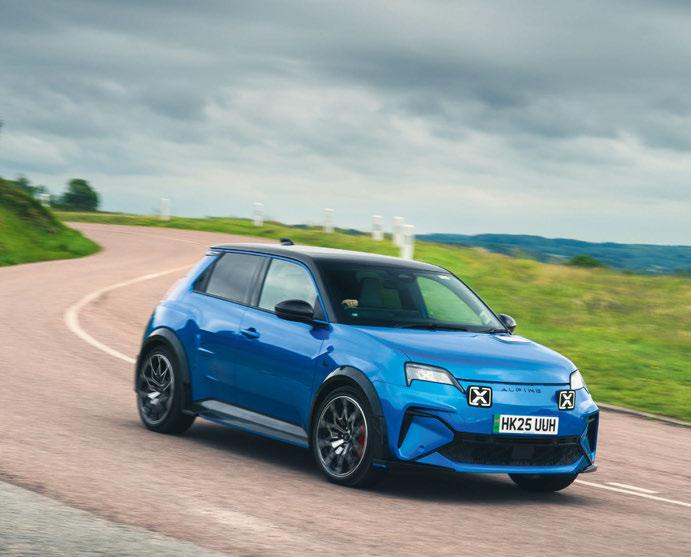
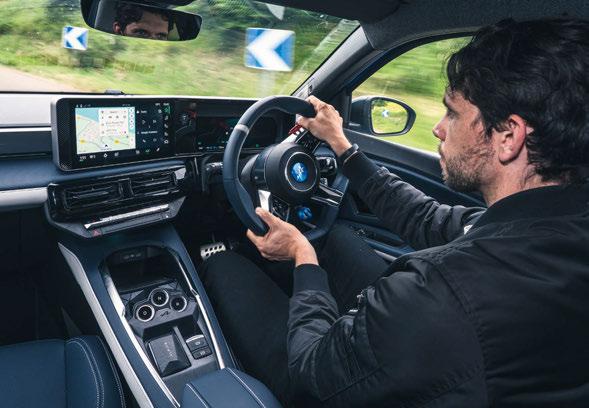
‘Few EVs have been so keenly anticipated as the Alpine A290’
Few EVs have been so keenly anticipated as the Alpine A290 or, for that matter, the new Renault 5 on which it is based. Finished in vibrant Alpine Vision Blue, the A290 makes an immediate visual impact. It’s slightly larger than expected, but its boxy proportions, rally-inspired flared ’arches and faux-spotlight driving lamps, complete with LED ‘X’ motifs, make it one of the most dramatically styled hatchbacks I’ve known.
The good news continues with the interior, which is clearly related to the inpressive Renault 5’s and features some special Alpine touches. Stylish sports seats, trimmed in leather on this top-of-the-range GTS Première Edition, are comfortable and supportive, while A110 gear-selector buttons populate the centre console.
The digital display and infotainment system are shared with the 5, set apart by bespoke Alpine graphics and drive mode integrations. The finishing touch is a flat-bottomed A110-esque steering wheel featuring an inviting red ‘Overboost’ button, contrasting with a rotary dial for regenerative braking. The design, materials and ergonomics all feel premium and well thought out, easily worthy of this top-spec model’s £38,500 price tag.
On the provincial roads of Dieppe the A290 feels fairly typical of an EV in many ways: sharp, accurate steering, low centre of gravity, rapid straight-line acceleration. But it’s also more engaging in the corners than you might expect, largely thanks to clever brake-based torque vectoring and a surprisingly light 1483kg kerbweight. It’s fun, and features such as the Overboost function – while ultimately a gimmick – give the A290 personality.
the new EV…
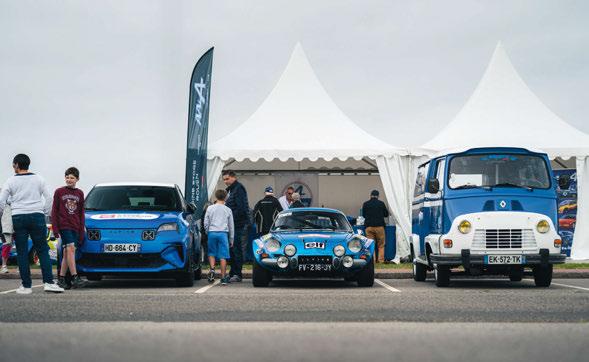
I like the A290 more than I expected. And I suspect many of the enthusiasts I’ve been speaking to in Dieppe – with a bit of help from a translator, as my GCSE French isn’t quite up to the job – would do, too, if they had the chance to drive it.
Predictably, the majority of Alpine owners here seem sceptical about electric cars, citing their lack of noise and character. One, who’d owned his classic A110 since 1979 and had since built up a small collection of European classics, felt that the A290 simply wasn’t for him. Others, however, were more open-minded, realising that while EVs don’t generally appeal to purists, they remain necessary to safeguard Alpine’s future. Hybrid powertrains are also a source of optimism; several owners hope one will find its way into the next-generation A110. Either way, Alpine’s future looks remarkably bright. I’ve no doubt there’ll be even more cars – and even more fans – at the marque’s 80th anniversary in 2035. And I hope to be there, too, arriving in whatever form its next great sports car takes, be it electric, a hybrid, or piston-powered.
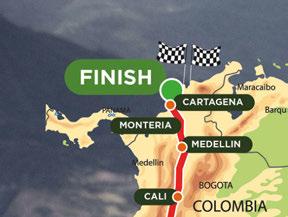







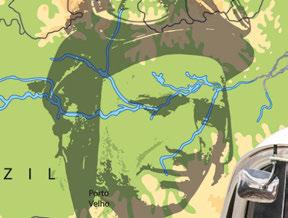





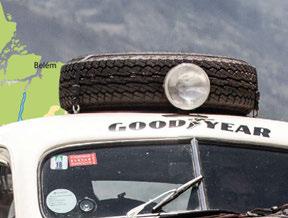
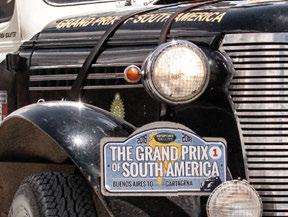
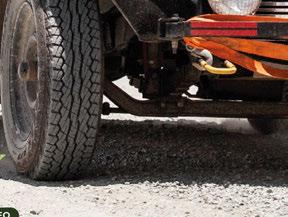

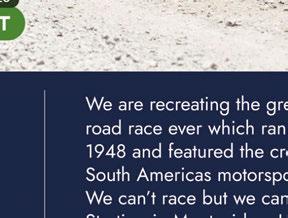


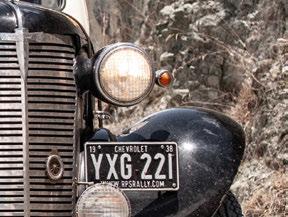
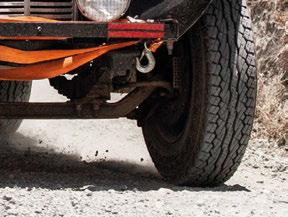














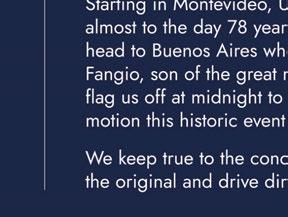


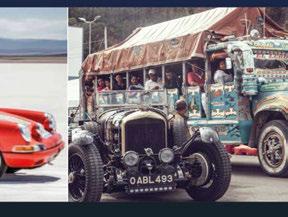

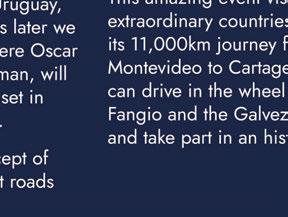


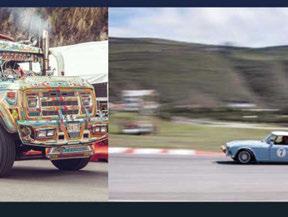



















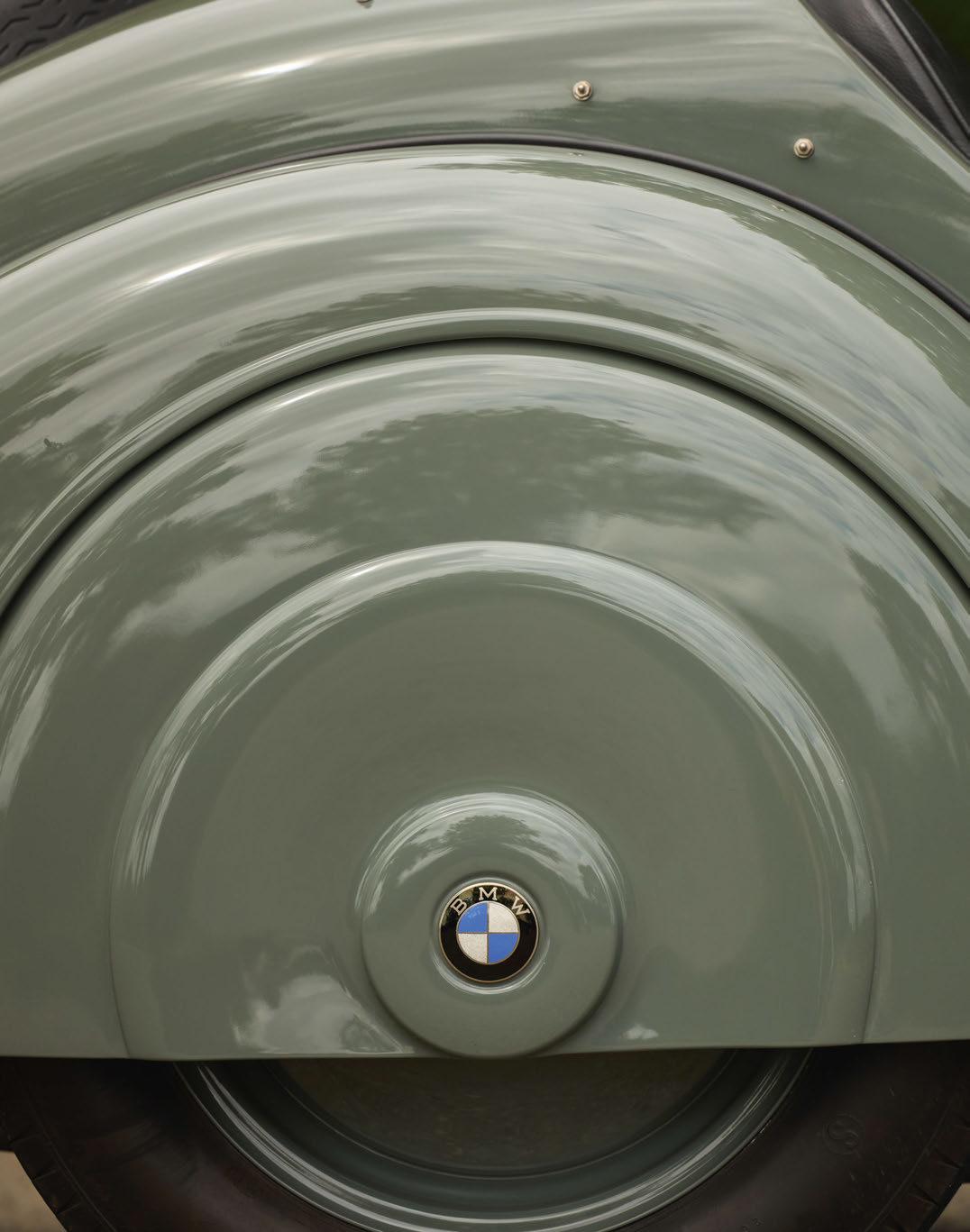
This delectable BMW 328 spent most of its life in disguise. Glen Waddington uncovers its story
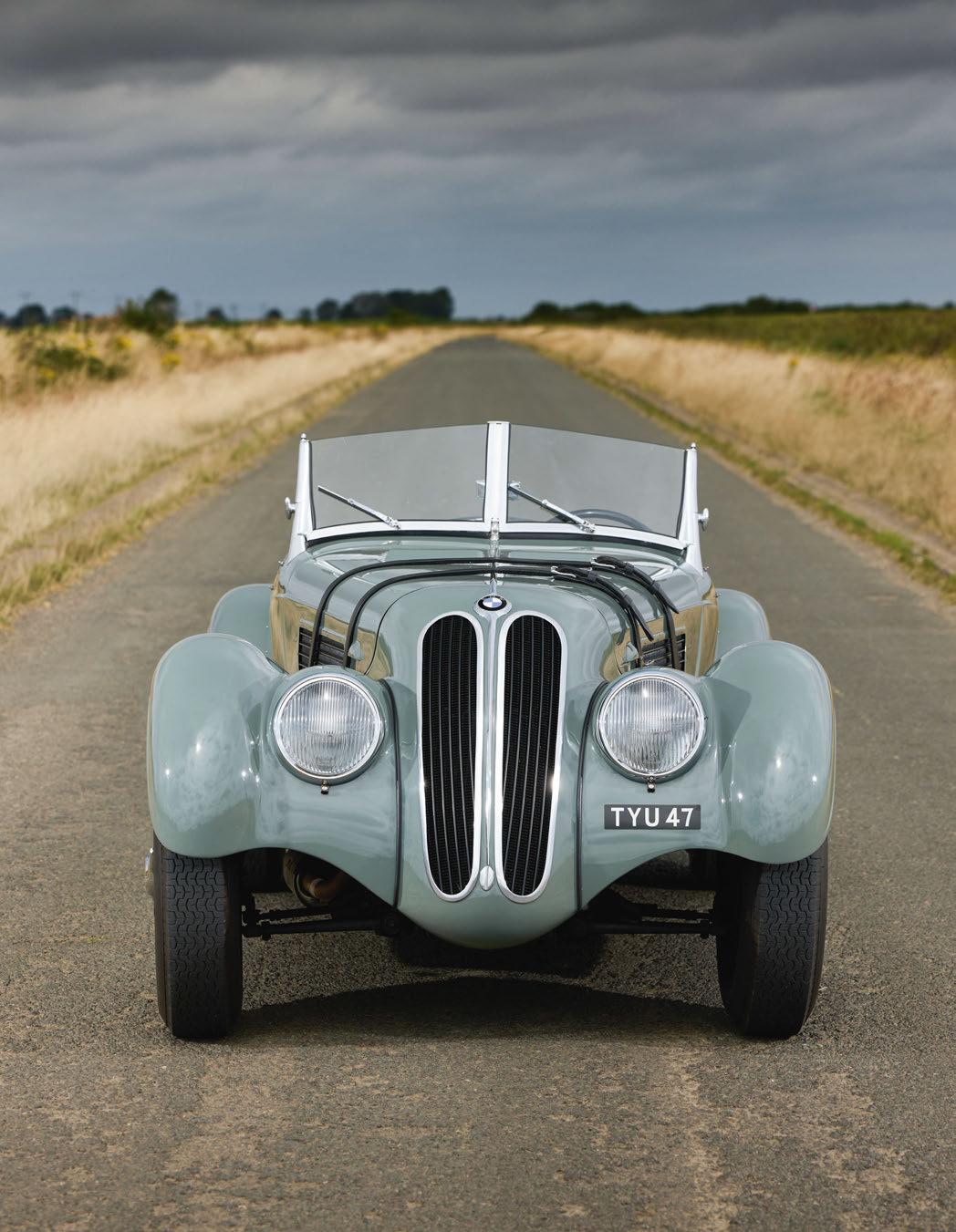
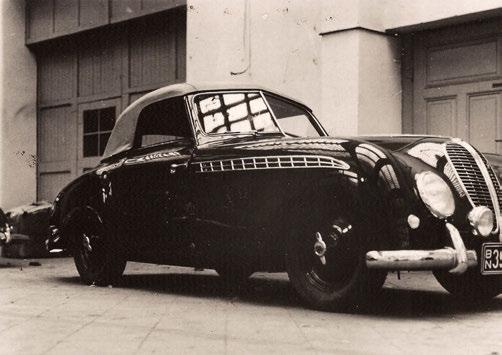
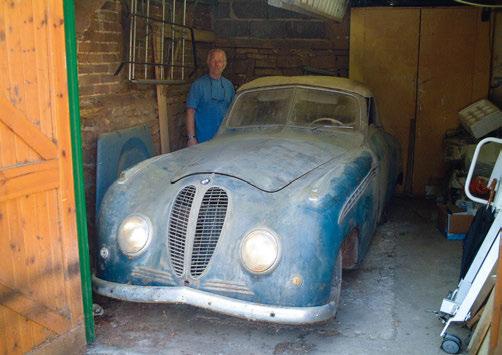
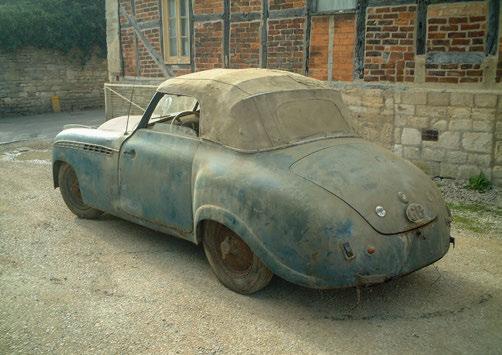
Before I could see it, I heard it. The venue was Boughton House, a summer weekend car meet in the beautiful, manicured grounds of this Northamptonshire stately home, built originally in the 17th Century by the First Duke of Montagu and known as ‘The English Versailles’. Gracing the landscape on a sunny Sunday morning since early doors had been an eclectic mix of Jags and Astons, Mercs, Morgans and a Matra, the odd Rolls, V8 Americana and V8 TVRs, a smattering of modern hot hatches, a Lancia Aurelia B20 GT and (of course) myriad Porsches. I attended in my 1989 BMW 320i Convertible, and then suddenly I was listening to its echo, the deep and steely lap and burble of another BMW straight-six at idle. Only one with rather more depth and steeliness. More gravitas in its note. More history
Which is fair enough: 50 years separate the creation of this beautiful 1939 BMW 328 from that of my 320i and, while they each represent a milestone in the evolution of the marque, all they really have in common beyond a certain fastidiousness and driver-centred appeal is that 2.0-litre engine layout. I’ll shut up about my mass-produced car now and instead revel in the gorgeousness of this handmade grey pre-war roadster, complete with matching disc wheels (under spats at the back, of course).
Yet all may not be as it seems. The BMW’s owner might be familiar to regular readers as the same man who has the Chevrolet Firenza CanAm, the hot-rod V8-powered racer that appeared in Octane 205. But really, Richard Wyldes is a BMW man through and through, on both two wheels and four, and he hints at this car’s unusual heritage before we arrange to meet again.
THE 328 IS NO less arresting on second acquaintance, but there’s greater opportunity to get up close and personal with it away from the distractions of a car meet, and now Richard’s attention is undivided, too. He guides me round to the low-cut driver’s door, which opens out suicide-style and clicks shut with delicious precision, the panel edges crisply protected by slivers of brightwork. There’s a large-diameter threespoke wheel and you sit on a broad, flat yet surprisingly comfortable leather-trimmed seat that’s a world away from a racing-bucket style, and survey an array of beautiful ivory-faced dials ahead, speedo and revs either side of the wheel and supplementary gauges centre-dash.
Sprouting up from the floor in the centre and towards your right hand is a lengthy, wand-like gearlever. The engine catches on the button and settles to that warm, steady, chuntering idle. It feels surprisingly modern, only the vee-shaped split windscreen there to belie its apparent youth –it’s approaching 90 years of age, after all. Another surprise.
So far, so BMW 328. But what of this divergent past? Well, first it’s perhaps a good idea to consider the history of the 328 itself. As a measure of its significance, in 1999 it was shortlisted from a 700-strong selection for Car of the Century to become one of 26 considered by a jury of 133 professional automotive journalists from 33 countries, presided over by Lord Montagu of Beaulieu. The 328 was designed by Fritz Fiedler, employing a new tubular steel ladder-frame chassis (two 90mm-diameter longitudinal rails with three crossmembers along its length) and featuring
Left, from top, and opposite
The 328 pictured in coachbuilt guise at the Autenrieth factory in 1948 and when discovered in Gloucestershire; it was subsequently restored with an original-style factory body.
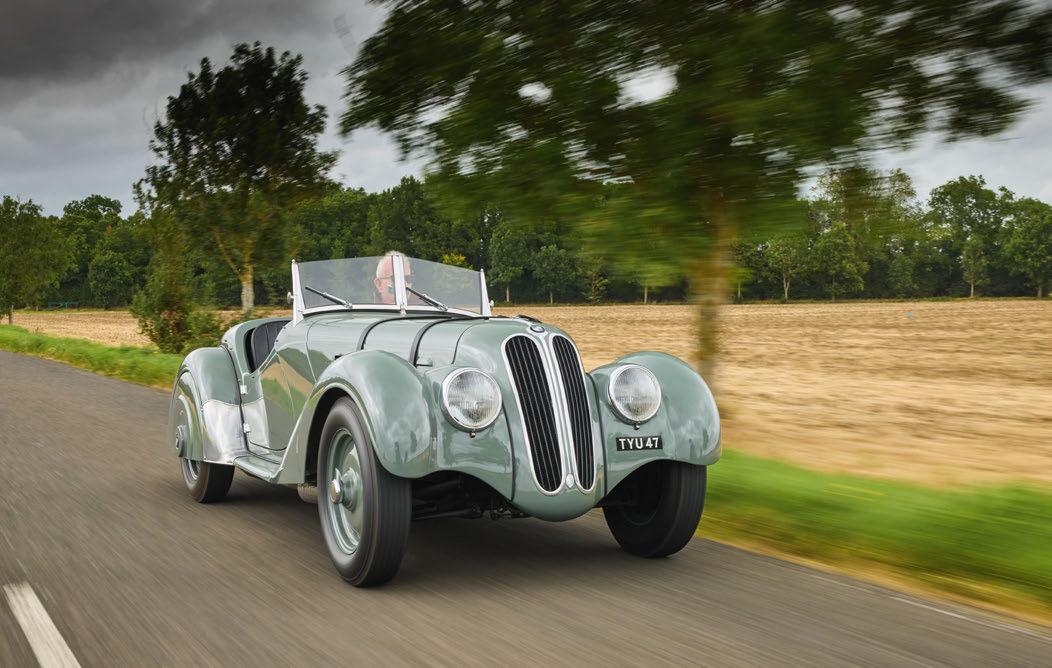
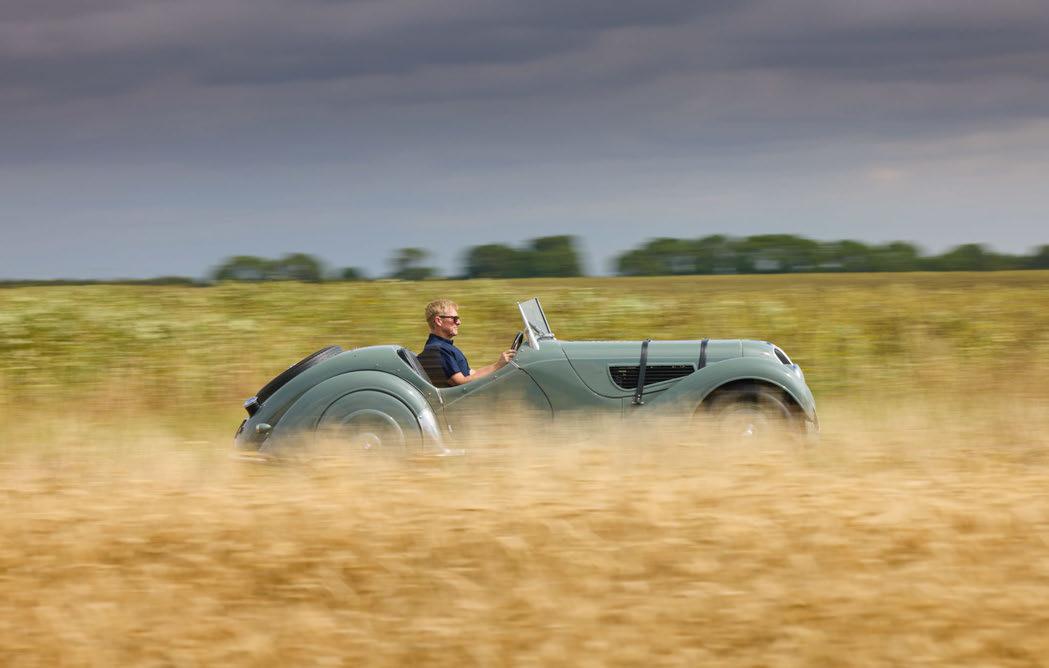
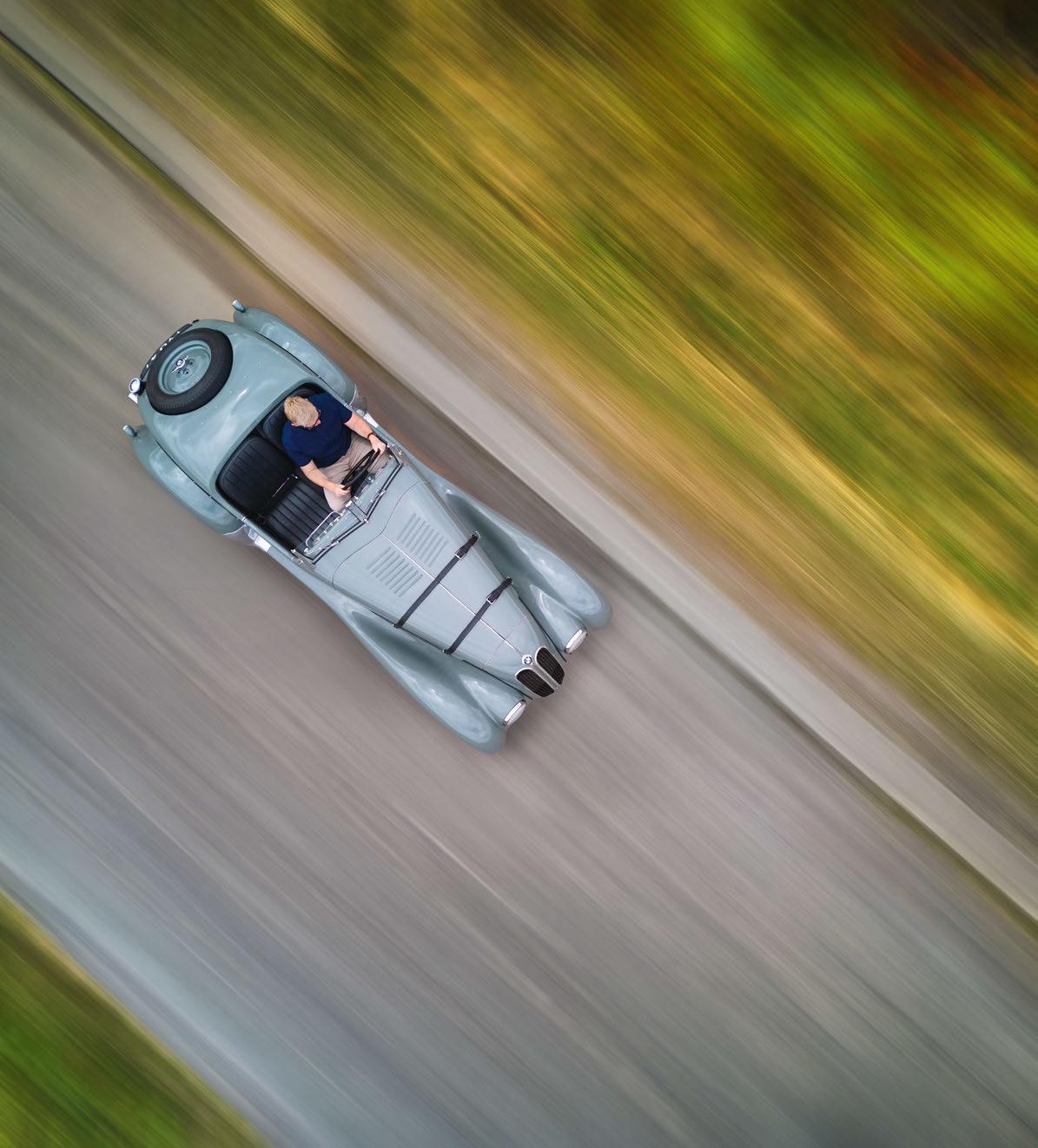
‘CLEARLY IT WAS A TALENTED CAR, AND ONE GIVEN TO INTERPRETATION BY COACHBUILDERS’
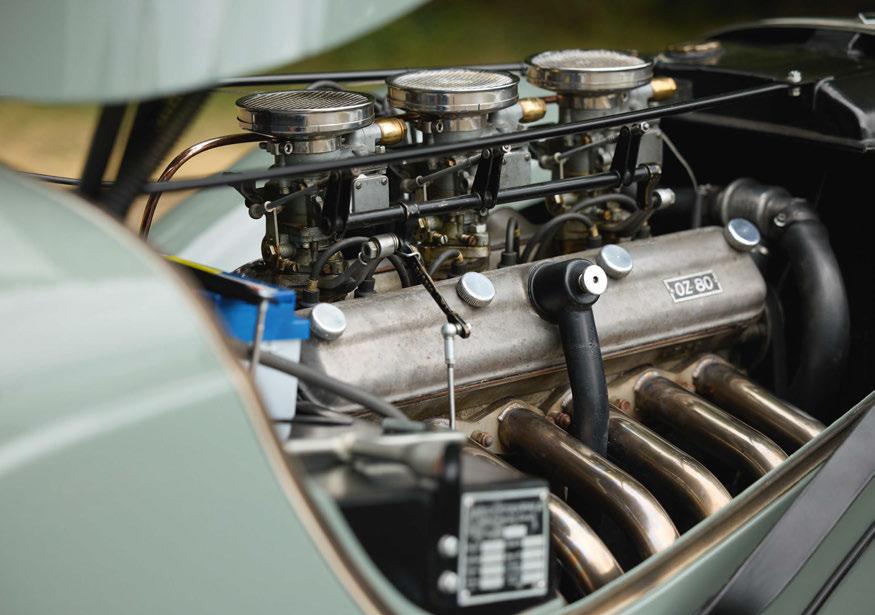
delectable bodywork with faired-in headlamps. Doors, bonnet, tub and tail panel were of aluminium on an ash frame; steel was used for the rest. It was introduced at the Eifelrennen race at the Nürburgring in 1936, a sports car that departed from the preceding 315/1 and 319/1, both of which had been developed from the 303 of 1933 – BMW’s first sixcylinder car. Driven by motorcycle land speed record-holder Ernst Henne, it won the 2.0-litre class on that maiden outing. More than 100 class wins followed in 1937, including the RAC Tourist Trophy and France’s La Turbie hillclimb. Outright victory came on the 1939 RAC Rally, as well as a class win in that year’s Le Mans 24 Hours. In 1940, the 328 MM Touring Coupé won the Mille Miglia with an average speed of 166.7km/h (103.6mph).
Clearly it was a talented car, and one given to interpretation by coachbuilders (not least in streamliner form for endurance racing), keen to make their mark on such impressive underpinnings, built around that superb 80bhp alloy-headed overhead-valve 2.0-litre straight-six. In fact, 10% of all 328s were sold in chassis form (464 were built in total, from 1936 to ’39), though this particular example is one of the 90%, beginning life as a standard two-seater roadster in 1939 and delivered to Bavarian BMW dealer Paul Wege in Sylbach. The car survived the hostilities but in 1947 its owner commissioned Karrosseriebau Autenrieth to rebody it with an all-enveloping modern-style ’shell.
This Darmstadt-based coachbuilder was active between 1921 and 1964 and initially built its reputation on creating formal bodywork on chassis provided by the likes of Adler, Audi, Horch, Maybach and Mercedes-Benz. During the 1930s, as BMW’s cars grew in stature from their Austin Seven-based origins, customers started to seek alternative bodywork, and that relationship was resumed after its wartime period as an armoury supplier. Autenrieth became known for its work on such cars as the V8-powered 501 and 502, particularly in four-door convertible form. Founder Georg Autenrieth died in 1950 but his company
1939 BMW 328
Roadster
Engine 1971cc OHV
straight-six, three Solex carburettors
Power 125bhp @ 5000rpm
Torque 93lb ft @ 4000rpm
Transmission Four-speed manual with overdrive, rear-wheel drive
Steering Rack and pinion
Suspension Front: transverse leaf spring, lower control arms, integral single-acting dampers. Rear: live axle, leaf springs, lever-arm dampers
Brakes Drums
Weight 780kg (inc fuel)
Top speed 93mph 0-60mph 9.6sec

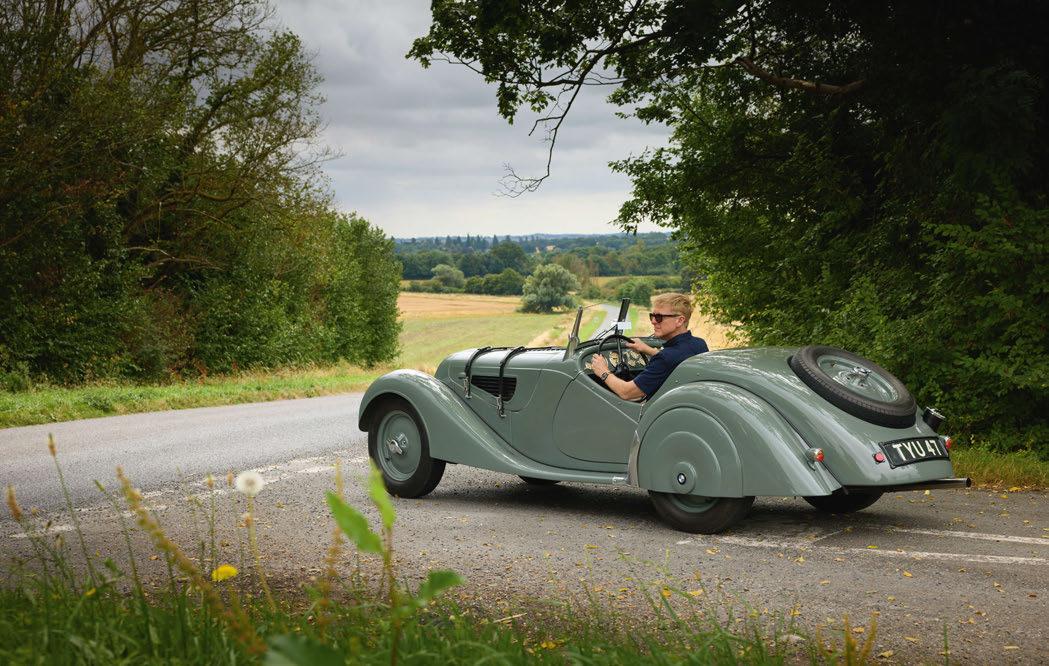
continued, diversifying into convertible bodies for the Citroën DS and Borgward Isabella, among others.
Richard takes up the story of his own car: ‘With its new bodywork, it was bought by a British serviceman who was stationed in Germany at the time. He later brought it over to the UK, that was in 1957, and in 1960 it was sold via Southern Car Auctions to Jackie Welton of Pardon Hill Farm – that’s the house halfway up the Prescott hillclimb course!’
It changed hands again once or twice and ended up in the garage of a property in the Cotswold town of Winchcombe, where it was discovered in 1965 as the house and garage changed hands. It remained there until 2004, when Richard was made aware of the car by pre-war BMW specialist Mark Garfitt. ‘When I found it, the Autenrieth bodywork was in sound but “barn-find” condition and, after researching its history, I thought it would be great to return it to its original 1936 specification. First the Autenrieth body was taken, on the chassis, to Clive Smart of Shapecraft Ltd, body fabricators in Northampton, and they carried out a full restoration on it. Then, in 2008, I decided to remove the Autenrieth body and seek an original two-seat roadster body. John Giles – formerly the owner of TT Workshops in Wiltshire – helped find an original body via a friend of his in Germany, and a new ash frame was made, using the TT Workshops jig, by Gareth Burnard of Former Glory in Frome, while the engine was stripped and rebuilt by Tony Byford of Racing Car Restorations of Swindon.’ As a result it now produces 125bhp.
It’s worth remembering at this point the 328’s part in the foundation of a British marque. As World War Two came to an end, in a bid to save his workforce, George White of the Bristol Aeroplane Company proposed to start building cars. After acquiring a majority shareholding in Frazer Nash, which had held a licence in the 1930s to build the BMW 328 for the UK market (as the Frazer Nash BMW), Bristol sent a delegation to the Soviet-controlled BMW factory at Eisenach, in what became the German Democratic Republic, and returned to Britain with plans for the BMW 327 and the six-cylinder engine as official war reparations. It brought back BMW engineer Fritz Fiedler, too, and developed the Bristol 400, in essence a re-bodied (according to aeronautical principles) BMW 326 with a 328 engine.
Why mention that? Well, because Richard’s 328 restoration involved rebuilding the gearbox with a BMW casing and Bristol internals. A Bristol overdrive was fitted, too, and acts on second, third and top gears.
‘The whole car and its powertrain were then shipped to Andreas Freudenberger of Eggenfelden, Germany, a third-generation BMW restorer,’ says Richard. ‘Along with English engineer John Bostin, they carried out all the work on the body and paint, using the original panels,
‘THE DELIGHTFUL RACKAND-PINION STEERING IS UNUSUALLY PRECISE FOR A CAR OF THIS VINTAGE’
Clockwise, from opposite, top Superb poise through corners; beautiful period toolkit; exquisite dash gauges –rev-counter slightly rotated for easier legibility; tiny door, generous seats; modest dimensions obvious here.
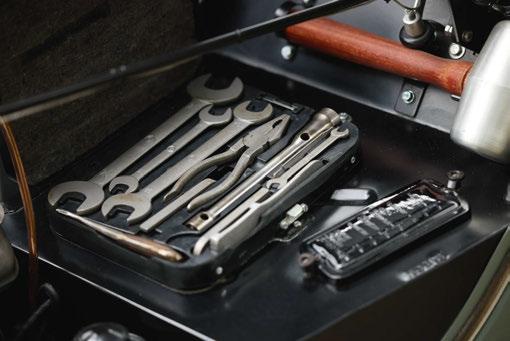

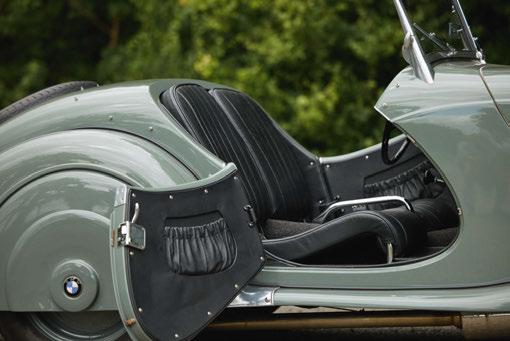
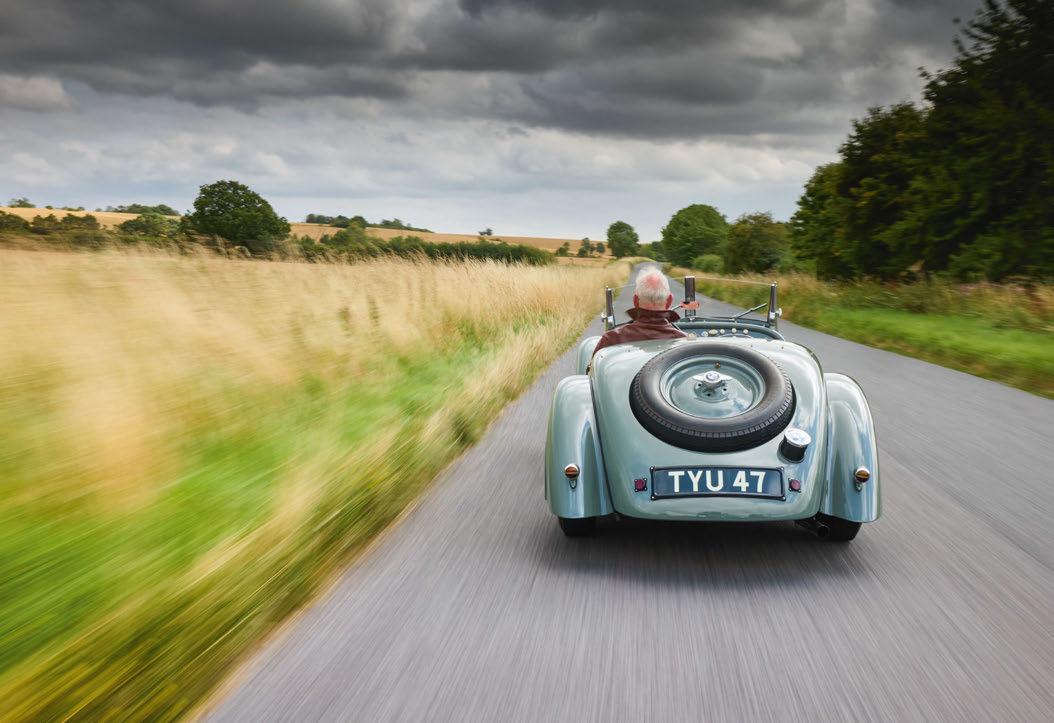
then fitted the rebuilt powertrain, made a new wiring loom and commissioned the car for the road.’
The grau paintwork was matched to original BMW 328 colour cards provided by Rainer Simons, author of the definitive book on 328s From Roadster to Legend. Trimming was carried out by Richard Dickinson of Autosattlerei in Hohenlinden, to an exceptionally high standard. Meanwhile, the Autenrieth body was mounted on a modified BMW 319 chassis, which had been restored by Freudenberger. ‘It now resides in a car collection in Austria,’ says Richard.
His rebodied 328 emerged in 2013. ‘It was delivered back to me on 11 August and, on 18 August, the car won its first event: Class 11 of the Bristol Owners’ Club Concours,’ he adds. ‘I suppose I could enter it in more concours, but I don’t – I own this car just for my driving pleasure. We use it regularly between May and October, in the UK and Europe.’
As well he should, if today’s driving experience is anything to go by. With no roof in place, headroom is clearly not an issue, and the rearhinged door gives you the best chance of inveigling your legs into the footwell without the need for double-jointed knees to clear that broad steering wheel, though you’d better be wearing slender shoes. It’s pretty limited width-wise; the whole car is only 61in across and the cockpit is pinched between the running board sections of those glorious, sweeping front wings.
While it’s intimate for two, all the controls are where you’d want them, and the gearknob is barely a finger-stretch from the slender wheelrim. There’s a conventional H-pattern to the gearbox, which has a long throw yet feels well-oiled and nicely mechanical in action, slotting into each
ratio with satisfying finality and absolutely no vagueness. With Bristol’s synchro on all the gears, you soon get into a flow, and there’s a rhythm to be had in dink-dink-dinking up and down and across the gate.
Same goes for the delightful rack-and-pinion steering, which is endearingly precise, unusually so for a car of this vintage, and it plays a significant role in making the 328 feel far more modern than its age suggests it should. Likewise the ride, despite leaf springs and a live rear axle, which is never harsh and is surprisingly well-controlled in terms of body movements. Put simply, it feels well-bred.
There’s about 125bhp at your disposal from that lovely 2.0-litre triplecarb straight-six, but in a car weighing less than 800kg that’s ample. It sounds and feels far more deep-chested than its modest swept capacity would suggest, swelling with generous torque that peaks at a high-ish 4000rpm, not that you’d ever call it peaky. Top speed is over 90mph and acceleration from rest will have you past 60mph around the 10sec mark, so it’s brisk by the standards of plenty of traditional roadsters, and a real road-burner for its era.
Of course, Richard did the right thing in making sure his car’s one-off Autenrieth bodywork could live on elsewhere; it’s an important part of this 328’s life story, even if it wasn’t built that way originally. That’s why its reinstatement as a factory-bodied roadster is not only appropriate but in itself also the right thing to have done. A car that drives as beautifully as this has the right to look as though it should. It was the most advanced sports car of its day, after all.
Turn to page 166 for John Mayhead’s market appraisal of the 328.
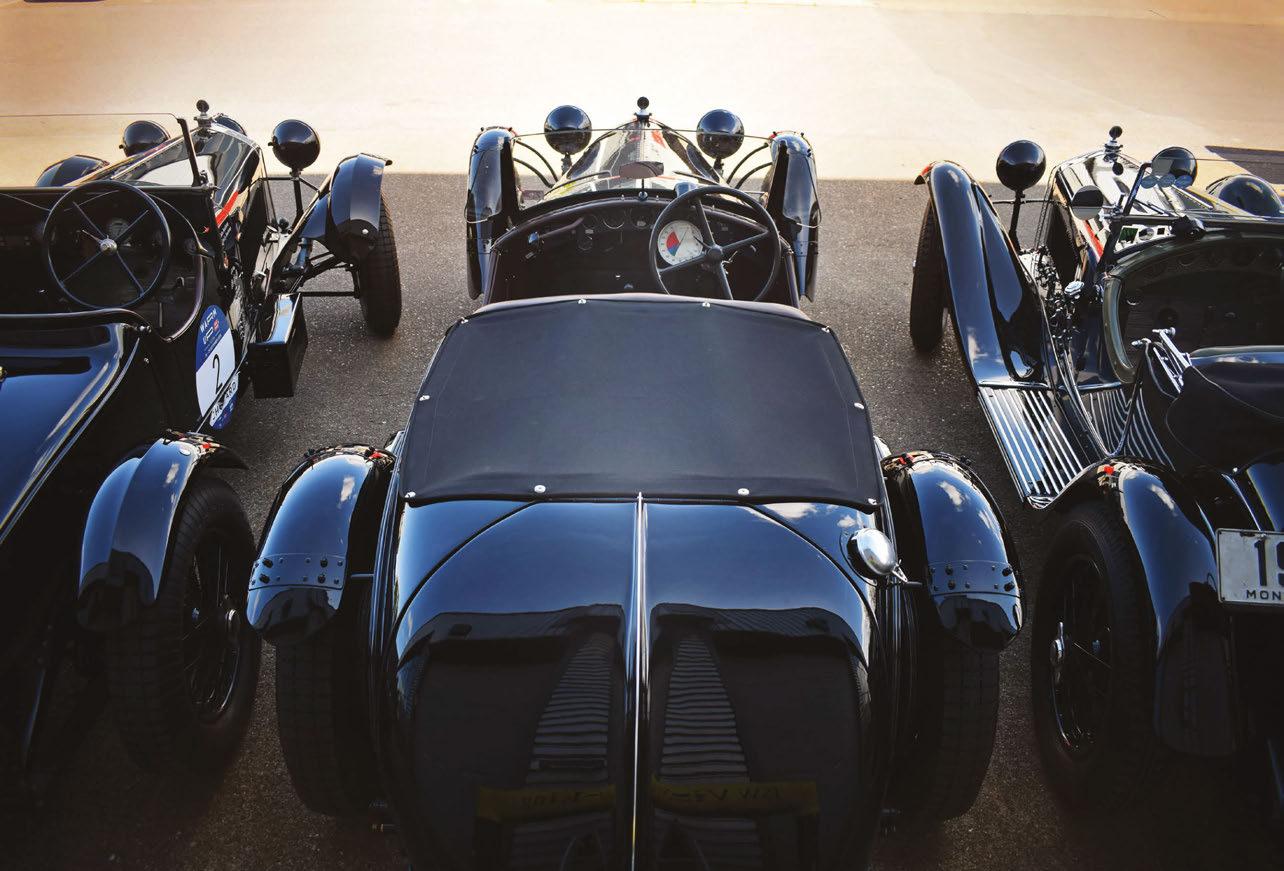

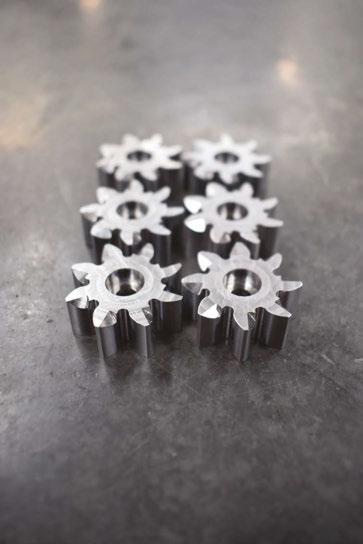

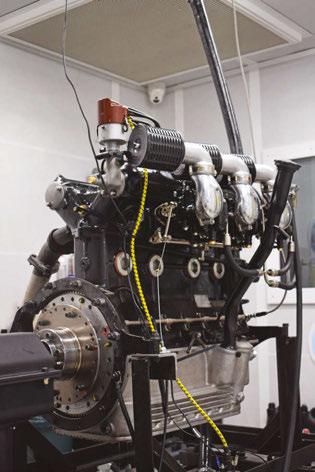














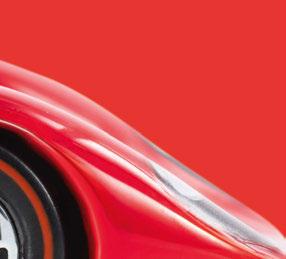








Octane goes behind the scenes with Hot Wheels, at the launch of a Ferrari tie-up targeted directly at the collector market
Words Stephen Dobie

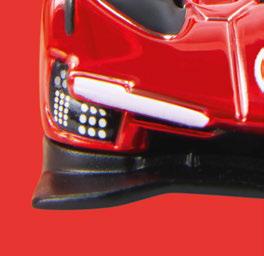






ABSENCE MAKES THE market grow fonder: a twist on an adage that’s de ly proven by one of the priciest product drops in Hot Wheels history. A er 15 years without an o cial Ferrari casting in its line-up, the headline piece of the brands’ glorious reunion sold out in under two hours. Impressive, when it commanded $100 for a pair of 1:64-scale cars tucked in a teasing black box.
‘From a volume standpoint, the brand is bigger than it’s ever been,’ Hot Wheels’ Global Head of Design, Ted Wu, tells me at the glamorous unveiling in the Fiorano pitlane. ‘Our fans are as engaged as ever, so the timing is right to bring Ferrari back into the o ering. We’re all about performance and design. Our brands are so similar in ethos that it didn’t feel right not working together.’
Hot Wheels and Ferrari thrashed out the launch lineup together, with Ted and his team especially keen to get motorsport icons in the hands of adults and kids alike. e halo piece, sold quickly to subscribers through the Ma el Creations online platform, paired a callback to the rst Hot Wheels Ferrari toy way back in 1969 – a 312P racer in open-top form – with the new 499P Modi cata, a track-only customer version of the double Le Mans winner. Both are resplendent in shiny Spectra ame red.
‘We created a whole new painting process,’ con des Ted. ‘We really wanted the nish on these Ferrari exclusives to be bold and bright. We’ve done red Spectra ame before in our Red Line Club specials but typically it’s a deeper, richer colour. To get the brightness we wanted we used a special silver-plating before painting the colour on top of it. is new process requires a bit more a ention and time, but it was important for our design team to match the red that Ferrari is known for.’
en there are the delicately wee cut-outs in the 499P’s spoiler and an e cacy and clarity to both cars’ liveries that feel more closely related to the premium world of 1:18-scale models. eir engine covers li up to betray similar care beneath the skin and a real glimpse of the rich materials and 15-20 parts of a Ma el Creations car versus the four to eight of a ‘mainline’ Hot Wheels cast.
Although premium editions like this allow the Ma el designers to really push boundaries and have fun, they get an equally large kick out of converting full-size supercars into the ‘Basics’ models sold for pocket money in supermarket aisles; delectable Competizione versions of the 365 GTB/4 Daytona and F40 are an irresistible pair in this rst drop, launching in August.
‘My favourite part is introducing these models to a whole new generation of kids,’ smiles Ted. ‘All of our cars pose a challenge, but there’s something fun about trying to get the essence of a Ferrari into a Basics vehicle, where it’s got to be a four-part car. You’ve got the body, interior, chassis and wheels, and to make it all work with so few parts is very rewarding.’
Hot Wheels’ design manager (and British export)
Craig Callum is a familiar face from Octane 257. ‘Creating fun for kids is really motivating,’ he says. ‘ is is where we all started car-collecting so we want to make sure that kids get their hands on these cars as much as the adults.’
Both designers cite Ferrari as an amiable collaborator despite its lengthy absence from the Hot Wheels line. ‘It’s great working with an amazing partner,’ continues Ted. ‘Together we agree on the vehicles. en we get their CAD data and scale it down; a lot of what we do at Hot Wheels is making sure that the excitement and essence of a car are represented correctly in 1:64 size. Once we get there, we send over the actual 3D model so they can look at it and make sure it feels right. Once that’s all good, we go back with a decoration – or “deco” – submission.


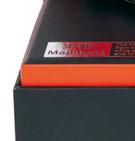
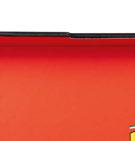

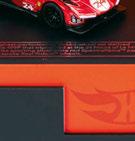




Above and below Hot Wheels designers Craig Callum (on the right) and Steven Vandervate; latest boxed set recreates the company’s first Ferrari alongside the latest 499P Modificata and sold out in two hours.
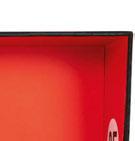

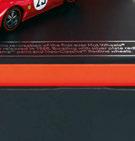





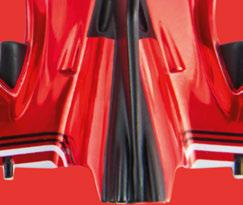

Above and right

499P Modificata is part of the Ma el Creations line, which are made from up to 20 pieces rather than the four of a Hot Wheels Basics model.


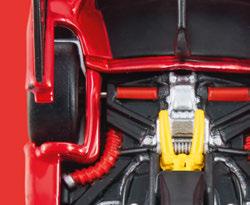
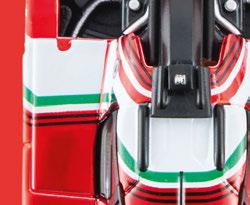





Believe it or not, these Ferraris aren’t the most extravagant 1:64 cars you can buy. Taking the honour of ‘most valuable Hot Wheels toy’ is the Beach Bomb of 1969. Riding the wave of 1960s surf culture, this pink VW bus came with a rear-loading ’board – which sadly made it too top-heavy to ride Ma el’s iconic orange tracks! A swi redesign was needed for the mass market, with the surviving handful of early prototypes commanding up to $250,000 each today.
‘ ey’re involved all along the way as we re ne the models. With their signature reds, we want to make sure that we’re making those colours appear exactly right. We’re staying true to Ferrari red out the gate, but who knows [what comes next] as we progress. e lifespan of a Hot Wheels car depends on the vehicle in question, but I think everything we’re doing with Ferrari is going to be a classic and could be in our line in perpetuity.’
e rst Ferrari collection in over a decade includes two tastes of 499P racing car; the more modern half of that headline Heritage Set plus a cheaper £8.99 Premium car that hardly skimps on detail. In fact, it’s one of the priciest cars to produce in Hot Wheels’ history, ensuring it won’t sell with the same stratospheric pro t margin Maranello’s road cars currently claim. With adults an increasing portion of the Hot Wheels demographic, accounting for a third of its annual revenue, are the designers increasing the number of retro throwbacks in the Ma el casting machine?
‘Part of our secret sauce has always been our ability to deliver what the audience wants,’ says Ted. ‘New cars are great but nding the right balance is key. As any enthusiast knows, with a lot of the cars we love, that love is because of nostalgic reasons – a certain car you grew up with, or grew up wanting to own – so being able to identify which cars are going to really resonate is something our team takes a lot of pride in.’
Ma el’s El Segundo headquarters are ideally located among California’s ever-burgeoning car culture, ensuring Ted, Craig and their colleagues are regulars at ‘cars and co ee’ events nearby – alongside more global happenings. All the be er to keep closely tuned into the Hot Wheels collector psyche.
‘We’re o en at car events. We’ve got the Petersen Automotive Museum in Los Angeles, which we visit all the time. It’s even simple things like our designers being in an F1 fantasy league. e other way to keep tapped into car culture is the Hot Wheels Legends Tour, our own car show where we search for a winning fan-build to enter our line. Just seeing the types of cars that a end is great. It’s super-insightful and just huge fun to see what the fans are doing. It’s now ve continents, over 15 countries, and hundreds of thousands of a endees. We try to send designers to every single one of those stops.’
Take your own wild and wonderful homebrew along and it may even end up in the Hot Wheels line-up. Whether it commands three gures and sells out in under two hours, though, is another ma er…




Get closer to the world’s greatest classic and performance cars with the all-new Octane app – redesigned for speed, style, and seamless reading. Enjoy enhanced features, exclusive digital content, and instant access to every






















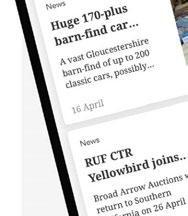


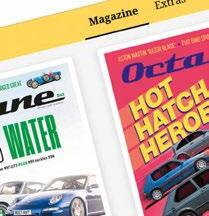
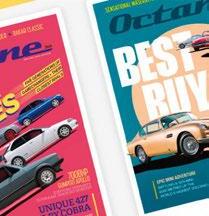

















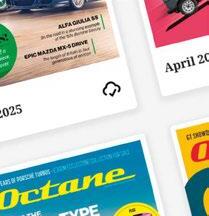



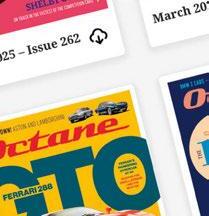
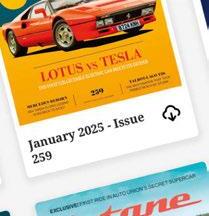
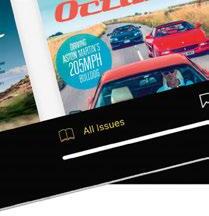








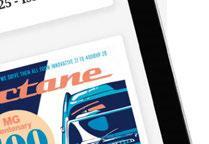
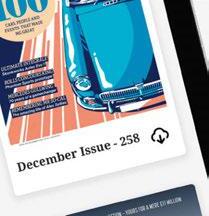




Take theoretical supercar perfection and let your Formula 1 engineers loose to hone it. e result? Honda’s NSX-R

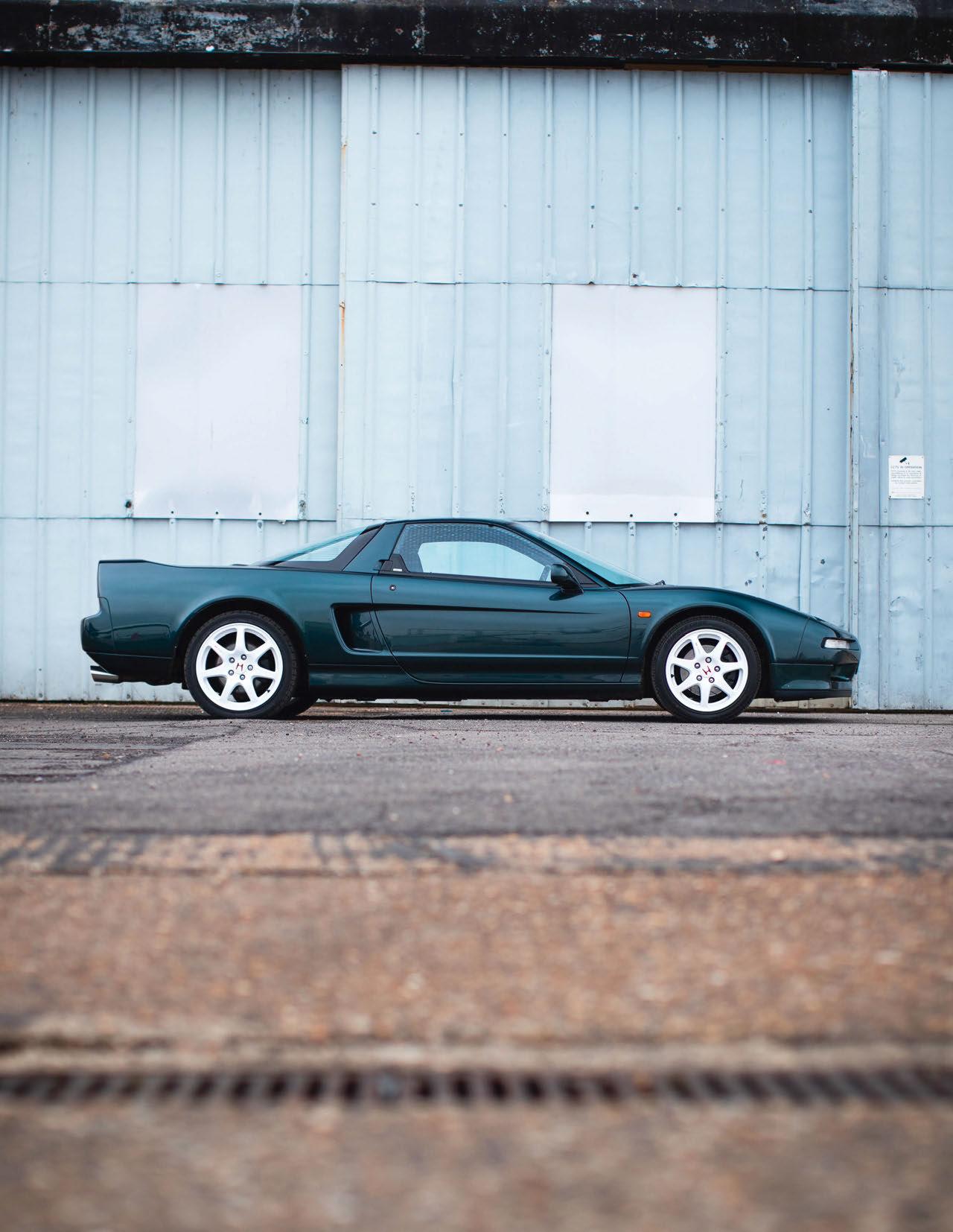
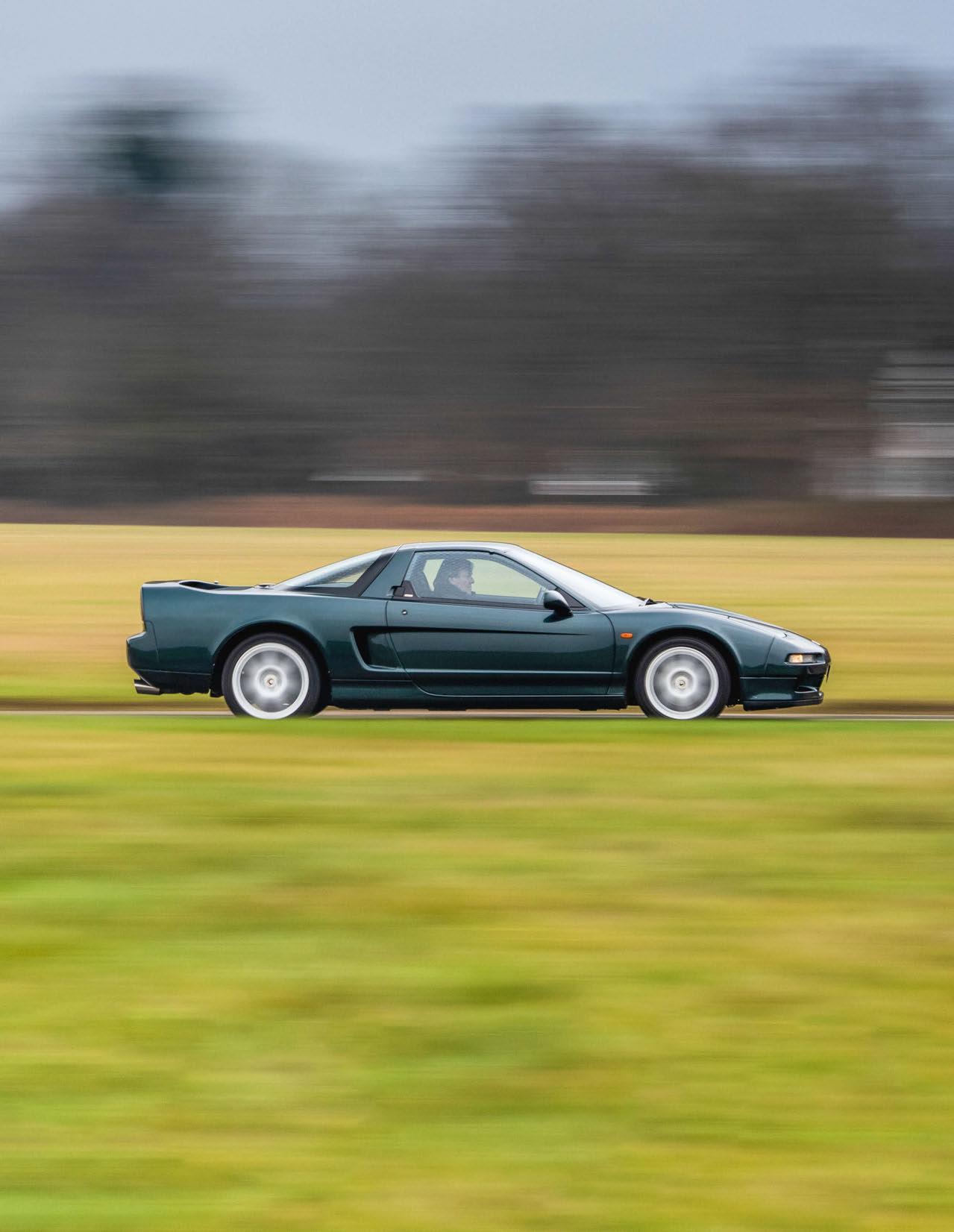
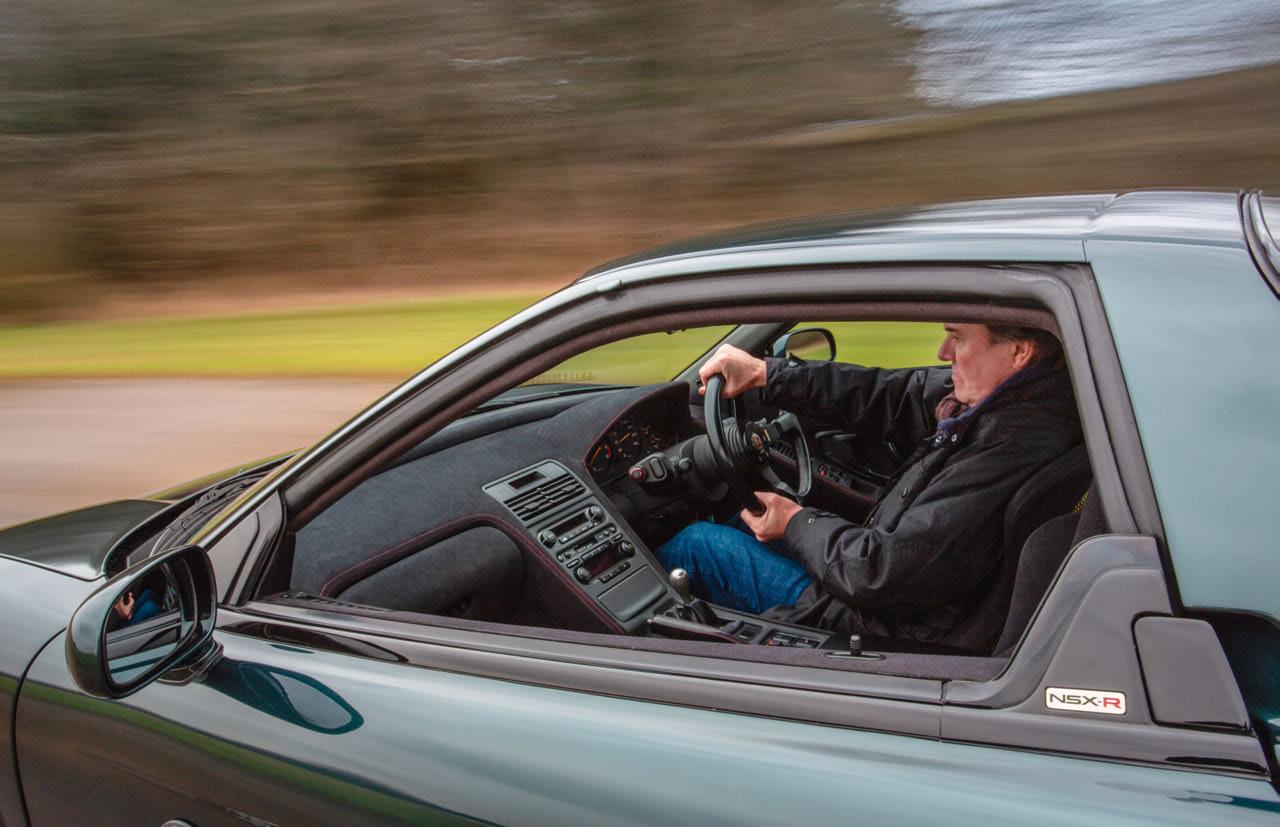
What is it with racing drivers and white socks? White socks worn with natty slip-on loafers? Like me, I’m sure you regard that epic PR piece, Faszination auf dem Nürburgring, in which the fearless Stefan Roser thrashes the Ruf CTR ‘Yellowbird’ round the Green Hell, as one of the best action driving clips ever created. The sight of that bright yellow 911 tyre-shredding its ample 463bhp all over the Nürburgring is automotive rock ’n’ roll.
Roser is clearly showboating for the helicopter-mounted camera, as he slews the car into the corners at ridiculous angles. But it’s the interior shots that really make the whole thing so cool: Roser, insouciantly dressed in a casual T-shirt, can be seen with his feet dancing over the pedals – shod in white socks and loafers!
Another favourite clip is F1 star Ayrton Senna driving around Suzuka in 1992 at the launch of the Honda NSX-R. He smokes it out of the pits in a manner not allowed today, then proceeds to wring the neck of that very special Honda (note the ‘R’ in its name). The on-board camera catches his feet not so much dancing over the pedals as in full Flamenco mode, with mad mid-corner stabbing actions that should be certain to unsettle a car totally – though not with the late, great Senna at the wheel, of course. Naturally, he’s wearing white socks and brown slip-on loafers.
My third and final favourite film clip also involves an R-badged Honda, this time a Civic Type R. Here Italian Formula 1 driver Riccardo Patrese takes his wife Francesca for a hot lap around the Jerez circuit in Spain. Patrese freaks out his wife while remaining ineffably cool in an
immaculate white Honda corporate shirt. To be honest, not sure about the footwear, but I do hope he was wearing the pre-requisite white socks.
Honda and McLaren had a successful Formula 1 partnership from 1988, winning 15 of the 16 F1 races that year. Back then, the great Gordon Murray was McLaren’s Technical Director, and he decided to turn his attention to a McLaren road car in the late ’80s. He wanted it to be a true supercar but was determined that it should be a roadgoing supercar, not a lightly disguised racer. He started by ‘assessing’ the supercars of the day, including the Porsche 959, Bugatti EB110, Ferrari F40 and Jaguar XJ220. None of them fitted the requirements of being a compact, usable driver’s car. The Porsche 911 was close but, with its rear-mounted engine, Murray didn’t fancy its handling prowess.
During that McLaren/Honda F1 time, Murray visited Ayrton Senna at Honda’s Tochigi Research Centre. As Murray said of his trip: ‘Coincidentally, I spotted an NSX prototype parked near the course. I also learned that Ayrton was assisting in the development of the NSX and that the Honda mid-engined sports car was the friendly supercar we were looking for. The car had perfectly functioning air-conditioning, a reasonably roomy trunk and, of course, it was a Honda, with the high levels of quality and reliability that implies. The moment I drove the NSX, all the other benchmark cars flew from my mind.’
Clockwise, from above Coucher takes the wheel; pre-facelift NSX featured pop-up headlights; blueprinted VTEC V6; Honda benchmarked Ferrari for handling prowess; the ‘R’ is all-important.
Clearly the NSX played an important role in the development of Murray’s much more powerful McLaren F1, with its Paul Roschedesigned BMW V12 engine. But it was the NSX’s advanced engineering,
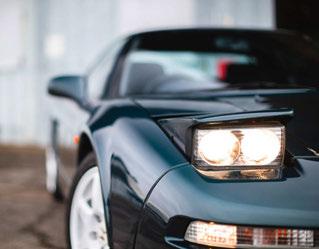
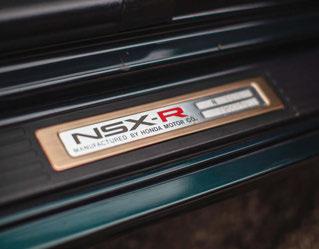
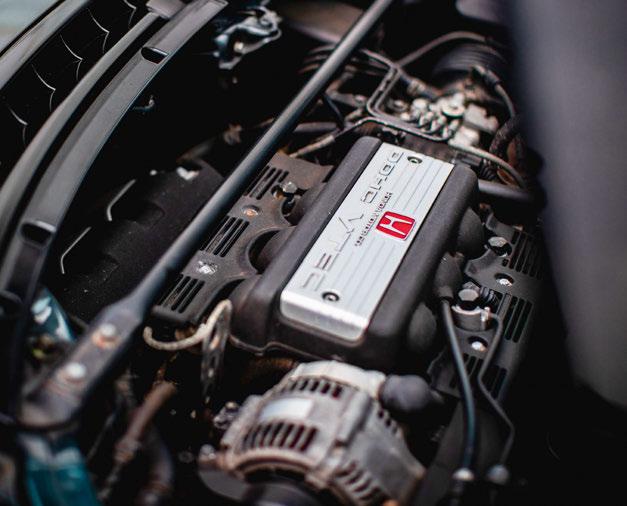
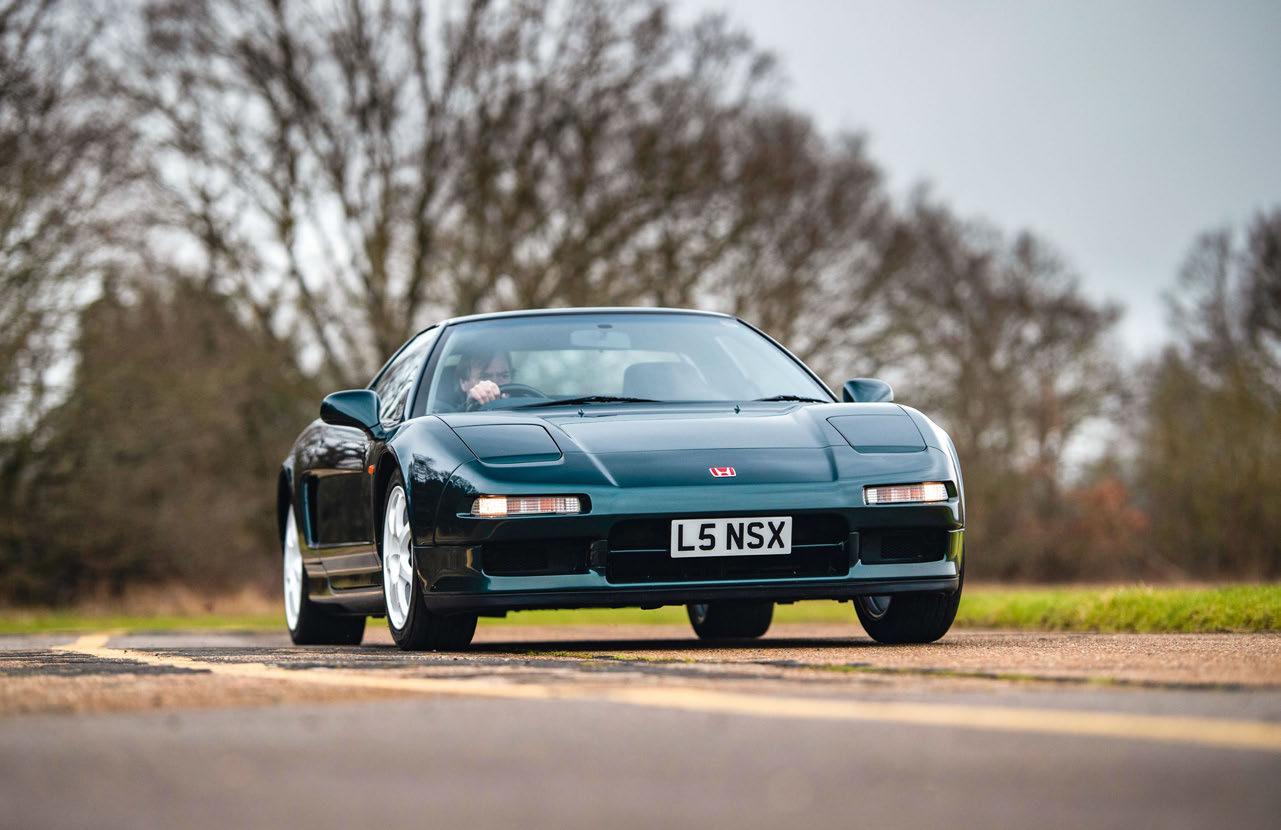
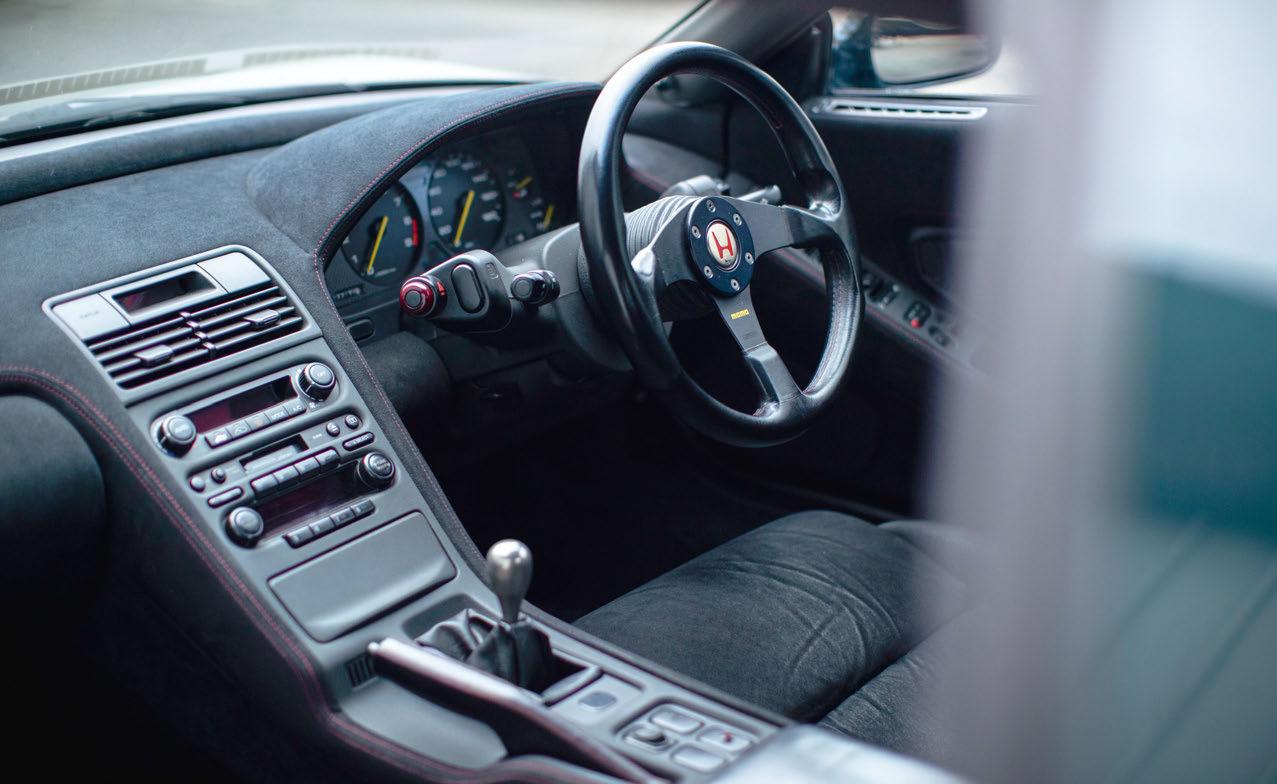
aluminium body and suspension layout that caught his attention. Murray conceded that the NSX’s chassis could easily handle more power and that the discreet looks could do with a little more attitude.
In 1984 Honda commissioned Pininfarina (with its own Ken Okuyama) to design the HP-X (‘Honda Pininfarina eXperimental’) concept car, which featured a mid-mounted 2.0-litre V6 engine. The subsequent production version was led by Honda’s chief designer, Masahito Nakano, who briefed his team to beat Ferrari’s 328 at its own game but with greater reliability and a keener price. With this performance target in mind, the 2.0-litre engine was replaced with Honda’s trick 2977cc C30A engine, a double-overhead-cam 24-valve V6, with VTEC variable timing, developing around 270bhp and 210lb ft of torque. Innovative con-rods made from a titanium alloy were fitted to reduce reciprocating weight, while increasing overall rod-strength, a feature that increased the engine’s rev limit by 700rpm to 8300rpm.
The VTEC system actually came late in development, when Honda president Tadashi Kume questioned why it was being employed in the Integra hatchback and not in this sporting flagship. So Honda designed a new cylinder block with six-bolt main caps and larger cylinder heads to contain the complex VTEC (Variable Valve Timing and Lift Electronic Control) mechanism. A consequence of this last-minute engine change was that the new C30A engine was too large to fit in the NSX’s engine bay, which had been sized for the smaller heads of the non-VTEC version. It had to be tilted back by 5º to fit.
Meanwhile the exterior design followed research on the F-16 fighter jet’s cockpit, with its cab-forward configuration optimising outward vision and the lengthy tail enhancing high-speed directional stability. The result was the New Sportscar eXperimental – or NSX – created to showcase Honda’s engineering credentials and launched in 1991 with many details derived from its Formula 1 motorsport programme.
It was the first production car to feature an all-aluminium semimonocoque chassis incorporating an extruded aluminium frame and suspension components. That resulted in a considerable 220kg reduction in mass over a more usual steel body, including a 20kg saving thanks to the suspension alone. The NSX also pioneered a four-channel anti-lock braking system and electric power steering, the VTEC variable valve timing and, from 1995, featured the first electronic throttle control to be fitted to a Honda production car.
With its wonderful, high-revving V6 engine promising a top speed of 160mph and the 0-60mph dash covered in 5.5sec, this supremely engineered supercar, also offered in targa-top and automatic variations, was highly respected and admired. But being so sensible and practical, with looks rather too close to a Toyota MR2’s, the NSX didn’t exactly spell raw excitement. A practical supercar, after all, is an oxymoron.
Yes, the NSX was admirably usable but the driven and successful Formula 1 engineers at Honda couldn’t just leave it at that. No, a special skunkworks version was required, one with a harder samurai edge. So in 1992 they set about creating the NSX-R, the R to designate its raceorientated credentials. To capitalise on the NSX’s already efficient structure, engineers embarked on an aggressive weight-reduction programme. Sound deadening, audio equipment, air-conditioning and the spare tyre were removed; the power leather seats were replaced with carbon-Kevlar items made especially by Recaro; the standard alloy wheels made way for beautiful forged ones by Enkei, to help reduce unsprung weight. These changes shaved a further 120kg from the original. Being mid-engined, the NSX could be a bit tricky at the limit, its tail wanting to break away and overtake the front. So the engineers braced the chassis under the battery tray and in front of the radiator and uprated the suspension with more track-biased componentry, including stiffer front anti-roll bar, bushings, coils springs and dampers. The effect was
to shi the load transfer balance further forwards, resulting in more rear grip at the expense of front grip, decreasing the tendency to oversteer, making it much more stable while cornering at high speeds. So er rear tyres were the nal tweak, and the sum total promised to keep the Honda in check when pushing past the ragged edge.
Gear ratios were altered, the nal drive ratio increased, and so the 0-60mph sprint was reduced to 4.9sec while top speed climbed to 168mph. Although the engine remained the same in essence as the regular NSX’s, the V6 was lightened, blueprinted and balanced as with Honda’s racing cars, so you can imagine how real horsepower was released from this handbuilt, high-precision, high-revving VTEC competition version, and it was rated slightly higher for power and torque, though we’re talking just a handful of bhp and lb .
Towards the end of 1992, Honda produced a very limited number of R variants: only 483 out of a total of around 15,000 rst-generation NSXs, solely for the Japanese domestic market (JDM) and mostly nished in red or white. is NSX-R, serial number R-0230 and nished in special-order Charlo e Pearl green, was originally purchased by Octane reader Anthony Galliers-Pra when he was working in Tokyo. It was speci ed with black Alcantara interior, with the roof painted body-colour green rather than the usual black, and the rare and expensive seven-spoke Custom Order Programme Step ree alloy wheels

in Championship White. is car is also ed with a superbly cra ed tubular manifold by Mugen, Honda’s competition arm.
e NSX-R is a factory special that goes above and beyond the ‘ordinary’ car: just imagine, it was handbuilt by the Honda engineers who, at the time, were dominating Formula 1! It looks superb in the racing green hue but remains discreet and subtle, with only the alloys giving a hint at what lies beneath. Open the driver’s door and you’re met with that purposeful Kevlar bucket seat. Slide into position and your hands fall onto the bespoke Momo steering wheel, behind which lurks the large rev-counter, its warpaint starting at eight thou’. e ve-speed manual’s titanium gearknob looks tiny, and the interior is very neatly put together in a functional and demure way. You note that this car has the optional air-conditioning ed but the steering remains unassisted.
Opposite and below
Style-wise it could almost be an Accord in here – Momo wheel, titanium gearknob and swathes of Alcantara are the giveaways; just as subtle outside, but note the ultra-light Enkei wheels.
e view from the supportive low-slung seats is expansive thanks to the NSX’s canopy-style cockpit, which o ers a widescreen view of the road ahead. Fire up the V6 and that special exhaust manifold sounds completely un-Honda! Blip the thro le pedal and the engine responds instantly; instead of a sweet and civilised V6 hum, it barks in eager anger. e clutch


‘It was handbuilt by the engineers who were dominating Formula 1’




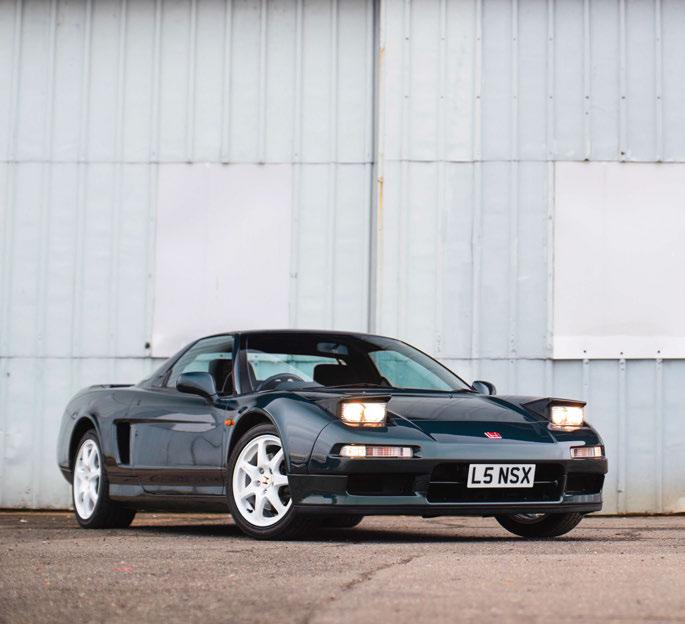




All NSX values are strengthening, but the NSX-R really stands out
Given its groundbreaking combination of supercar layout with Civic reliability, the golden era of Japanese performance from whence it came, the Senna connection, and the increased popularity of analogue driver-focused ’90s and Noughties cars in general, the Honda NSX has been one of the sharpest-appreciating modern collector cars of them all.
goes down lightly and the gear-lever snicks into rst with the shortest throw. Unassisted steering is a bit he y from standstill but soon lightens up, though the ride is rm to the point of being hard. e NSX-R jiggles and wiggles down the road on its fresh-looking but modest-sized 215/45x16in Bridgestone tyres, all the while emi ing that deep-throated V6 grumble. Once you’re moving, the rack-and-pinion steering is a delight, being sharp and feelsome.
Even though the gearing is relatively short on the R, the engine is no torque monster with 217lb , so you need to explore the upper reaches of the rev-counter. It revs smoothly and creamily, the exhaust note hardening at about 5000rpm as the VTEC system activates, the needle icks smartly round the clock and the Honda lunges forwards.
In top, at speed, you notice the rm suspension is now dialled-in and operating precisely to keep the Honda at and fully connected to the broken British B-roads on this drive. e whole package gels and you f eel the uidity of the chassis harnessing the yowling shove of that meticulously blueprinted V6, which thrives on excitingly high revs. And thanks to the NSX-R being so compact and lightweight, its vented disc brakes are more than up to the task of retardation, even though they, again, are of modest proportions.
e Honda NSX was always a sophisticated car, but this tweaked R version is a factory-built track specialist with added ability thanks to the a ention of Honda’s most revered race engineers. Its rather clinical nature has been overlayed with a razor-sharp edge – not uncouth, but more determined and focused. It’s the Formula 1 supercar. Only drivers with white socks need apply.
THANKS TO RM Sotheby’s, rmsothebys.com.
1994 Honda NSX-R
Engine Mid-mounted
2977cc V6, DOHC per bank, VTEC
variable valve timing, sequential multipoint fuel injection
Power
276bhp @ 7300rpm
Torque
217lb @ 5400rpm
Transmission
Five-speed manual, rear-wheel drive, limited-slip di erential
Steering
Rack and pinion
Suspension
Front and rear: double wishbones, coil springs, telescopic dampers, anti-roll bars
Brakes Vented discs, ABS Weight 1230kg
Top speed 168mph 0-60mph 4.9sec
With a generation of younger enthusiasts who read about it in magazines, watched videos about it on YouTube, or drove one with their thumbs on Gran Turismo, it’s going to remain a relevant and desirable collector car for the foreseeable future. NSXs never depreciated to the point of being truly cheap, but over the past fi ve years Condition 2 (‘excellent’) values in the Hagerty Price Guide are up anywhere from 38% to 46% depending on the model. The early 1991-98 cars currently come in at £72,600, while the faceli ed 1998-2005 model is worth £80,500, and the targa-roof NSX-T £68,100. Even a fairly worn-out early NSX in Condition 4 (‘fair’) is worth £40,000 these days.
The NSX-R is worth far, far more, with a Condition 2 value of £342,000 and a Condition 1 (‘best in the world’) value of £459,000. But people have paid even more than that for one. By nature of its rarity and JDM-only production, only a handful have sold at Western auctions in recent years. There was a $311,000 sale in 2022, a $291,000 sale in 2023, a €264,000 sale in 2024, and another one later that year for $368,000. A 1995 model in Championship White became the most expensive Honda NSX ever sold at auction when it made $632,000 at Monterey in 2023. This spring at Villa d’Este, however, a rarer 2003 NSX-R in the same colour smashed that record at €934,375. In USD terms, that’s the first car with a Honda badge to break a million.
Andrew Newton

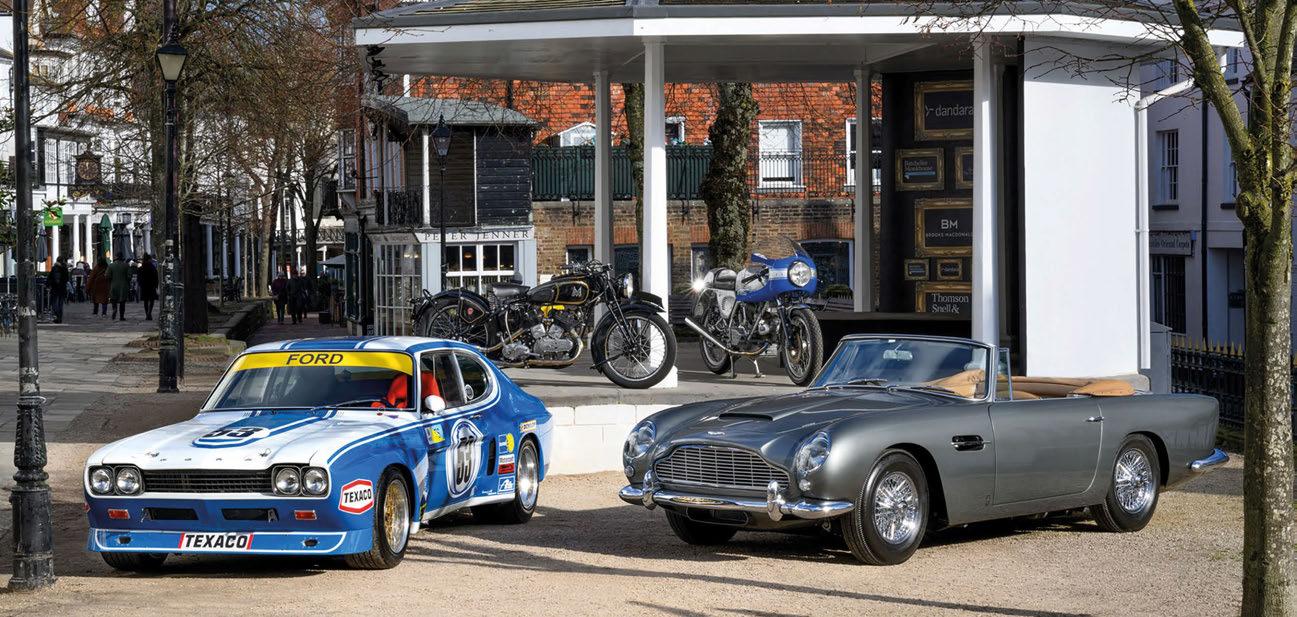







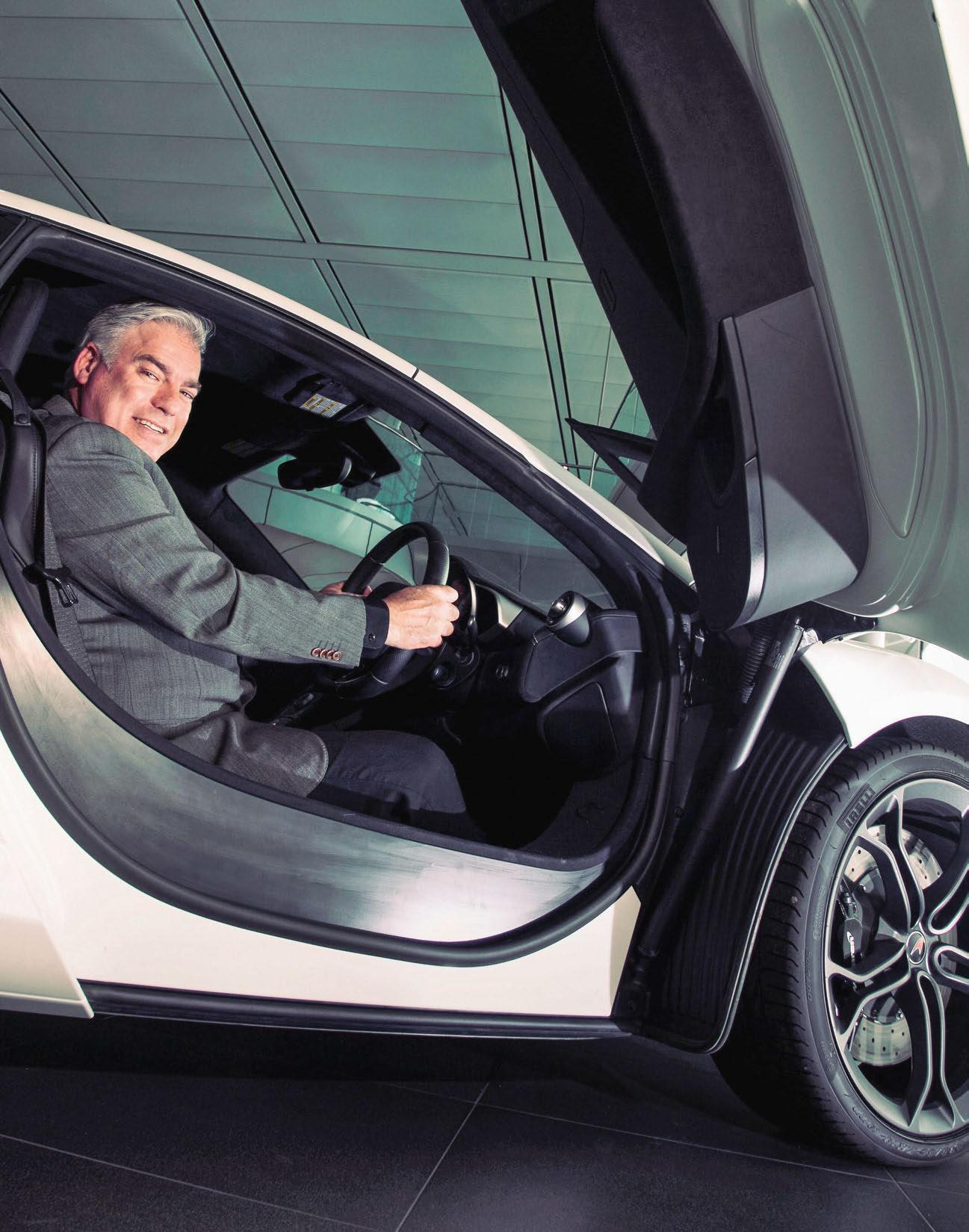
The man defined a style for McLaren, reinvented the Mini and revitalised Fiat – yet he could just as easily have been a Motocross champ…
Words Elliott Hughes
‘I NEVER SET out to be a car designer – I just sort of became one,’ says Frank Stephenson. It’s an odd admission from the man who penned iconic cars such as the McLaren P1, BMW’s first Mini and the Maserati MC12. Like any great designer, Frank was first drawn to beauty and form – long before he fell under the spell of cars and engines.
‘All I wanted to do as a kid was draw. My mother had to kick me out of the house to get me to go out and play,’ Frank chuckles. Born in Casablanca, Morocco, in 1959 to a Spanish mother and Norwegian father, Frank spent his early childhood in sunny Málaga, Spain, surrounded by cars.
‘My father started a car dealership with my uncle in the mid’60s,’ Frank continues. ‘It was a top dealership that sold SEATs, Saabs and Rovers. When I was about nine or ten, I’d just sit in the showroom and stare at the cars. I always drew, but I started to draw the cars – modifying them, drawing them differently. I didn’t realise it, but I was already designing.’
When Frank was 11 his family moved to Istanbul, Turkey, before going back to Spain to live in Madrid, where he graduated from high school. ‘I was a colourful mix of cultures, which helped me creatively.’
Yet after finishing high school, Frank didn’t immediately pursue design. ‘I actually started racing motorcycles!’ he laughs.
‘My father said I could have a year off after graduation and I had a friend who started racing. I went to help and caught the bug.’
The bug developed into something more serious. ‘I got successful and raced at a pretty high level,’ he continues. ‘But then, my father said: “Is this going to be your life until you’re 30? Broken bones, probably racing at a competitive level, but never World Champion? Number two is never good enough.”’
And so the 22-year-old Frank faced a fork in the road of his life. He could commit to Motocross, work at his father’s dealership – or forge another path. He chose the latter.
‘At 22 I thought I was too old and had left it too late to start university,’ Frank admits. ‘But then I read about a university in California that taught car design. So, I wrote to them thinking, “Maybe they will teach me how to be a car designer.” They accepted me and that’s how it all started.’
That Californian institution was the world-renowned ArtCenter College of Design in Pasadena, with alumni including Shiro Nakamura, Chris Bangle, Luc Donckerwolke and Ken Okuyama. ‘I remember the first day. There were 30 students and they told us that we were the top 1%, chosen from 3000 applicants. But they also said, “You’ll never graduate with more than ten. Two-thirds of you will drop out, get pushed out, or become disillusioned.” If I’d known how hard it was going to be, I probably wouldn’t have started,’ Frank recalls.
Accustomed to attrition after years of Motocross racing, he was determined to be one of the few to cross the finish line. ‘It trains you. It demands total dedication. The closer you get to the end, the more people around you push you – they’re as competitive as you are – and that ramps up the quality of your work. You end up absolutely drained both mentally and physically. Just six of us graduated from the original 30.’
Frank’s diligence and determination didn’t go unnoticed. ‘Halfway through ArtCenter, I got a scholarship,’ he recalls. ‘The big three – GM, Ford and Chrysler – come over to check out the students graduating in the next two years or so. Ford offered me employment on graduation and to pay for the rest of my studies if I signed for them before I got out. That lifted some of the financial weight off my shoulders.’
He graduated from ArtCenter in 1986 and immediately moved to Germany to begin working in Ford’s Cologne Design Center. ‘It was one of the best training grounds for a young designer. The first impression I had was: “Gosh, they all work so slow!” I was still revved up from university. Suddenly you realise: “I don’t have to do 100 sketches today, I can just do five and I still get paid!”’ Frank explains.
‘But at the same time it was also very inspiring because you’re finally working with professionals, who taught me shortcuts. Everything was so positive, I was learning a new language and I belonged to a family – a team.’
Frank left his mark on Ford’s production models – ‘My first big project was the hubcaps and doorhandles for the Ford Sierra’ – and then he began working alongside aerodynamicists to create the Escort RS Cosworth’s iconic whale-tail rear wing.
‘I started thinking about all the car companies in Germany and decided BMW was the best choice’

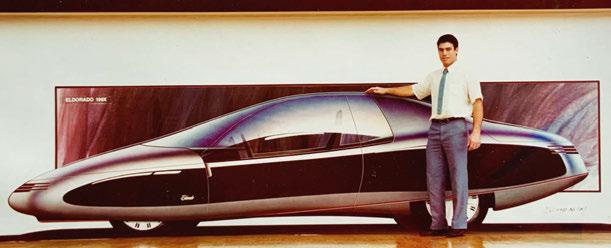
Reitzle what an SUV from the marque could look like – so rushed that Frank had to sketch the concept on a flight.
His hot streak continued with the new Mini, as production of the original wound down in the lead-up to the new millennium. ‘BMW knew how important it was to get the Mini right.’ Designers from across the group submitted proposals and 15 clay models were shown to Rover and BMW executives in 1995. Frank’s design was selected.
‘We pulled all-nighters trying to get the full-sized model finished in time for the board presentation,’ he recalls. ‘There was no time to fabricate many of the detail parts, so for an exhaust pipe I stripped the paint from an empty Budweiser can, punched a hole in the bottom and stuck it into the clay model.
Then Chris Bangle [former BMW design chief] came over to me and said “Great job Frank, this will be huge for you – but don’t waste a modeller’s time making such a detailed exhaust pipe.”’ Frank laughs. ‘He thought someone had spent six hours making it. When I told him the truth, he burst out laughing.’
After five years in England working on the Mini, his next big career move beckoned in 2002. ‘Off the back of the Mini I got a call asking me to go to Turin for an interview for a “great position at a well-respected company”. The company turned out to be Fiat, which owned Ferrari and Maserati. ‘Fiat was looking for its first head of Ferrari design,’ Frank recalls.
He saw it as the career opportunity of a lifetime. ‘I thought: “I’ll either be fired in the first year because they realise I’m not the guy for the job, or I’ll have the time of my life.” I had the
Surprisingly, the double-decker wing that made it to production was a compromise; Frank’s original design featured three aerofoils. ‘I thought, “They’ll never go for this!”’
Career wanderlust set in after five years. ‘I started thinking about all the different car companies in Germany and decided BMW was the best choice. They weren’t hiring at the time, but they invited me for an interview to see what I was about. It went well and I started working for BMW in July ’91. It was a fantastic chapter – I fell in love with BMW.’
That move led to one of BMW’s most influential creations: the original X5. ‘It was BMW’s first SUV and it was based off the platform BMW acquired when it purchased the Rover Group in 1994,’ Frank explains. The X5 project came with tight deadlines: just six weeks to show product chief Dr Wolfgang
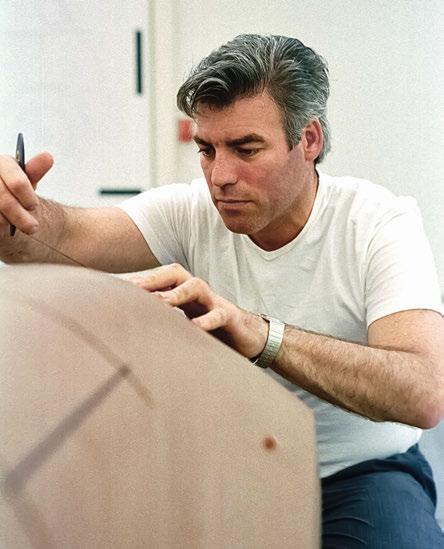

Le Mans Classic 5th - 6th July 2025
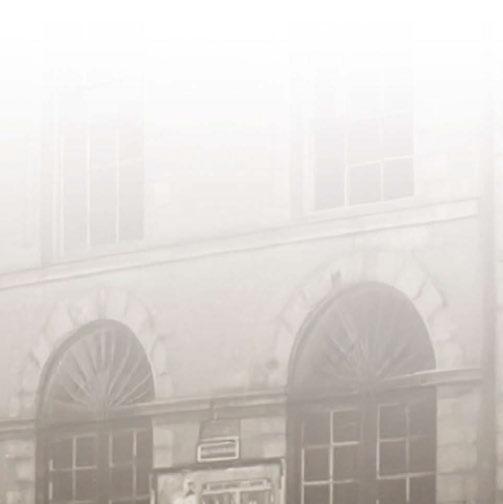

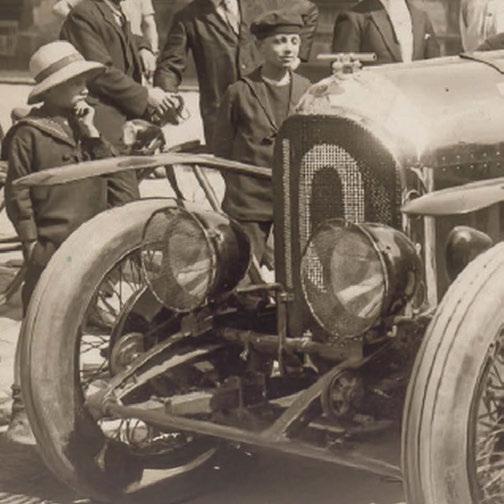
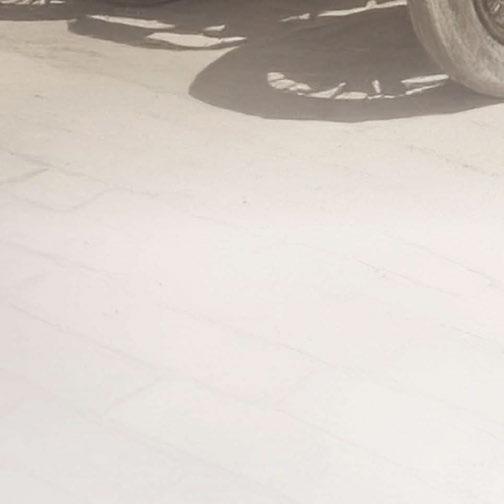

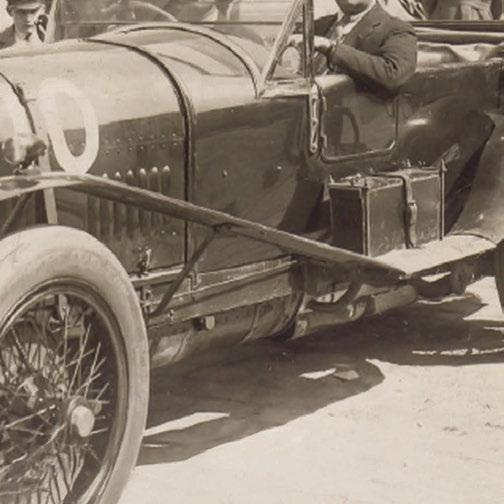
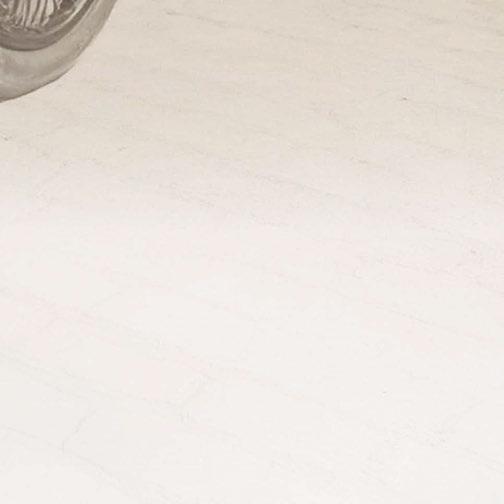


time of my life!’ he smiles. ‘It was incredible. I used to see Michael Schumacher and Rubens Barrichello during the Formula 1 season for our internal meetings.’
Frank created some iconic cars for the Italians, notably the Maserati MC12, Ferrari F430 and the Ferrari FXX, and then he was summoned into the office of company chairman Luca di Montezemolo. ‘He told me I was being sent to Italdesign to review some things. Then he asked what I thought of the Maserati 3200 tail-lights. I said: “They’re stunning. Giugiaro is a master, I’ve admired him my whole life.” Then he said: “No, you don’t like them. On Monday, you’re going to tell Giugiaro you don’t like them and that he has to change them!”’
A week later Frank met Giugiaro at the Italdesign studio. ‘I told him I didn’t like the 3200 tail-lights and they needed to change. He flipped! Giugiaro has a very high-pitched voice to begin with, but it went up another octave. He was screaming at me, “Who the f*ck do you think you are?” But I had to hold my ground. I found out later that the reason Montezemolo told me to do it was that he believed I needed to make a big statement to establish myself in the Group. I don’t really know if it worked or not, but Giugiaro and I did turn out to be very good friends.’
In April 2006 Frank was chosen to lead Fiat Group design. ‘I wasn’t particularly excited about it because I was having such a good time at Maranello and Modena. But Fiat was really struggling and badly needed an exciting new car,’ Frank says. That car turned out to be the 21st Century reinterpretation of the Fiat 500. Launched in 2007 and based on the existing Panda platform, Frank’s retro-futuristic 500 echoed the Mini’s nostalgic appeal and proved a runaway success. And soon after the 500 was launched, Frank was headhunted by McLaren Automotive. He joined the British manufacturer in 2008.
‘They told me: “We know we’re a racing car company, but we need a designer. We want to start a road car division because if Formula 1 ever goes south, we’ve got nothing.” They wanted me to take over – a clean-sheet brief from McLaren wasn’t the kind
Left and below
From supercars to spacecraft: Stephenson spent ten years with McLaren before founding his own consultancy, now designing space tourism capsules.
of opportunity you turn down.’ And Frank became responsible for creating the first car McLaren Automotive ever built: the catchily named MP4-12C.
‘After seeing the development of the MP4-12C, Ron Dennis said, “OK guys, I’m not going to worry about what you do on a daily basis. Just get back to me in a year when the car’s ready and I’ll tell you what I think.” Ron was the best boss I ever had – a perfectionist. He’s all about precision and detail and that resonates with me. Once we’d finished the MP4-12C we moved on to the P1 hypercar and then the 650, 675 and 720.
‘That was around 2017. I started to wonder whether I should stay at McLaren for another ten years and see out my career doing successors to the sports cars, supercars and hypercars, or do I go and do my own thing? So, I took a leap of faith and left. People thought I was mad for leaving McLaren, but the work started coming in immediately,’ Frank smiles.
Since founding his own studio, Frank Stephenson Design, his output has expanded in myriad directions. ‘I have no problem with creativity,’ he asserts. ‘The first project was for Lilium, a company out of Munich doing flying taxis. That was really exciting – clean and electric. Now we’re on our third project with them.
‘Then we got into space tourism. We’re designing the capsule interiors – everything from the seating, the scent, the materials, the uniform… even the launch port. It’s carbon neutral and will run hundreds of flights a year,’ he continues.
‘Then the Israeli Government reached out about a device that protects soldiers from IED blasts – it absorbs g-force through the seat. We adapted that for baby seats. The result is over 200% safer than the safest seat on the market. We based it on the shape of an egg. The outside is beautiful, the materials are sustainable, and the engineering is life-saving.’
On top of all that, Frank has launched a full range of sunglasses with the Arena swimwear brand and is designing an 80m superyacht called Stargazer, inspired by a dolphin.
For someone that ‘just sort of became a car designer’, it’s safe to say that Frank Stephenson has had a remarkable career.







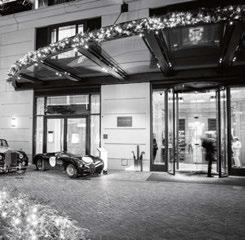






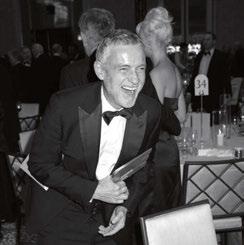
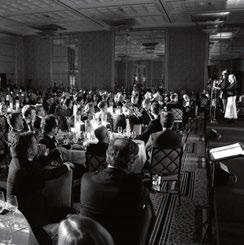






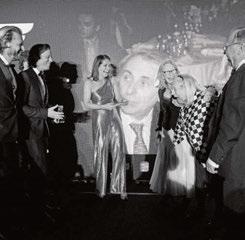






Most cities are harsh, noisy and aggressive in character. Those who can will do their best to insulate themselves from the cut ’n’ thrust of the urban jungle, and this includes their choice of motor vehicle. Somewhat absurdly, those who really can will often choose large SUVs and 4x4s for their tough demeanour and lofty visibility when dealing with interminable traffic, never mind that these vehicles are inherently unsuitable, being both gross and unwieldly. Here we have a better solution, one that’s 55 years old…
Launched in 1968, the marque’s first new car since the E-type in 1961, the Jaguar XJ6 cost the company a whopping £6million to develop. In both 2.8- and 4.2-litre versions it was intended to replace the dated Mk2 and S-type, the huge MkX and Daimler’s 250 V8. It was known internally as the XJ4 and development began in 1963.
While the XK engine was developed in 173bhp (4.2-litre) and 140bhp (2.8) guises, Jaguar, being engineering-led at the time, could not resist a range-topping V12, a supersmooth 265bhp mill that would see 146mph at full whack, launched in 1972 as the XJ12. Most XJ6s were automatic, with a Borg Warner three-speed slush-box, but the very original low-mileage example you see here (it’s showing just over 56,000 miles) features the Jaguar four-speed manual plus overdrive transmission.
The mechanical specifications of the XJ6 were very advanced for 1968, when it was launched at the British Motor Show. Yes, its venerable XK engine had been in service since 1948, first employed in the XK120, but it was such a reliable, refined and gorgeous straight-six that Jaguar was right to keep it going strong. The four-door monocoque, weighing a reasonable 1600kg, would house the advanced all-independent suspension from the E-type sports car; its rear set-up with twinned coil springs, utilising the driveshafts as upper links with additional lower links, was a superb arrangement and used for decades in subsequent Jaguars. Brakes were discs all-round, inboard at the rear to reduce unsprung weight. Yes, the engineers ruled, but the bean-counters managed to keep the price of the 4.2 de Luxe automatic to £2389, another bargain from Coventry.
The XJ6’s arrival was met with rapture from the press. Autocar commented: ‘Unbelievable value. The best there is. If Jaguar were to double the price of the XJ6 and bill it as the best car in the world, we would be right behind them. As it stands at the moment, dynamically, it has no equal regardless of price, which explains those twelve-month delivery quotes from dealers.’
Jaguar could not keep up with demand and, at one point, Swiss customers demonstrated outside the company office in Berkeley Square because of the long delivery time.

With the XJ6, Jaguar turned the luxury saloon market on its head. Now Robert Coucher finds it the perfect car for the city
Photography Drew Gibson
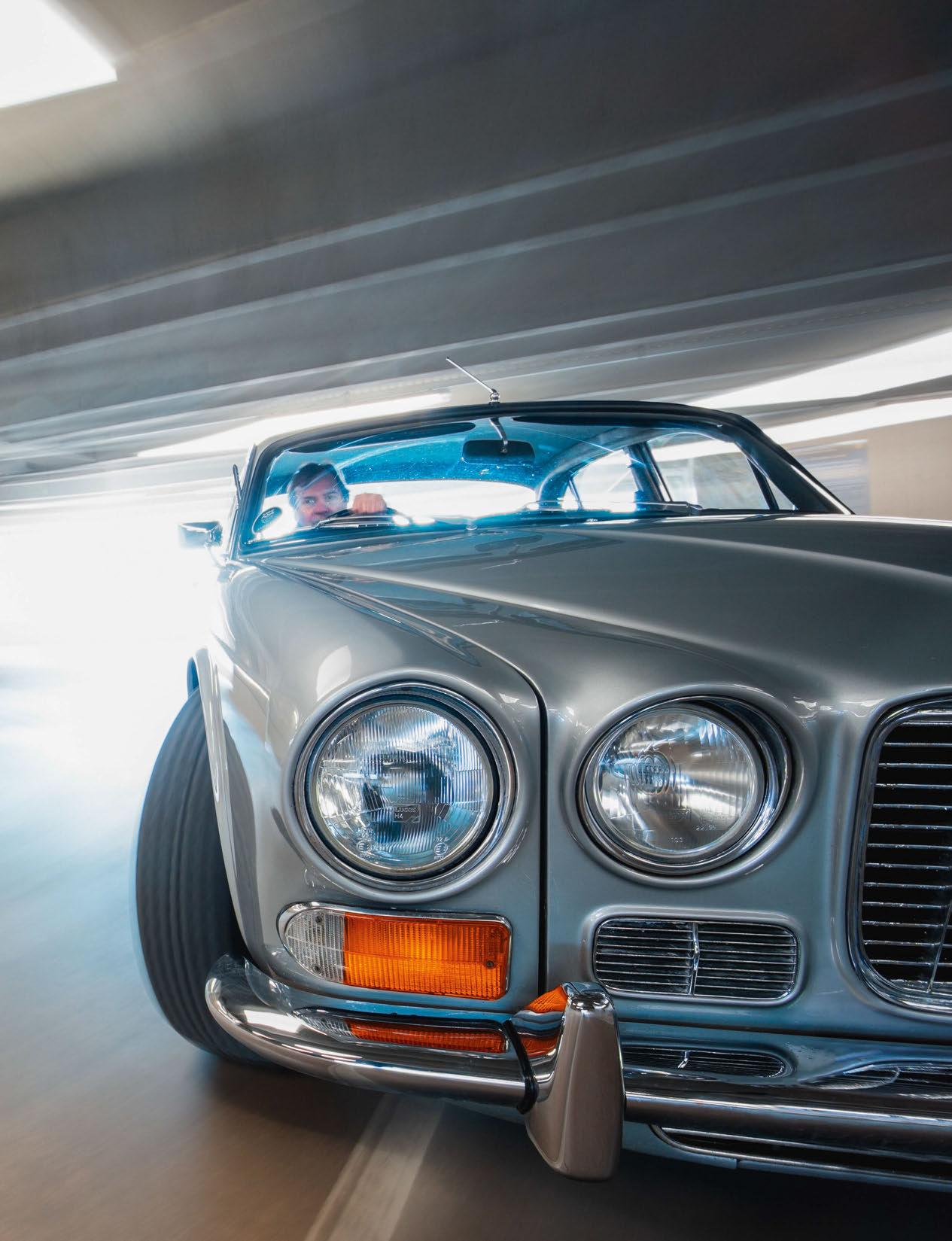
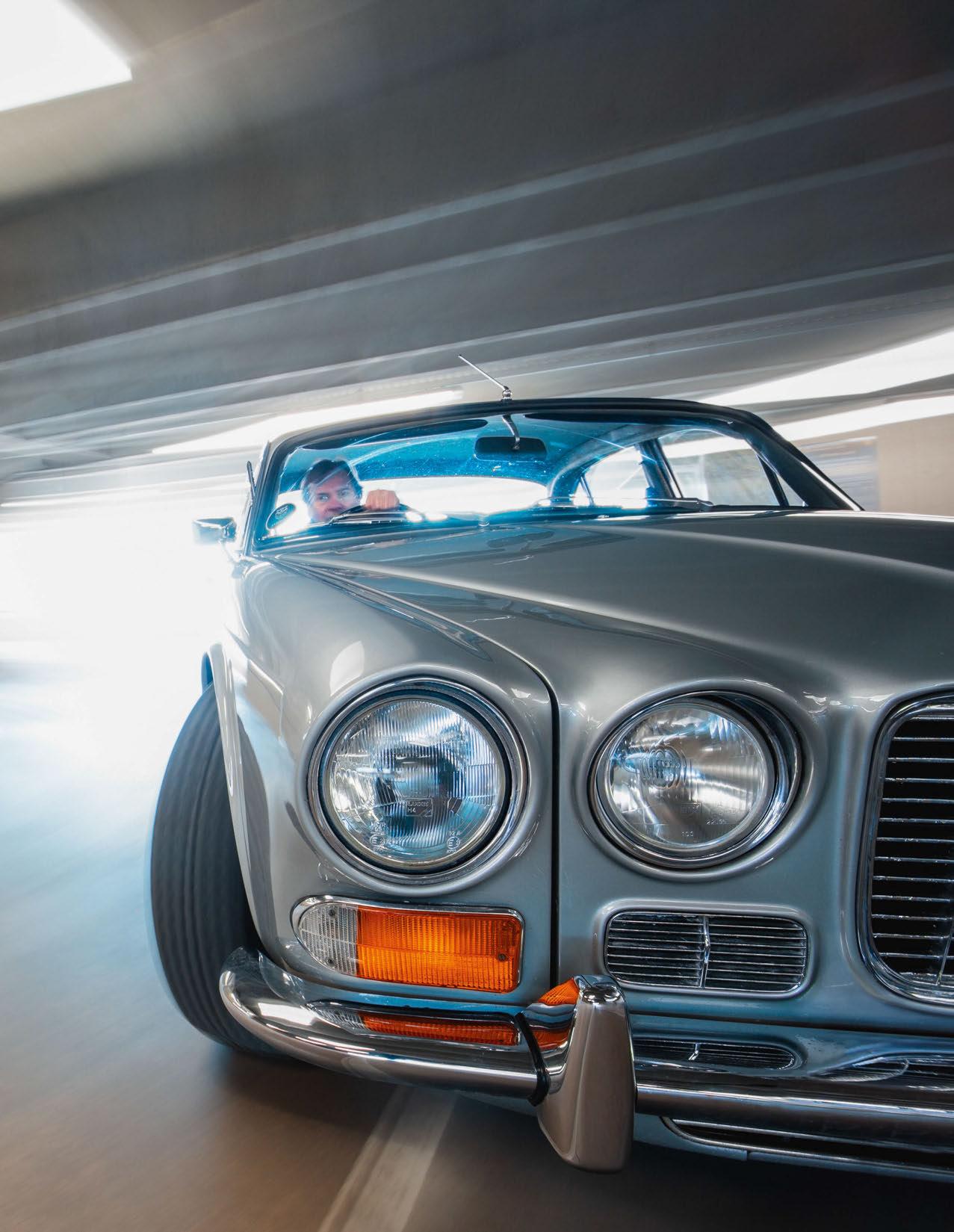
The always-critical Car magazine voted the XJ6 its Car of the Year in 1969, with LJK Setright writing: ‘Indeed, to my mind the Jaguar is not merely remarkable for what it is, but also because it makes redundant all cars that cost more. I can think of no car of which this can be truthfully said, and I would consider this fact alone as qualifying the XJ6 for your Award.’
On arrival at Duke of London’s HQ, atop a multi-storey car park, I spy 3225 MY lurking in the dark concrete confines of this slightly bizarre location. It looks hunkered down and svelte and you are reminded of how advanced, modern and design-conscious Jaguar was in its heyday. Yes, we have all been somewhat perplexed by the recent Jaguar Cars relaunch campaign and its not-so-sneak preview of the new Type 00 show cars. But back in the 1940s, 1950s and 1960s, Jaguar was a cutting-edge manufacturer of the most advanced road and racing cars in the world. So, a four-door E-type, anybody? Yes please.
The XJ6 was Jaguar’s formal, large saloon – OK, its ‘sporting saloon’ – of the day and, in the modern environment, it appears low, extremely elegant and almost delicate. This example is painted in flattering metallic silver and rendered very period, sitting on correct steel wheels with chrome rims and hubcaps – discreetly understated, setting off the very Jaguar face with twin headlamps frenched into the tight and curvaceous front wings, all adding to the appearance of the car’s skin being tightly pulled over its muscular, dynamic underpinnings. The eggcrate grille with its ‘growler’ badge alludes to the need for air to flow to the powerful engine, with extra vents either side and underneath the front bumper.
‘IN THE MODERN ENVIRONMENT, THE XJ6 APPEARS LOW, EXTREMELY ELEGANT AND ALMOST DELICATE’
Clockwise, from opposite Dashboard is stylish, well-equipped and inviting; venerable and charismatic 4.2-litre XK engine; seats as comfortable as they look; sleek profile reflects its heritage.
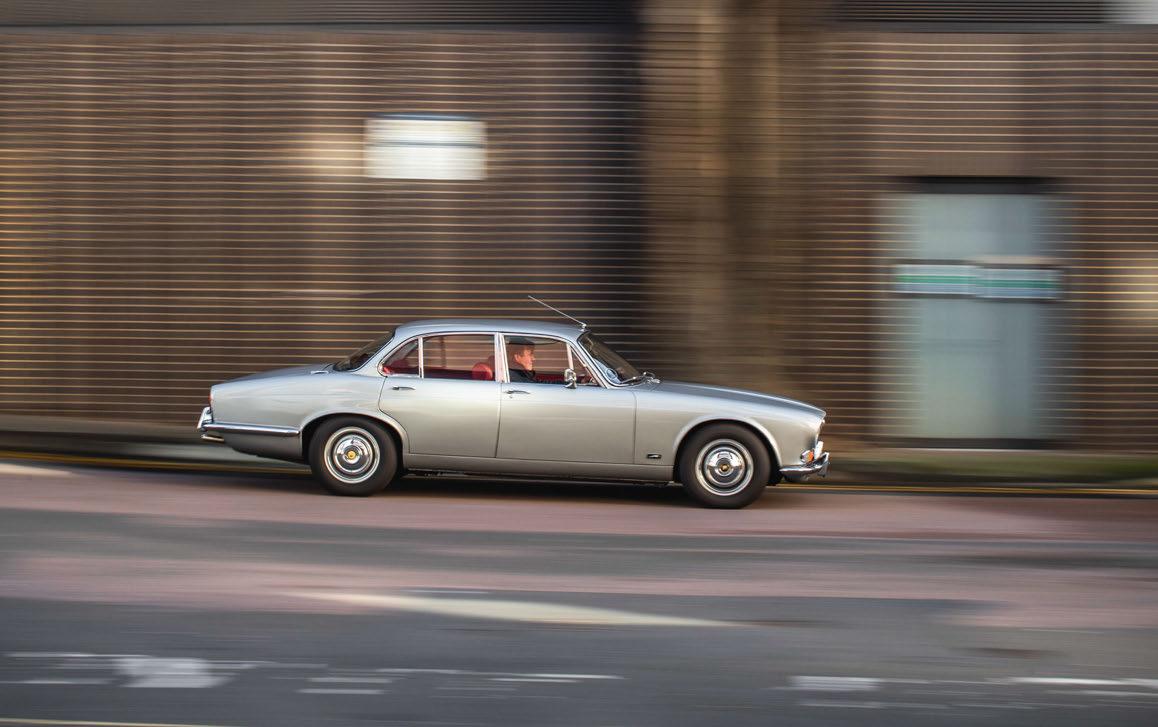
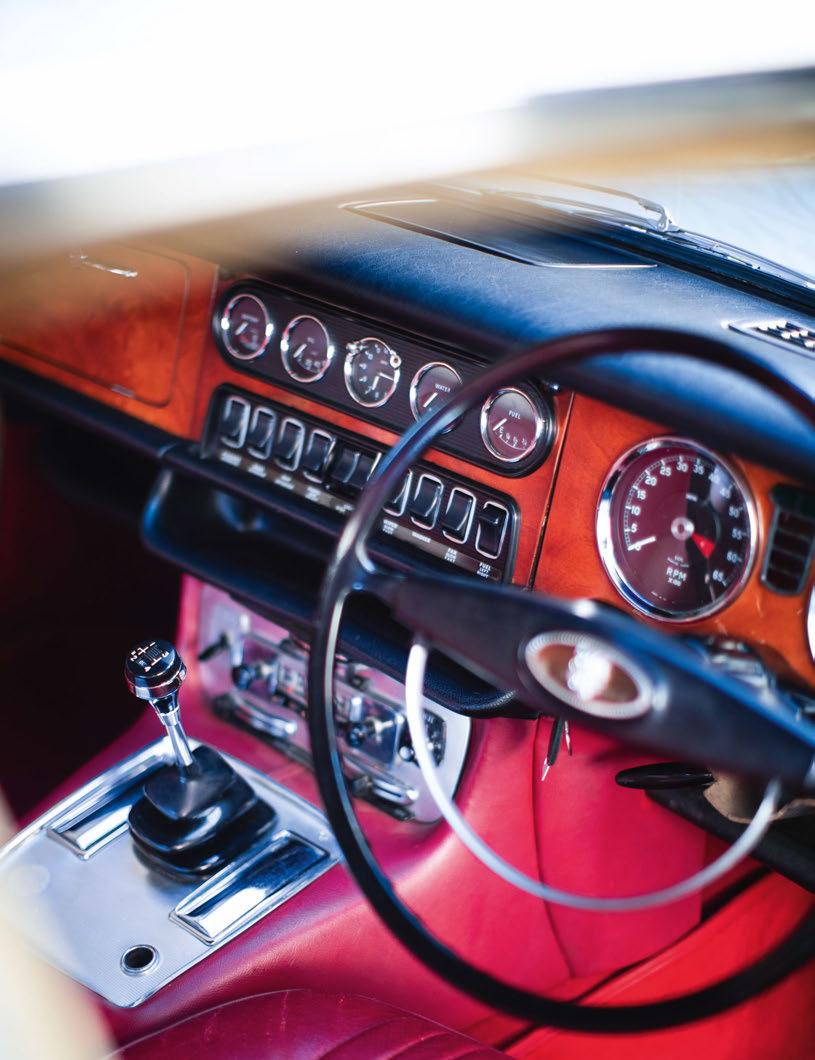
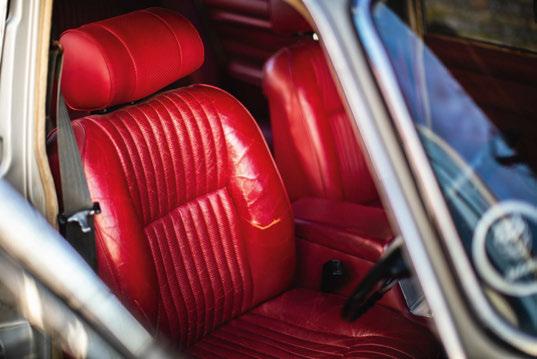
1970 Jaguar XJ6
Engine 4235cc DOHC
straight-six, iron block/alloy head, two SU H8D8 carburettors Power 175bhp @ 5500rpm (claimed) Torque 190lb ft @ 3750rpm
Transmission Four-speed manual with overdrive, rear-wheel drive
Suspension Front: double wishbones, coil springs, telescopic dampers, anti-roll bar. Rear: fixed-length driveshafts, radius arms, lower links, paired coil springs and telescopic dampers
Brakes Girling discs
Weight 1600kg
Steering Rack and pinion, power-assisted Top speed 125mph 0-60mph 8.8sec
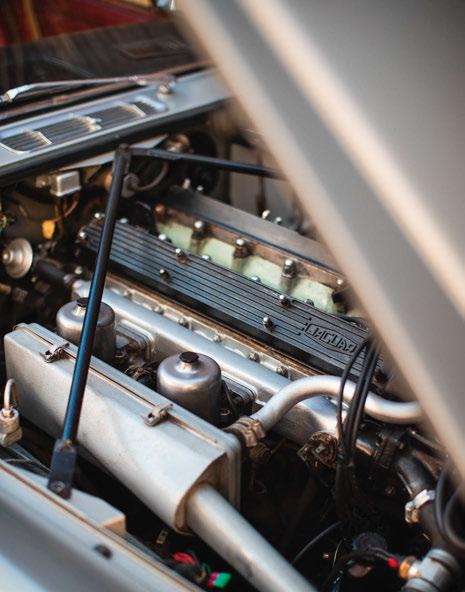
The beautiful coachwork continues this lightness of touch as it swoops over the wheels and ends with a neatly truncated rump. The bumpers enliven things with a bit of extra chrome jewellery, as do the twin petrol filler caps, one on each rear wing, while the roof-mounted aerial adds a raffish touch. Opening the driver’s door by pushing on the delicate chrome handle reveals red leather-faced upholstery, a perfect foil for the gleaming silver exterior.
This car has led a charmed existence, having spent a significant portion of its life in a Yorkshire motor museum before undergoing an extensive restoration that has made it one of the finest XJ6s in existence. Initially the Jaguar was looked after by one lady owner on the South Coast, who sold it in 1990 to the museum, where, for a couple of years, it was used sparingly and serviced regularly. Its thorough restoration included a full glass-out respray and rustproofing.
The original red leather interior remains in place and looks near-perfect, with just a bit of light patination on the front seats. The 4.2-litre straight-six was rebuilt and received sensible upgrades, including an electronic distributor and sports coil, reconditioned radiator and additional electric fan. Along with rebuilt suspension, the rear diff was changed to a 3.3:1 limited-slip job and those lovely steel wheels are fitted with correct ER70VR15 Dunlop SP Sport tyres.
Time to leave the sunny climes of Brentford on Thames and hit London town, where this smart Jaguar should feel totally at home. Slide into the low-mounted, ribbed seat – it envelops like an Eames Lounge Chair – and you view the Series I dashboard, one of the most attractive in the classic car world: wood veneer with a symmetry of five gauges in the centre, ten rocker switches mounted beneath, with the large Smiths speedometer and rev-counter mounted directly behind the understated, thin-rimmed steering wheel.
The door shuts lightly and tightly behind you. The XK fires smoothly and settles into a quiet idle. Now for that gearshift: a manual won’t be as relaxing as an auto but here we go. The clutch is light and the gearlever, with its manual overdrive switch mounted on top, is immediately gentle and co-operative. The XJ6 moves off with equanimity.
The slender steering wheel is very light from the get-go as we twirl out of the multi-storey car park, disc brakes offering reassuring retardation on the downward ramps. Out into the sunshine, the XJ6’s large glass area and thin A-pillars offer panoramic outward vision and that slick gearbox snicks up through the ratios with just a fingertip touch.
I should disclose here that we had an XJ6 in the family a couple of decades ago, so I have skin in the game and really wanted to experience one as it was originally conceived. Ours was a slightly later Series 2 with a longer wheelbase, more weight and the Borg Warner three-speed automatic transmission. There are quite a few differences, as it turns out – already I can tell this S1 is superior.
Jaguar suffered ever-deteriorating quality control as the doomed 1970s dragged on into the Winter of Discontent, along with most of the decaying British car industry. The upshot is that this Series 1 is built to a better standard than the Series 2 introduced in 1973. The trad dashboard is also more attractive, though rear legroom is on the tight side. This example has the rare attribute of feeling ‘all-of-a-piece’ that only low-mileage, well-cared-for cars exhibit.
And that manual gearbox – what a delight and what a difference it makes. The old auto is dreadful in comparison, power-sapping, jerky in operation and offering just three widely spaced ratios against five useful ones here. Sweeping up onto the fast A4 highway, the manual XJ6 gets straight into the mix and delivers fast action with aplomb.

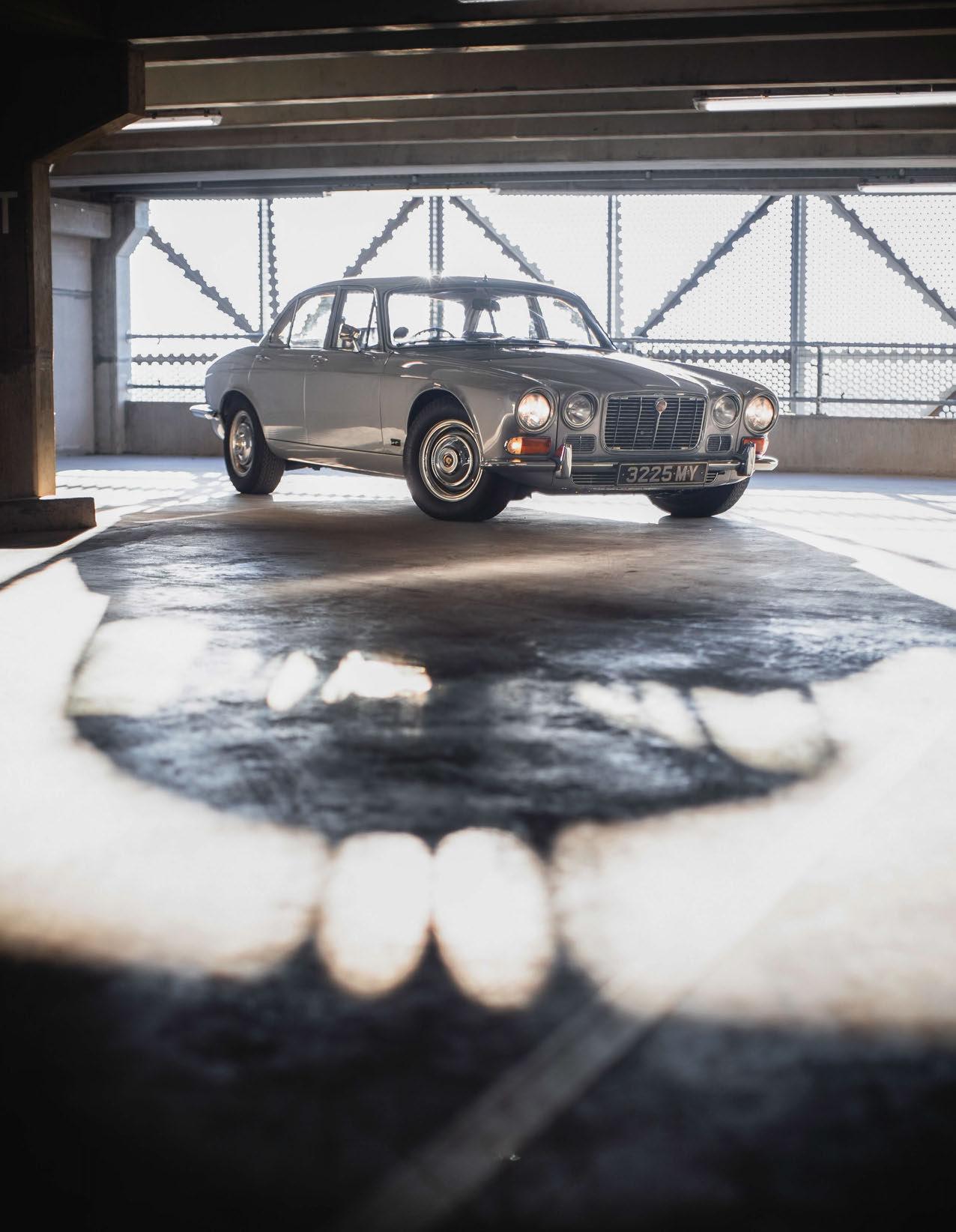

‘THE
Above
Late in the styling process, a rounded E-type-like tail was cut through vertically, resulting in this elegant rear end.
Another confession. I arrived at the photoshoot in my wife’s modern car because the weather had been foul and there’s plenty of salt on the roads. So I climbed down from her SUV and into the low-slung XJ6 and was immediately impressed. Think of taking off your ‘active’ Lycra performance kit and slipping on a four-ply cashmere cardigan. Yes, the Jaguar provides absolute comfort and luxury, obvious within a few hundred yards of driving it.
After the modern car’s harsh, brittle, jittery, agitated ride, allied to its small and hyperactive turbocharged engine, fat-rimmed steering wheel and crashing 45-section tyres, the 55-year-old Jaguar XJ6 feels like a magic carpet. Young mechanical engineers go on about the fabled NVH (noise, vibration, harshness) targets as well as lap times around the Nürburgring but, clearly, none of them has ever experienced an XJ6 of old. Dare I mention it? This is an English motor car designed for English roads with all their broken promises.
Driving this XJ6 shows up just how far wrong so many car manufacturers have gone in the pursuit of fashionable looks. Riding on the correct Dunlop radial tyres, the XJ displays exemplary road behaviour. The ride is pliant, soft, controlled,
comfortable and yet sure and reactive when you want to change lanes or manoeuvre through the traffic. The anti-dive suspension works effectively and that Adwest Varamatic steering doesn’t seem so over-light by today’s super-assisted standards.
I really want this car, this Jaguar that turns out to be an excellent urban conveyance. Of reasonable size, it fits anywhere and, unlike big SUVs, it offers a quiet, soothing ride, insulating you so effectively from external aggro. Its manual gearbox is so superior to the awful automatic as to be a real game-changer. In and around London there’s nothing better and on open roads the XJ zings rather than plods. Classic car status swerves it out of road tax and ULEZ nonsense and it’s a simple creature to own and run. I must admit, I’d have a Jaguar specialist massage another 50bhp out of that lovely six-cylinder engine, which is easily done, as the superb chassis and handling dynamics deserve more growl. Then I’d enjoy one of the best cars in the world, with its sensuous demeanour and hands-on ’box. Six and the city, shall we say? Indeed.
THANKS TO Duke of London, dukeoflondon.co.uk.










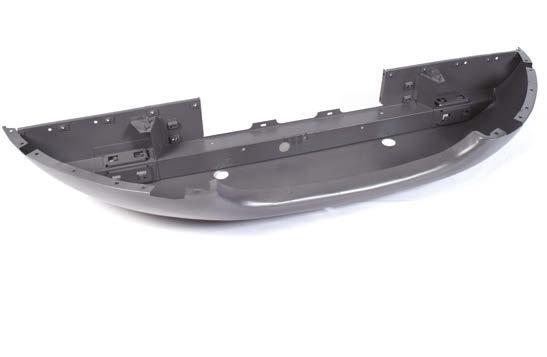



















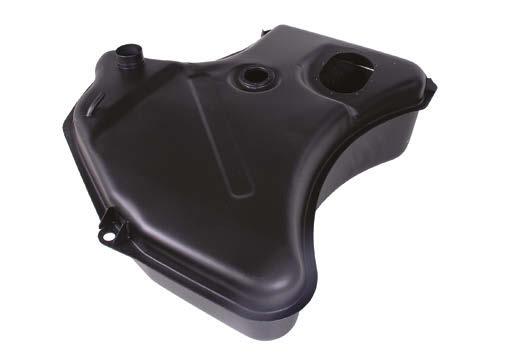
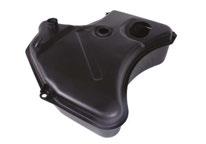
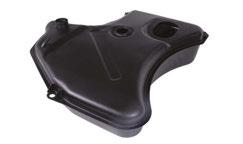
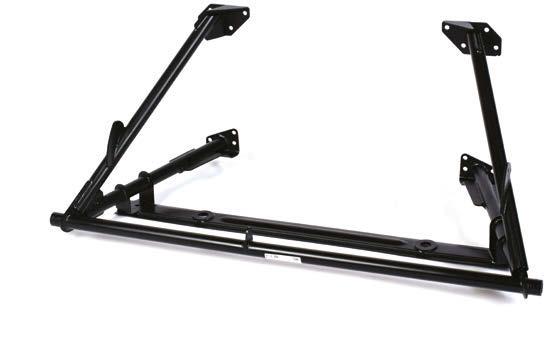
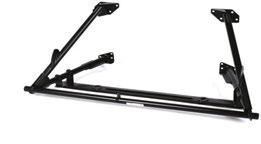





















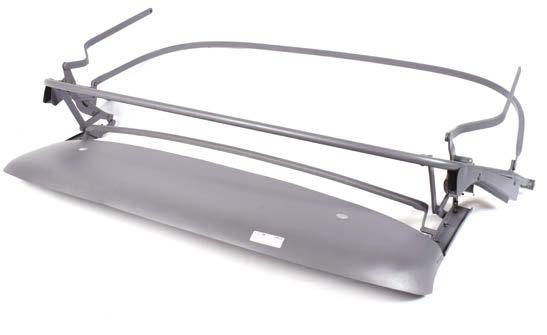


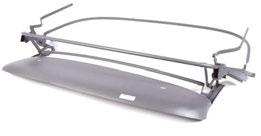


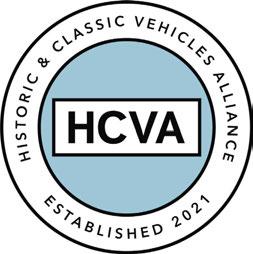
BENEATH the svelte lines of the immortal E-type Jaguar lies its real strength – brilliant engineering from the man for whom life was all about form and function, Sir William Lyons. In the leafy lanes of Surrey, WinSpeed of Guildford preserves and enhances that essential philosophy. Dedicated to both the E-type and XK in all their forms, Peter Hugo and Chris Window created their company 15 years ago, catering almost exclusively for the Jaguar marque.
Today, you may see a multitude of E-types and XKs undergoing myriad treatments in the WinSpeed works, from regular maintenance to full-blooded restorations. Alongside the E-types and XKs various other classic sports and saloon Jaguars are also to be found, the common connector being the famous XK engine. e business prides itself on being engineering-led and all servicing, repair and restoration work is done in-house. is includes its engine-building shop, in which a constant ow of both XK and V12 engines undergo fastidious rebuilds. Only paint and upholstery are farmed out under supervision to long-standing associates. In addition, WinSpeed pioneers its own specialist products, designed to overcome period production shortcomings.
Although dedicated to engineering, WinSpeed also has a sales operation that o ers hand-picked Jaguars, again dominated by E-types. To these cars it can bring its specialist expertise to bear so that any potential customer can enjoy the bene t of an honest appraisal of a car – vitally important when making a serious investment in a car that is at least half a century old.
Visitors are always welcome and are certain to witness a variety of classic Jaguars being worked on. Seeing a chassis-up restoration project is fascinating, as is observing, say, an XK or V12 engine being fully rebuilt to racing or fast-road speci cation.
WinSpeed is a hidden gem in the classic Jaguar world, dedicated to helping owners get the very best out of their cars.

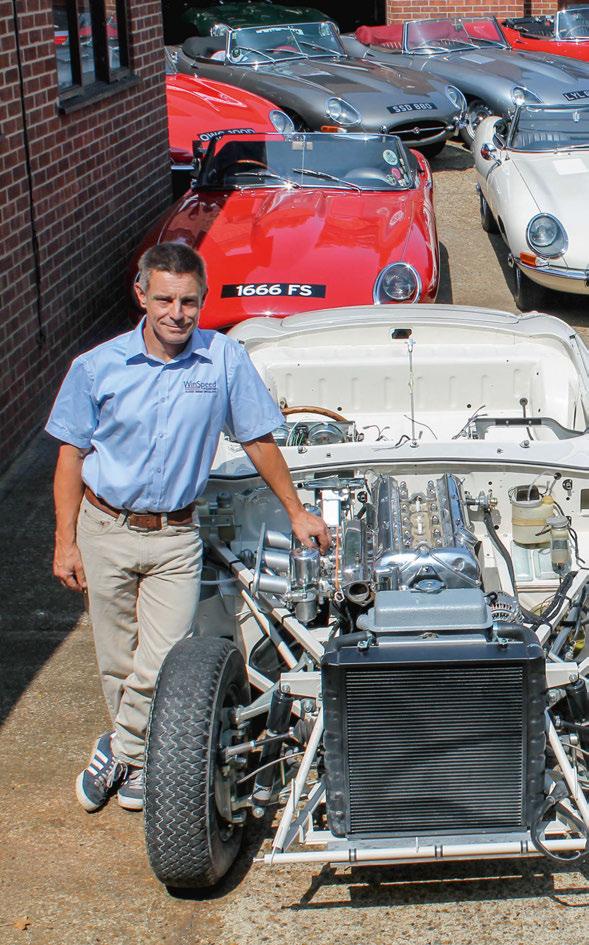










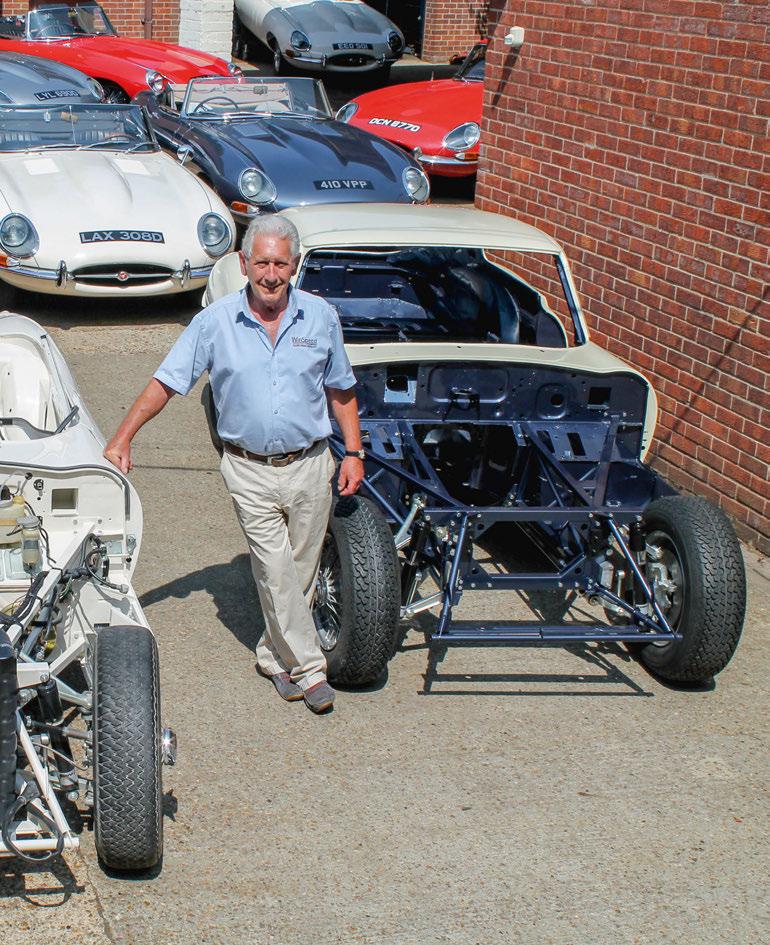

Worldwide leading wholesaler of Land Rover and Range Rover parts and accessories for all models.
+44 (0)1588 672711 www.britpart.com


Suppliers of top-quality automotive and inspection lighting, including Retrofit Classic LEDs. richard.armstrong@lumileds.com www.philips.co.uk

Autohistoric: specialists in the preservation and restoration of veteran and vintage vehicles.
+44 (0)1825 873636 www.autohistoric.co.uk
Jaguar preservation, restoration and servicing, specialising in cars from the 1950s and 1960s.
+44 (0)1789 507611 williamheynes.com

Buga i Owners’ Club and Presco Speed Hill Climb: championing motorsport and hillclimbing since 1929. +44 (0)1242 673136 www.presco hillclimb.co.uk

Harding Auto Services: 1920s to modern day, road, race and custom.
+44 (0)1483 487626 hardingautos.co.uk
The HCVA hosted its fourth Heritage Ma ers Day on 3 June. More than 120 leaders from across the historic and classic car industry converged on the Hagerty Clubhouse at Bicester Motion for a day of insight around a theme of ‘Navigating a changing environment’.
Following the tragic fire there in late May, we were grateful to the team at Bicester Motion for enabling Heritage Ma ers to go ahead as one of the first events reinstated. We all paid our respects to those impacted. It is notable how the tragedy brought out the very best in people and reinforced the sense of community at Bicester and far beyond. We were proud to welcome Tim Moss CBE (below) in his first industry address as CEO of the DVLA. We heard about his aspirations and an indication of what to expect from the DVLA with respect to the future treatment of historic vehicles. It was very reassuring that representatives from both the DVLA and the DVSA share our passion for protecting our automotive legacy.
These face-to-face events are an important part of the HCVA vision, bringing trade specialists together and gaining recognition of the benefits that a collective unified voice can bring when dealing with the challenges that face the industry.
We have come a long way since the HCVA was formed in 2021 to gain wider recognition of historic and classic vehicles as an important industry and UK success story – far beyond a hobby or pastime for enthusiasts. This ongoing advocacy from the HCVA and the Historic Vehicle User Group (HVUG) is testament to a new level of understanding and cooperation with Government agencies. Picking up on a comment from a speaker that members of the the public trust industry experts more than politicians is a case in point: industry working with Government will inevitably deliver the best outcomes for consumers and our sector.
I think it is fair to say that the HCVA has arrived as a recognised trade organisation and now is the perfect time for all businesses operating in the sector to get on-board and join us at www.hcva.co.uk. Together we are stronger!
Dale Keller, CEO







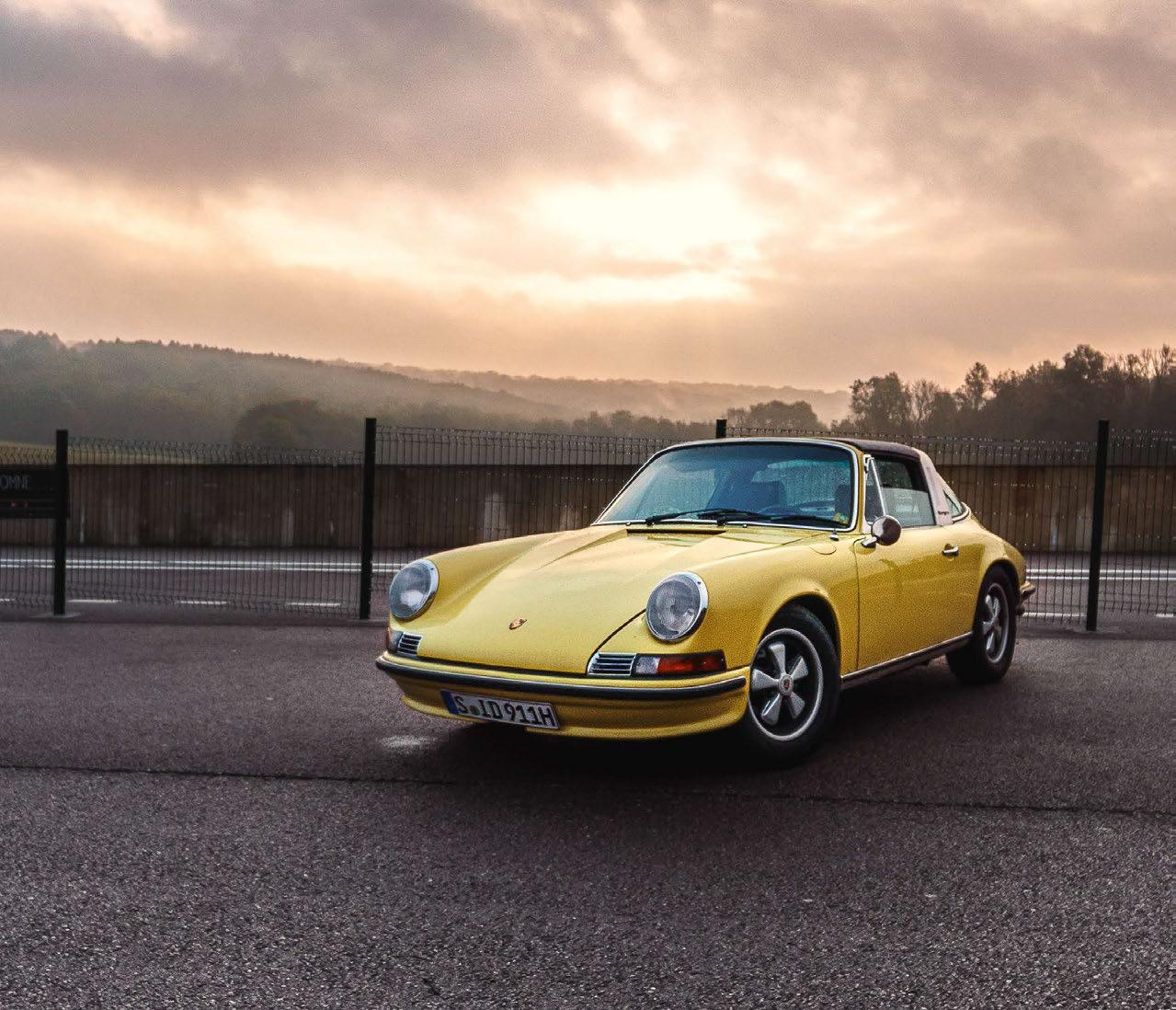
WHEN MY BRITISH colleagues approached me as the publisher of Octane’s German edition to contribute to this section, I did not expect that my rst piece would become a bit of a sad review. Only when I sat down to write did I realise how li le I’ve been using my classics recently. at’s partly because I’ve been working a lot (probably too much) and that’s meant spending a lot of time in modern cars rather than classics. But, when I thought about it, there were also some serious technical issues that plagued me and my classics –
and, of course, mostly during those sunny summer days when you want nothing more than to be out on the road in them and having some serious fun.
My Porsche 911T had been uprated to S-spec during its restoration at Abbo Cars in South Africa prior to me buying it from a chap in the UK, who had imported it from the Cape. As it’s a le -hooker, there was not much demand for it in Britain, so I was able to get a good deal on it – long before 911 prices sky-rocketed. I did drive it quite a bit at rst but then the carbure ors (about the
only things that have not been converted to S-spec) started giving trouble. Upon inspection, it became clear that at least one of them was beyond repair, so I decided to take the opportunity to swap them for a pair of Webers. While changing the carbs was straightforward and I love the gurgling intake sound they make, we have still not managed to tune them to my liking. So the 911 spent large parts of last summer in the hands of various specialists to sort things out. I have hope for the coming season, though.
e li le Frogeye Sprite, which
was actually meant to be our daughters’ car, therefore had to step in for the 911 as my summer driver. is was ne because both our daughters are away at university and only rarely show up to take it for a spin, so I had the privilege of using it for a few weekends while also sorting out a couple of issues.
As this car is heavily modi ed with a 1295cc engine, a Weber carb (which works perfectly here) and a few more period conversions that were desirable back in the day, it’s no surprise that it needs quite a bit of
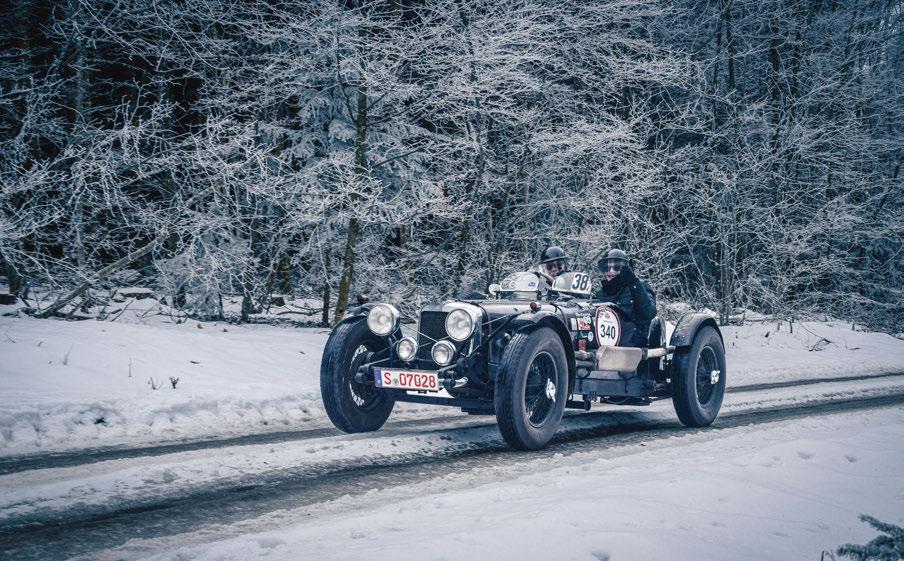
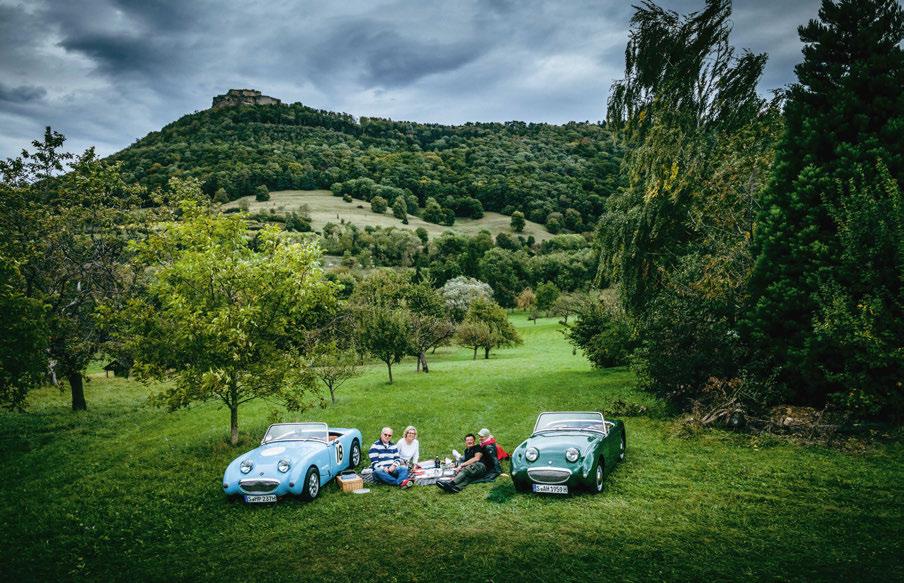
‘The 911 spent large parts of last summer in the hands of various specialists to sort things out’
attention. So, when the engine fell silent during an outing due to a faulty fuel pump, I replaced the Lucas item with a heavy-duty HARDI pump that has kept me going ever since. High hopes for the summer with this one, too!
Finally the Alvis. No roof, no hood, no heater, no windscreen – so the ideal car to take for a one-day winter rally in the mountains outside Stuttgart in January. Luckily the weather was cold but sunny, with some snow and icy patches on the country roads. After we had spent a full day out in the wintry woods, the
These are the cars –and ’bikes – run by Octane’s staff and contributors
JAMES ELLIOTT
Editor-in-chief
• 1965 Triumph 2.5 PI
• 1968 Jensen Interceptor
• 1969 Lotus Elan S4
ROBERT COUCHER
Founding editor
• 1955 Jaguar XK140
GLEN WADDINGTON
Associate editor
• 1989 BMW 320i Convertible
• 1999 Porsche Boxster
SANJAY SEETANAH
Advertising director
• 1981 BMW 323i Top Cabrio
• 1998 Aston Martin DB7 Volante
• 2007 Mercedes-Benz SLK200
MARK DIXON
Contributing editor
• 1927 Alvis 12/50
• 1927 Ford Model T pick-up
• 1942 Fordson Model N tractor
• 1955 Land Rover Series I 107in
ROBERT HEFFERON
Art editor
• 2004 BMW Z4 3.0i
DAVID LILLYWHITE
Editorial director
• 1971 Saab 96
MATTHEW HOWELL
Photographer
• 1962 VW Beetle 1600
• 1969 VW/Subaru Beetle
• 1982 Morgan 4/4
BEN BARRY
Clockwise, from opposite Dark clouds above the 911 as it spent most of the summer in the hands of specialists; winter outing for the not so faint-hearted in the Alvis 12/70 –before suddenly losing oil-pressure in the cold; spending a Sunday out for a picnic with the Frogeye was one of the rarer events last year.
old lady suddenly lost oil pressure and the water temperature went sky-high at the same time –fortunately when we were close to the finish line. We took her home on the trailer, and now I have some work to look forward to in the coming months.
Contributor
• 2007 Mazda RX-8
MASSIMO DELBÒ
Contributor
• 1967 Mercedes-Benz 230
• 1972 Fiat 500L
• 1975 Alfa Romeo GT Junior
• 1979/80 Range Rovers
• 1982 Mercedes-Benz 500SL
• 1985 Mercedes-Benz 240TD
SAM CHICK
Photographer
• 1969 Alfa Romeo Spider
ROWAN ATKINSON
Contributor
• 2004 Rolls-Royce Phantom
BERTHOLD DÖRRICH
Contributor
• 1939 Alvis 12/70 Special
• 1958 Austin-Healey Sprite
• 1972 Porsche 911T
ANDREW RALSTON
Contributor
• 1955 Ford Prefect
• 1968 Jaguar 240
RICHARD HESELTINE
Contributor
• 1966 Moretti 850 Sportiva
• 1971 Honda Z600
PETER BAKER
Contributor
• 1954 Daimler Conquest
• 1955 Daimler Conquest Century
• 2005 Maserati 4200GT
• 2008 Alfa Romeo Brera Prodrive SE
DAVID BURGESS-WISE
Contributor
• 1924 Sunbeam 14/40
• 1926 Delage DISS
MATTHEW HAYWARD
Markets editor
• 1990 Citroën BX 16v
• 1994 Toyota Celica GT-Four
• 1997 Citroën Xantia Activa
• 1997 Peugeot 306 GTI-6
• 2000 Honda Integra Type R
• 2002 Audi A2
JESSE CROSSE
Contributor
• 1968 Ford Mustang GT 390
• 1986 Ford Sierra RS Cosworth
MARTYN GODDARD
Photographer
• 1963 Triumph TR6SS Trophy
• 1965 Austin-Healey 3000 MkIII
DELWYN MALLETT
Contributor
• 1936 Cord 810 Beverly
• 1937 Studebaker Dictator
• 1946 Tatra T87
• 1950 Ford Club Coupe
• 1952 Porsche 356
• 1955 Mercedes-Benz 300SL
• 1957 Porsche Speedster
• 1957 Fiat Abarth Sperimentale
• 1963 Abarth-Simca
• 1963 Tatra T603
• 1973 Porsche 911 2.7 RS
• 1992 Alfa Romeo SZ
EVAN KLEIN
Photographer
• 1974 Alfa Romeo Spider
• 2001 Audi TT
HARRY METCALFE
Contributor
• 20 cars and 15 motorbikes
To follow Harry’s adventures, find Harry’s Garage on YouTube.
Martyn Goddard
EVERY APRIL FOR the past 37 years, I have rolled the ’Healey out of winter hibernation to get it ready to use over the summer, instead of the daily grind of 21st Century highway hell. Over the years we have had epic adventures, top down and armed with a red Michelin Guide, to the French Alps and Riviera, Lake Como in Italy, the Rings of Kerry, Ireland, and Le Mans.
This year is the Healey’s 60th birthday, so it seemed appropriate to visit the place where the car was made – the BMC works in Abingdon, Oxfordshire – as part of our road trip to the Cotswolds and a Bicester Scramble. We planned to start on national Drive It Day, 27 April, a charity event organised by the Federation of British Historic Vehicle Clubs that nominally celebrates the 1000 Miles Trial of 1900 but in reality is just a great excuse to blow the cobwebs out of our classic cars.
Having researched the MG factory where my car was built, it quickly became apparent that little remains to show where 171 YNO was finished before export to Germany and then on to Dallas, USA. Our car now resides in the Isle of Thanet, where a road trip in France is more convenient than many UK destinations.
We set off top-down, on the promise of a mini-heatwave, but the motorway drive west was in thick fog – circumnavigating the M25 in a classic car is always a challenge, but in poor visibility it’s positively nasty. Three hours later we arrived in Abingdon and spent time shooting the ’Healey in the historic centre by the Thames [above], before a tortuous drive to Bicester Heritage – the A34 was at a standstill. Thankfully, I was able to use local knowledge to divert.
The Bicester Scramble was all go, and the heatwave had arrived
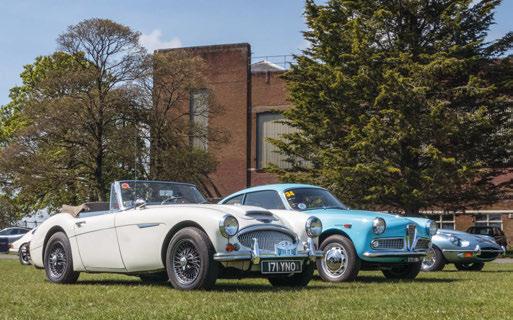

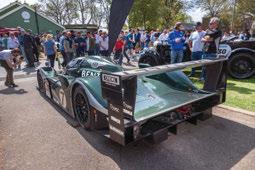
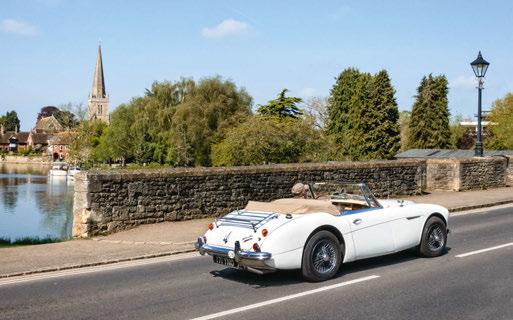
by the time we parked next to a fine Alfa Giulietta. My wife Beverley is not a great motoring enthusiast but the displays of vehicles and vintage aircraft, including a 1940 Spitfire flown by Squadron Leader Brian Lane DFC, knocked her out.
By mid-afternoon it was time to head for Stow-on-the-Wold to check in at the Sheep On Sheep Street hotel, and this one-hour drive was the best of the day, across the Cotswolds on sweeping B-roads with mercifully light traffic – a proper Drive It Day road. At journey’s end we’d covered 208 miles.
Day two consisted of a very pleasant drive on traffic-free country roads to Hidcote
Gardens, the legacy of Lawrence Johnston, plant collector and garden designer. This was followed by a photo opportunity in Chipping Campden, the quintessential Cotswolds village where the ever-present Japanese tourists photographed the ’Healey parked in the high street. Classic cars are much more fun when you drive them on the roads they were built for and our round trip worked out at about 500 miles – half the distance of the original trial in 1900.
1955 Jaguar XK140 FHC Robert Coucher
AS I HAVE MENTIONED before, every five years or so the XK ‘fails to proceed’. Not its fault, and entirely to be expected, since this now seems to be the lifespan of a battery. The car, being a Jaguar, has always been polite and failed in the garage. So I call the AA man and he comes over in his yellow van and fits a new battery on site. Job done, so far on three occasions.
The 140 almost failed to proceed along the King’s Road some years ago when the Lucas fuel pump started to pack up, but I tapped it with a hammer and we got home, whereupon I had a superior Facet pump fitted that works like a Trojan.
The other day I thought I’d take the Jag out for a weekend run around London. Arrived at the garage, unlocked the car, inserted the key, let the Facet pull fuel through for a few seconds and hit the starter button – only to be met with a clicking sound from somewhere on the firewall and no lovely double-overhead-cam straight-six leaping enthusiastically into life. Blast.
Come Monday morning, I called my local Central London classic car dealer and specialist,
one Graeme Hunt, Esq. There I spoke to head mechanic Gary Puxty, who has assisted with a few Jaguar issues over the years. Fortunately, Gary is an electrical engineer and well-versed in the black arts of electrical gremlins. Because he races open-wheelers and is also a race engineer, he understands that time is of the essence and he suggested: ‘Let’s do it now. I’ll come over to your garage and get it started.’
Gary soon determined that the starter solenoid, mounted deep down on the firewall, was the problem. That was swiftly replaced with a new solenoid that also incorporates a push starter button, remounted within easy reach, just under the bonnet.
The big six-cylinder engine now spins over with zeal and starts with authority. With classic car specialists being so thin on the ground in London these days, I’m ever-grateful that the premises of Graeme Hunt Ltd are literally five minutes’ drive from me, just off Falcon Road in SW11.
Below
A failure to proceed: not the battery, this time the starter motor solenoid, remedied with the right help.
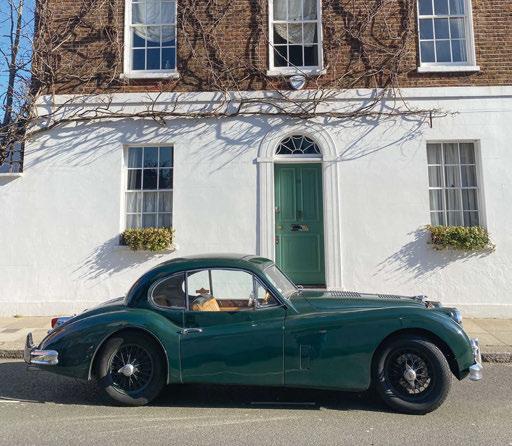
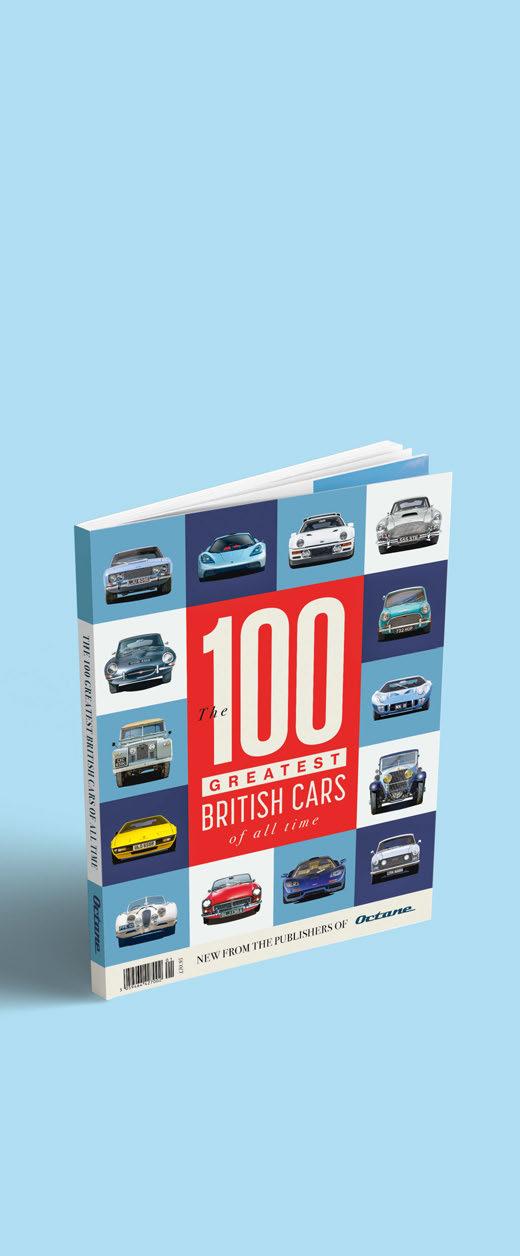
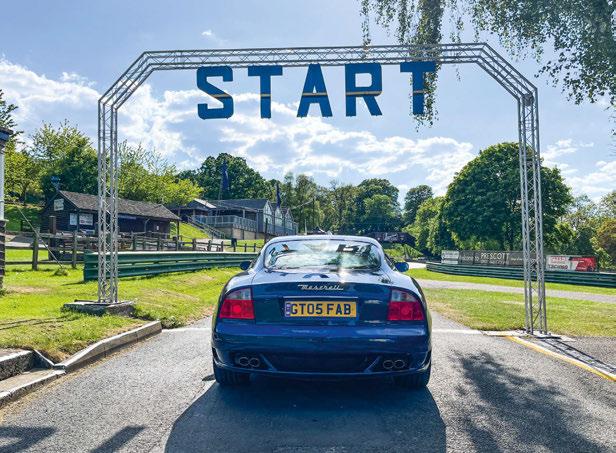
2005 Maserati 4200GT and more Peter Baker
I ALWAYS GET very nervous come MoT time. Will it, won’t it?
A bit like visiting the dentist: he is sure to find something. And you can bet your life it won’t be a cheap fix.
So imagine my relief when ‘Enrico’, my Maserati 4200GT Cambiocorsa, scored a first-time pass, with no advisories. Let’s call that a win. Even better, Vic, who owns my local Ferrari and Maserati specialist, Migliore Cars in Bromsgrove, after giving the car his personal attention (including a check for clutch wear – only 30% worn) declared it ‘one of the nicest he’d driven’.
This, of course, means yours truly is now riding cloud nine, and looking forward to a summer of
Italian-style motoring without twitch or worry.
Meanwhile, at the beginning of May I entered my roadgoing Alfa Romeo Brera 2.2 JTS Prodrive, better known as Alfie, in the first hillclimb of the season at Prescott. Having paid my entry fee of £170, preparation proved easier and cheaper than expected; no more than an hour’s work, in fact. All I had to do was make and fit a simple timing strut, screw in tow hooks back and front, and stick on a couple of labels to let worried marshals know where the battery sits and how to turn off the ignition. So straightforward was the prep that I thoroughly recommend hillclimbing to anyone wishing to indulge
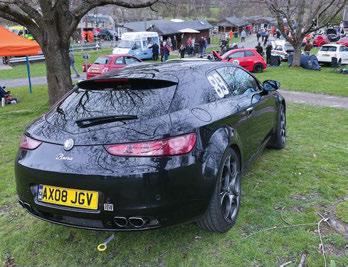
in some light motorsport without breaking the bank. Or the car.
Come the day – well, two days actually, which makes it even better value for money – yours truly was off and running. Target? To beat my handicap of 60.5sec, soon reduced by a wide-awake timekeeper to 59.75. Against the odds, on my very last competitive run I posted a personal best of 59.27sec, enough to give me the class win.
Thanks to Daniel Hunter of Whitsun Motorsport putting in the hours, Doris the 1954 Daimler was eventually delivered the day before the Prescott Historic meeting three weeks later. That was also held over two days and, guess what, the seemingly endless stream of sunny weekends came to an abrupt end as I did my first practice run up the hill. In fact, the rain persisted all day, so I never got to unleash (is that the right word when one is talking 75bhp and two tons of motor car?) Doris’s full potential. So slow was my last run, in fact, that the official timing gear stopped working.
Come the Sunday morning, there was at last some blue sky. I believed my handicap under favourable conditions was within reach and, sure enough, in nigh-on perfect conditions I stopped the clock 0.18sec outside it. How close was that? Doris performed well, even on winter tyres. Some say that was a gamble that didn’t pay off.
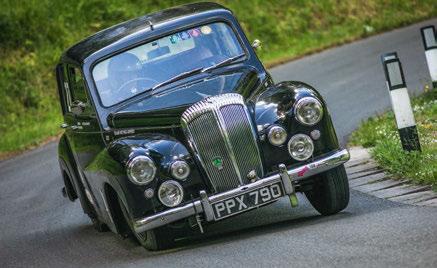
‘Returning from a six-country, 2000-mile European jaunt in the 1989 Porsche 911 Turbo S meant a busy weekend with cleaning potions before it went on display at the London Concours’ Harry Metcalfe
‘We’re reluctantly putting my wife’s 1969 Triumph Herald 13/60 Convertible up for sale. Email sanjay@octanemagazine.com if you’d like to know more’ Sanjay Seetanah
‘Happened to run into Derek Magrath, who did a fine job of working on the Lamborghini Espada that I used to write about here, and I reckon it’s time to set him on my Alvis 12/50 and get it sorted ’ Mark Dixon
‘The 1973 Porsche 2.7 RS has, I hope, entered the final glide path to completion. Engine detailed, new brake calipers and “Salt ’n’ Pepper” carpet kit ordered. Can’t be much longer now – can it?’ Delwyn Mallett
‘As for my Porsche (a lowly Boxster), it’s in for a windscreen replacement ahead of service and MoT. Might get around to sorting a new rear ’screen soon, too’ Glen Waddington
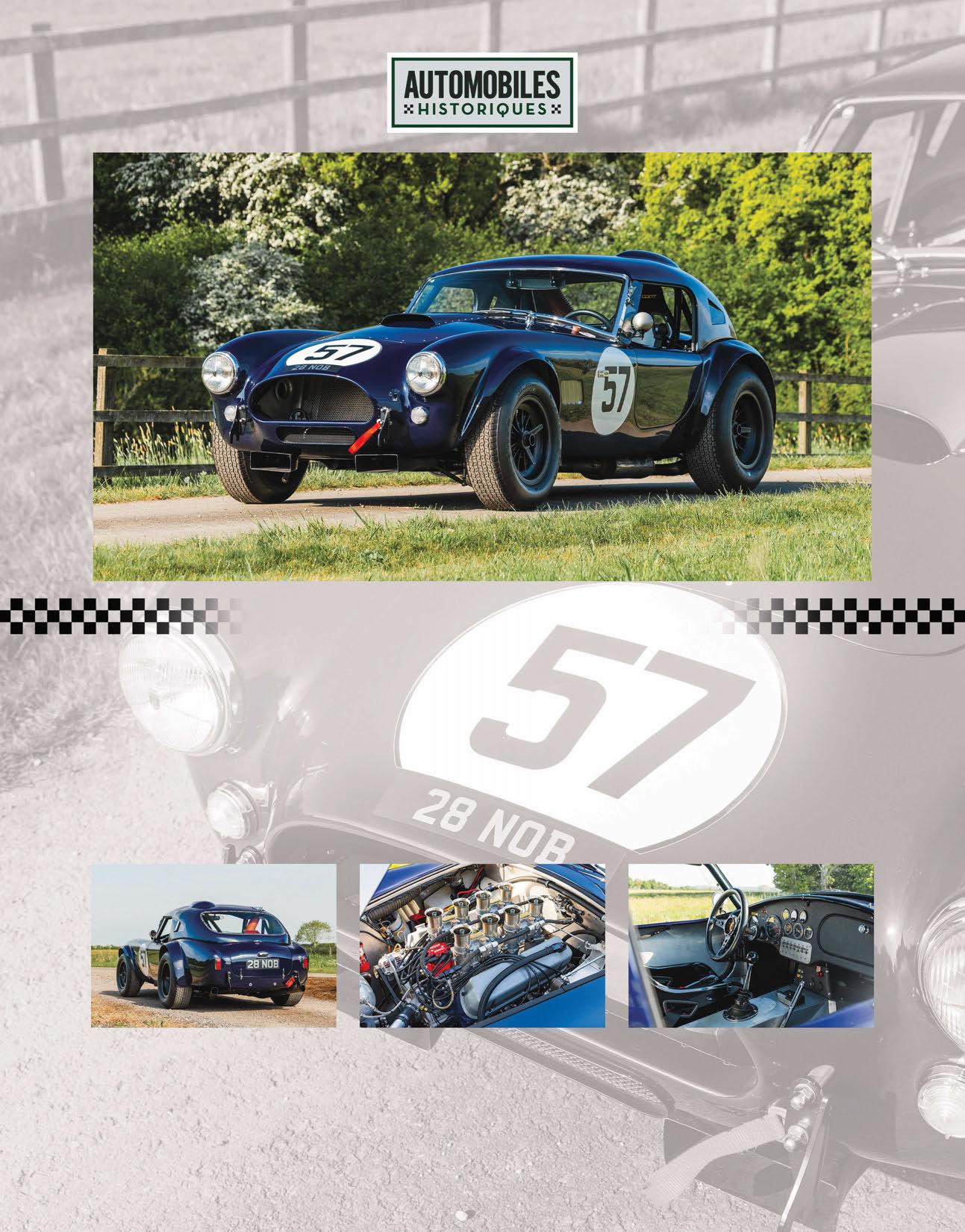
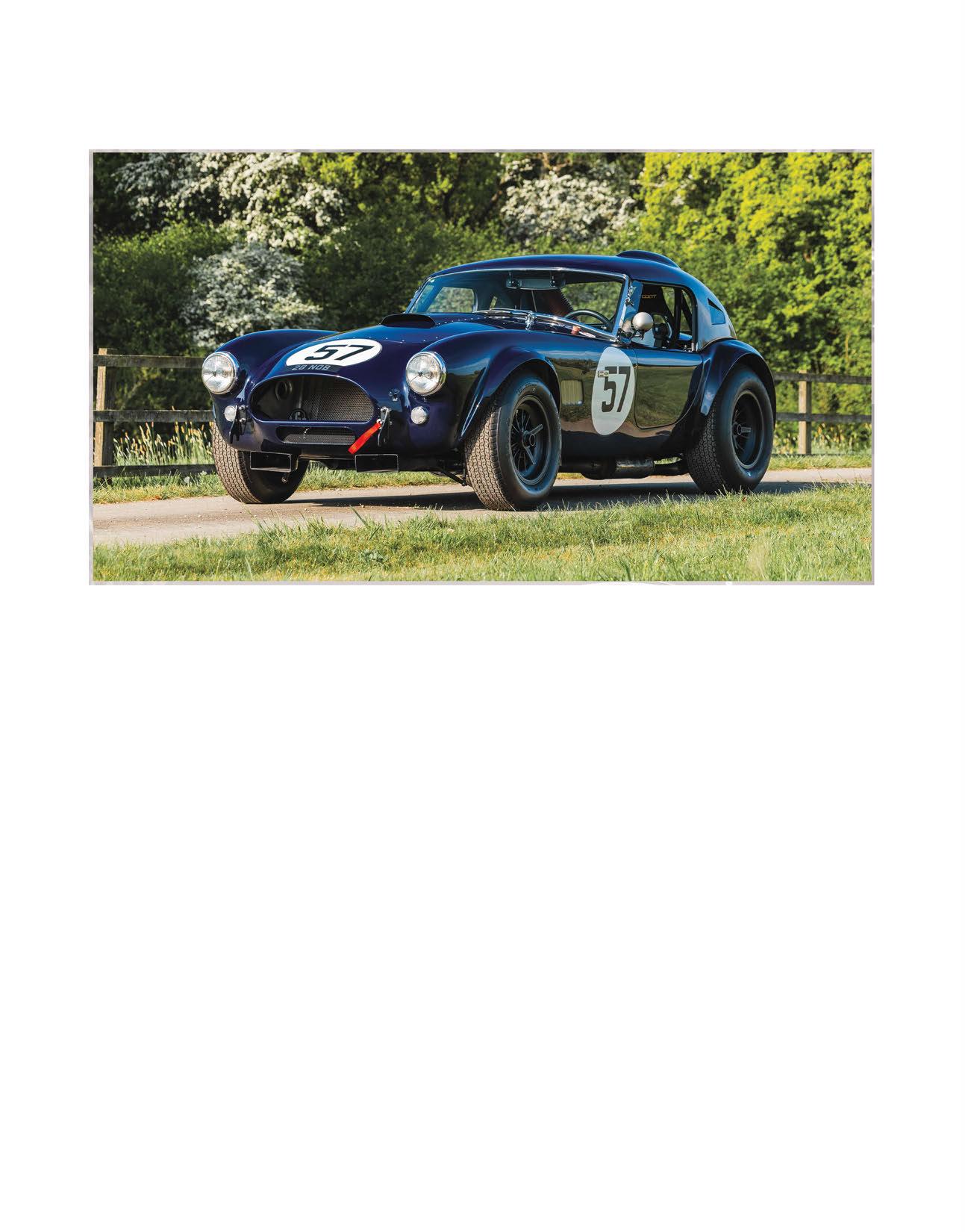

Other interesting cars we’ve been driving
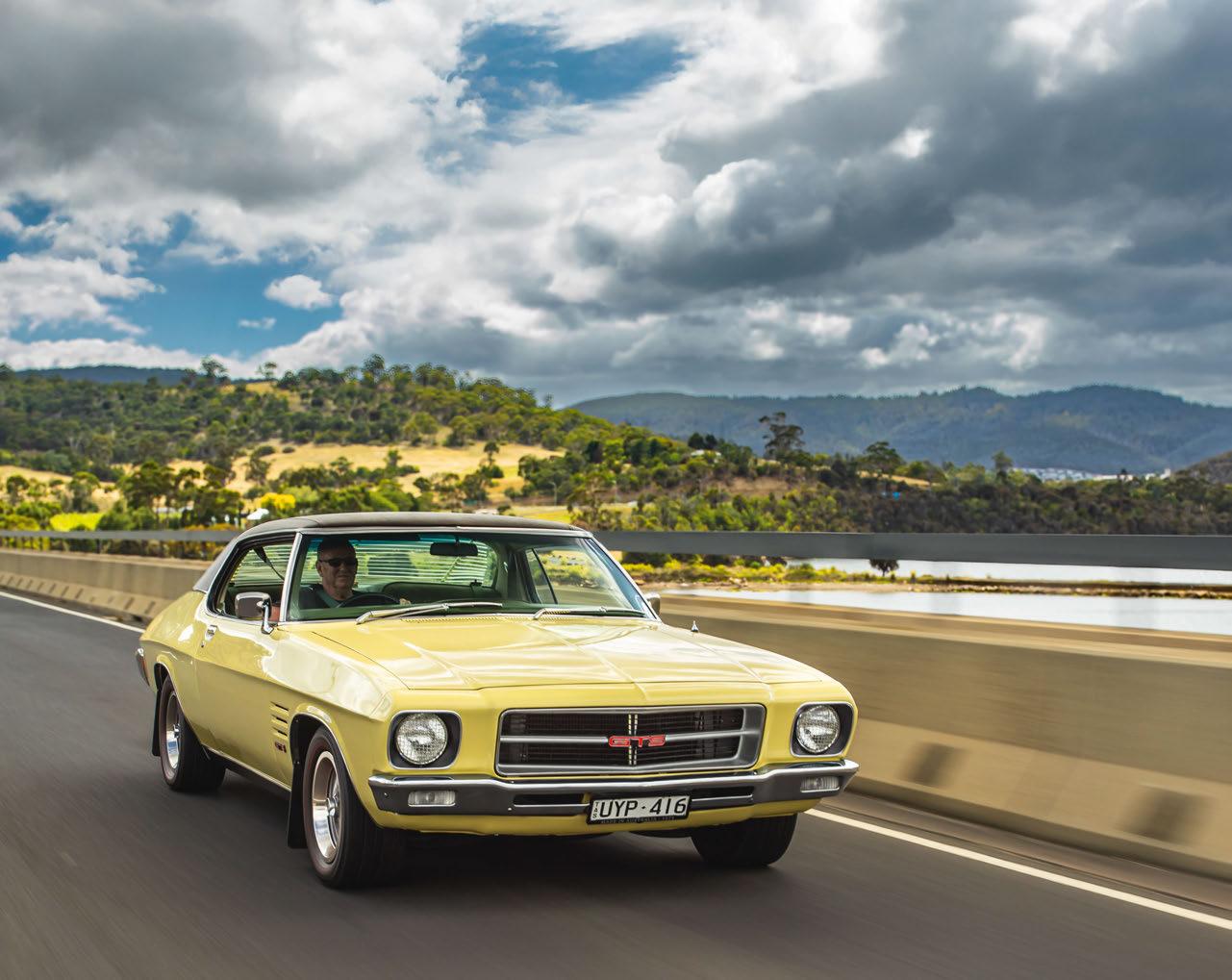
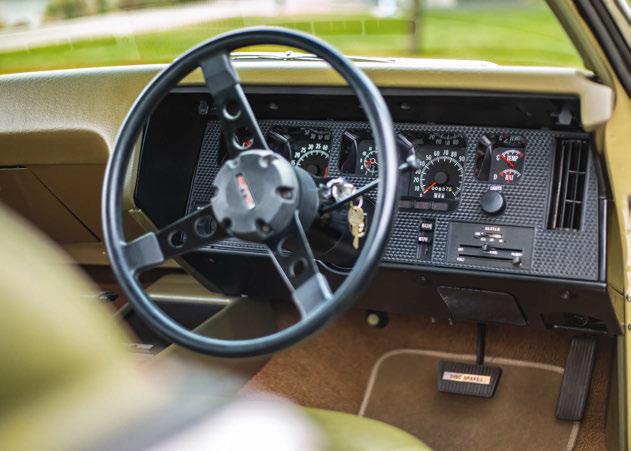

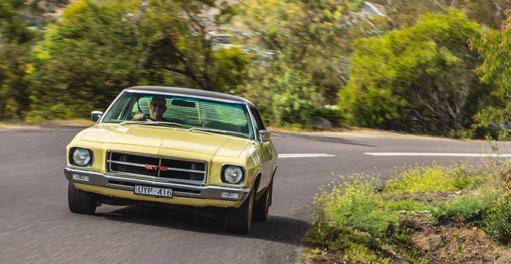
a major car exporter and, when it did venture into overseas markets, it was usually to other right-handdrive countries such as New Zealand and South Africa, as well as parts of Asia. However, Holden’s Monaro coupé of the early Noughties was available in the USA as a left-hooker, wearing Pontiac GTO badges, and in the Middle East as a Chevrolet Lumina. It was also offered in original right-hand-drive guise for UK buyers as the Vauxhall Monaro VXR. It even won a ‘Best Muscle Car’ gong in 2004.
Yet despite all this international activity, the Monaro has always been a thoroughly Aussie machine, having debuted in 1968 and continued until 1977 in both two- and four-door form, and then being reintroduced in the early 2000s as the award-winning coupé that went on to be shared with the rest of the world.
Early Monaros came with a variety of engines, ranging from modest straight-sixes to V8s of between 4.2 and 5.7 litres in capacity, mated either to a three-speed auto or four-speed manual transmission, all with floor-mounted shifts.
The Covert Beige Monaro shown here is a beautifully restored 1971 HQ series GTS, belonging to retired project manager Craig Fazackerley. It’s the second body style in the Monaro’s run and remained in production, with various styling tweaks, for a further six years.
Slide behind its three-spoke sports steering wheel and you’re
immediately struck by its girth, necessitating the sort of openlegged sitting position you might only assume otherwise in known company. What’s also obvious is the car’s airy, light-filled glasshouse. The plush, if not particularly supportive, bucket seats have been re-trimmed in original-style olive vinyl; instrumentation includes a speedometer calibrated in mph (Australia went metric in 1974).
The 4.2-litre V8 snarls through its twin tail-pipes, while the GM Trimatic auto engages with a mechanical feel that speaks of reliability – even if reaching the T-bar selector is quite a stretch, especially against the constraint of the fixed seatbelt. Out on the Huon Highway, which winds its way around Hobart’s Mount Wellington in southern Tasmania, acceleration is brisk and gearshifts are barely perceptible. The Monaro weighs in at around 1425kg and, while it feels like it has real momentum behind it, it remains composed while cornering and under acceleration or deceleration, with a firm ride that suits our chosen country route. Both the power-assisted steering and servo-assisted front-disc, rear-drum brakes are a pleasant surprise, with no slack through the wheel and a strong, immediate response when slowing hard, without pulling to either side.
Of course, a 1970s Monaro isn’t fast by today’s standards but this is no slouch, easily capable of mixing it in everyday traffic with cars half a century newer and worlds away in terms of technology. It also has a history and style that few of today’s vehicles will ever rival.
2009 Porsche 997 Sport Classic Matthew Hayward
DURING A RECENT trip to Berlin for a preview of the latest 911 Spirit 70 – full story of the Pascha-trimmed special on the website – I finally got behind the wheel of a 997 Sport Classic. Unveiled in 2009 and intended to tug the heartstrings of 2.7 RS fans, it has, for many years, been my dream-spec 911. The 997 is still in my opinion one of the best-looking 911s, and the Sport Classic elevates it further with unique cosmetic changes. Most notable is the ducktail rear spoiler, to which was added a bespoke rear bumper, gorgeous Fuchs-style wheels and a unique double-bubble roof – not to mention Sport Classic Grey paint. The interior is beautifully trimmed in a dark coffee leather.
A 997 feels so narrow after a later 991 or 992. Mechanically, the Sport Classic offered a combination of components from throughout the range. The powertrain combined the 3.8-litre flat-six from the Carrera S with the Powerkit that pushed output to 402bhp, and it was available only with a six-speed manual ’box and rear-wheel drive, all fitted in the C4’s wide-hipped body.
The exhaust, tuned to emulate the sound of a 1970s 911, emits a satisfying, slightly gruff note while pottering around town. On more open, flowing roads, that unmistakable nose-light 911 balance comes into play, as does the 3.8’s slightly more tuneful upper rev-range. The Sport chassis pack was standard, which means slightly lower and stiffer suspension with an LSD. The result is purposeful rather than uncompromising: steering feel isn’t quite in the league of older 911s, though the steering wheel connects you to the road in a refreshingly analogue way.
A short stretch of derestricted autobahn beckons, and the 997 feels supremely stable as the speed rises into triple figures. Although the standard carbon-ceramic brakes offer immense stopping power, finding the claimed 188mph top speed is not an option today: winter tyres on this example limit us to 130mph. Probably for the best, given the potential value of this car now… And there’s the rub. This was certainly an expensive car when new, costing £140,000 and limited to 250 examples worldwide. This pre-production model lives in the Porsche Museum collection but any Sport Classic is now worth upwards of £250,000, and a pristine car made an astonishing $643,000 at auction in 2023. So, while the Sport Classic remains firmly on my lottery-win wishlist, after reigniting my admiration for the 997, a tidy 997 Carrera S (for a tenth of the price) now sits on my real-world ‘cars to buy’ list!


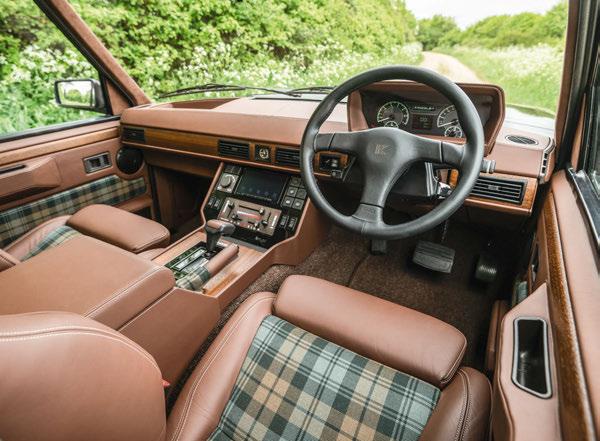

THE LAST TIME we featured a Range Rover given a makeover by Oxfordshire-based Kingsley was in Octane 234, almost three years ago. That was a 1971 early three-door, with a 3.9-litre injected Rover V8 and suspension upgrades, and it cost £125,000. This one is based on a 1991 five-door with a 4.6i V8 and it costs £260,000 plus VAT. What’s changed, apart from the pricing?
Well, the company has, for a start. Since 2022 it’s been through a clean sweep of owners and management team, and been renamed Kingsley Re-Engineered. But this early example of Kingsley’s latest offering is also quite a different beast from that previously tested example.
Externally, it looks pretty stock, although the 18in Defender all-black Sawtooth alloys –necessary to clear huge 350mm brake discs – don’t give quite the right vibe; Kingsley is working on being able to offer 17in or even 16in rims (pothole sufferers will appreciate the latter). But the most noticeable difference is in the interior, where the limitations of trying to make the original Range Rover build quality worthy of a very premium-priced vehicle used to be distinctly noticeable.
This time Kingsley has largely redesigned what’s inside, in particular the centre console and seats. And, while the basic shape of the dash and instrument binnacle are retained – albeit with leather trimming – the former is now built on an all-new substrate, subtly tweaked to incorporate a reworked air-conditioning system.
But it’s the centre console that has been most radically reworked, retaining traditional buttons with a Range Rover-style (but all-new) anodised heater control panel and
modestly sized multimedia LCD screen. There’s also an anodised twist knob for the suspension’s TracTive electronically adjustable dampers; the Rangie still rides on coil springs but you can now vary the damper response through five stages while on the move.
Completing the internal transformation are Recaro Expert M front seats, which have been given bespoke padding for a slightly lower seating position to reduce the need to physically climb up into the vehicle.
The engine here is a completely rebuilt and balanced GEMS unit from a later P38A Rangie, coupled to an old-school ZF 4HP22 four-speed automatic gearbox, although the Corvette 6.2-litre LS3/LT1 V8 and six-speed auto’ are options, adding about 15 grand to the purchase price.
Now, you may think that a 4.6-litre Rover V8 would be perfectly adequate – and that’s what it is. Perfectly adequate. But, to be totally honest, it’s showing its age. It’s smooth enough but its 270bhp and 310lb ft struggle to propel almost two tonnes of brick-shaped SUV, particularly when hampered by the old-style ZF auto’; you can almost feel the power being soaked away in a slurry of slightly clunky upchanges. Kingsley’s man, riding shotgun, bravely puts forward that some customers prefer this ‘period-correct’ driving experience but I’d venture to suggest that you expect better for £260,000 plus VAT.
No, more sensible by far to pay the modest extra for the Corvette motor and six-speed automatic. Kingsley has yet to build a KSR to this spec but I’ve driven another outfit’s 110 Defender with that combo and it’s worlds apart from the Rover/ZF set-up. If you’re already spending over £310,000 on a Range Rover Classic – even one as nicely finished as this – it’s a genuine no-brainer.
The Plus Four CX-T is a Morgan special project that redefines the capabilities of a Morgan sports car. Opening up new destinations and possibilities, this rugged and capable overland vehicle is Morgan like you’ve never seen it before. Built alongside experienced Dakar Rally competitors and vehicle builders, every aspect of the Plus Four CX-T has been carefully considered to equip it for overland adventure.
Morgan Works London is proud to offer one of only eight Plus Four CX-T ever to be built. This low mileage example, number 002 of 008, is the same specification as the launch images shown here, finished in Berber Sand Beige paintwork with a Black Pebble Grain interior and is equipped with the full CX-T adventure pack. Enquire at Morgan Works London via the contact details below.
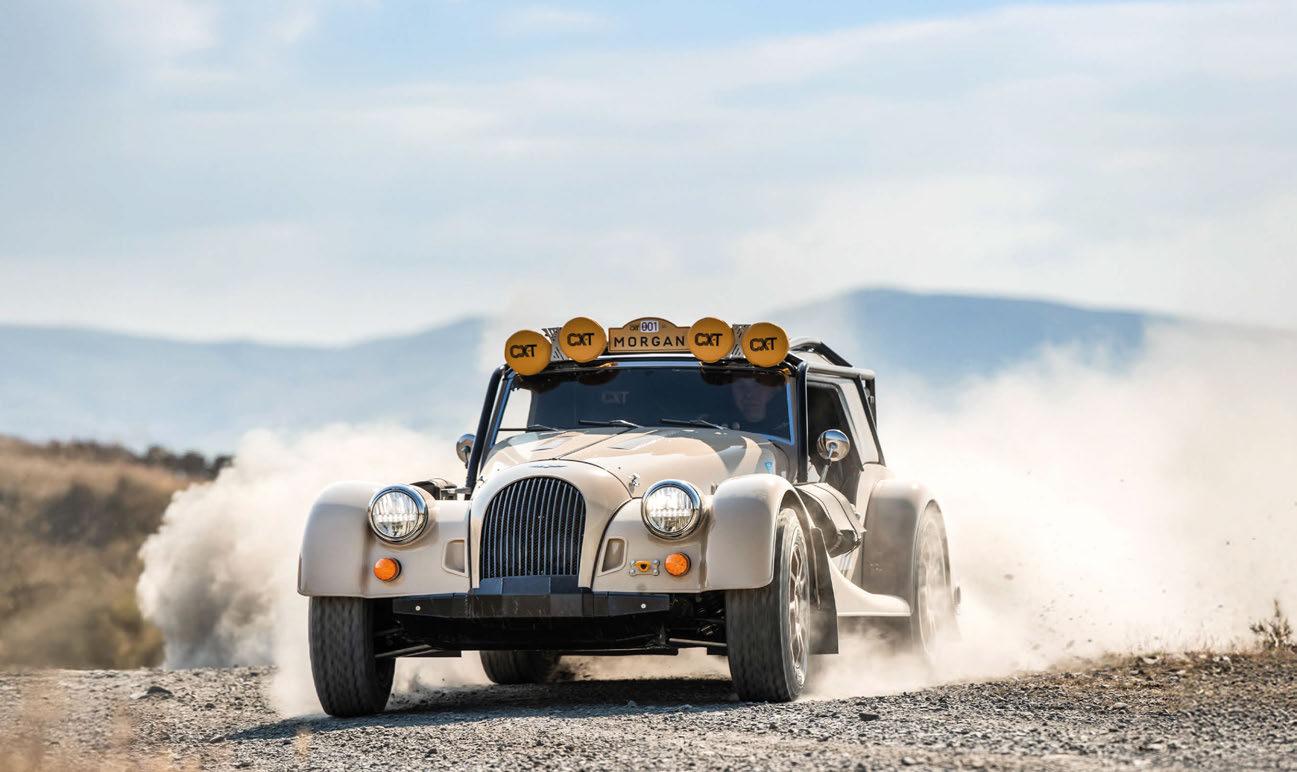

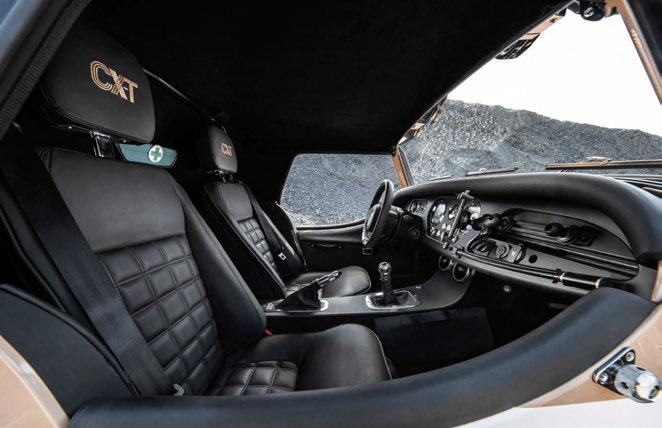
Gone but not forgotten
Words by Richard Heseltine
Remembering the enigmatic F1 winner who wielded spanners for Phil Hill and drove endurance with Von Trips
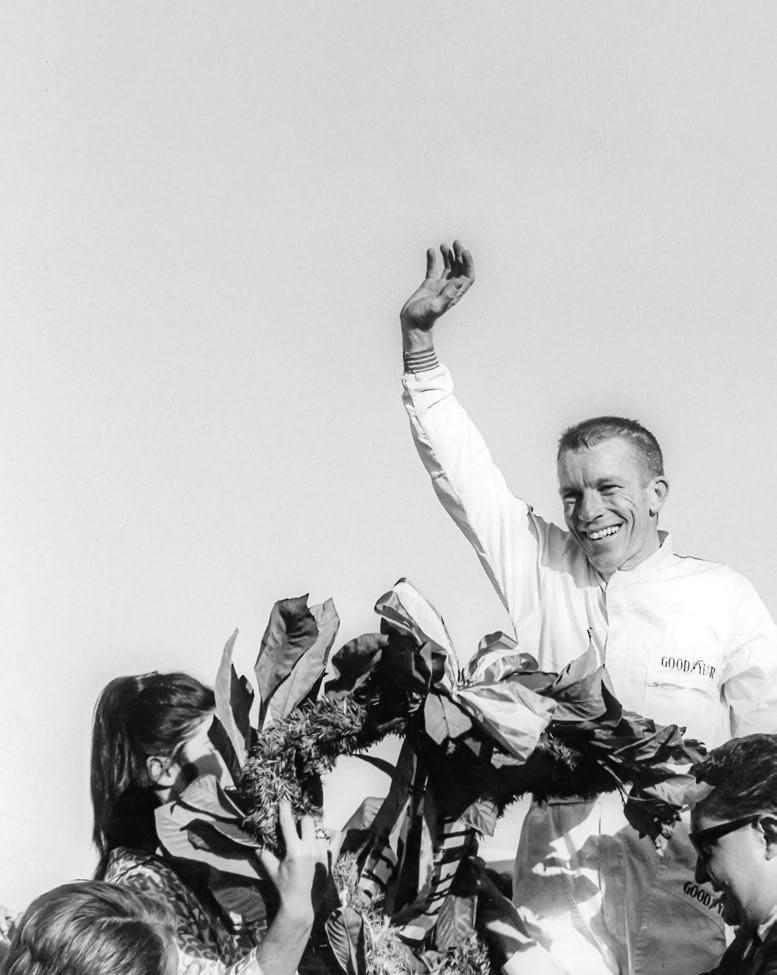
THE CREW-CUT of old was gone, as was the desire to race cars. That was his old life. In middle age, Richie Ginther rocked long hair and a Zapata moustache. It’s the mid-1970s and the former Grand Prix star has a camper van and the time to indulge his interest in archaeology. That, and the plight of Native Americans, wildlife conservation and heaven knows what else besides. According to his friends in motorsport, he is missing in action. To the man himself, he is no such thing. He doesn’t possess a watch. He doesn’t care what day it is. He just wants to roam.
Paul Richard ‘Richie’ Ginther was one of five American drivers to have won in Formula 1. He was joint runner-up in the 1963 World Championship, and finished in the points in more than half the races he contested. He was also a car whisperer, his development skills being much-lauded in period. Yet for all his many achievements, you could argue that his desire to be left alone clouded judgements about his ability. And stories are legion about his later life, many perpetuated by wellmeaning friends with whom he’d lost touch.
Ginther’s early years are well-documented: one of three children, close to his father but less so his mother, who some reckoned was over-protective. Given his heart murmur, she had every reason to be. Small in stature, young Richie was bullied at school, and amateur psychologists might conclude that this led to him becoming an insular child. You could equally argue that it made him fiercely determined to prove the doubters wrong.
As an adult, Ginther worked at Douglas Aircraft in Santa Monica. He also got into hot-rodding, his life changing forever after he befriended a young blade with a Jaguar XK120 who lived two-and-a-half blocks away. It’s fair to say that Phil Hill became a role-model, and in time the two worked together at International Motors on Sunset Boulevard. However, Ginther’s life was diverted in 1951 after he was drafted on his 21st birthday. He was heading to Korea.
Time served in the United States Army as a mechanic further honed the young tyro’s skills, and on his return he threw himself into motor racing. He wielded spanners for Hill,
and rode shotgun on the 1953 Carrera Panamericana in a Ferrari 340. The allAmerican duo crashed out, but finished second a year later. Bit by bit, Ginther also began to make a name for himself as a wheelman, and in 1958 he married Jackie Houlter, secretary of the California Sports Car Club. Life was on the up – and then he moved to Italy to become a Ferrari works driver.
The 1960 season began with second place in the Buenos Aires 1000 Kilometres alongside Wolfgang von Trips. Before the season was over, he was runner-up to Hill in the Italian Grand Prix. A year later, he famously battled for honours at Monaco with Stirling Moss, then moved to BRM in 1963. In 1965, he won the Mexican Grand Prix driving for Honda –the marque’s first win at this level. Ginther joined Dan Gurney’s All American Racers squad for 1967 and it was at this juncture that he began to question his life choices.
For the first time in his career, he failed to qualify for a Grand Prix. He was 3.5sec slower than pole-sitter Jack Brabham at Monaco. He purportedly failed to get up to speed for his first tilt at the Indy 500, too, before walking away from the sport. Except that isn’t strictly true. He never attempted to qualify for the race. He admitted years later that he had experienced something approaching an epiphany after practice. He then went back to his motel room, thought about it some more, and decided that he was done.
It didn’t help that his marriage had hit the rocks. Relationships with friends had flamed out, too, most tellingly with Hill, whom he had long since stopped hero-worshipping.
Back in 2004, the legendary former World Champion told me: ‘About the time he stopped driving, I was busy getting married and starting a family. He was busy getting a divorce. We had a falling out so I didn’t stay in touch with him much after that. Richie was a nice, easy-going kid who became more serious once he got into Formula 1.’
Ginther subsequently fielded Porsches to the end of 1973. Two years later, he sold his business and his home and embarked on a less pressured life. Stories circulated thereafter that he had become a bum; that he had succumbed to a life of binge-drinking and drug-taking. The reality is that Ginther incurred lifechanging injuries in 1977 after he protected his new love Cleo from a football hooligan during a visit to France. They later bought a coastal home in California, Ginther enjoying a quiet and contented existence to the end in September 1989, when he suffered a fatal heart attack aged 59.

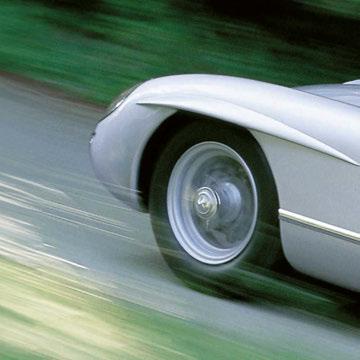

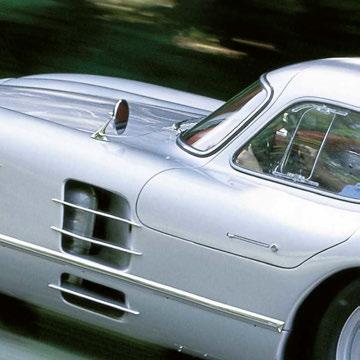


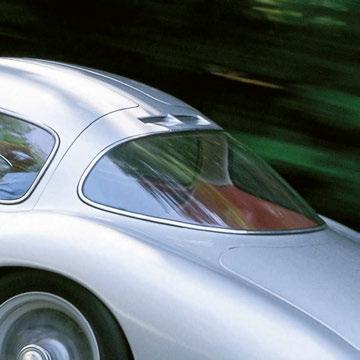
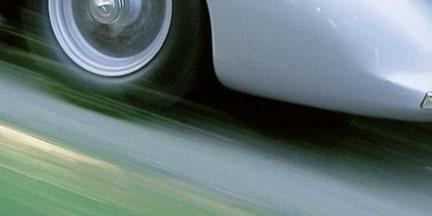

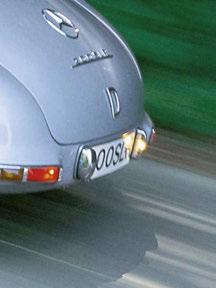

Danish ex-racer who now reworks Porsches and runs extreme driving experiences reveals the things that mean the most to him












1. When we designed the KALMAR key we wanted something that felt timeless. It may look like a classic key, but it also opens front and rear and can activate the Sport function – all in addition to being an ordinary remote control. It’s a small detail, but the key is where it all starts and it’s a reflection of our philosophy: blending the best of the past with the innovation and precision of today.
2. I travel a lot and always take my so bag with me. It’s basically like a big garbage bag into which I just throw all my clothes. No folding, no ironing. It’s all about comfort and convenience – I keep things simple when I’m on the road.



























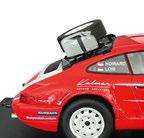


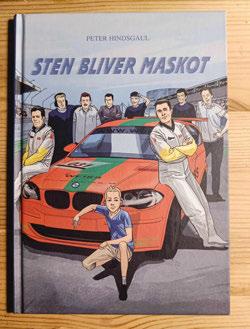
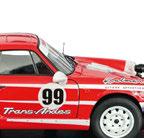




3. Sten Bliver Maskot is a children’s book by Danish author Peter Hindsgaul, about an eight-year-old boy named Sten with a love for motorsport. The character of the Danish racing team owner in the story is based on me. It’s a fun connection, and I’m happy to be part of a book that encourages youngsters to read.
4. My trusty Porsche belt was designed and commissioned by a friend and customer, featuring images of my favourite Porsches. It’s the only leather belt I own and I wear it all the time when dressing up.
5. Top Gear Specials was the programme that inspired me to start the KALMAR Beyond Adventure driving experiences. Watching those episodes, seeing the crazy challenges and epic journeys, I knew that’s what I wanted to bring to life. I’ve seen all the specials countless times.
6. This piston is from the No. 64 Lotus Evora GTE that ran in the 2011 Le Mans 24 Hours, for me the only race that truly ma ers. A er 17 years away from Le Mans, Lotus entered two Evora GTEs into the GTE-Pro class and I was the team manager for Jetalliance Lotus.
7. I keep a small zebra figurine on my desk as a reminder of our first a empt to set a world record for the north-south crossing of the globe in 2015. It was unforge able, but not for the right reasons – it ended when my co-driver hit a zebra on the road. Neither our Cayenne nor the zebra came out of it looking too good.
8. At every KALMAR Beyond Adventure somebody always receives a special prize. For our biggest ever event we gave away a model of the car they drove – a KALMAR RS – as a li le piece of our racing heritage. I always make sure the prize is something meaningful.


9. Our driving experiences take customers to some pre y remote places where there’s no mobile phone signal. That’s why a satellite phone is essential. It’s not just a tool for safety, it’s part of the experience. I’ve even created my own navigation system to ensure we’re always on track, and I’m pre y proud of it.
10. Our T-shirt range is all about bold designs, a bit of humour and the technical excellence –maybe call it ‘nerdiness’ – that we stand for.
11. Whenever I visit a new country, I mark it with a pin on a map in my living room. It’s a small tradition, but it helps me keep track of all the places I’ve been. As of now, I’ve used 139 pins!




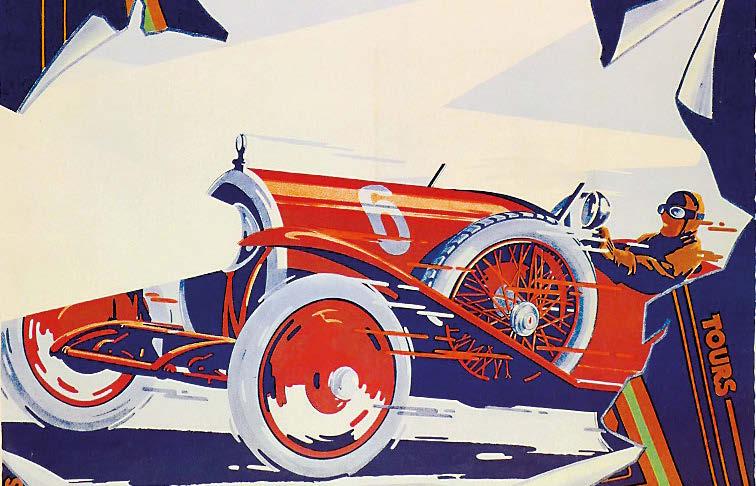
Words by Delwyn Malle
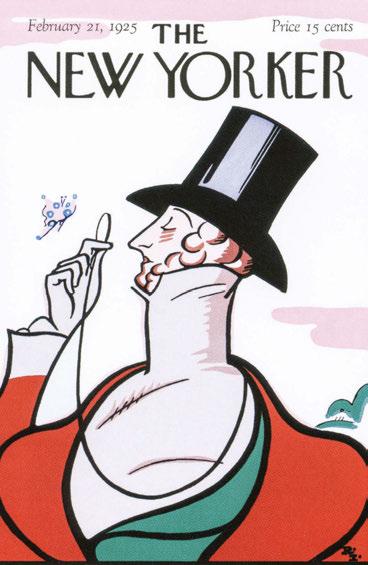



HAVING CLOCKED UP a century of delivering wit, social comment and criticism not only to New Yorkers but readers well beyond the East Coast metropolis, e New Yorker has established a reputation as America’s leading literary magazine.
It was founded by 32-year-old Harold W Ross, who envisaged it as a 15-cent ‘comic paper’ aimed at sophisticated Manha an inhabitants, featuring the goings-on about town, theatre reviews, amusing cartoons, humorous essays and in-depth reporting on important issues. Ross was an unlikely proprietor: he dropped out of school aged 13 and found work with various newspapers before enlisting in the Army in 1917. While in France he worked on the Army newspaper Stars and Stripes, where he met his future wife and co-founder of e New Yorker, Jane Grant, the rst female full-time journalist on the New York Times
Launched on 21 February 1925, it arrived with a whimper rather than a roar. Sales were poor and Rea Irvin, the magazine’s rst employee (one day a week as ‘art adviser’) and designer of the rst cover and masthead, thought it wouldn’t last for more than a few issues. He would be with e New Yorker until 1951 and would create another 168 covers.
Rea’s rst cover featured a drawing of a Regency dandy, soon to gain the moniker ‘Eustace Tilley’, inspecting a bu er y through a monocle. To celebrate survival despite mounting debts, it was repeated for the rst anniversary issue, starting a 100-year habit.
Le
First
e roll-call of notable sta ers is too large to quote here but would have to include James urber, who in his 20-odd years with the magazine rede ned its cartoon style (one critic on his simple child-like drawings: ‘It’s the think, not the ink’) and contributed essays and short stories including e Secret Life of Walter Mi y, about a daydreaming magazine proof-reader. It became a Hollywood movie in 1947 starring Danny Kaye. Truman Capote’s ground-breaking 1965 In Cold Blood, reporting in forensic detail a gruesome murder, was rst serialised in e New Yorker and set a new template for true crime reporting.
Dorothy Parker, poet, writer, Hollywood script writer, acerbic book reviewer and stalwart of the legendary Algonquin Round Table literary lunches, joined in 1927 and is remembered for her caustic wisecracks and one-liners. And one can’t omit SJ Perelman, who many consider the greatest American humorist.
In 1992 English-born Tina Brown was appointed editor, having revived Vanity Fair magazine. A controversial choice, she was only the fourth editor in 73 years and the rst woman. A number of long-term sta resigned, with one accusing her of ‘kissing the ass of celebrity’. Despite declaring that ‘ e New Yorker is a textdriven magazine and always will be under my tenure’, she appointed its rst sta photographer – none other than the renowned Richard Avedon. As the 1994 anniversary issue approached, an unsolicited artwork from notorious underground cartoonist R Crumb arrived, depicting a punk youth in the ‘Tilley’ pose; rather than displaying an interest in lepidoptery, he is studying a yer for an X-rated movie theatre. In another break with seven decades of tradition, Tina Brown ran this as the anniversary cover. Anniversary issues have since regularly featured a new Tilley interpretation.
A er more than 5000 issues, it seems invidious to single out one cover as the best. However, the American Society of Magazine Editors voted the 29 March 1976 cover the fourth best magazine cover of the previous 40 years. Reproduced thousands of times as a poster, it was titled ‘A view of the world from 9th Avenue.’ Drawn by long-term contributor, artist and cartoonist Saul Steinberg, it takes the NY-centric view of the US and the world to its extreme. 9th Avenue runs across the foot of the page, drawn in some detail, 10th Avenue gets a title; but across the Hudson River, Jersey is reduced to a brown strip and the rest of the continent a virtually empty plain with a few rocks sticking up before you get to the Paci c Ocean. Beyond is a sliver of featureless land, captioned China, Japan and Russia.
Also making the list was the 10 December 2001 ‘New Yorkistan’ issue, the magazine’s largest-ever seller. At the height of the US’s embroilment in Afghanistan with its plethora of sub-stans and -bads, the cover featured a pastel-washed plan of the city divided into around 100 districts with names such as Central Parkistan, Taxistan, Youdontunderstandistan, Coldturkeystan, Hiphopabad, Khandibar and Botoxia. It struck a chord with native New Yorkers anxious to see which ‘Stan’ or ‘Bad’ they occupied, and sold out within two days. is year’s special Centenary Issue came in four multi-cover editions, each including Rea Irvin’s original cover plus two of six reimaginings of Eustace Tilley. One has to imagine that Irvin would have been delighted that his pessimistic prediction in 1925 proved to be so wrong.






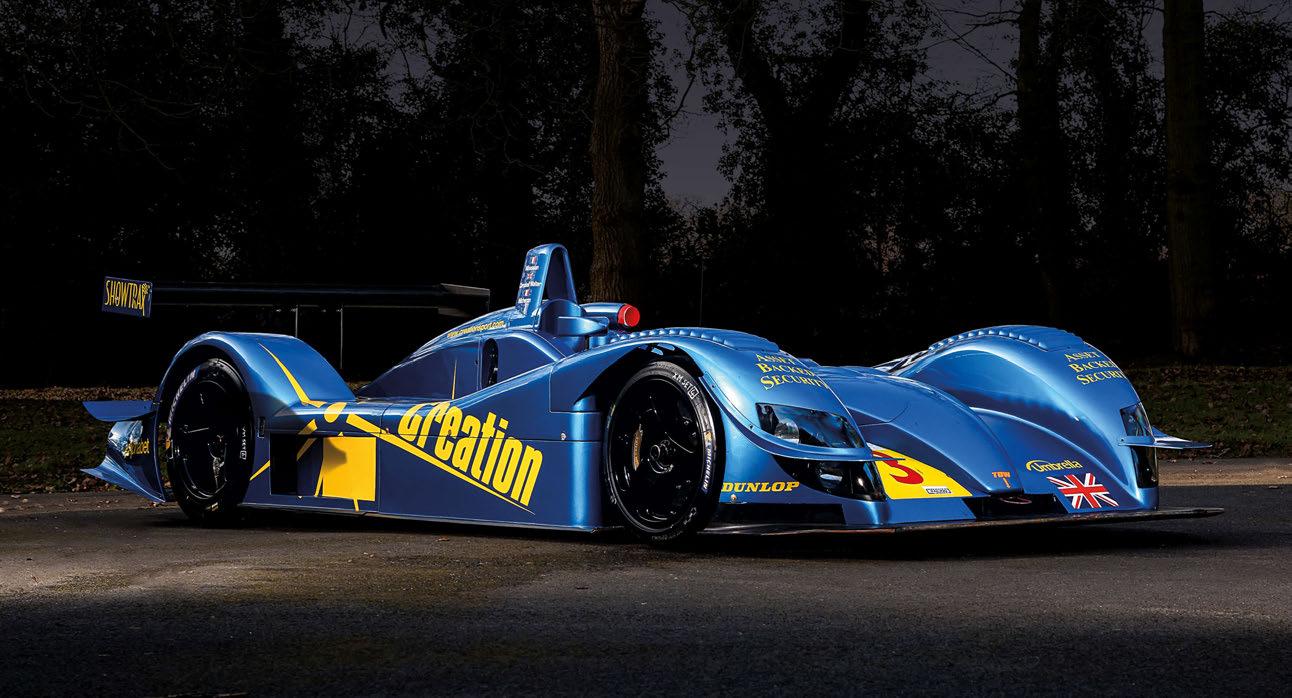










by Mark McArthur-Christie
BURFORD. GATEWAY TO the Cotswolds. Cozy tea rooms. Posh hotels. Burning clutches as Honda Jazzes try to reverse into parking spaces on The Hill. A major watchmaking centre that supplied watch dials to firms all over the world and re-lumed hundreds of Rolex and other military timepieces for the Ministry of Defence.
Huh? Burford is obviously a place better known for high teas than high horology, but it was once an international centre for watchdial printing. The original workshop, now a private house, is still just off Tanner’s Lane but the only trace of the firm in the town today is a few old photos and some memories.
In 1952, when Watchdials (Burford) Limited was founded, things were very different. Barely 25 miles away in Bishop’s Cleeve on the edge of Cheltenham, clock and watchmaker Smiths had a factory site turning out thousands of alarm clocks, wall clocks, pocket watches and wristwatches. Those of a certain age will remember the Cavalier alarm clock, and school wall clocks that always seemed to run slow. Watchdials supplied many of the faces for these. There was even a range of braille-dial, wrist-worn hunter watches. You’d raise the solid case front and feel the hands and raised dots on the enamel dial, made in Burford, to tell the time.
The firm didn’t only sell locally, though. Soon, it was making for firms including Longines, Roamer, Junghans, Imado, JW Benson and Zenith. In fact, if you have a three-hand Zenith from the 1970s, particularly a Surf or anything with a cal. 2572 inside the case, there’s a good chance the dial came not from the mountains of Neuchâtel but the rolling hills of the Cotswolds.
Watchdials might have slipped quietly into the footnotes of horological history had the firm not won a contract in the early 1960s from the Ministry of Defence to repaint military watches and instruments. The MoD had a huge stock of watches, clocks and instruments, all with dials that carried zinc sulfide radium to make them glow in low-light conditions.
Think of the radium as the power source that makes the zinc sulfide glow. You can also think of the radium as the nasty stuff that emits radon and gamma radiation for 1600 years and gives you bone cancer. The MoD began a huge project to strip the radium compounds from its instruments and replace it with safer Tritium. This happened at Watchdials in Burford. Stripped dials came in and new, re-printed and re-lumed Tritium dials were shipped back to the MoD Chronometer Section at Herstmonceux for refitting.
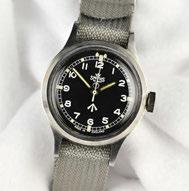
Rare these days, and a real piece of military history
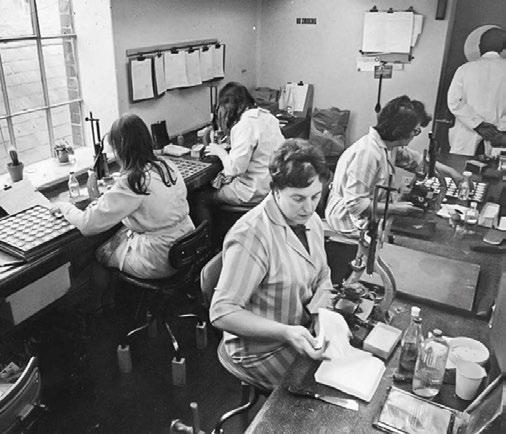
If you know a bit about vintage military Rolex and Omega, you’ll have heard the term ‘Burford Dial’. But you’ll also find Burford Dials on Smiths, CWC and Hamilton military watches as well as technical instruments and stopwatches. It’s worth remembering that watches then were still tools, not collectors’ items, so the reprints weren’t as sharp as the Rolex or Omega originals but they did the job. You can spot a Burford Rolex dial – apart from its inability to excite a Geiger counter – as it’ll have a 3-6-9 in Explorer format. The Rolex coronet is often elongated and the lettering isn’t as tight as on a Geneva dial.
You’ll find these ‘Burford’ dials on vintage military watches with properly stratospheric price tags. A standard Rolex ref. 6538 Submariner (the one Bond wore in Dr No) starts at around £45,000. There’s currently a Burford dial 6538 for sale in Italy with a ticket nearly three times that. Find one in your grandfather’s sock drawer and you might even be able to afford a pint at The Bull.
Thanks to David Cohen at the Burford Community Archive.
IT MAY NOT be a Burford-dial Rolex, but an issued Smiths is just as much part of military watch history. 6B/542 refers to the British military standard that specifies the appearance and specification of particular watches rather than a watch from a particular maker. You’ll find it on the backs of Omegas and Hamiltons, too.
These weren’t around long and, coupled with low production numbers (under a thousand) and the life they led, there are few left today. The real challenge is finding one that hasn’t had the character restored out of it or that’s had a military beasting. The one in the picture on the left is up for £9750.
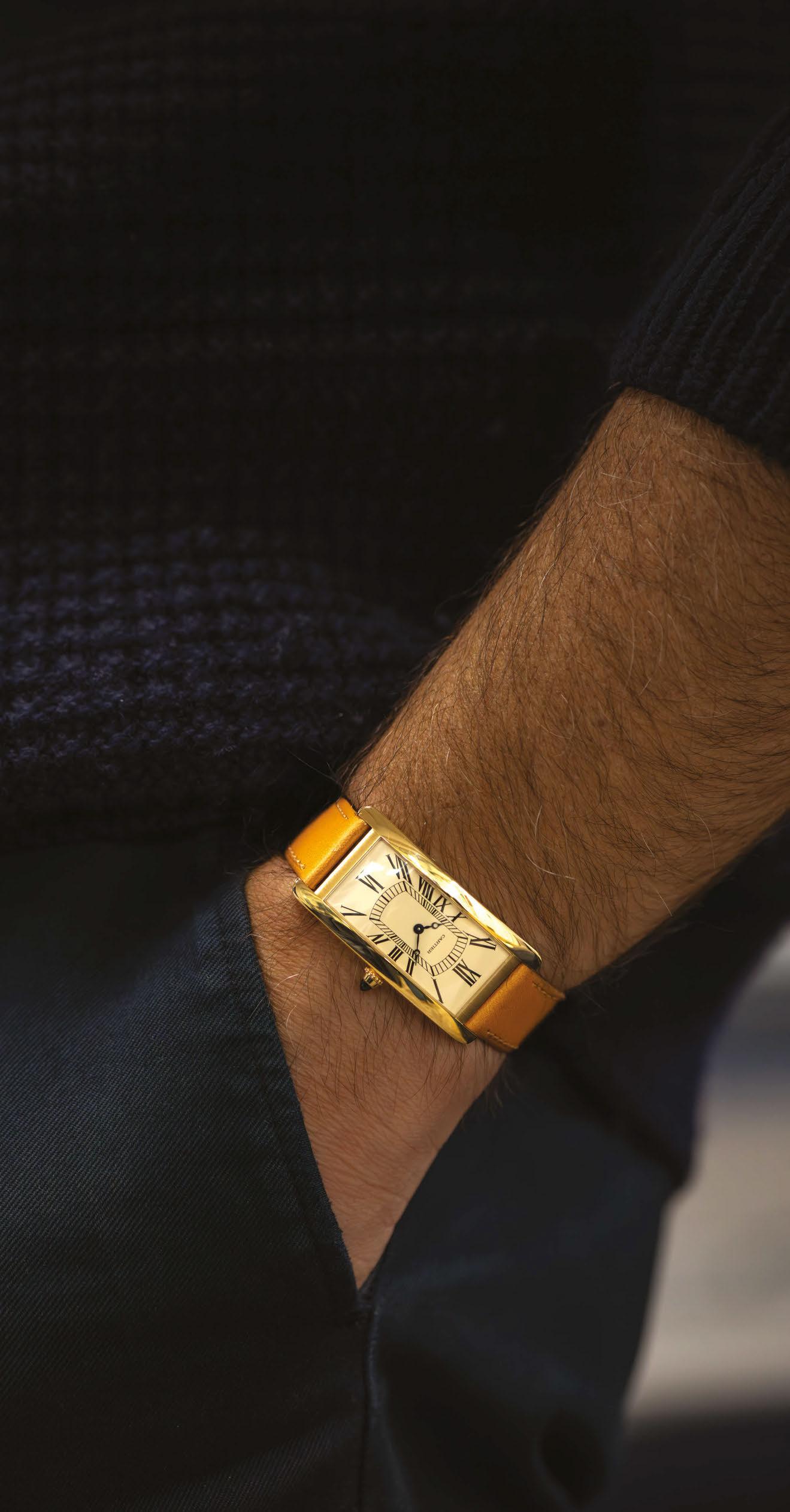
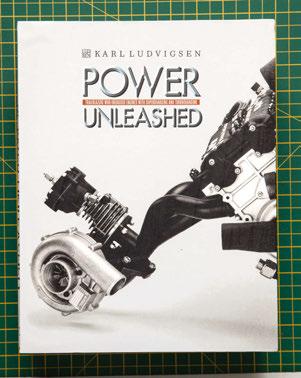
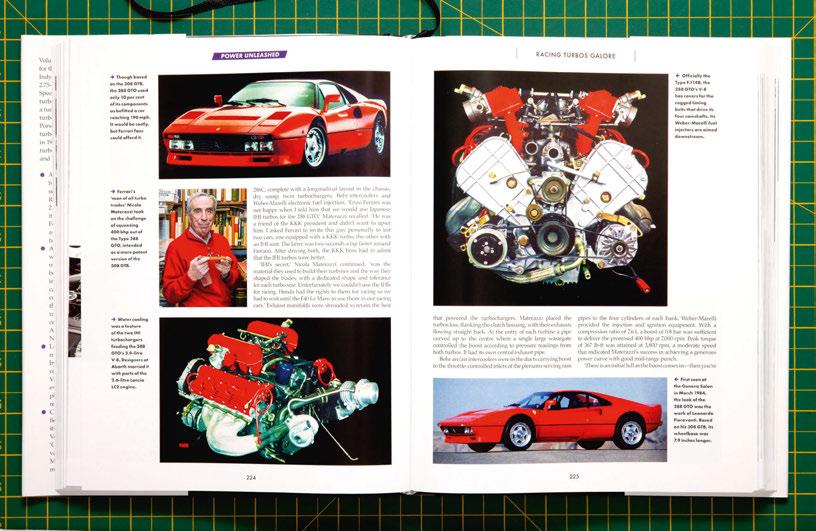
KARL
LUDVIGSEN, Evro, £395, ISBN 978 1 910505 37 3
Three slipcased volumes, 1960 pages, 665,000 words and 3584 images – now you know why you’re being asked to stump up £395 for a work on supercharging and turbocharging.
In its simplest terms, both these processes force air into the combustion chamber for increased efficiency and power. Superchargers are mechanically driven, for example by the crankshaft, whereas turbos are spun up by exhaust gases to compress the incoming air. The principle is the same for both, and turbos were known in earlier years as turbine-superchargers.
As so often in the history of motoring, supercharging has been around as long as the motor car itself. In 1883-4, Wilhelm Maybach designed a single-cylinder engine that had a spring-loaded poppet valve built into the crown of the piston; at the bottom of the induction stroke and beginning of the compression, the valve stem struck projections built into the
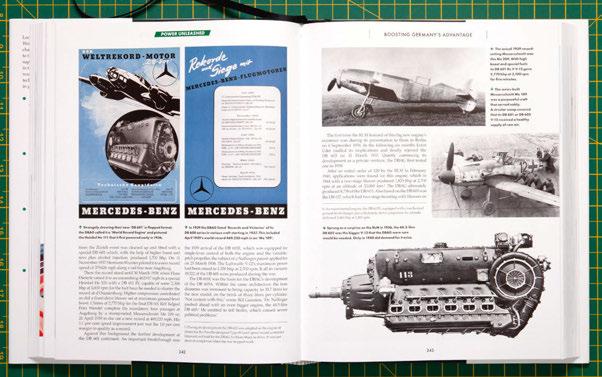
crankcase, so opening the valve and allowing a gust of pressurised oxygen from the crankcase into the cylinder. Superchargers and turbos have been common in the world of internal combustion engines ever since and the latter are now more popular than ever, thanks to the widespread use of smaller-capacity and, in particular, diesel engines. More than a third of ICE cars now feature turbocharged engines.
Karl Ludvigsen wrote his first paper about supercharging while an engineering student in 1955 and began work on this magnum opus in 2010. Now, at the modest age of 91, he’s finally seen it published – and it’s one of the most impressive pieces of research we’ve ever seen.
The three volumes are divided into rough chronological periods and themes: number one covers the 1890s-1950s, focusing on racing and record-breaking; two deals with how the lead-up to WW2 boosted (sorry!) the rapid development of forced induction into the 1970s; while three majors on post-war competition cars up to the present day. During the 1930s, supercharging became particularly vital for aircraft engines because it allowed them to function better at high altitudes, and much of volume two is devoted to this subject (left).
So, while these books are primarily about the use of forced induction in land vehicles, they are much more broad-ranging than that. If you like pictures of amazing engines (and which of us doesn’t?), you’ll be in seventh heaven, while the text constantly surprises with examples of human ingenuity – a 1930s fuel-injected aero engine, for example, relied on metering fuel quantities smaller than a grain of sugar.
Now 70 years into his career as an author and historian, Ludvigsen has truly surpassed himself with this incredible work. Bravo!

The suburbs of London are not places you normally associate with motor manufacture but, as this meticulously researched little softback proves, they could be hotbeds of industry. Daimler started making boat engines on Twickenham’s Eel Pie Island in the 1890s and eventually there would be nine motor companies in the borough, from pre-WW1 New Orleans limos to Carden and Tamplin cyclecars, British Anzani engines, Emeryson FJ racers and more. This is local history at its brilliant best.
ROBIN HUNTER, robin.hunter@sky.com, £13 inc UK p&p, ISBN 978 1 911145 08 0

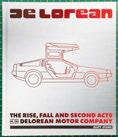
Lorean
Plenty has been written about John Zachary DeLorean over the years but, if you want an entertaining overview, this new hardback is well worth considering. Besides revisiting well-trodden territory – the stellar motor industry career, the multiple wives, the drugs bust and fraud charges (of which he was found ‘not guilty’ every time), and of course Back to the Future – it also breaks fresh ground with the full story of the 2022 Alpha5 re-launch concept and a profile of restoration specialist Classic DMC.
MATT STONE, Motorbooks, £30, ISBN 978 0 7603 8471 8
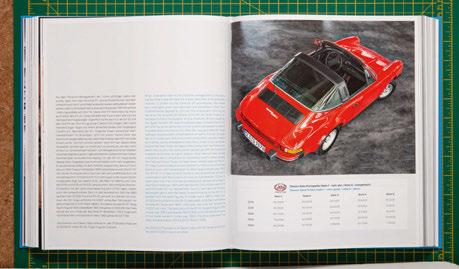
While the standard edition of this book quickly sold out, the publisher had retained 200 copies of its limited-run ‘Bezner edition’ – named after key Porsche employee Friedrich Bezner – for an event that was later cancelled. These individually numbered books have a different slipcase but the same content and now represent a rare second opportunity for fans of the G-Model – the ‘G’ simply being the alphabetic letter code for the 1974 model year, a code that began with ‘A’ in 1968. While the bulk of the book is taken up with model profiles, each illustrated with gorgeous photography and detailed specifications, the most interesting part is the interview with Bezner that kickstarts the book. Bezner began his Porsche career when he was picked as an apprentice in 1954 at the age of just 13½ by Professor Helmuth Bott, who would become Porsche’s head of development and a mentor to Bezner. Their relationship did not always run smoothly – in 1980, when Porsche still saw the 928 rather than the 911 as being its future, Bezner was given a written warning just for daring to draft a paper about how the 911 could be revitalised – but Bott eventually came round to his way of thinking and the rest, as they say, is history. With mirrored text in German and English, this is a new book about the 911 that is a little different to the usual regular rehashes. Rare images of Porsche testing in Canada and Algeria during the mid-’70s, of poor quality but used large for maximum impact, are the icing on the cake.
ANDREAS GABRIEL, Berlin Motor Books, €192, ISBN 978 3 982299 82 2

Marcello Gandini
Maestro of Design Revisited
Here’s a novelty: a new version of a book that offers more than the old one but at a lower price. The original two-volume set contained 924 images and cost £230 nearly ten years ago; this one packs 1280 images into a single volume and retails for £130. You’d never notice any cost-cutting or cramping – it’s still a 624-page doorstop of a book – and it now features even more Gandini projects, making it the definitive catalogue raisonné of the master’s work.
GAUTAM SEN, Dalton Watson, £130, 978 1 956309 15 7
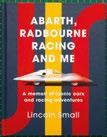
Abarth, Radbourne Racing and Me
We ran an interview with Lincoln Small in Octane 225 and now the capo dei capi of hot Fiats – and, later, hot Renaults – in the UK has published his autobiography. Despite his first name, Small was born in West London; while not gifted academically, he mastered Italian in just three months and fell in love with the country, which shaped his career. After buying his first car, a Fiat 600, Small joined forces with the Anstead brothers, John and Geoff, and set up Radbourne Racing, quickly becoming the UK agent for Abarth. Cue a lifetime in tuning and racing, which included a spell running a Dallara Fiat X1/9 with future Touring Car ace Steve Soper. When Fiat absorbed Abarth, Small switched to Renault, and became the unofficial UK importer of the 5 Turbo 2. Written in conjunction with journalist Steve Hole, this is a charming and enjoyable read. As Small’s tuner/mechanic Terry Dolphin sums up: ‘I’ve never heard anyone say a bad thing about him.’ Amen.
LINCOLN SMALL, Whitefox Publishing Ltd, £29.99, ISBN 978 1 916797 04 8
Compiled by Chris Bietzk and Sophie Kochan
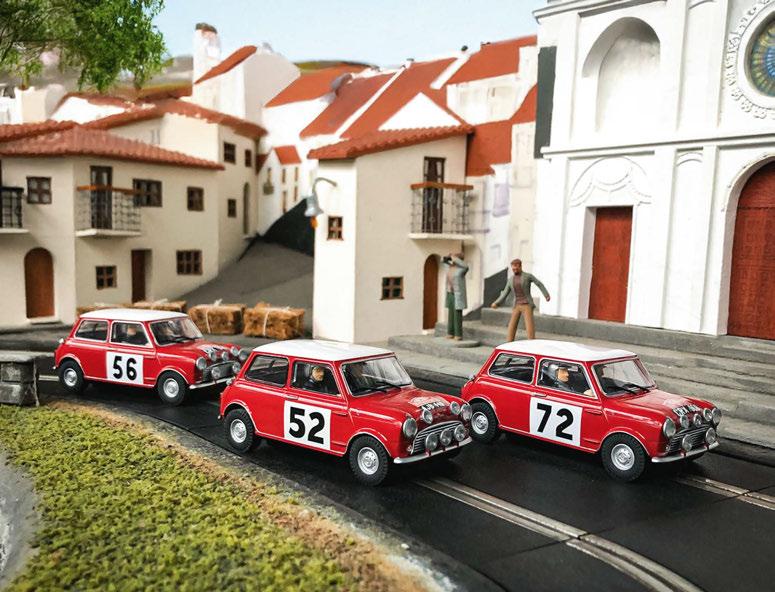
The conditions on the 1965 Monte Carlo Rally were some of the worst in memory. ‘Falling snow restricted vision to ten yards or less,’ wrote John Davenport in his report for Motor Sport. ‘Already many of the road signs were obscured by the snow and many, many cars simply got lost.’ Just 35 of the 237 starters made it to Monte Carlo, yet the No. 52 Mini Cooper S of Timo Mäkinen and Paul Easter reached the finish without dropping a single second, and won. The two other works Minis (one crewed by Paddy Hopkirk and Henry Liddon, the other by the Morley brothers) survived the blizzards and the ice, too, and models of all three BMC team cars are in this set. £159.99. scalextric.com

Another fabulous model of a Monte Carlo Rally car, in this instance the Subaru Impreza driven on the 2003 event by Pe er Solberg and Phil Mills, that year’s WRC winners. A 1:8-scale monster, the model is built up from 859 pre-painted parts –most of them metal, which is why the finished article weighs almost 10kg. £950. wonderlandmodels.com
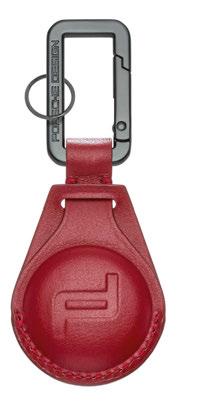
Porsche Design comes to the rescue of sca erbrains everywhere with this smart key fob, which features an integrated Apple Air Tag so that you’ll always be able to figure out where you le your car key – as long as you haven’t also forge en where you le your iPhone… £69. shop.porsche.com






The 1960s were not the most successful of periods for Massey-Ferguson, despite the e orts of JC Rousseau, who penned this delightful poster –presumably inspired by the get up early, keep ‘em rollin’, Massey Ferguson kind of a man mentioned in the company’s advertising jingle. The example currently hanging at Vintage Posters Only in Melbourne measures 160cm across, and remains wonderfully vibrant despite now being 60 years old. AUD 1600. vintagepostersonly.com
OM System, the brand that emerged a er Olympus sold o its camera business in 2020, has taken the technology from its range-topping OM-1 MkII and repackaged it in a smaller camera designed to resemble the Olympus OM-1 of the 1970s and ’80s. The new OM-3 has a 20MP stacked CMOS sensor, in-body image stabilisation rated at 6.5EV, and all sorts of computational photography features. Most importantly, though, in a time when virtually every camera on the market can capture a nice image, the OM-3 is a rare pleasure to use, and it’s weather-sealed, too. For the snapper who appreciates what the Micro Four Thirds system o ers, it might well be the perfect travel camera. £1699. omsystem.com

Certina has produced a mid-size variant of its tough DS Action Diver automatic, water-resistant to 300m, and – more notably, given the reasonable price tag – shockresistant to at least 10,000g. We say ‘at least’ because Certina’s testing machine apparently reached its limit before the watch did! From £805. certina.co.uk
Condor has unveiled a gorgeous stainless-steel version of its popular Fratello model. It’s much pricier than the regular steel Fratello, but it’s also lighter (the strength of the stainless tubing allows for very thin walls) and sleeker (it has internal cable routing), and it is custom-built, the price including custom sizing and paintwork.
£3899.99 (frame and disc brakes). condorcycles.com
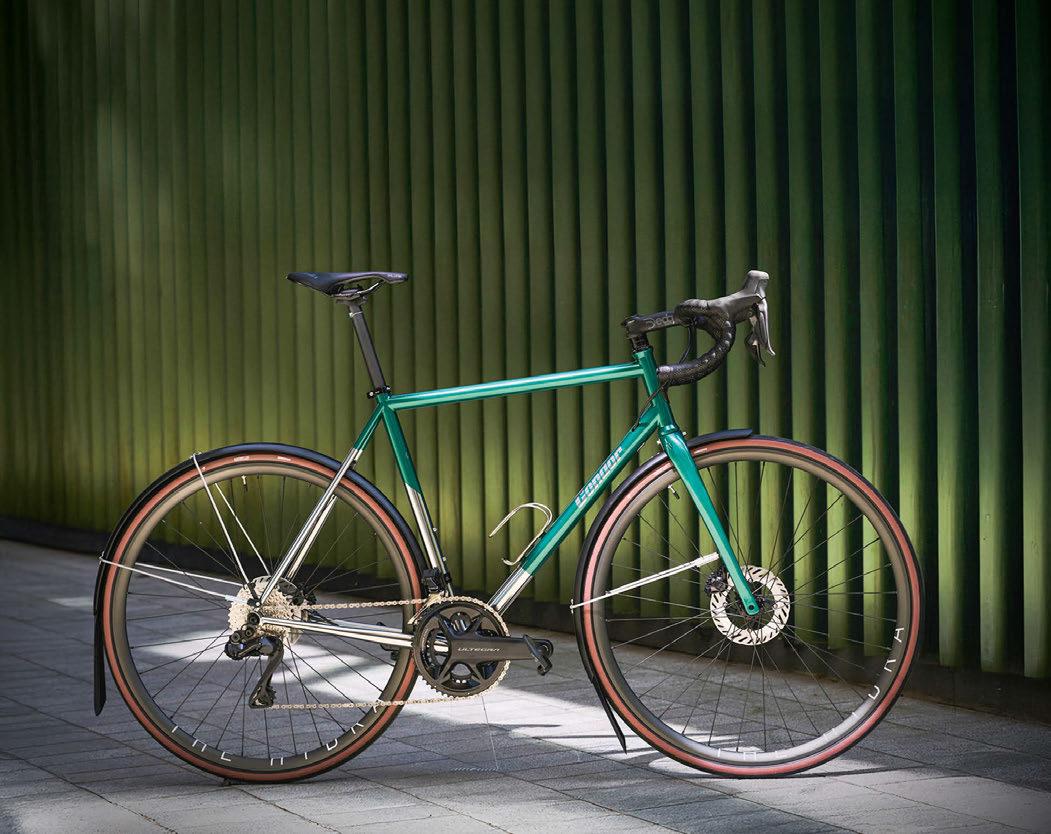

The folks behind the Wheels and Waves motorcycling and surfing festival, just kicking off in Biarritz at the time of writing, have produced a little tribute to the mid-’60s Ford F250, pictured hauling a lairy 1966 BSA Hornet. €49. wheels-and-waves.com
The oil crisis of 1974 spoiled that year’s European Touring Car Championship, with the number of races being cut to six and BMW withdrawing its works team part-way through the campaign – but we did at least get to enjoy the sight of the 400bhp racing Capri RS3100, one of the coolest Fords ever, as modelled here by Werk 83. £91.95. grandprixmodels.com

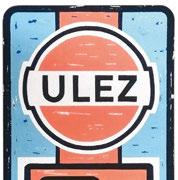
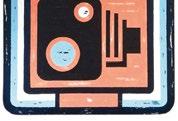
Hampshire-based artist Neil Martin gives decommissioned road signs a makeover with paintwork inspired by famous racing liveries. Our favourite so far is this amusing piece, a ULEZ sign painted in the colours of Gulf Oil. £200. roadsignsre-imagined.co.uk
One of the most impressive museum exhibits in the world is that which greets visitors to Space Center Houston: a Space Shu le (an exact replica, to be precise), mounted atop one of the two famous Boeing 747 Shu le Carriers, N905NA. Both Shu le and Carrier have now been retired long enough that many around the world have probably forgo en how u erly absurd and fantastical the two looked bolted together – like something a kid would doodle, or indeed build out of Lego bricks… £199.99. lego.com























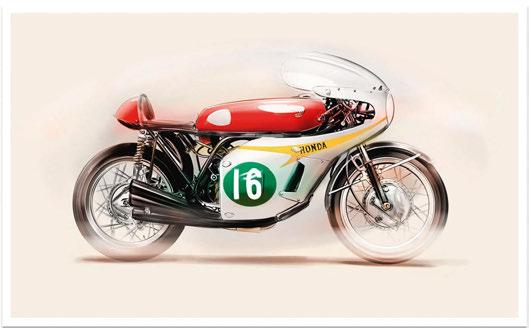



A super illustration of one of the most dominant racing machines of all time. In 1966, the 250cc RC166 and Mike Hailwood won all ten Grands Prix they entered. The rest of the field must have realised it was going to be a long old season when Hailwood lapped every one of them in the opening round at Montjuïc. From £39. historiccarart.net

Nivada Grenchen has updated the F77 of 2023 – itself a modernised version of a design from 1977. The new watch is still powered by a Soprod P024 movement, but it features an onyx dial and a gently refined case: the MkII is slightly wider than the MkI at 38mm across, but also marginally slimmer and, thanks to its curved lugs, it sits be er on the wrist. £1450. nivadagrencheno cial.com
Edited by Matthew Hayward
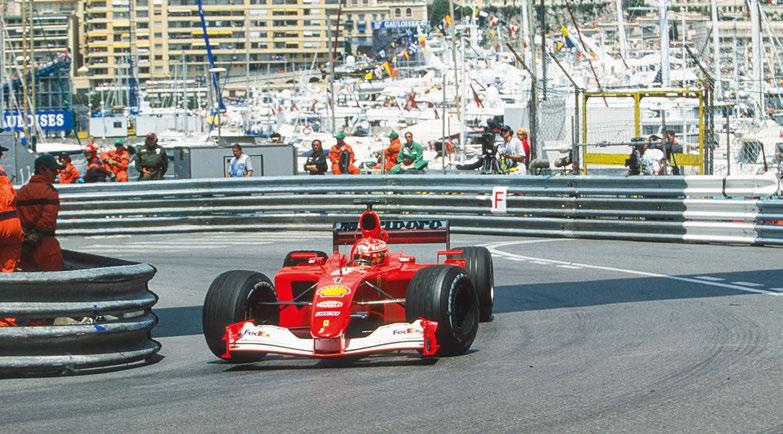
RM Sotheby’s leads May with Monaco F1 sale; Broad Arrow makes European debut
IT’S NOT UNUSUAL for the same car to break its own sale record, and that’s exactly what Michael Schumacher’s final Monaco-winning Ferrari F1 car – the F2001 – managed to achieve this month.
Offered during the Monaco GP weekend by RM Sotheby’s, the F2001 achieved €15.98million, making it the most expensive Ferrari F1 car ever sold at auction. This same car was actually sold by Sotheby’s back in 2017 for $7.5million, which itself was a benchmark sale at the time. This is the chassis in which the seven-time World Champion secured his fourth drivers’ title, winning at Hungary, and is undoubtedly one of the most significant Ferrari racing cars ever sold publicly. The only modern F1 car sale that ranks slightly higher is the $18.8m achieved for Lewis Hamilton’s 2013 Mercedes-AMG W04 in Las Vegas during the 2023 Grand Prix.
strong price for an SV. A low-mileage, single-owner 1989 Countach 25th Anniversary model doubled its lower estimate and achieved a world record figure of €1,130,000. Some big-ticket cars failed to sell, however, including the 1932 Alfa Romeo 8C 2300 Lungo Cabriolet and 6C Gran Sport Spider Series IV by Zagato.
Broad Arrow marked its European debut with a healthy €31.17m total at the Concorso d’Eleganza Villa d’Este companion auction. The Hagerty-owned auction house kicked off the first of its two-day sale with a BMW-only segment, in which the M1 (upgraded to Procar spec) led at €602,500. The catalogue almost completely sold-out, with one notable exception being the 507.
The main event was dominated by the sale of the 1948 Ferrari 166 Spider Corsa by Ansaloni, which completed for €7,543,750 – an auction record. A second stand-out result was the 2003 Honda NSX-R, which achieved an astounding €934,375 figure. Robert Coucher explains the cult appeal of this car on pages 114-120. Matthew Hayward
£13,415,210 (€15,980,000)
2001 Ferrari F2001
RM Sotheby’s, Monte Carlo, 24 May
£6,334,487 (€7,543,750)
1947 Ferrari 166 S Spider Corsa by Ansaloni
Broad Arrow Auctions, Villa Erba, Italy, 25 May
£3,314,066 (€3,942,500)
1971 Lamborghini Miura P400 SV
RM Sotheby’s, Milan, Italy, 22 May
£3,028,168 (€3,606,250)
1938 Talbot-Lago T150 C Lago Spéciale Teardrop Coupé by Figoni et Falaschi Broad Arrow Auctions, Villa Erba, Italy, 25 May
£2,898,280 ($3,850,000)
2014 Ferrari LaFerrari Mecum Auctions, Indianapolis, Indiana, USA, 17 May
£2,368,391 (€2,817,500)
1989 Ferrari F40
RM Sotheby’s, Milan, Italy, 22 May
£2,121,408 ($2,857,500)
2018 Bugatti Chiron
Bring a Trailer, Newbury Park, California, USA, 28 May
£1,987,392 ($2,640,000)
2015 Bugatti Veyron Grand Sport Vitesse Mecum Auctions, Indianapolis, Indiana, USA, 17 May
£1,941,806 (€2,312,500)
1989 Ferrari F40 Competizione Broad Arrow Auctions, Villa Erba, Italy, 25 May
£1,491,171 ($2,007,500)
1956 Mercedes-Benz
300SL Gullwing
RM Sotheby’s also held its first Milan auction a few days ahead of Villa d’Este, where it saw total sales of €16,457,000. Lamborghini proved a strong marque there and the sale was topped by a 1971 Miura P400 SV at €3,942,500, which is an extremely TOP 10 PRICES MAY 2025
Bring a Trailer, Austin, Texas, USA, 30 May
There’s been a bit of a correction in the values of British classics of the 1950s and 1960s. Happy hunting
LAST WEEK I went to look at a wonderful 1955 Triumph TR2. It was a li le rough around the edges, with a couple of panels a slightly di erent tone of blue from the others, the grey leather interior showing a bit of age and the inevitable chips around the spare wheel compartment lid, but it was a great li le thing, prepared over years by a previous owner for rallying and touring. It had a re extinguisher, 12-volt socket and a ba ery cut-o switch under the dash, plus a host of sensible mechanical mods such as a new alternator, uprated starter and electric fan. Most of all, as the 2.0-litre engine throbbed into life and ticked over beautifully, it reminded me just how great these li le cars are.
‘Why
are these once very popular British classics struggling to maintain their values? Demographics is one key factor. Then there’s the real-world stu ’
e market, however, seems to have moved on. Hagerty’s average TR2 values have dropped by nearly a quarter over the past ve years, from £28,175 to £21,400 – and it’s not alone. Many other British models that once would have been identi ed as the heartland of classic car ownership in these isles have lost value.
I plo ed the average Hagerty Price Guide values of ten popular British classics of the 1950s and 1960s over the past ve years and showed the percentage change in that period. Only three models increased: the Gordon-Keeble GK1 (currently up 27%), the Jaguar Mk2 3.4 (up 15%) and the early MGB GT, which has gained just under 2%.
e la er is within the margin of error, but the other two are interesting: the Gordon-Keeble is a very rare beast with only 99 factory-built in total and many tend to sell within the very active owners club. e big Jaguar saloon is another outlier, its value having been dragged up on the coat-tails of record sales of pristine examples of its 3.8-litre sibling, mostly Coombs-modi ed, that hit a high of around £100,000 in 2020.
Seven other models fell in price, with the Jaguar E-type 4.2 leading the downward trend, now having just over 63% of its 2020 value. E-type prices, especially early Series 1 cars, peaked at around that time and have fallen fairly consistently ever since. So, why are many of these once very popular British classics struggling to maintain their values?
Demographics is one key factor, with Hagerty’s owners tending to be much older than is typical: all of the cars listed in our chart have more than 60% of owners born before 1965, against an all-market mean of just 34%, and the Alvis TC108G has 84% of older owners. en, there’s the real-world stu : the Covid boom, as I’ve wri en about many times before, encouraged people to buy the classic they’d always wanted, pushing up demand and therefore prices, but as reality dawned, many cars found themselves back on the market. at’s common with other classics, not just older British models, but these cars have other issues: none of them is particularly cheap, with only the MGB GT averaging under £20,000, they all require skills to maintain and drive properly and there are many, many more cars on UK roads now than there were when these models were new. at may sound like a strange observation, but with six million registered cars on UK roads in 1960 compared with 41.2m today, and the increased average speed and size of modern cars, driving these classics can make you feel very vulnerable. Other, more modern classics may well seem like less of a risky proposition for some. Personally, I think that the feeling of driving an old British roadster or sports coupé around our country lanes is an experience hard to beat, and that price corrections o er opportunities to those who may have struggled to buy at the top of the market.

and concours judge
Five-year average value percentage changes of ten British classics of the 1950s and 1960s over time (May 2020 is 100%) –UK Hagerty Price Guide values.




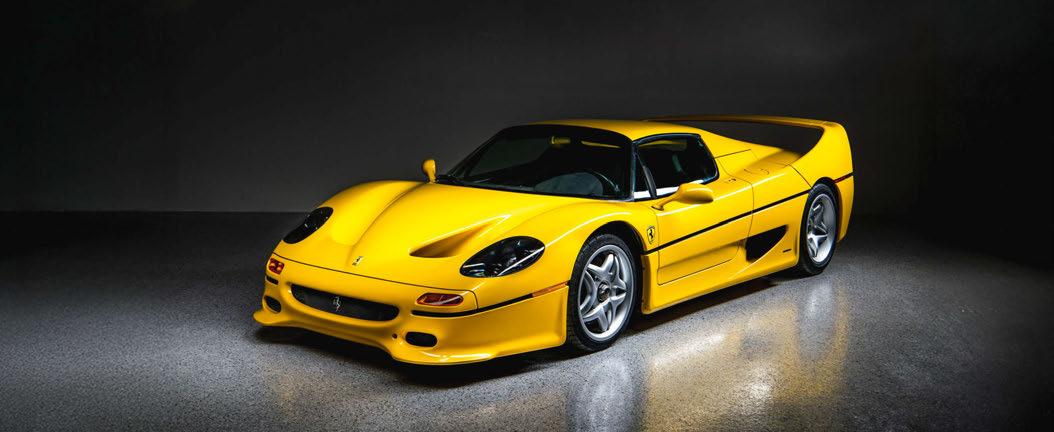
RM Sotheby’s, Monterey, USA
15-16 August
THERE ARE FEW collectors as highly regarded as Ralph Lauren. And not many cars bought by the legendary fashion designer ever find their way back onto the market, which is partly why this very special Ferrari F50 is expected to sell for $6,500,000-7,500,000 when it heads to Monterey later this summer. While the Lauren connection is quite a draw, there are multiple factors that could make this the most expensive F50 ever sold at auction.
Of the 349 F50s built, this is one of only 31 optioned with the Giallo Modena paint finish – and one of just two original US-spec cars. Of that pairing , this car is unique for having a Nero interior, optioned by Lauren himself. The easy way to identify the American-spec
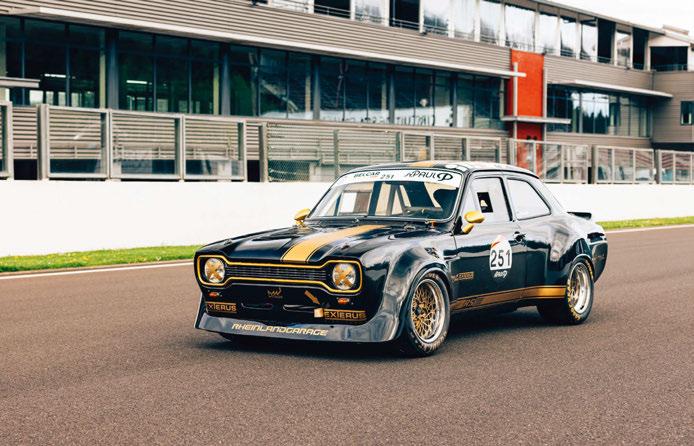
F50s is by the orange front indicator lenses and side bumper markers.
The F50 was sold through Paul Russell & Company in 2003 – when it was showing 3300 miles – after which it was purchased by the current long-term husband-and-wife owners. Retained in a private collection, the car ventured out to a few events early on, but its whereabouts remained relatively low-key and it has been unseen in public since 2009.
Now with a little under 5400 miles, it’s fresh from a big service at Ferrari of Central Florida, including replacement of the fuel bladder and tyres. Impeccably maintained and with its Classiche Certification recently renewed, it’s about as good as they come. rmsothebys.com
Bonhams, Goodwood, UK 11 July
ALTHOUGH IT’S OFTEN pigeonholed as a rally car, ‘XOO’ – the extreme Alan Mann Racing track-focused racing car – featured in our last issue proves that the Ford Escort Mk1 actually has a broad range of motorsport talents. This striking black-and-gold example has been competing on track since the early 1980s, and more recently has been developed by Braunesiser Renntechnik in Germany. The historic championship winner is powered by a 304bhp 2.3-litre Cosworth engine – with a Holbay Warrior 16-valve cylinder head – and a mechanical layout inspired by the 1975 Zakspeed factory car. It’s offered at the Festival of Speed sale with no reserve and an estimate of £40,000-60,000. bonhams.com
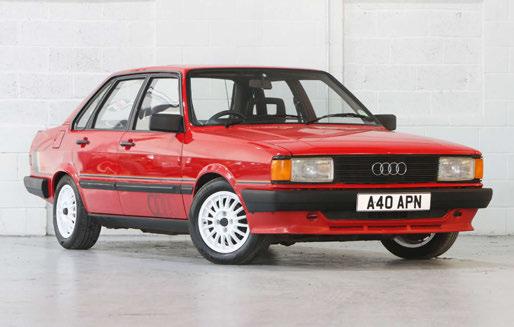

2011 Hennessey Venom GT Broad Arrow, Monterey, US 13 Aug, broadarrowauctions.com
The Venom GT was the ultimate proof of just how adaptable the Lotus Elise chassis could be. Much longer and wider, Hennessey’s bespoke supercar boasted a supercharged 6.2-litre LS9 V8 delivering 725bhp – and a top speed of 270mph. This is number three of the 13 Venom GTs built, and is estimated to make $350,000-450,000.
In 1984, director Joe Dante was lming Explorers on the part of the Paramount lot that had once belonged to RKO Pictures, the studio that produced Citizen Kane. ‘On the RKO side of the lot they were throwing a lot of stu out,’ Dante recalled on an episode of his podcast e Movies at Made Me. ‘ ere were dumpsters lled with antiques and they didn’t even care –they just wanted to get rid of the stu .
‘One of the crew came up to me and said, “Do you want this?”, and I’m looking at it and it’s a Rosebud sled!’ Just like that, Dante became the owner – or more accurately an owner – of the most signi cant prop in movie history.
At the end of Citizen Kane, Kane’s old sled, representing innocence and
1984 Audi 80 Sport Manor Park Classics, Cheshire, UK 19 July, manorparkclassics.com
It’s hard not to agree with the catalogue description of this very tidy-looking 80 Sport, which proclaims it as ‘The Golf GTi for grown-ups’. It is, a er all, powered by exactly the same 1.8-litre fuelinjected four-cylinder engine. On 98,623 miles, it retains the original Audi Sport decals and white Ronal wheels, si ing purposefully on a SPAX PSX suspension kit. A very cool thing for £6000-7000.
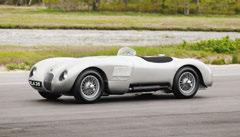
1952 Jaguar C-type Gooding Christie’s, Monterey, US 15-16 August, goodingco.com
Of the 53 original C-types built, a total of 43 were made available for privateer racers to purchase. This car, XKC 028, was delivered to the USA and used as a road-going car. As a result, it has a documented history and retains its original chassis, engine, body and gearbox, unlike many of the cars that were raced. O ered with a $3,750,0004,500,000 estimate.

1924 Bentley 3 Litre Historics , Datchet, UK 19 July, historics.co.uk
Originally ordered with Vanden Plas coachwork, this delightful 3 Litre today wears a Freestone & Webb Open Tourer body. Coming from single family ownership stretching back to the 1950s, it boasts matching-numbers engine, gearbox, axles and steering box, having been cherished throughout that time. Historics has guided the car at £140,000-160,000.
the simple pleasures of a childhood, is tossed unceremoniously into a furnace – but three Rosebud props survived production. One, made from quickburning balsa for use in the nal scene, was bought by Steven Spielberg in 1982 for $60,500. A sled made from pine for use at the start of the lm was given away by RKO as a prize in 1942 and was sold in 2006 for $233,500. What those prices might mean for Dante’s sled, also made from pine and set to be sold by Heritage Auctions in Dallas on 16 July, is anyone’s guess –but we suspect you’ll need Charles Foster Kane-type money to get seriously involved with the bidding.
Thought you’d like to know: Märklin Amerika toy ship (see Octane 265) sold for $92,250.

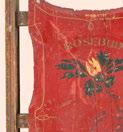
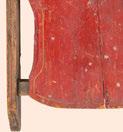


25 June
Brightwells, online, UK
H&H, Milton Keynes, UK 25-27 June
Mathewsons, online
26 June
Charterhouse, Sparkford, UK
28 June
Artcurial, Saint-Tropez, France
29 June
Agu es, Paris, France
Bonhams, Chéserex, Switzerland
4 July
Ewbank’s, Send, UK
8 July
RM Sotheby’s, Taplow, UK 9-12 July
Mecum, Kissimmee, USA
10 July
Agu es, online (motorcycles) 11 July
Bonhams, Goodwood, UK 12 July
Barons Manor Park Classics, Southampton, UK Tennants, Leyburn, UK 18-19 July
Manor Park Classics, Runcorn, UK
19 July
Che ns, Cambridge, UK
Historics, Datchet, UK
WB & Sons, Killingworth, UK 23-26 July
Mecum, Harrisburg, USA 27 July
Hampson, Oulton Park, UK 30 July
H&H Classics, Buxton, UK
30 July – 1 August
Mathewsons, online 31 July
SWVA, Poole, UK 2 August
Classicbid, Nürburgring, Germany
6 August
Brightwells, online
9 August
Barons Manor Park Classics, Southampton, UK 13-14 August
Broad Arrow Auctions, Monterey, USA 14-16 August
Mecum, Monterey, USA 15 August
Bonhams, Carmel, USA 15-16 August
Gooding & Company, Pebble Beach, USA
RM Sotheby’s, Monterey, USA
AUCTION DIARY IN ASSOCIATION WITH

Germany’s all-conquering pre-war sports car has a very stable fanbase
IT’S DIFFICULT TO express how important Ernst Henne’s 1936 Nürburgring win in the new BMW 328 was for the German Reich. This was the era of Teutonic automotive grandstanding, motorsport providing a way to prove to the world how technologically dominant the Nazi regime had become over both its current and future enemies. The problem was that the British in their tiny MGs, the Italians in their Alfa Romeos and the French in their Bugattis just kept winning. Germany desperately needed a smallerengined sports car that was extremely quick, nimble and –most importantly – reliable. BMW provided the answer with the 328, a 1971cc sports
roadster that had these characteristics in spades. After Henne’s success they were snapped up by the top drivers all across Europe. A trio placed 1-2-3 in class at the RAC Tourist Trophy in September 1936, winning BMW the £90 team prize. Over the next few years, the model scored 200 class wins, everywhere from the Alpine Rally to the Mille Miglia, which Brit racer and aviator AFP Fane won in 1938 with an astonishing 74mph average speed.
Hagerty’s demographic data show that the 328 still attracts the older generation, with 90% of owners born before 1965 (a statistic changed by a mere 1% since 2020), and no owners born after 1981. Given that age
Even more than the much-loved Pagoda W113 SL, the R107 SL was in a class all of its own, with few truly comparable, contemporary rivals other than itself. That’s because over its long life from 1971 to 1989 the R107 came with a dizzying variety of engine permutations, from a 2.8-litre straight-six to an alloy 5.6-litre V8 (US only). Put simply, in the market for luxury, two-seat, convertible sporting tourers there were more options within the R107 SL family than outside it. And as a value proposition today, particularly compared with the Pagoda, the R107 makes a compelling case. Friedrich Geiger’s ‘design for the millennium’ hit the road pretty much fully formed in 1971, to the extent that there were few major progressive
developments, other than engine options and anti-lock brakes in 1980. Further testament to this future-proofing is that 237,000 were built through to ’89, despite its distinctly premium price.
In 1971 the initial V8 350SL cost £5601, when the V12 E-type Jaguar roadster pitched in at just £3139 in the UK. That’s hardly a car-for-car comparison, but there wasn’t really anything else in the segment. The first ‘six’, the 280SL, arrived in 1974 and, unlike the V8s, had a manual option.
In 1985, with the 500SL on stream since 1980, Mercedes added the 300SL as rivals had finally targeted the sector. BMW’s 325i convertible cost £18,750 in the UK; next up was the 300SL at £26,085; the Jaguar XJS V12 cabriolet was £28,300; and the 500SL came in at £33,310. With the 300SL at threequarters the cost of the 500SL, price was more of a consideration then than today, when mileage and condition are the important value parameters (the exception to that is the US-only 560SL).
of ownership, it’s remarkable that values have remained as constant as they have, with sale prices roughly between £250,000 and £750,000 for the past decade, varying according to history and condition.
One interesting comparison was at RM Sotheby’s in Munich in 2024, when three BMW 328s were offered in a single auction. Buyers favoured a ‘standard’ Roadster (€477,500) over a rare Autenrieth cabriolet (€350,000) and a special with US racing history (€286,250). A Special Roadster named as one of the German team cars was offered for sale at auction twice, in 2023 and 2024, but despite a high bid of $1.6m in the former, failed to sell.
John Mayhead
Over the past five years decent 300SLs have increased from about £35,000 to £55,000 in the UK, equating to an annual growth rate of 9.5%, while stand-out cars can nudge £100,000. The 500SL is broadly on a par with the 300SL, but both have significantly outperformed the HAGI Mercedes-Benz Classic Index, which has achieved an average annual return of 3.5% over five years. The R107 segment has also bettered the 5% five-year annual average of the overall
collector market as measured by the HAGI Top Index. The R107 is clearly coming into range in the wider collector sphere while remaining an inviting value proposition when you consider what you get for your money compared with the alternatives. Or rather, now as then: what alternatives?
HistoricAutoGroup.com


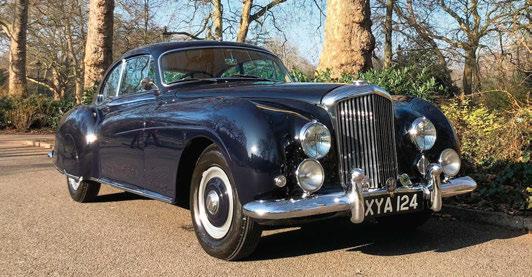



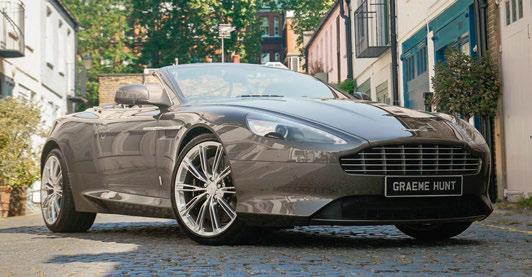
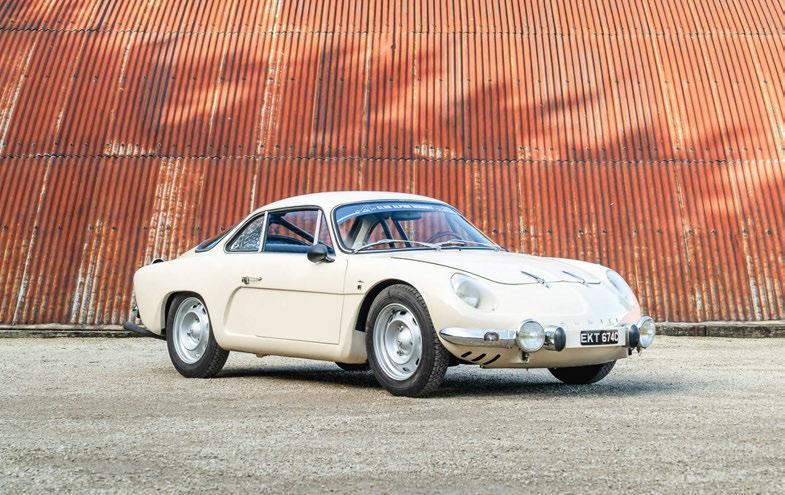
POA from Classic Motor Hub, Gloucestershire, UK
IT IS QUITE unusual to see an A110 in white, or more speci cally in this case, Ivory. Most Alpines, especially those destined for competition use, were nished in the instantly recognisable shade of Alpine Blue. As a relatively early example, this car – o ered by Classic Motor Hub – was built in Dieppe, and features a dainty 1108cc Gordini VB engine. Aside from the very earliest 956cc versions, this car represents the purest Alpine experience, which boasted four-wheel disc brakes and a ve-speed manual gearbox. 85bhp doesn’t sound like a huge amount today but with only 650kg to propel it’s enough to make this small coupé a lot of fun. is car arrived in the UK in 1984, when it was
bought by an enthusiast from the Lenham Motor Company, and was retained by him for over 20 years.
More recently the A110 has been treated to a full restoration over the course of a few years – with an engine rebuild in 2017, interior retrim in 2018 and full rewire and repaint in 2020. All the brightwork was re nished at that time, too. Although this car had at some point been repainted in blue, the most recent work has seen a switch back to the original – and fantastic-looking! – Ivory.
Although this is a full road-spec A110, the front spotlights and ed rear roll-over bar give some hints to its motorsport pedigree: a delightful li le coupé that’s ready for some fun. classicmotorhub.com
HOW’S BUSINESS? e world is a funny place right now with new world leaders, tari s and a lot of uncertainty, but we have still had a truly exceptional rst quarter. Is the market as strong as it was? Right now we’re de nitely in a buyer’s market. What cars do the new demographics favour? Nostalgia is a powerful motivator: I love to drive pre-war but my poster car was the McLaren F1 LM, chassis XP LM. Are pre-war cars doomed? No, if Ralph Lauren were to sell his 2.9 Alfa in auction, it would make an exceptional price and everyone would say pre-war cars are back! What should people buy right now? Whatever they love. Cars are like partners: it’s love at rst sight, but once you get to know them you decide if they’re a keeper. What cars are shockingly good value? Although I’m biased and they’re still a lot of money, a Valkyrie seems incredibly undervalued at the moment. What should people avoid at the moment? Any car with question marks is to be avoided; inspections by a trusted source really are a must. What’s top of your shopping list? I’d love Gregor to sell me his Vauxhall, ‘AOA 2’.
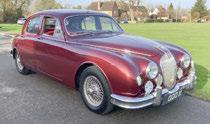
1959 Jaguar Mk1 3.4 £34,995
With a history that can be traced right back to the first owner, this is a genuine ‘survivor’ car, which boasts the desirable 3.4-litre engine and Moss manual ‘box. winspeedmotorsport.com (UK)
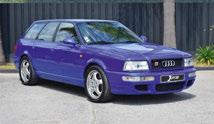
1994 Audi RS2 €85,500
Developed by Porsche, the RS2 was a landmark car in the world of the fast wagon. This one has done 150,000km and looks great in launch-spec Nogaro Blue. jorcar.com (PT)
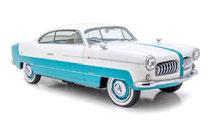
1952 Lancia Aurelia B52 $175,000
One of just two B52s bodied by Carrozzeria Ghia and believed to be the Jet Age showcase car that was displayed at the 1952 Turin motor show. hymanltd.com (US)

Christo Cowens Partner at Fiskens, a leading London dealer in fine automobiles.

2014 Mercedes-Benz SLS AMG Black Series, $20 per share
The extensive use of carbonfibre and a monster 6.2-litre naturally aspirated V8 – producing 622bhp – saw the SLS transformed into something akin to a roadgoing GT3 racer. One of 350 built. mcqmarkets.com


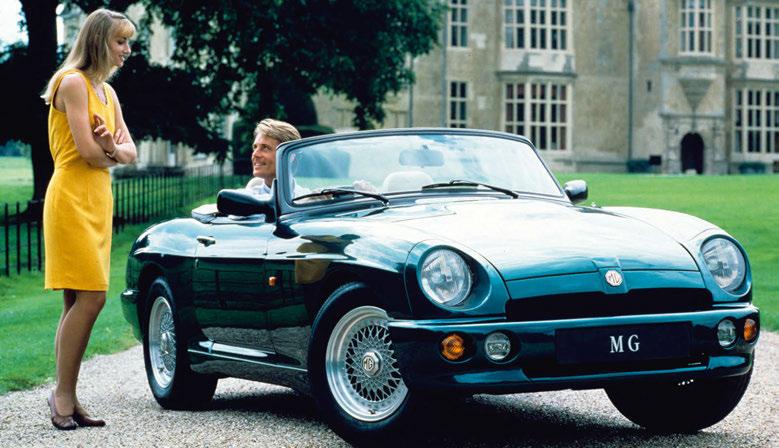
As a ‘new’ car the RV8 made little sense in the UK, but it’s a different story today
WHEN YOU HEAR the phrase ‘Japanese import’, generally a mental image of Mitsubishi Evos or Subaru Imprezas tends to spring to mind. During the late 1990s and early 2000s, though, Japan also became a fruitful place to source clean, wellmaintained British sports cars – especially the MG RV8. A great many returned home via this route, meaning that today – 35 years since production ended – there are more RV8s running in the UK than were originally sold here.
That might sound impressive, but it’s really indicative of just how poorly the ‘modernised’ MGB V8 sold in the UK when it was new. In total, only 307 of the 1983 built were actually registered at home. With a small number sold to mainland Europe – it wasn’t even offered in the USA – around 80% of the cars built were sold to buyers in Japan.
The story of its conception is quite an unusual one. With the sale of Rover Group to BAe in the late 1980s, there was still a continued desire to bring back an MG sports car. Ultimately, it was the success of the Mazda MX-5 that would spur on the development of the mid-engined MGF, and ‘Project Adder’ was to be a stop-gap model.
The idea was made possible thanks to the re-introduction of MGB bodyshell production by British Motor Heritage in 1989. The new Rover Special Products department was given the task of developing the ‘new’ roadster within a strict £5m budget – using as many existing Rover Group components as possible.
The Heritage ’shell formed the basis for the RV8, and was largely unmodified. Under the bonnet was a 3.9-litre fuel-injected Range Rover V8, producing
187bhp, and much work was needed to bring the rest of the B’s mechanicals up to an acceptable 1990s standard. The leaf springs and live rear axle remained (though located by torque reaction arms), Koni telescopic dampers replaced the old lever-arm units, and modern balljoints took the place of kingpins up front to sharpen up the handling.
A widened track and larger cross-spoke alloy wheels required significantly wider wheelarches. In fact, almost every panel was new for the RV8 – and it showed. While the 1960s underpinnings were not fully disguised, this was a great-looking modern interpretation of the classic MG shape.
It made its first public appearance at the 1992 British Motor Show but, after a relatively cold reception from the press, coupled to the relatively high £25,440 asking price (the UK was entering a recession at the same time), it was far from the sales success Rover had hoped for. For most, the TVR Chimaera – powered by a more potent version of the same engine, with modern underpinnings and a lower price – was the obvious choice.
It was a different story at the Tokyo motor show the following year, however, where the company quickly filled its order books. This market adored the wood-and-leather Britishness of the RV8, regardless of the seemingly archaic underpinnings.
The Japanese clearly understood that the RV8 was a classic car right from the get-go. As a new car it made little sense to some, but as a classic British roadster bought today it’s a much more enticing proposition. Limited numbers, great styling, a cracking V8 and thriving club scene mean the RV8 might be worth a second look. Matthew Hayward
All RV8s left the Cowley factory in right-hand-drive form. Japanese-market cars are near-identical, so condition, mileage and service history are the main factors in price. The entry point for an RV8 is about £12,000-15,000, but cleaner, low-mileage examples are closer to £20,000. The very best cars command upwards of £27,500.
The majority of RV8s were painted in Woodcote Green, Nightfire Red or Oxford Blue, so a car finished in one of the rare alternative hues is slightly more desirable.
The Heritage ’shells and panels were zinc-coated; as most have led a sheltered life, corrosion was much less of an issue here than with the ’B. Any RV8 is still at least 35 years old, however, so rusty sills, jacking points and previous repairs should all be checked. The worst corrosion hot-spot is the windscreen frame, so inspect it closely.
Rover’s V8 engine was legendary for its longevity and effortless delivery; this car’s 3.9-litre EFI version was shared with the Range Rover. Although long-lived, regular maintenance is vital, so make sure it’s had regular oil and coolant changes.
Early cars got Rover’s LT77 gearbox, with later cars switching to the R380 ’box. Both are known to be tough.
Modifications are not uncommon, from EPAS to an independent rear suspension set-up. As long as they were fitted by specialists to a high standard then there’s generally not much to worry about – just be aware that anything too radical might devalue the car.
If a hard-top is fitted, ensure the hood below is in good working order, and that all the seals are healthy. Wood veneer inside can delaminate, and repairs can add up.

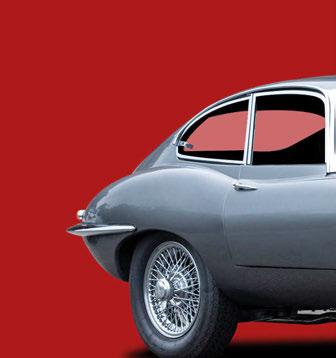


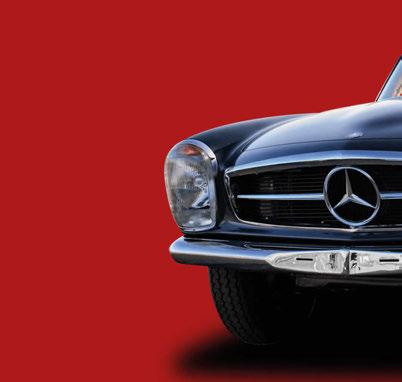



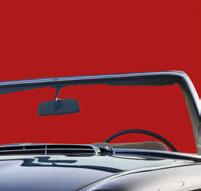
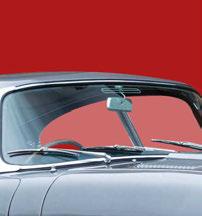














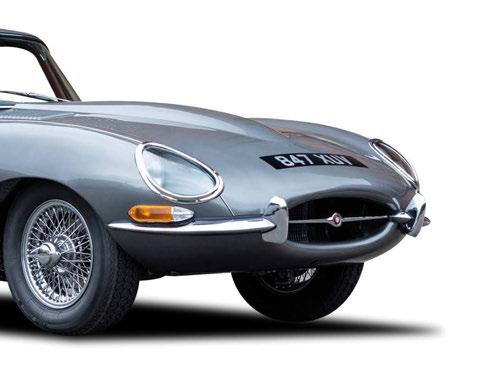





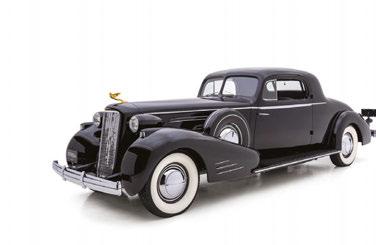
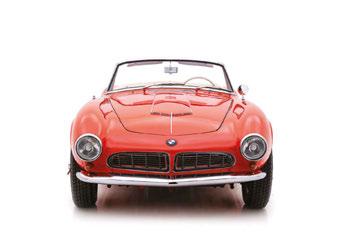
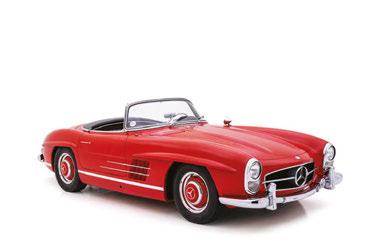
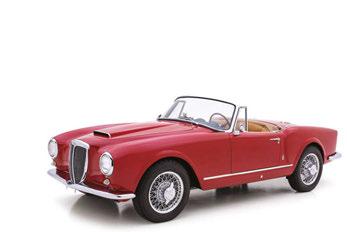

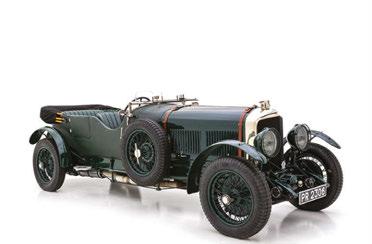

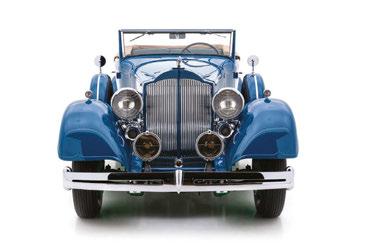
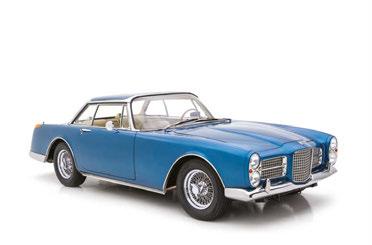



2023 FERRARI 812 COMPETIZIONE APERTA
This 1 owner exceptional ‘Atelier’ car is presented in Grigio Ghisa complemented with Sabbia interior. Equipped with apple carplay, airbrushed Scuderia shields, daytona carbon fibre racing seats, front & rear parking cameras, passenger display, many carbon fibre elements, front suspension lifter, adaptive front light system with SBL function and full topaz paint protection film | 63 miles, £POA
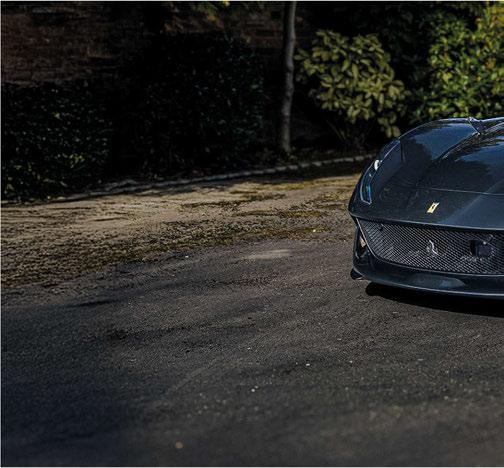
2020 FERRARI 812 SUPERFAST

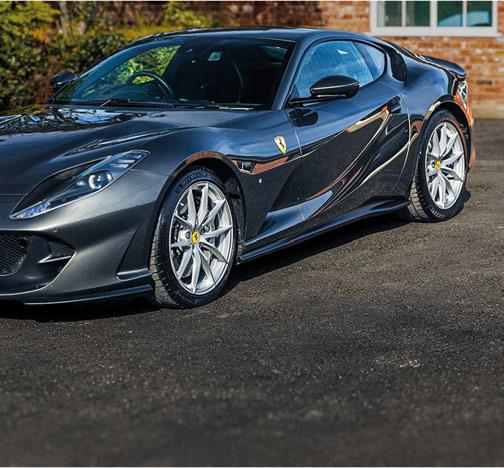
This 1 owner example is presented in Canna di Fucile with nero leather interior, front axel lift, full electric daytona style seats, scuderia shields, passenger display, parking camera, carbon fibre driving zone with LED`s, matt silver alloys with Alluminio brake callipers and full-service history by HR Owen Ferrari in London | 9,770 miles, £POA


2017 FERRARI 488 SPIDER
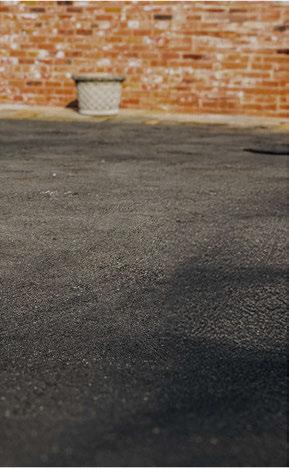
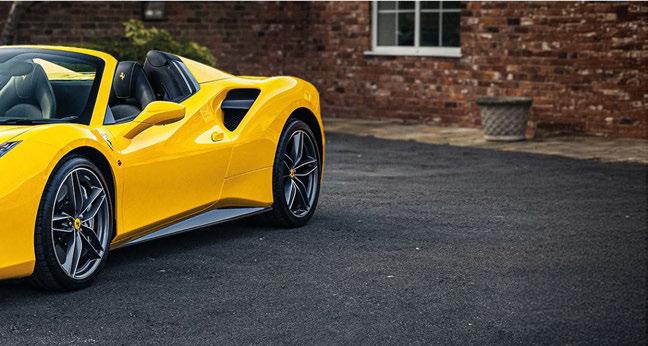
This 1 owner car is presented in Giallo Modena with nero leather, full electric daytona style seats, suspension lifter, carbon fibre dash inserts, 20” forged diamond alloys, contrast yellow stitching, matching luggage set and full Ferrari service history | 5,730 miles, £POA
































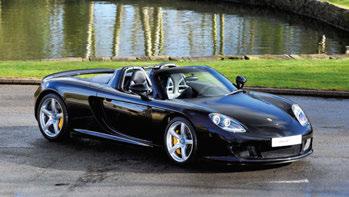






















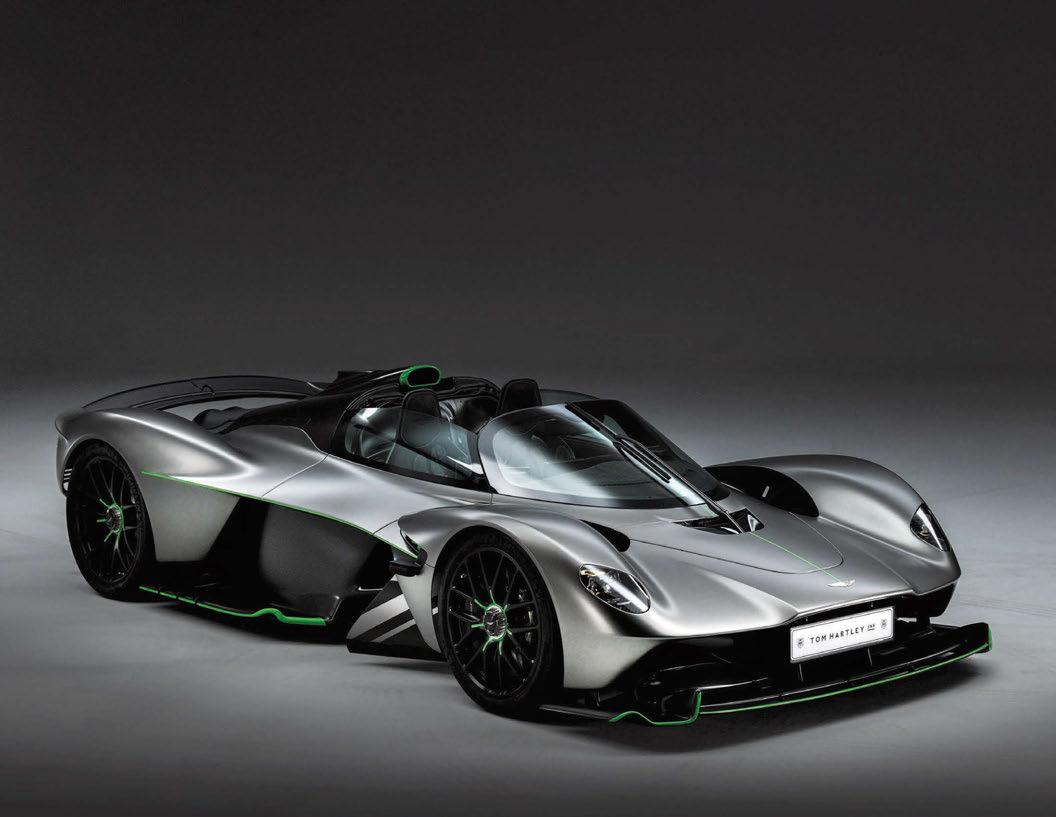
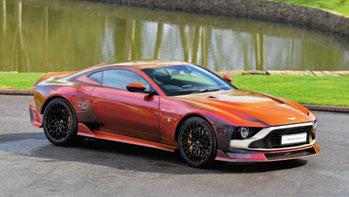
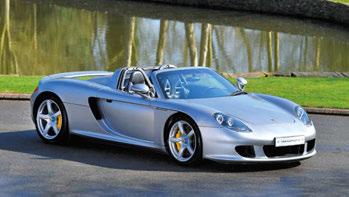
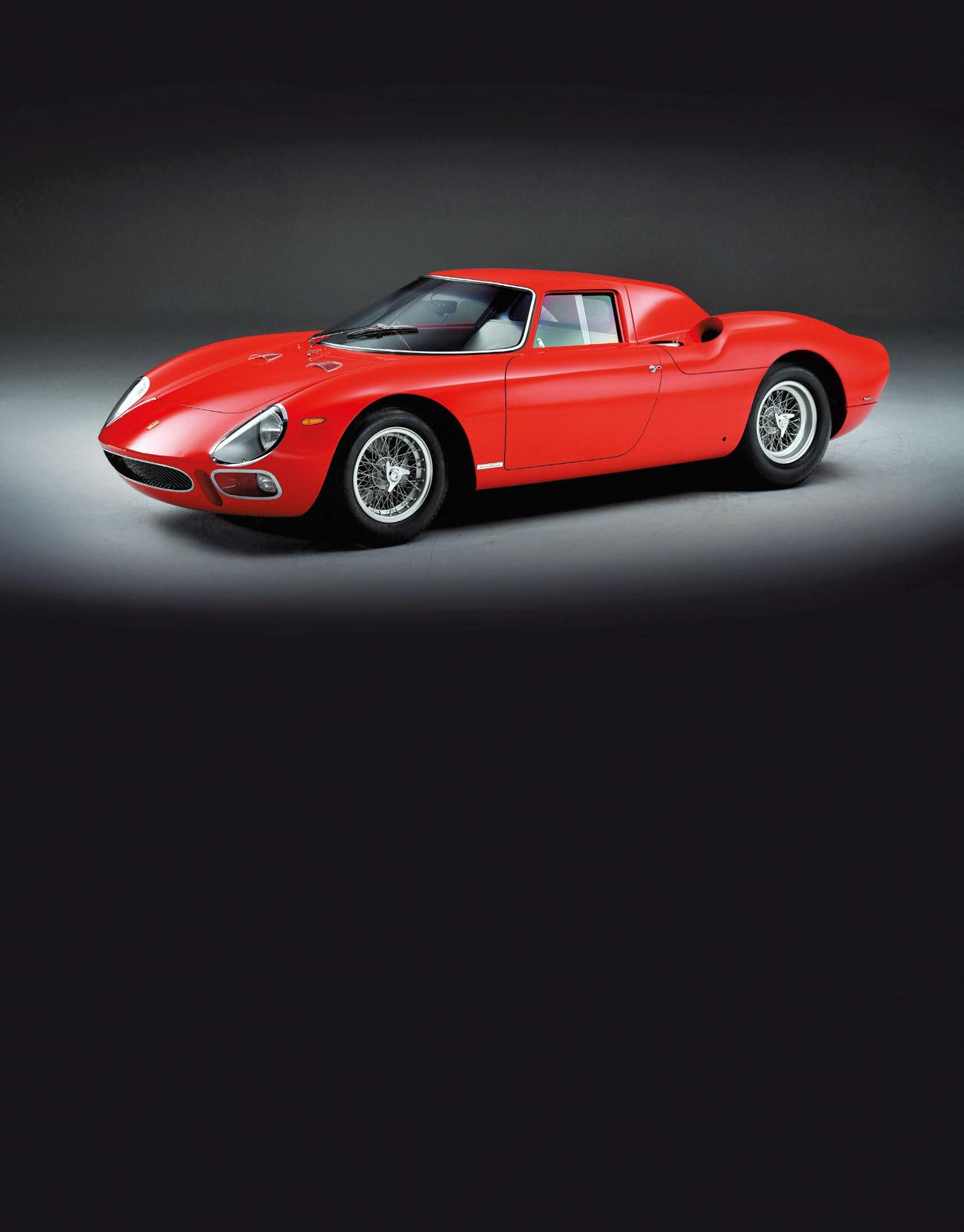
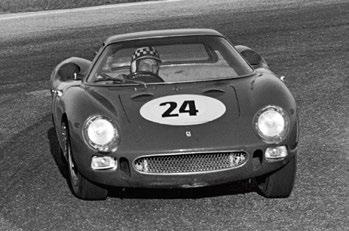
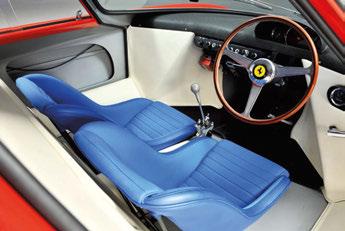
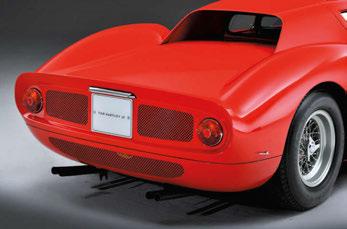
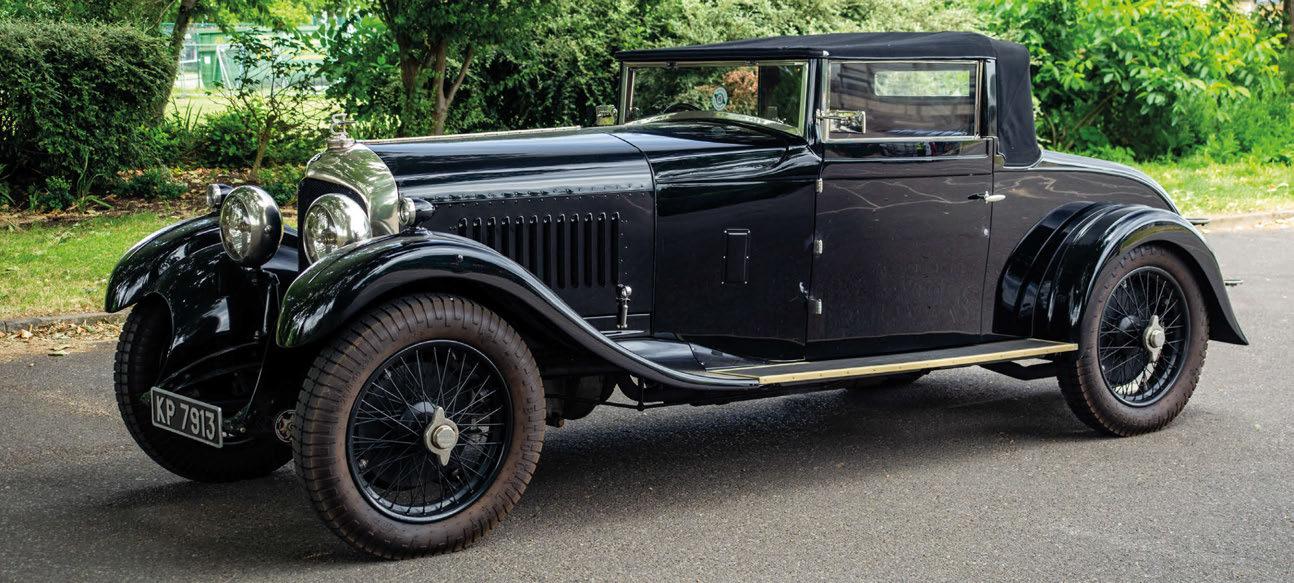
1929 Bentley 4.5 Litre DHC by Martin Walter
A very original, correct, and beautifully maintained Vintage Bentley. It’s exceptionally rare to come across a vintage car that has survived in such perfect order. Matching numbers, combined with handsome original and unique coachwork make this car very desirable, in addition to being a highly capable tourer.

1924 Bentley 3 Litre Speed Model Rare original 2 seater. Full history.
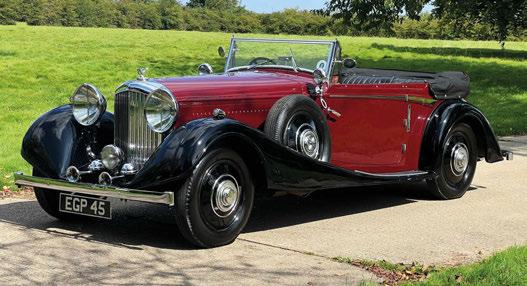
1935 Bentley 3.5/4.25 Litre Continental Tourer by Oxborrow & Fuller. Full history.
We are always eager to buy important collectors cars. All cars can be seen tried and tested at Quin Hay Farm Petersfield Hampshire GU321BZ or in central London. Please see our website for
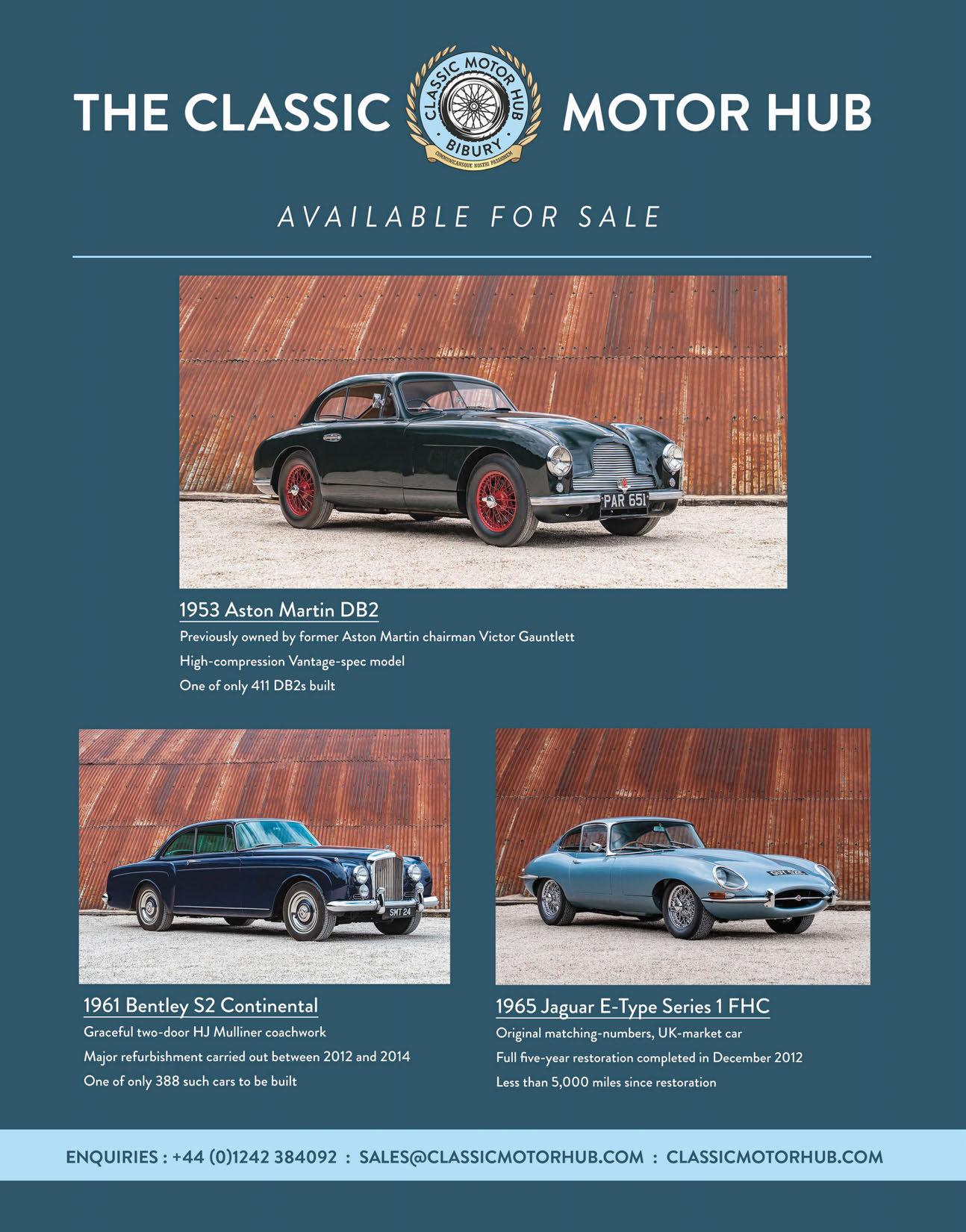
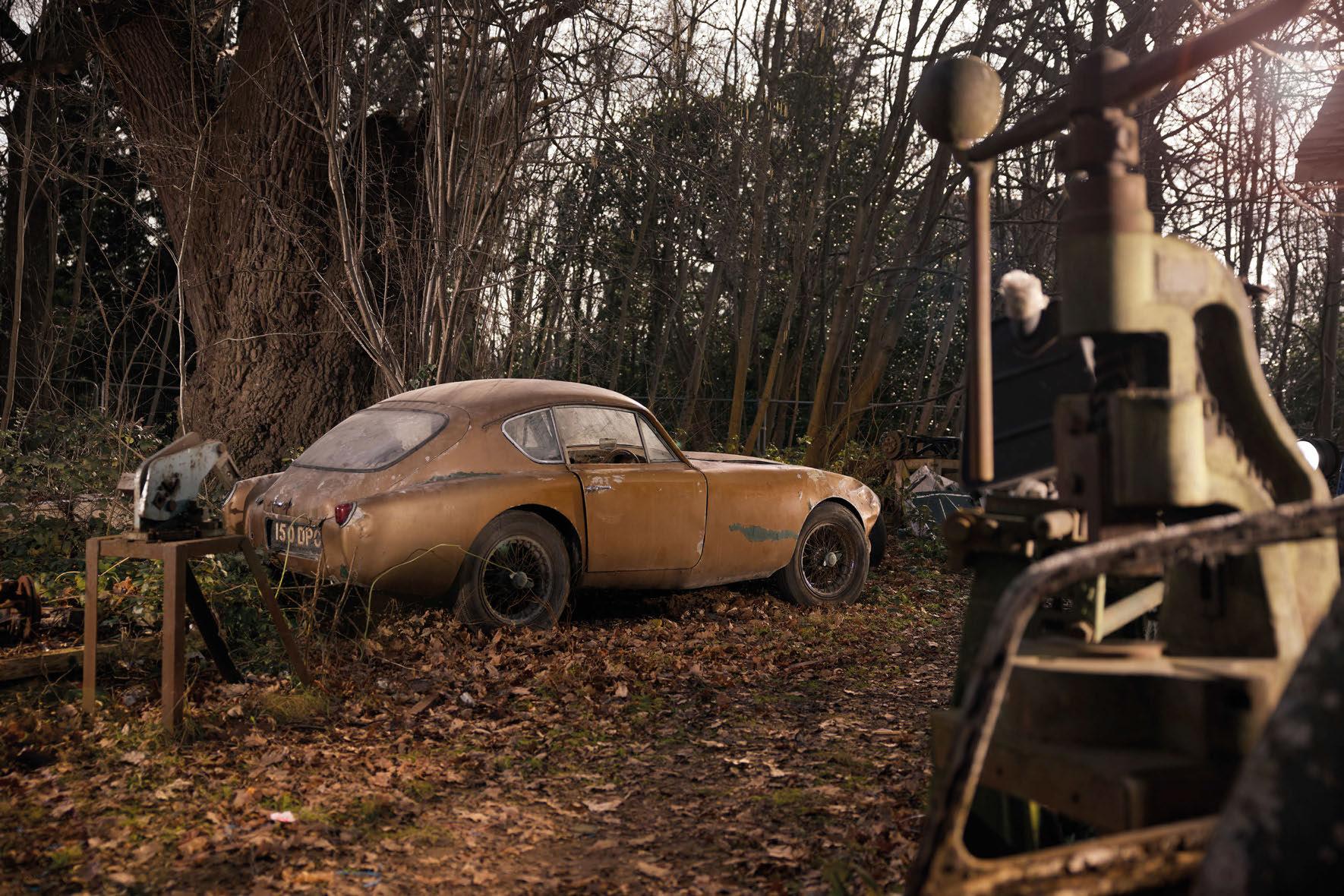
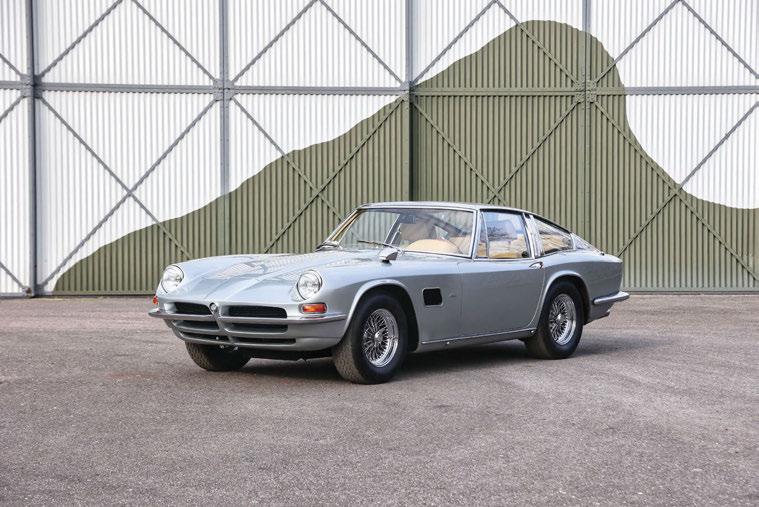

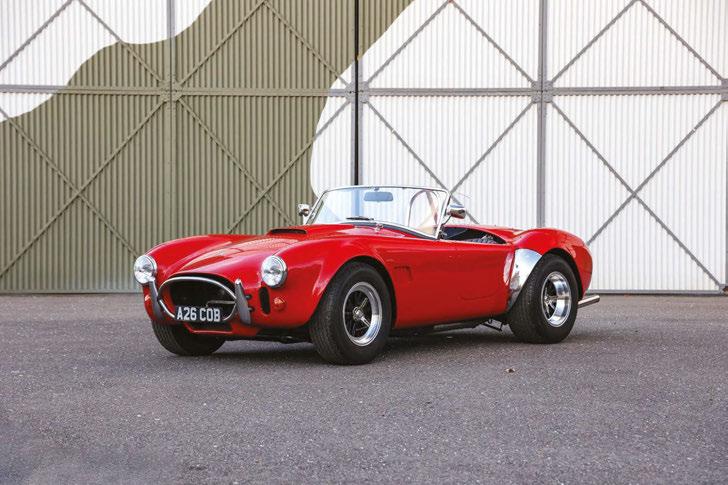
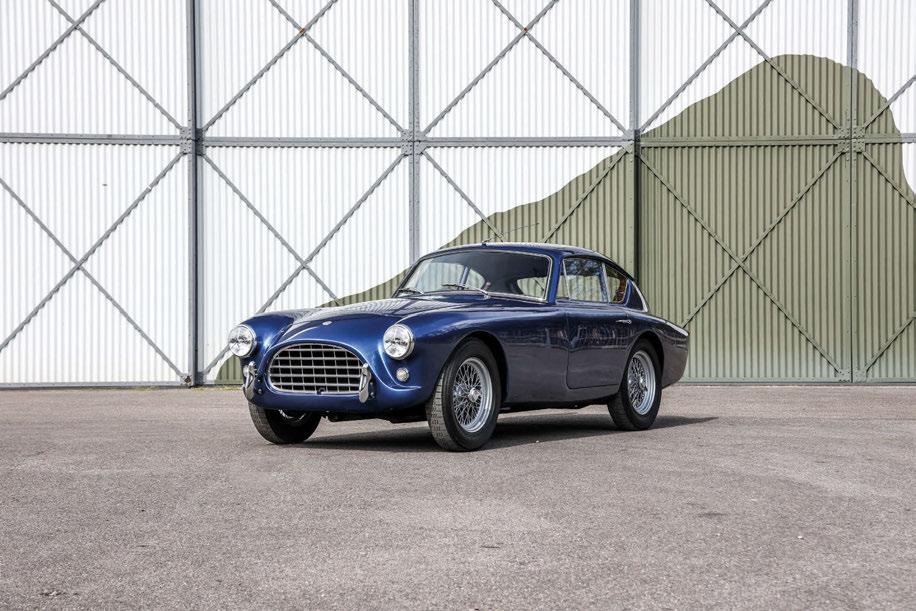

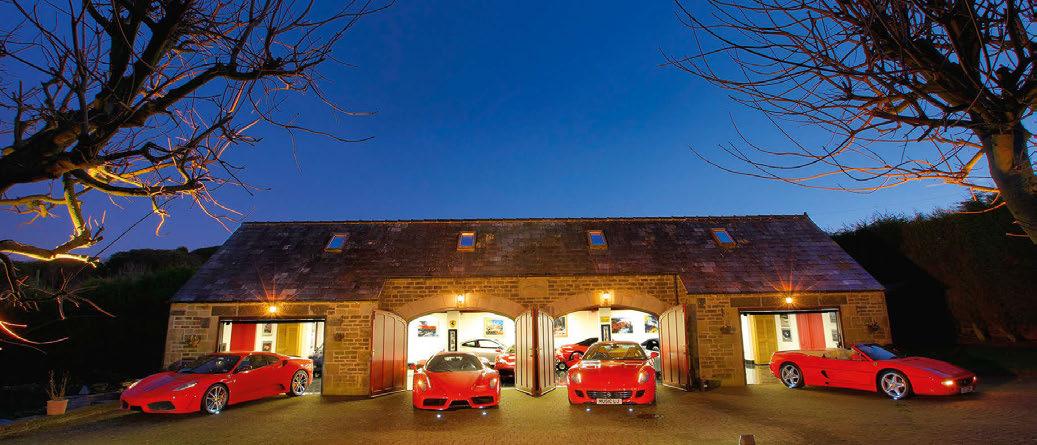

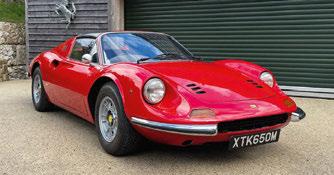


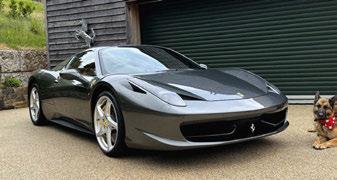

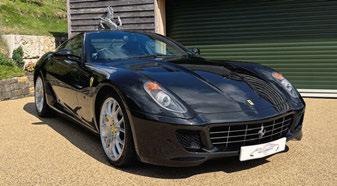

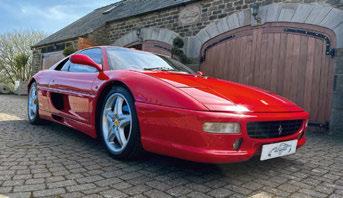


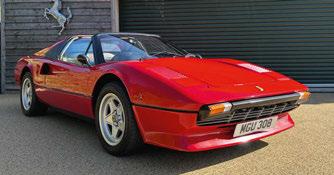

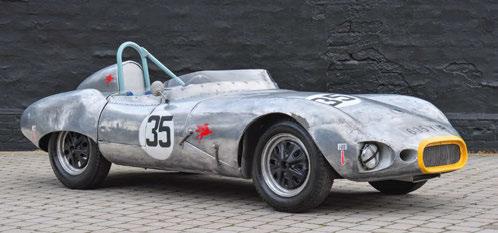
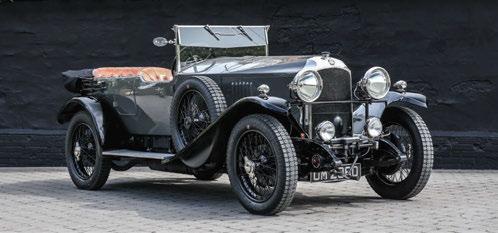
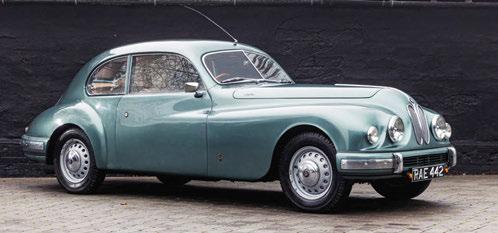
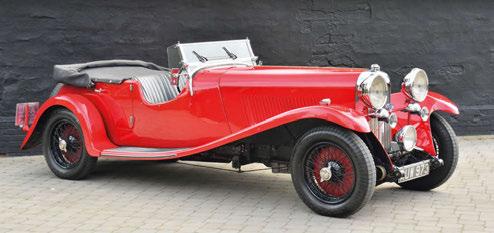
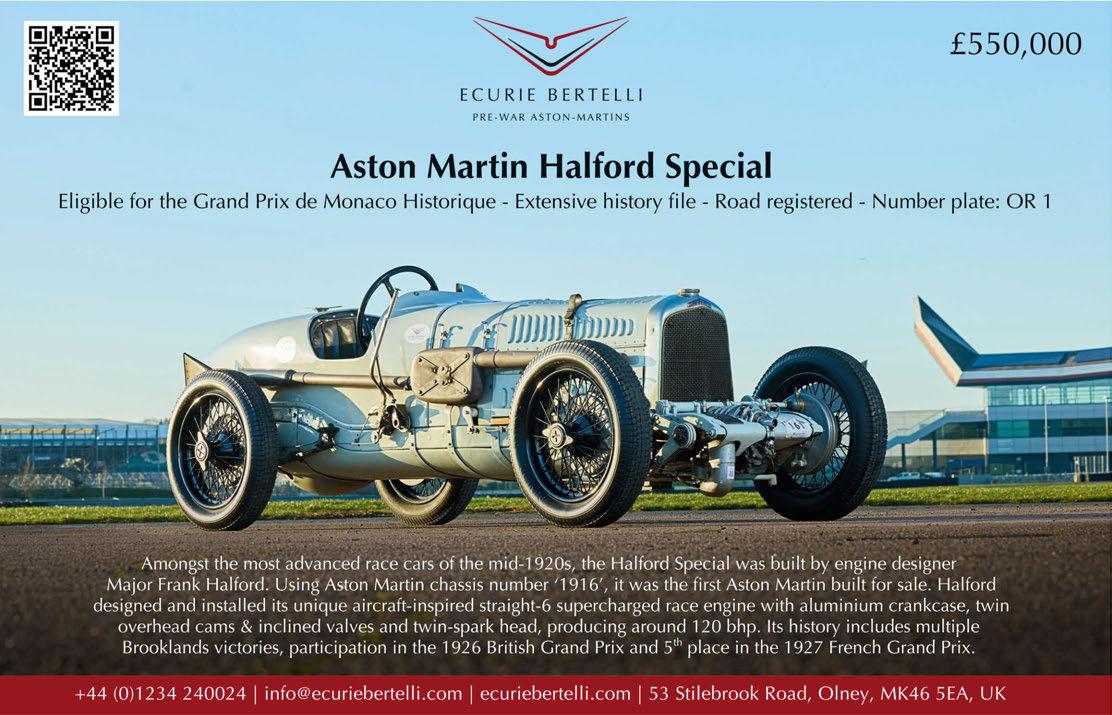

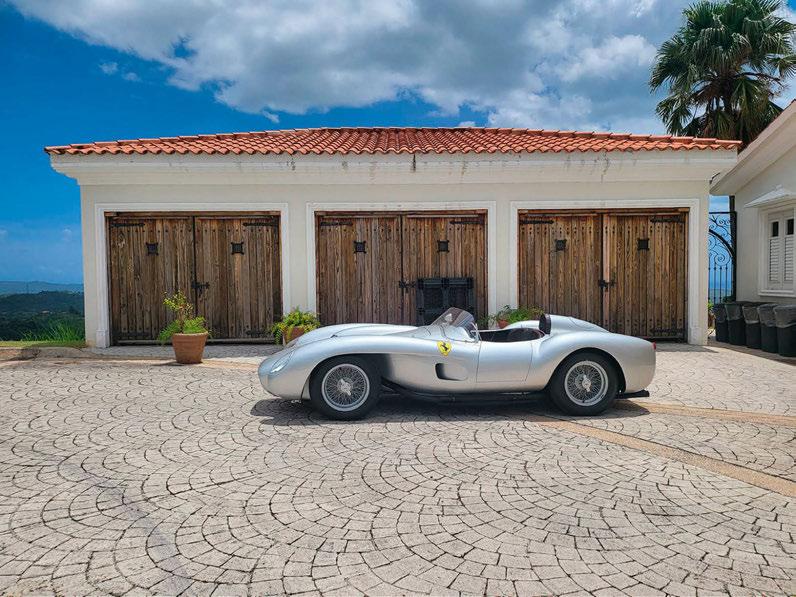
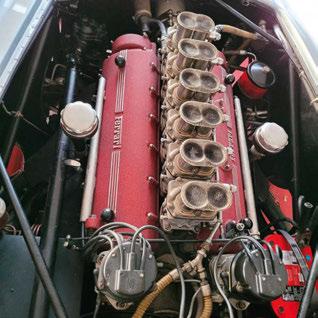




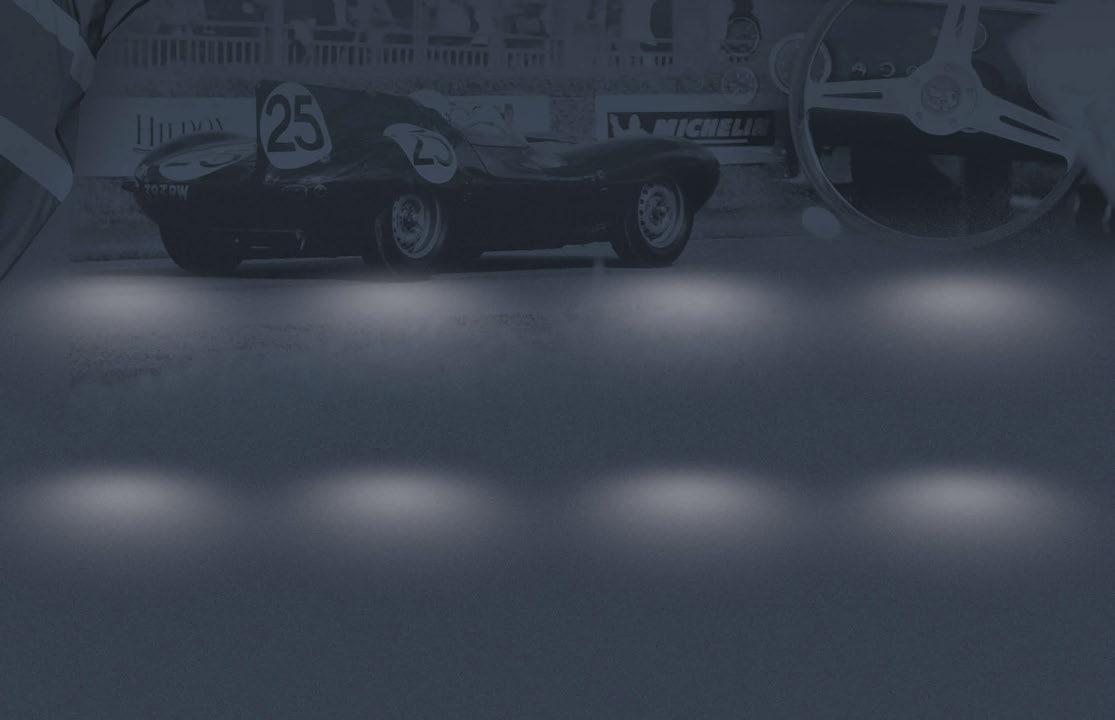
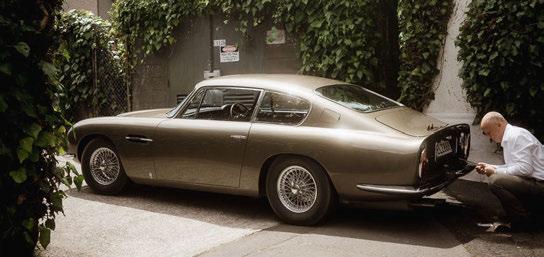
Superb condition, Old English Pewter, 83,500 miles. Imported to NZ in 1980, recent 13 ½ year bare metal nut and bolt restoration and approximately 2,000 miles since. Everything inside and out fully rebuilt, renewed or replaced, and numerous appropriate enhancements too many to mention (eg, 4.2 litre, Jenvey HTB’s). Full spec sheet and photo history available on request. Very strong performer, scares modern cars.
Price GBP255,000
Email: matthew@dunningqc.co.nz













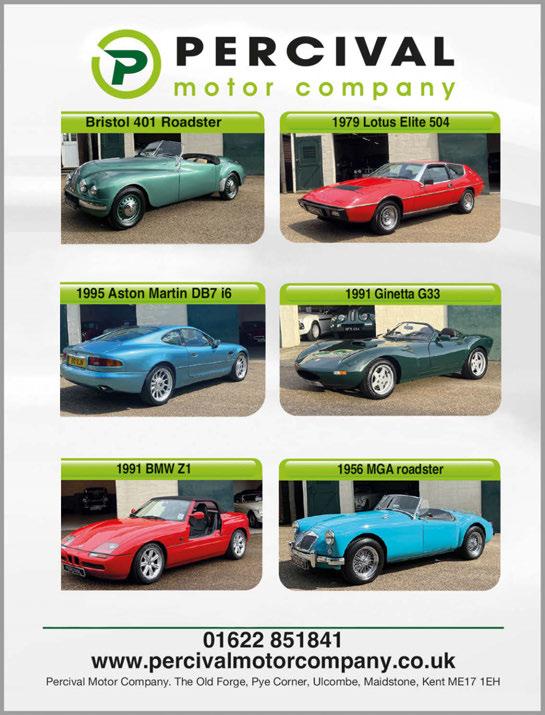


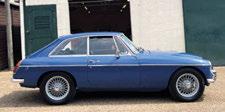




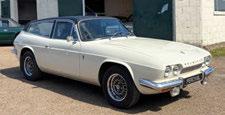


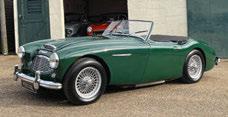




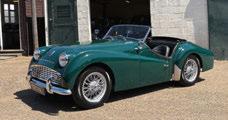










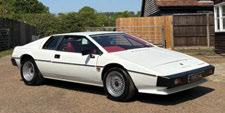







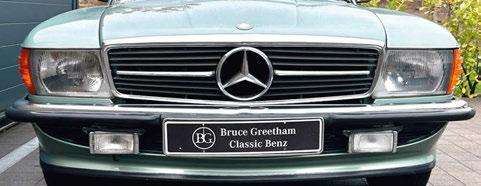


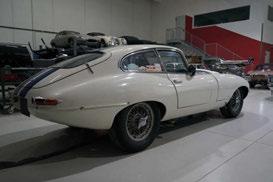

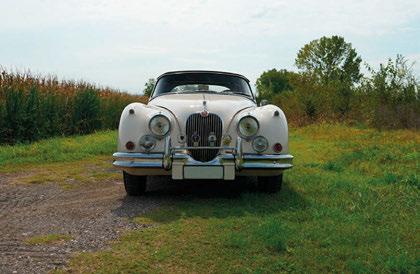
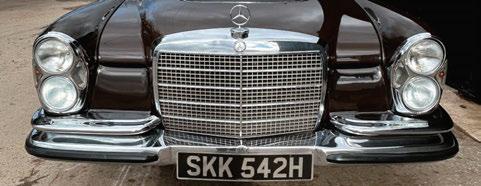
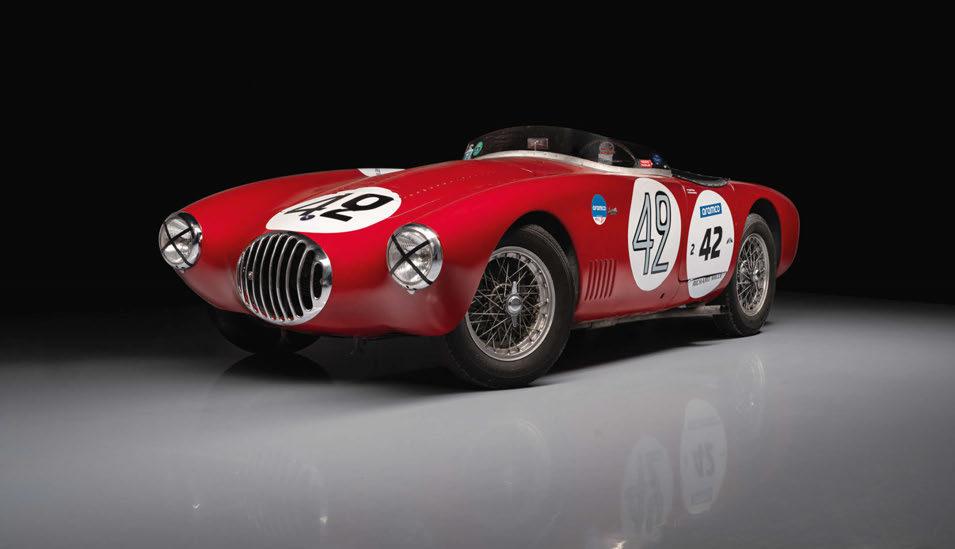








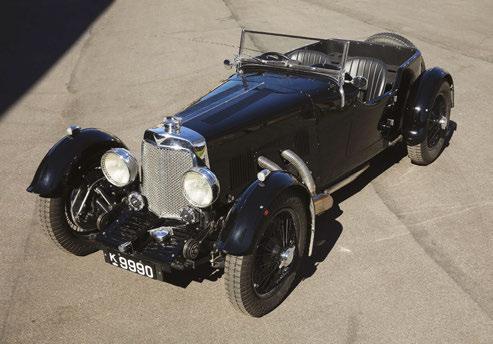
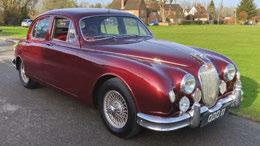
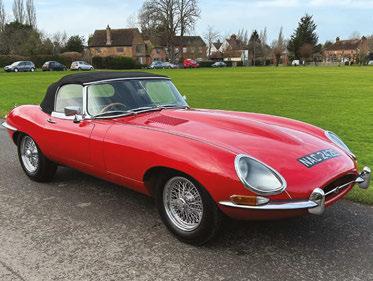
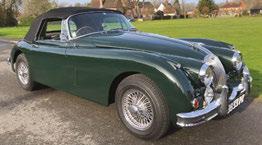
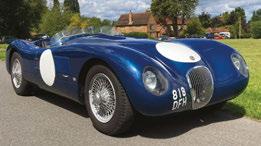
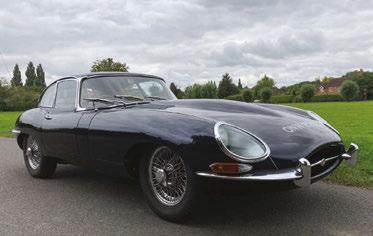
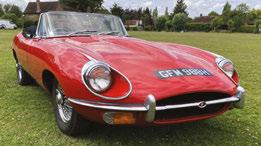
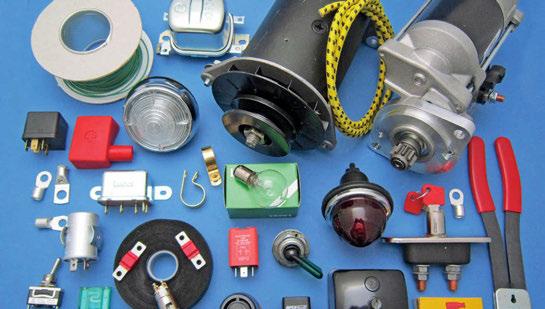


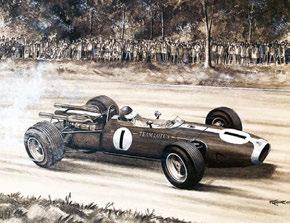

Derby Plating
Derby Plating
Derby Plating
Ltd Est. 1979
Est. 1979
Est. 1979
Specialist electroplaters, polishers and metal finishers.
Specialist electroplaters, polishers and metal finishers.
Specialist electroplaters, polishers and metal finishers.
Re-chroming to the highest concours and show standards
Re-chroming to the highest concours and show standards
Re-chroming to the highest concours and show standards
148 Abbey Street, Derby DE22 3SS
148 Abbey Street, Derby DE22 3SS
Tel: +44(0) 1332 382408
Tel: +44(0) 1332 382408
148 Abbey Street, Derby DE22 3SS
Tel: +44(0) 1332 382408
Email: info@derbyplating.co.uk www.derbyplating.co.uk
Email: info@derbyplating.co.uk
Email: info@derbyplating.co.uk www.derbyplating.co.uk
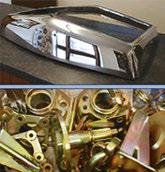
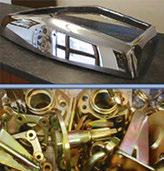
www.derbyplating.co.uk

•
•















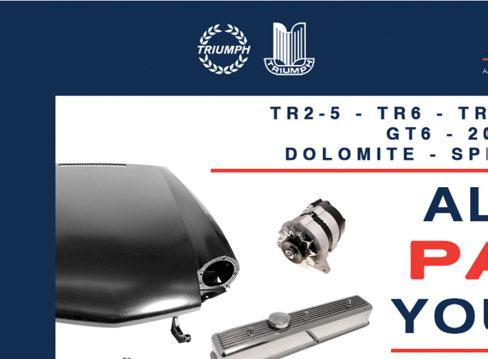

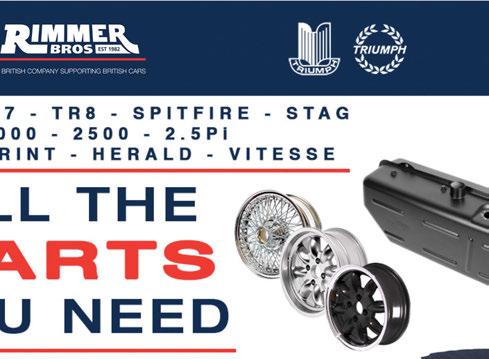












































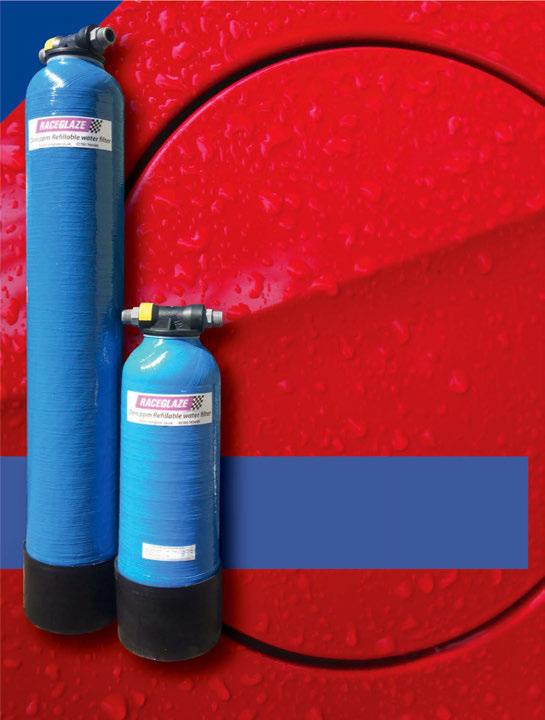






















Situated 5 minutes from the A3 on the Surrey / Hampshire / Sussex borders convenient for Goodwood Discreet secure insulated storage facility for any car or motorcycle. For further information Tel: 01420 472 273 E-mail: southlandsccs@gmail.com Web: www.southlandscherishedcarstorage.co.uk
Onsite service and repair available

























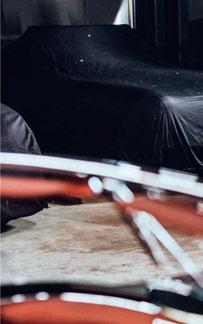










































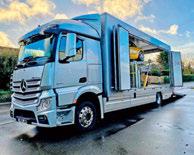


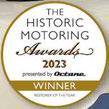





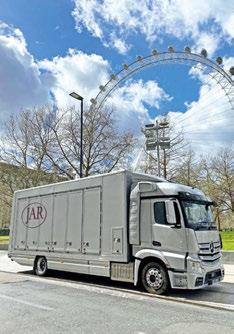



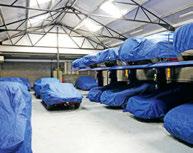






























644599
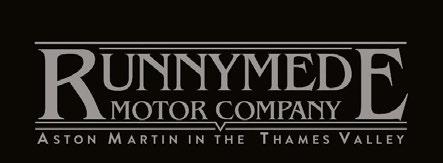
Established 1978
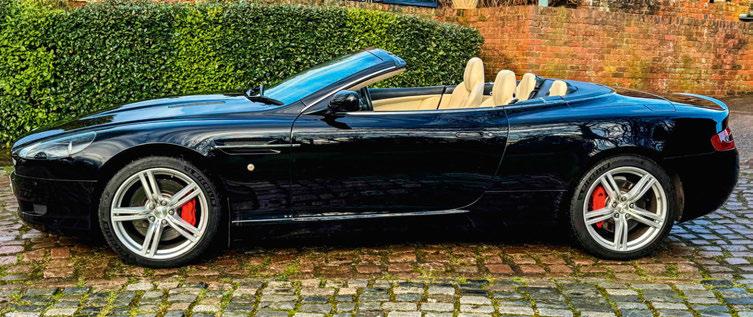
2008 model year Aston Martin DB9 Volante in Onyx Black with Cream Truffle hide interior. This is a beautiful example that has covered only 52,300 miles with a fully stamped up service history. It is in fabulous condition reflecting just how well it has been kept. The spec includes satellite navigation, climate control, electric heated seats, cruise control, front and rear heated screens and a fully adjustable steering column. Fully serviced and ready to be enjoyed at £32,950
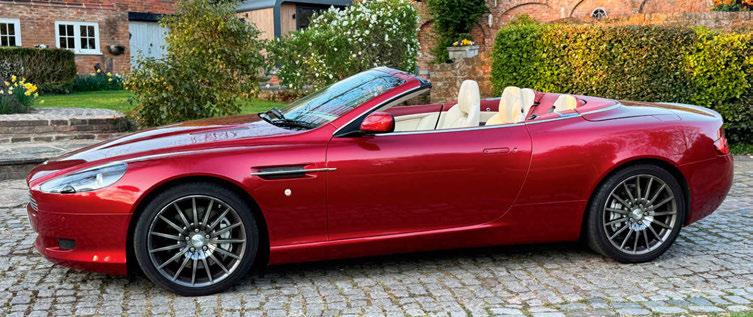
2009 Aston Martin DB9, in Toro Red metalic with Cream hide interior. Built to a high specification which includes Automatic transmission with paddle shift option, Climate control, Satellite navigation, heated electric sports seats with lumbar support and a fully adjustable steering column. It has covered a total of 42,700 miles and comes with a fully stamped up service book and a DVLA MOT record. A very rare Aston Martin in this attractive colour scheme which we think definitely suits this model. Very competitively priced at £37,950

2018 Aston Martin DB11 V8 Volante in Magnetic Silver with two tone Obsidian Black and Mocha hide interior. High specification including Touchtronic transmission, high spec premium audio system with blue tooth, high spec cobra tracking, electric heated seats, fully adjustable electric steering column and 20” Diamond cut alloys. One owner and a mere 11,700 miles from new and in “As New” condition. Now offered for sale at a huge saving on list at £82,950.



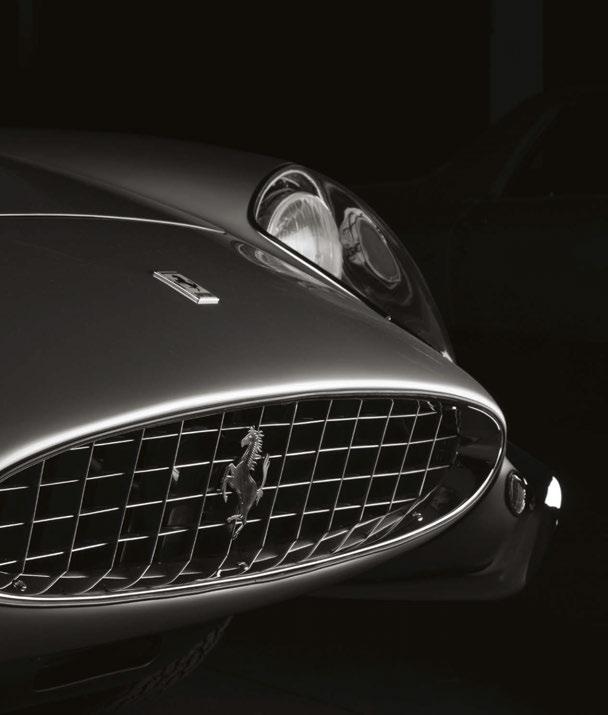




by Elliott Hughes
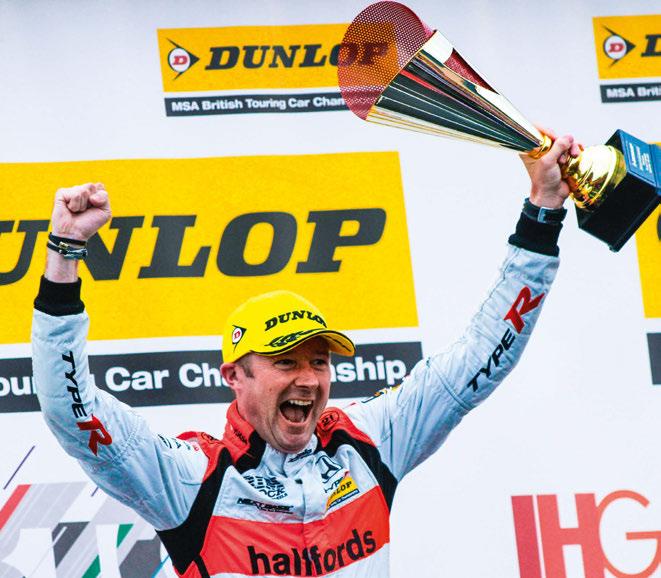
MY JOURNEY into motorsport has probably been quite a bit different from most people’s because I don’t have any family history of it – I was just a kid with pictures of race cars on my bedroom wall. I remember going to Knockhill with my dad in 1994 and hanging through the fence thinking, ‘Wow – racing cars! Wouldn’t it be incredible to drive one of those one day?’ Little did I know I would end up here.
But I didn’t start karting until I was 16 – which is ancient by today’s standards. If you look at someone like Lewis Hamilton, he was five years old when he started. I was definitely late to the party. After karting, I managed to do some support races – Fiestas, as it was back in the day – before jumping up to Touring Cars.
I always wanted to make a career out of racing and I knew I wasn’t going to make it to Formula 1; I didn’t have a billionaire father. Touring Cars, on the other hand, was something I could see a commercial way into. There’s more space on the car for sponsors and partners than there is on a single-seater, so I could sell more real estate. The bigger the car, the more value there was – that was the thinking. Single-seaters were never part of the plan. I’ve only raced one in my life: a Formula Ford at Silverstone, in November 2006. I was already in Touring Cars by then, and thought: ‘Why not give it a go?’ It was the coldest experience of my life: I couldn’t feel my hands through the gloves and hated every second. That was all the confirmation I needed that I’d chosen the right path. In 2003 and 2004, I raced in the SEAT Cupra Championship. Then I had a year out before making the leap to the British Touring Car Championship with Team Dynamics in 2006. My team-mate that year was Matt Neal, who’d just won his first title in the Honda Integra, the first independent to take the championship outright.
Team Dynamics had Dan Eaves in the second car in 2005, but
something changed commercially – I’m not sure what because it was before my time – and that created an opening. They were looking for something different and they signed me. And there I was: this kid from Scotland who’d only ever really raced a Fiesta suddenly being put alongside the reigning champion. It was a bit of a shock to the system.
The only reason I got the drive was because I had a good sponsor –Clydesdale Bank – but I also literally phoned Matt every day asking, ‘Any news?’ It got to the point where there were a handful of drivers in the running, some with proper Touring Car experience, and then came decision day. Matt’s father, Steve, asked him: ‘Who would you like as your team-mate?’ And Matt said: ‘This kid really wants it, he’s been on the phone to me every day.’ And that, basically, is what got me the seat.
Matt and I created an amazing partnership over the years and we’re still really good mates – I’ve even got my own room in his house! I’ve spent a lot of time there. And, from 2006 until this year, Team Dynamics was the only BTCC team I had ever raced for. That shows how strong the partnership was – it just grew and grew.
I finished fourth in my rookie year, ahead of people like Fabrizio Giovinardi who was a works Vauxhall driver and a multiple champion. But it was also a bit of a shock because there was suddenly so much going on. The sponsorship from Halfords was massive and there was this huge fan-base that had come from the Max Power and Nissan Super Touring era – it was huge and I felt like I was riding on coattails while learning my trade, but it was amazing to be involved in.
Each and every Dynamics car had its quirks. The Type R in 2016 was really good – it’s one of my favourite cars, it just did everything so well – but you’re always looking ahead and you always want more. The Civic Tourer estate was pretty cool. Touring Car fans still talk fondly about the Volvo from the mid-’90s, but the Tourer was born out of a bit of a crisis. Basically, Honda was going to pull out of the series at the end of 2013 because the next Type R was still a year away and they didn’t have a product ready. Luckily, Matt did some quick-thinking and said: ‘What if we race the estate car?’ Honda said: ‘Let’s do it!’ Matt then called me saying he had good and bad news. The good news was that Honda was staying; the bad news was we were driving the estate car. It was cool! We won a race in it and by mid-season we were third in the standings.
I won the BTCC title in 2015 and 2016 and then moved to the World Touring Car Cup (WTCR) with Audi from 2017 to 2020. After racing in the BTCC for 11 years, the WTCR was an opportunity that I couldn’t turn down. It was a new championship and manufacturers were throwing lots of money at it. The decision almost stopped being mine. It wasn’t quite what I expected, but I saw some amazing parts of the world and raced at some incredible circuits: Suzuka, Nordschleife, Zandvoort, Sepang, you name it. But the TCR cars were built to a budget, they had to be around €130,000. Audi and others stuck to the €130k limit while others spent €200,000 and sold their cars at a loss, so it was a bit messy.
It’s great to be back in the BTCC with Toyota. There’s familiar faces and good people. The Toyota is quite similar to the Hondas I raced in some ways, but I’m still getting the car to where it needs to be. Hopefully we will get some decent results as we go.
I’ve also found a real love for historic racing because you get to drive these iconic cars at amazing venues. I’ve raced Ford GT40s at the Spa Six Hours on a couple of occasions and also raced a Lotus Cortina there with Matt Neal – we built that car at Dynamics. Jim Clark was my hero, so it was pretty cool to race the same kind of car he won the BTCC in.
I do a lot of racing at Goodwood – Revival, Members’ Meeting – and a lot in Europe, too. Next up is the Le Mans Classic, where I’ll be racing an ex-Ecurie Ecosse Lister Jaguar, the 1959 Masten Gregory car. I’ll also be in a Porsche 934.5 with a massive turbo and big wings, which will be a totally different experience! Speaking of which, I’ll also be racing a Manx Norton motorcycle at Goodwood. I love my bikes and that will be a real voyage into the unknown…










1973 PORSCHE 911 CARRERA 2.7RS TOURING (M472)
One of the first 500, indeed the sixth UK delivered RS. Factory specification and matching numbers. Only four owners from new with a full and comprehensive history.







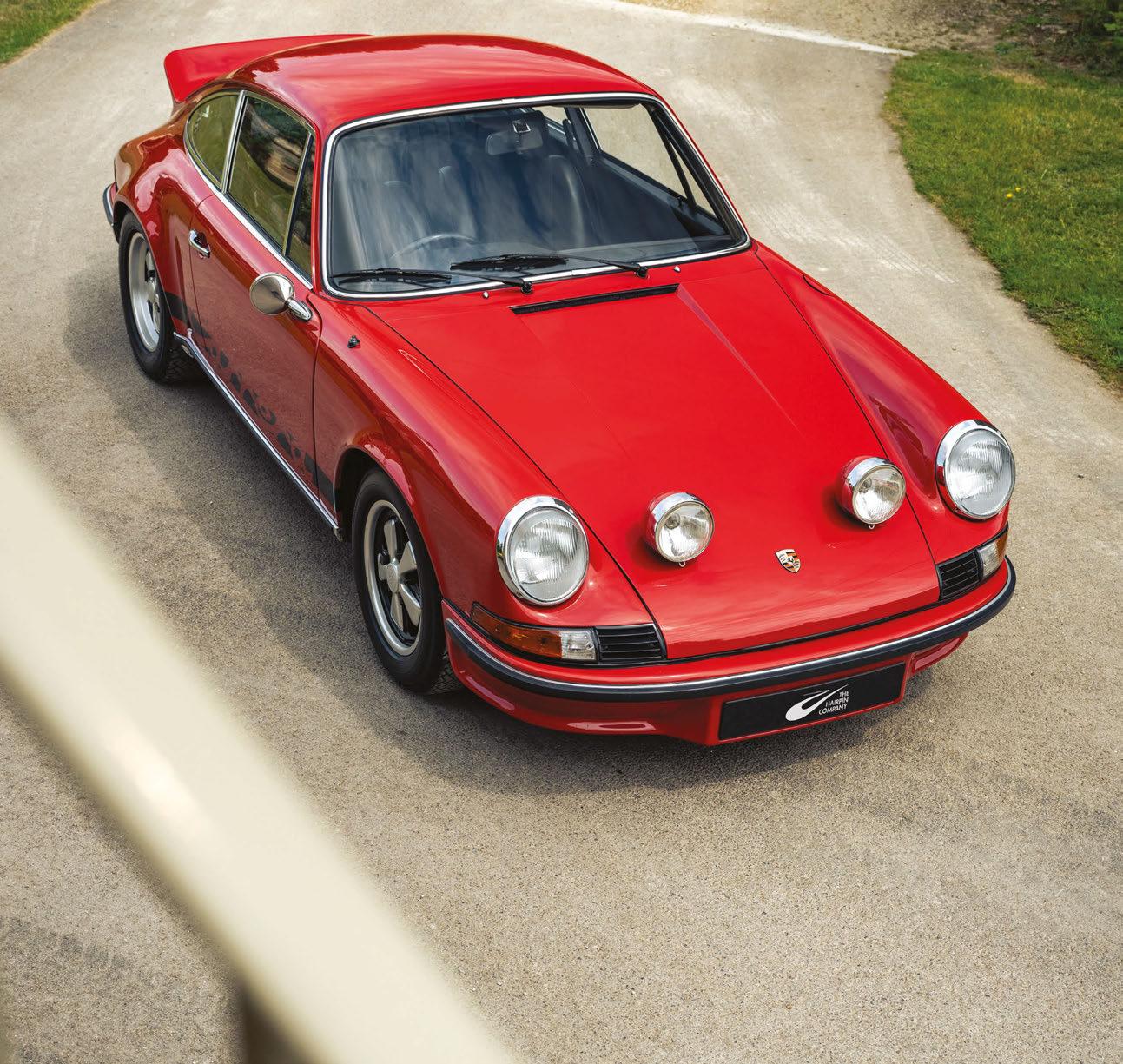
LEGACY MACHINE SEQUENTIAL EVO
Groundbreaking dual chronograph
Unprecedented range of timing modes
Patented Twinverter binary switch and internally-jewelled clutch shafts
Zirconium case, FlexRing damping system
80m water-resistance, 585 components mbandf.com

